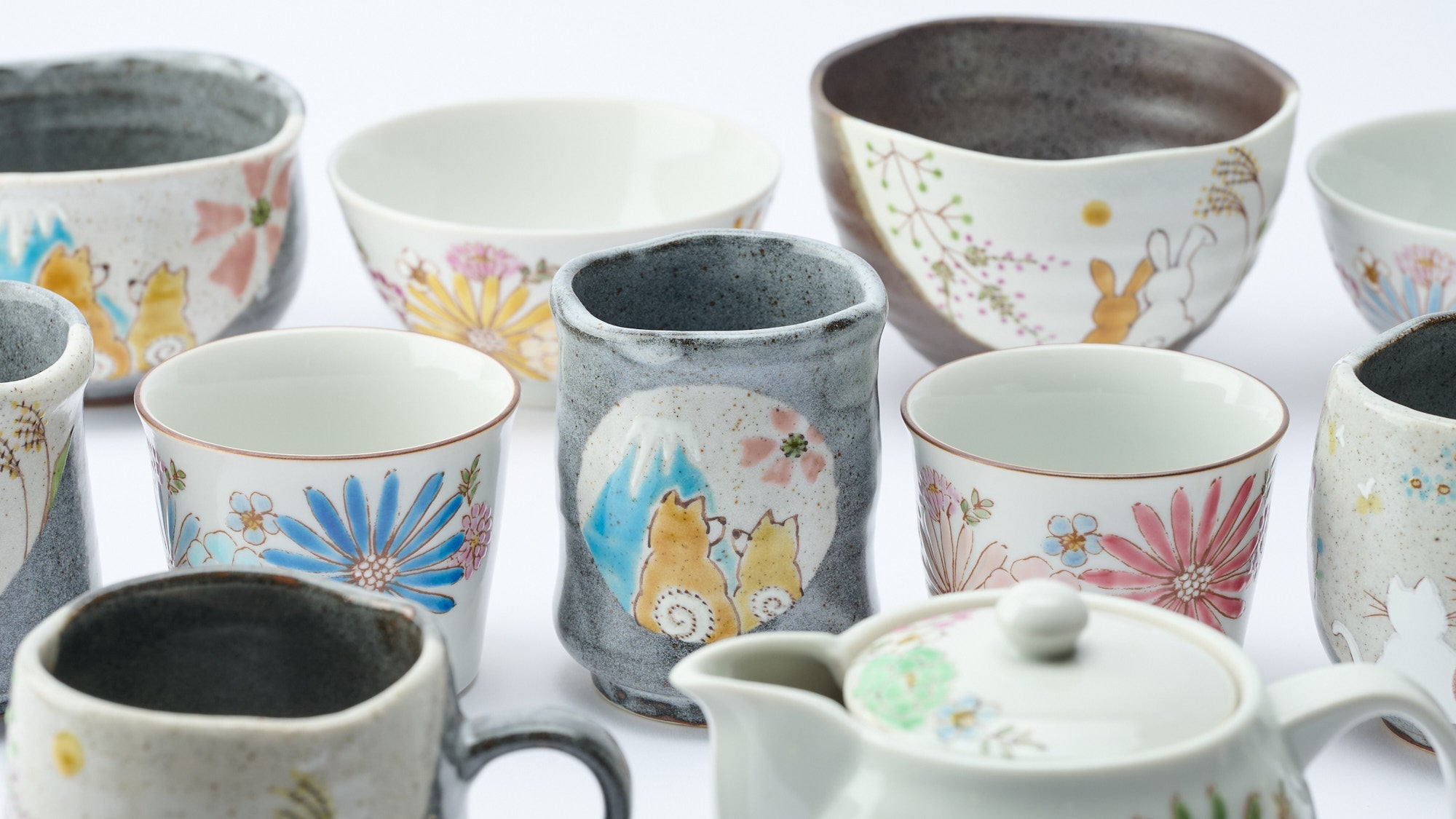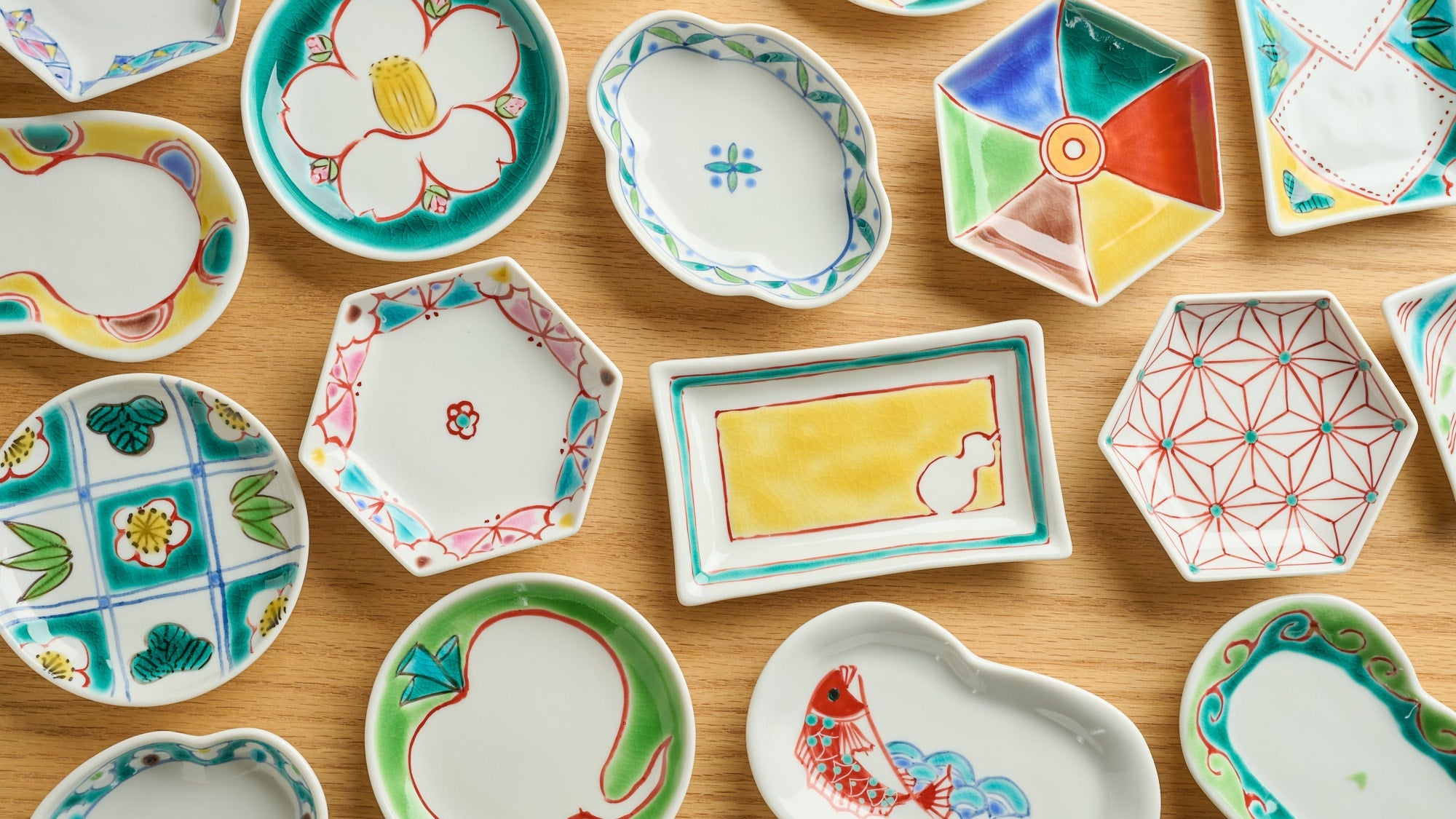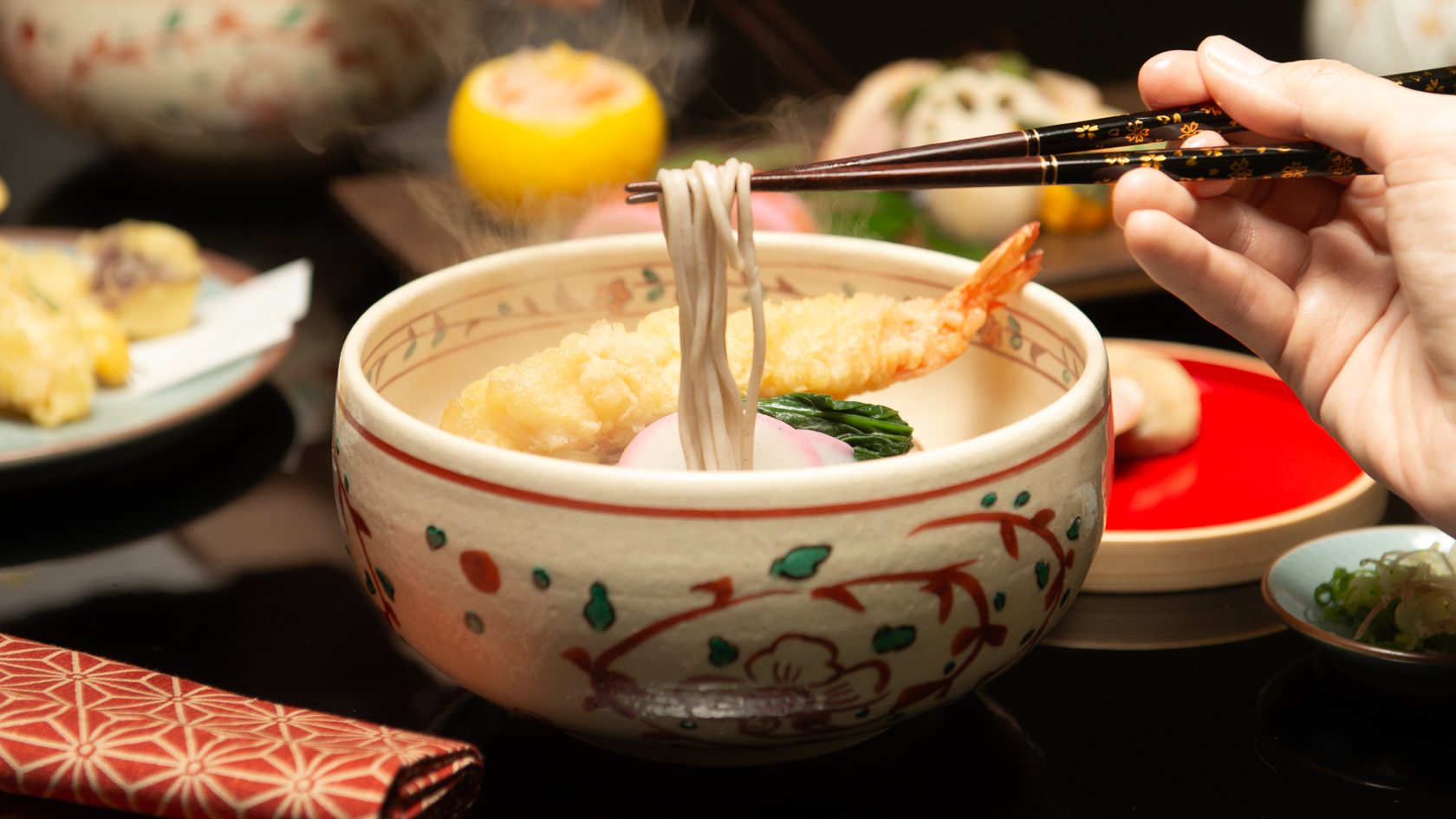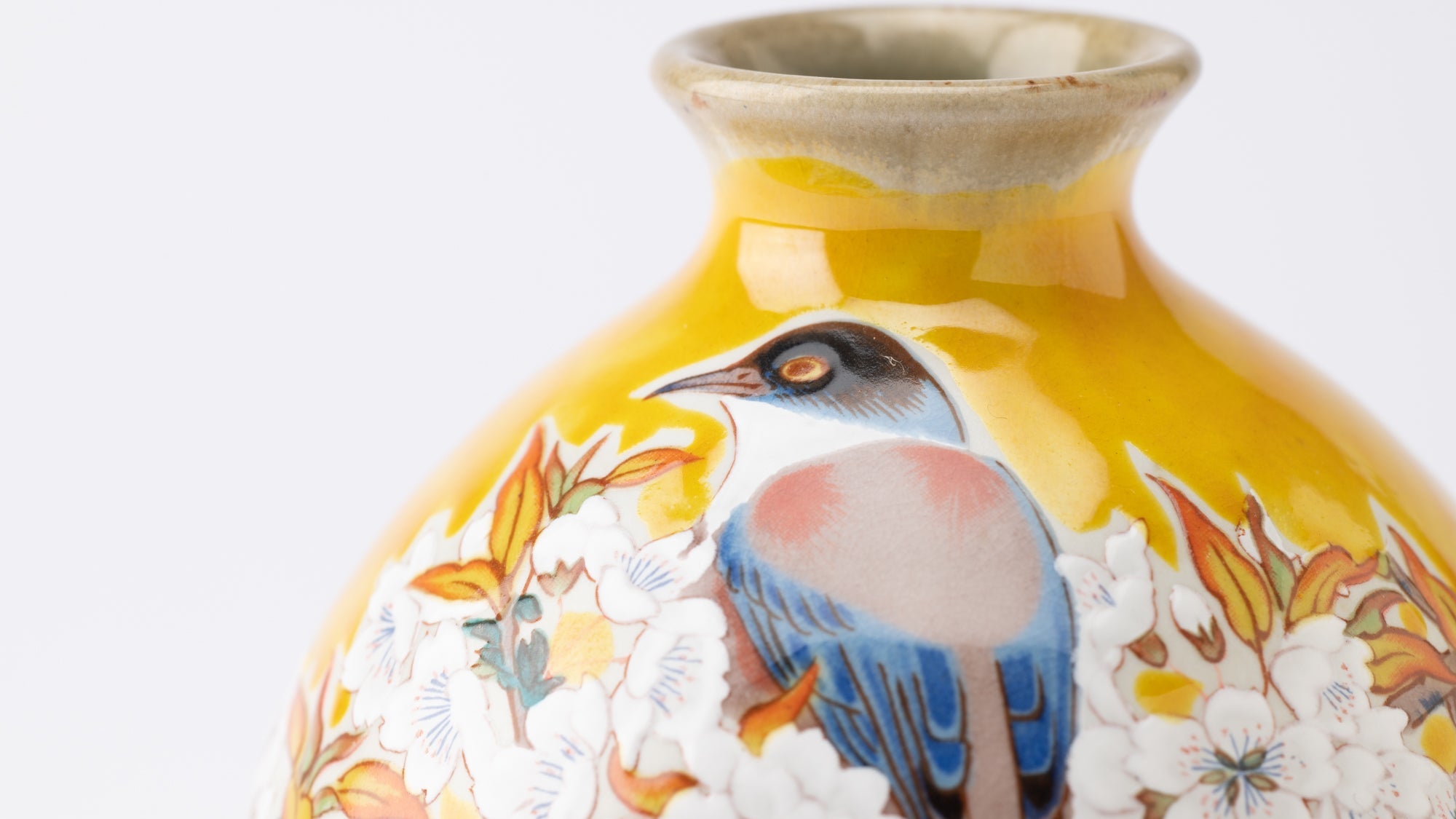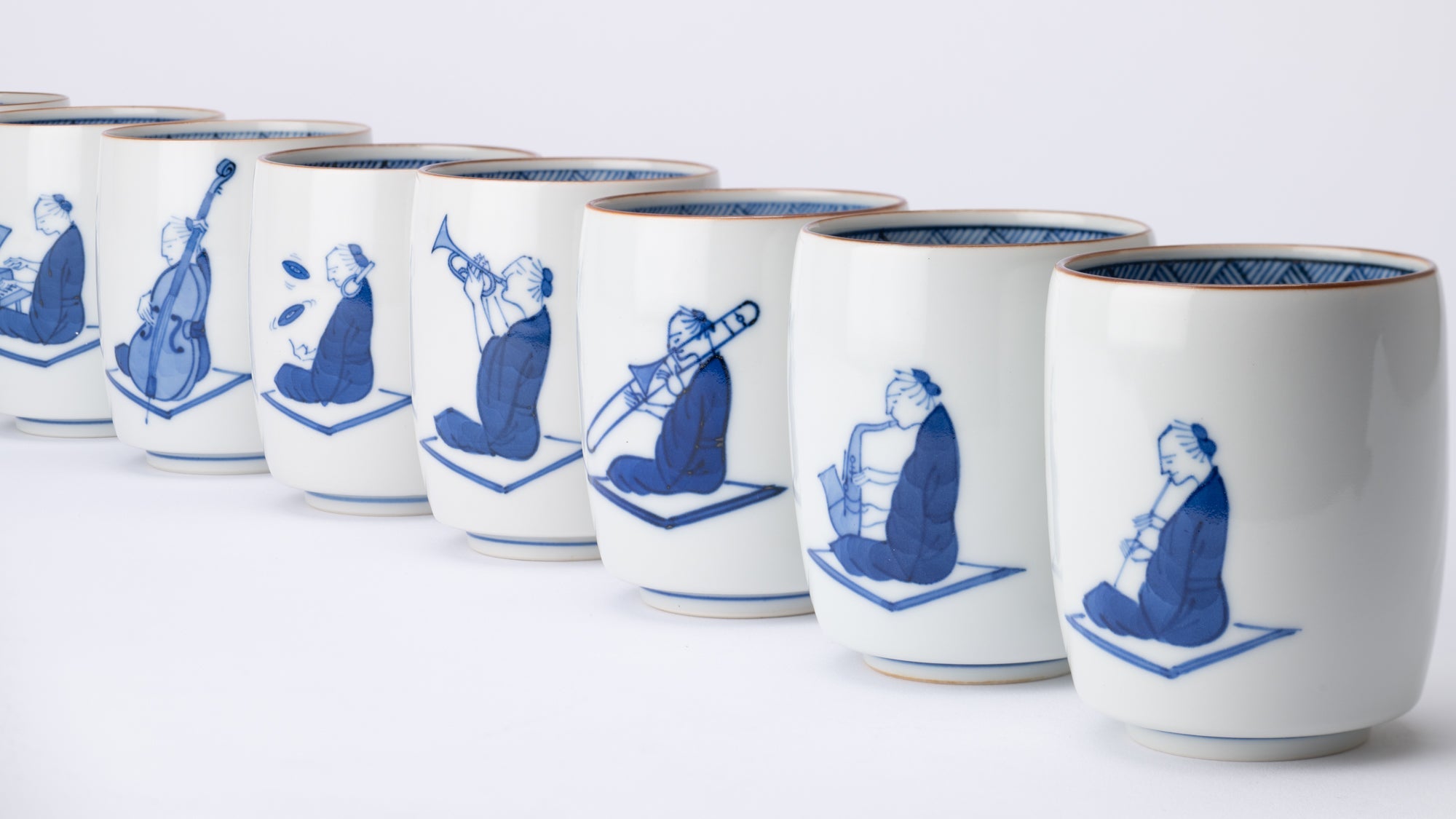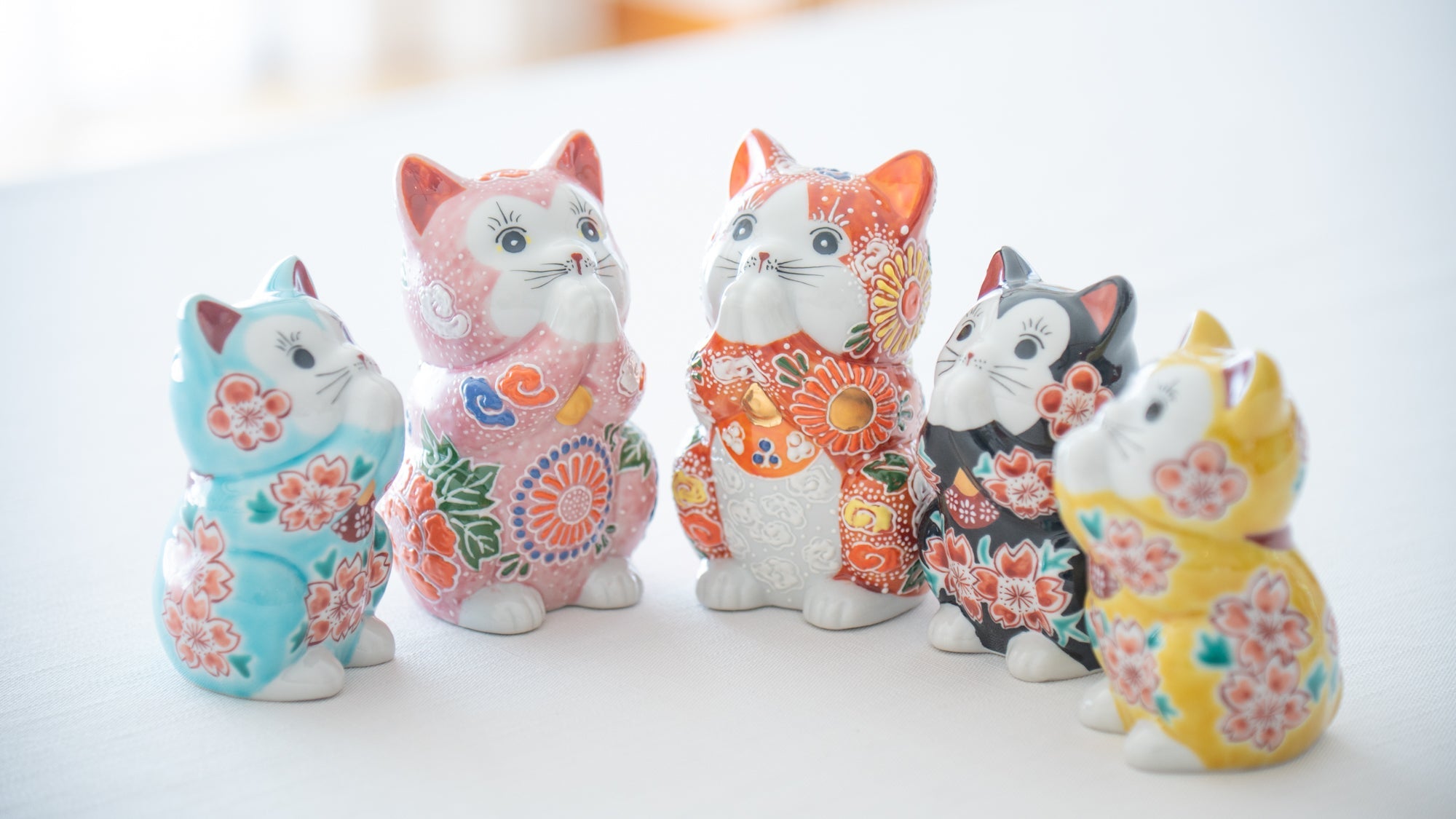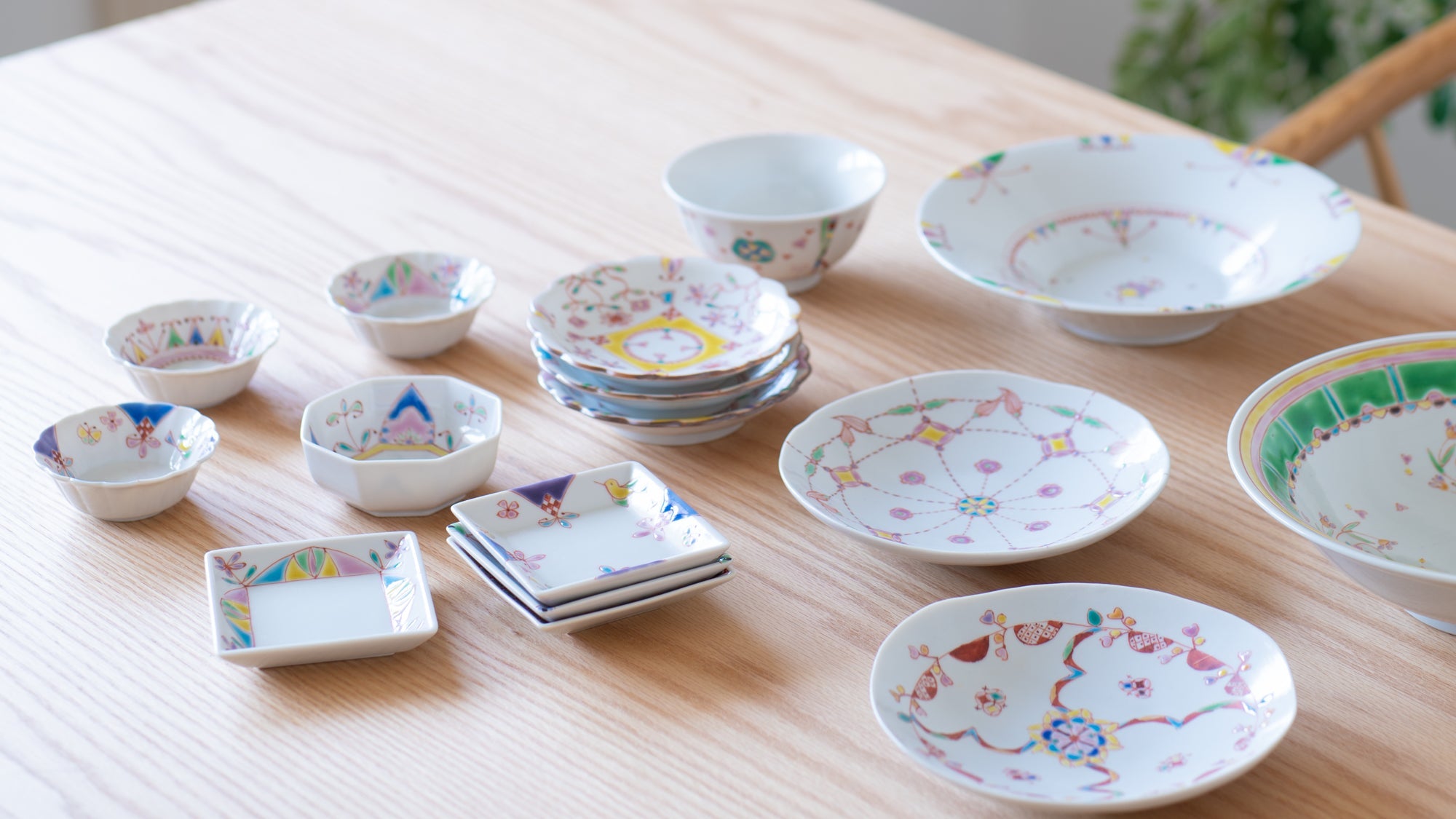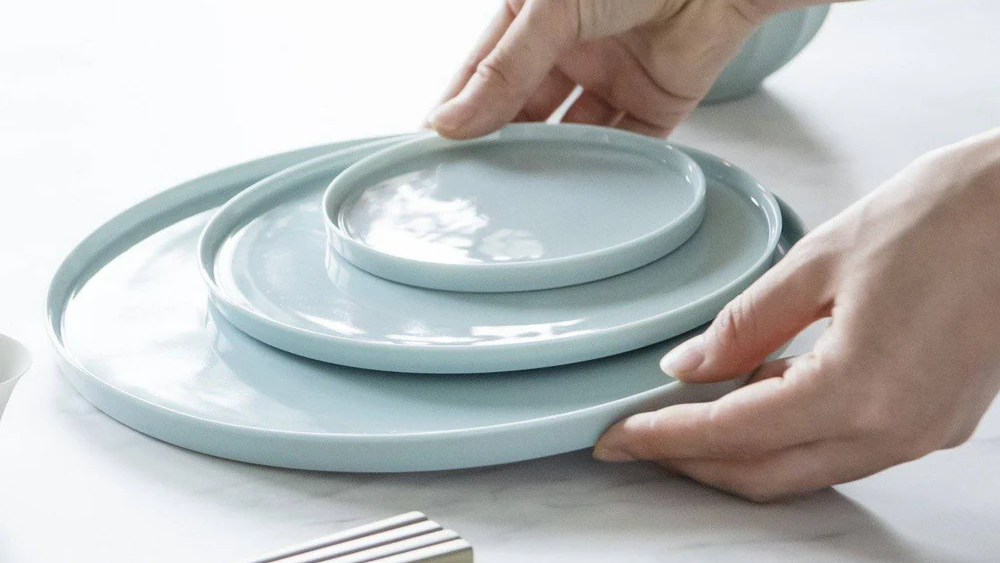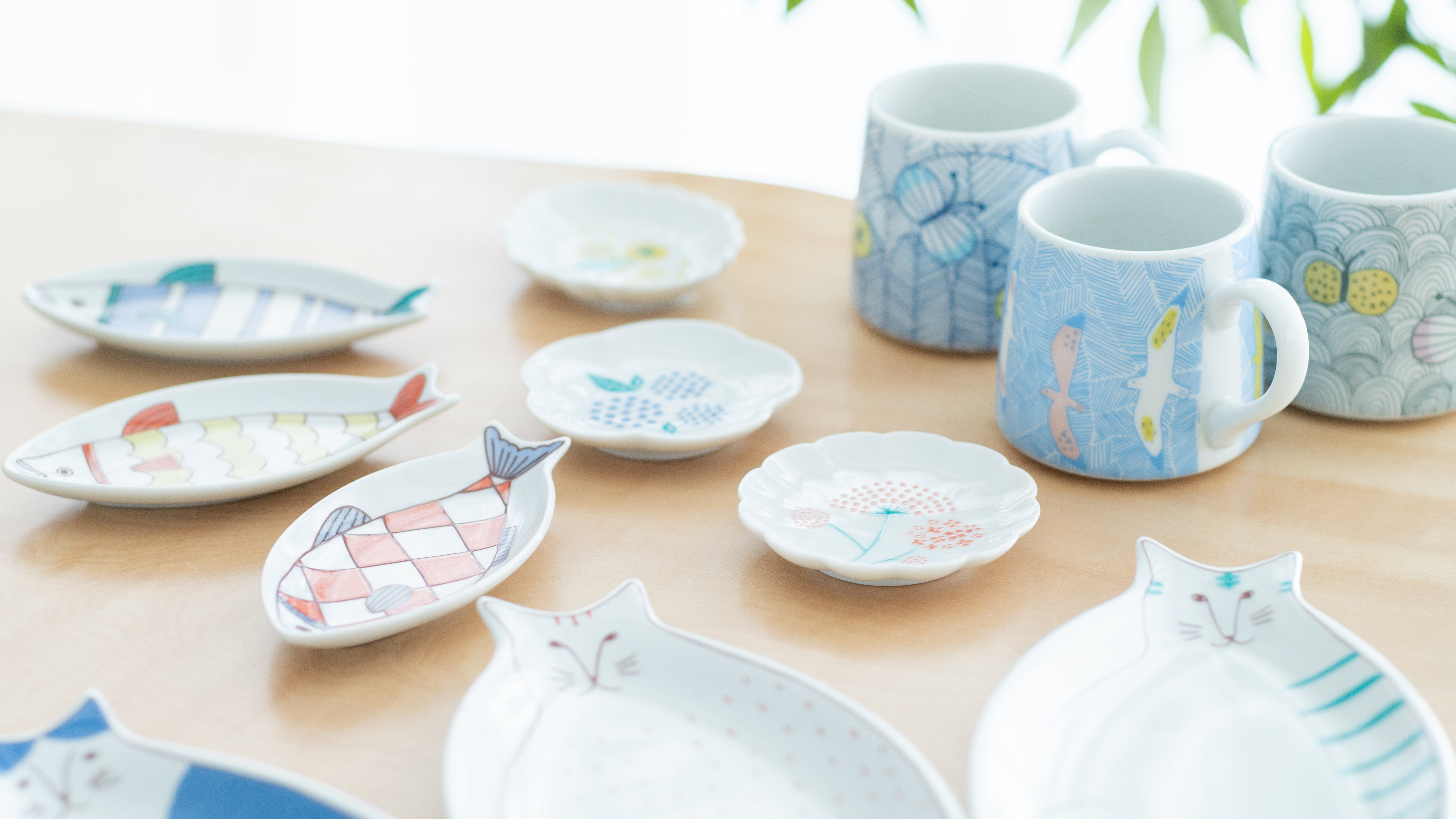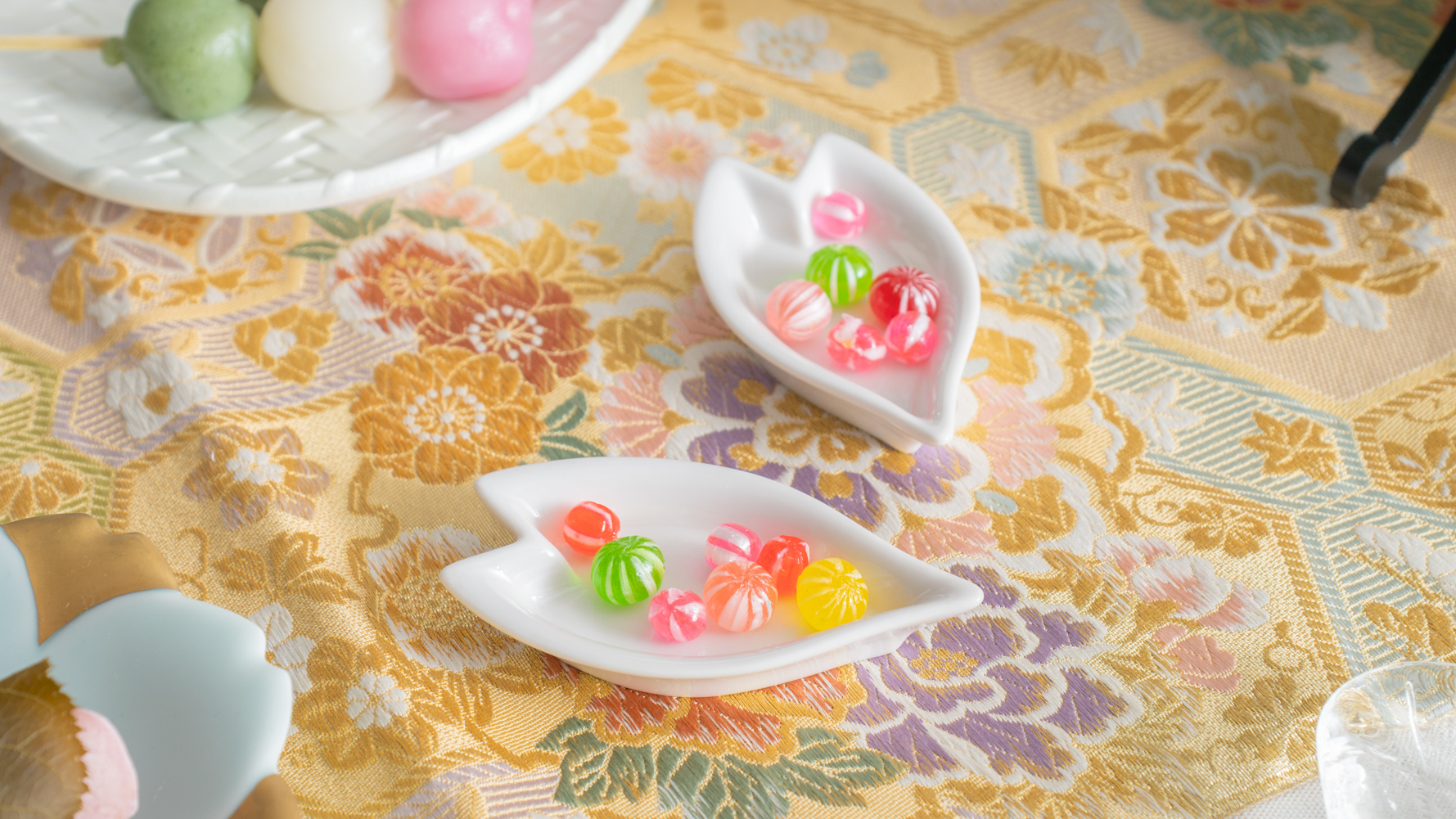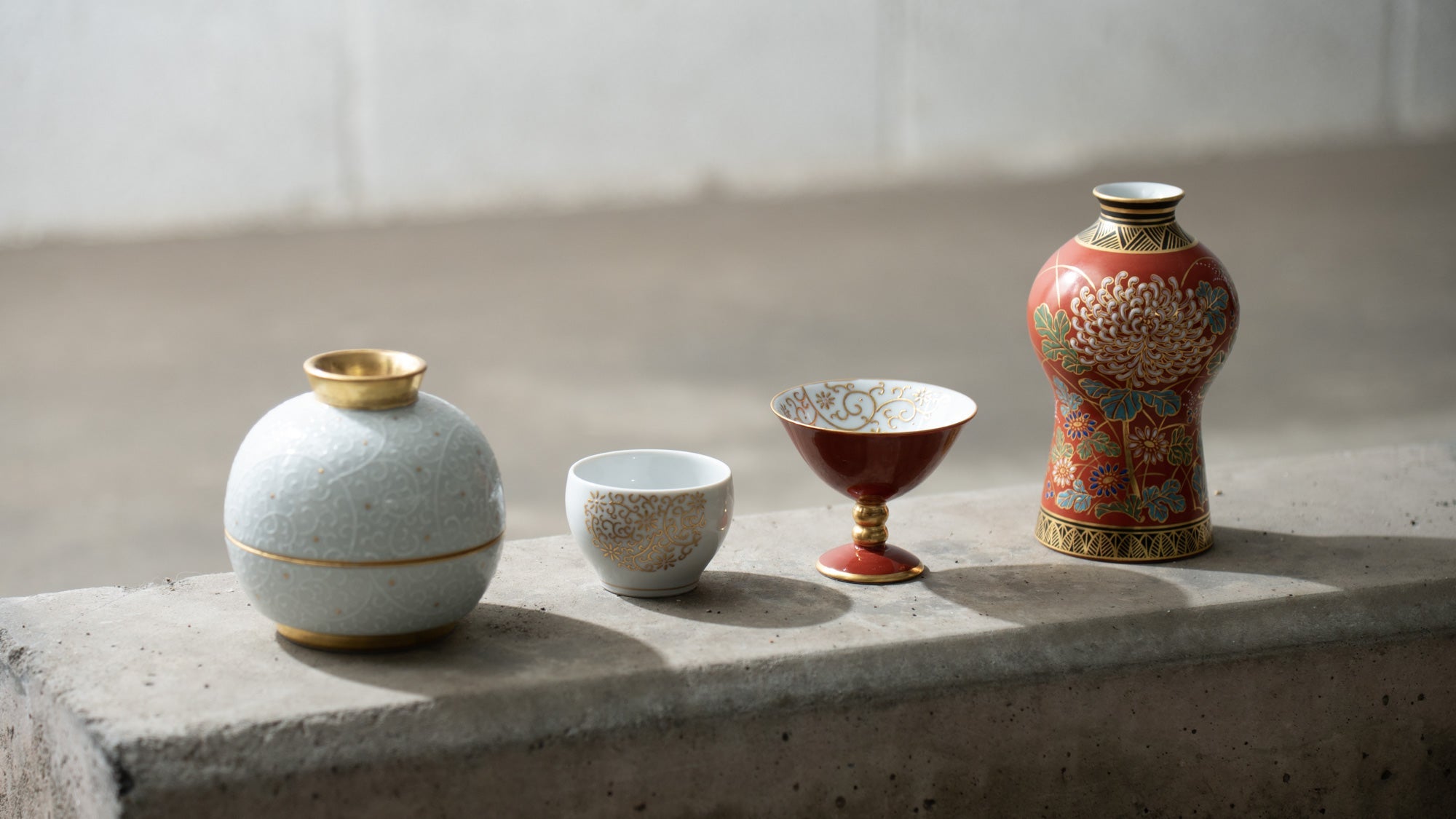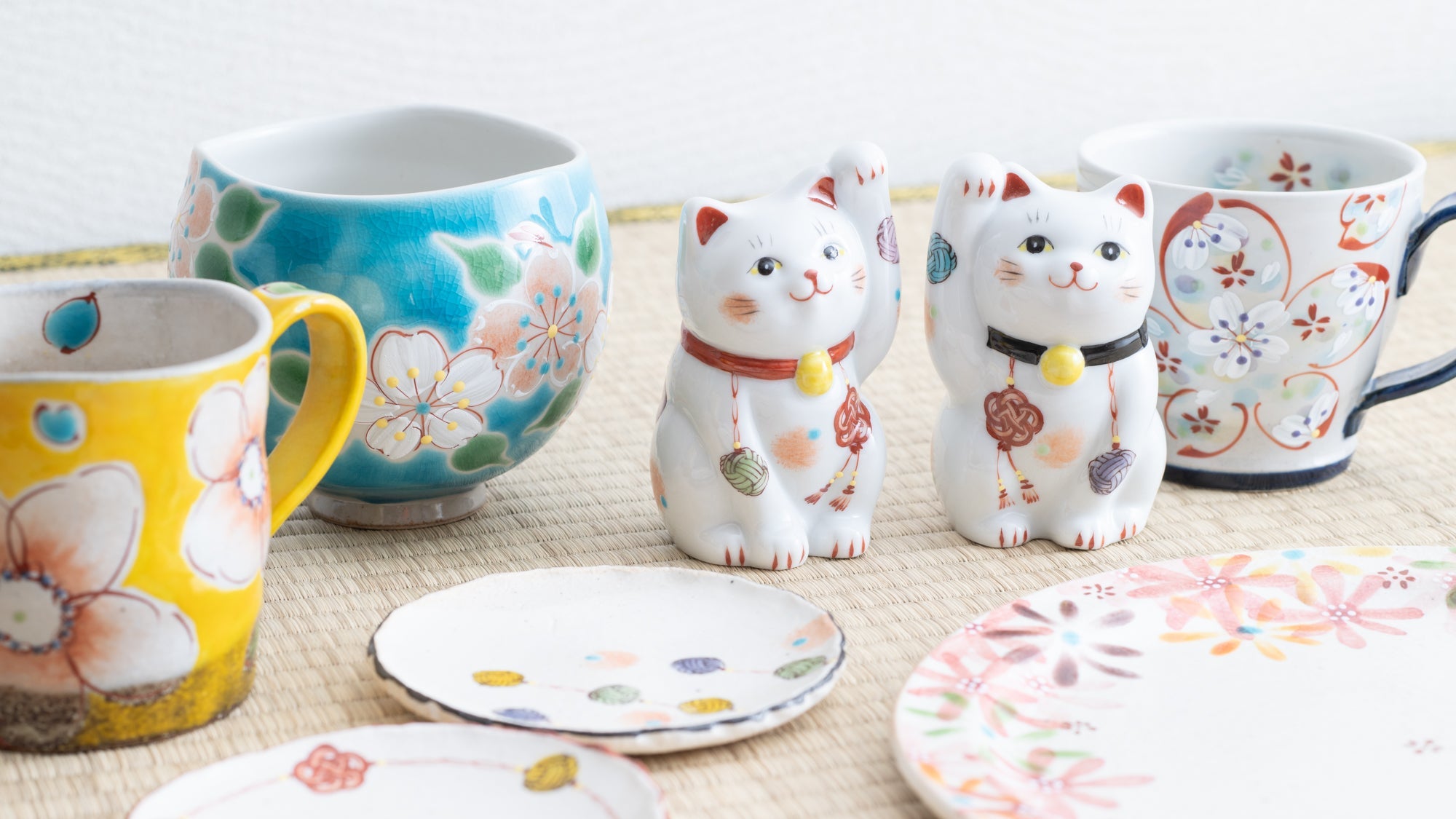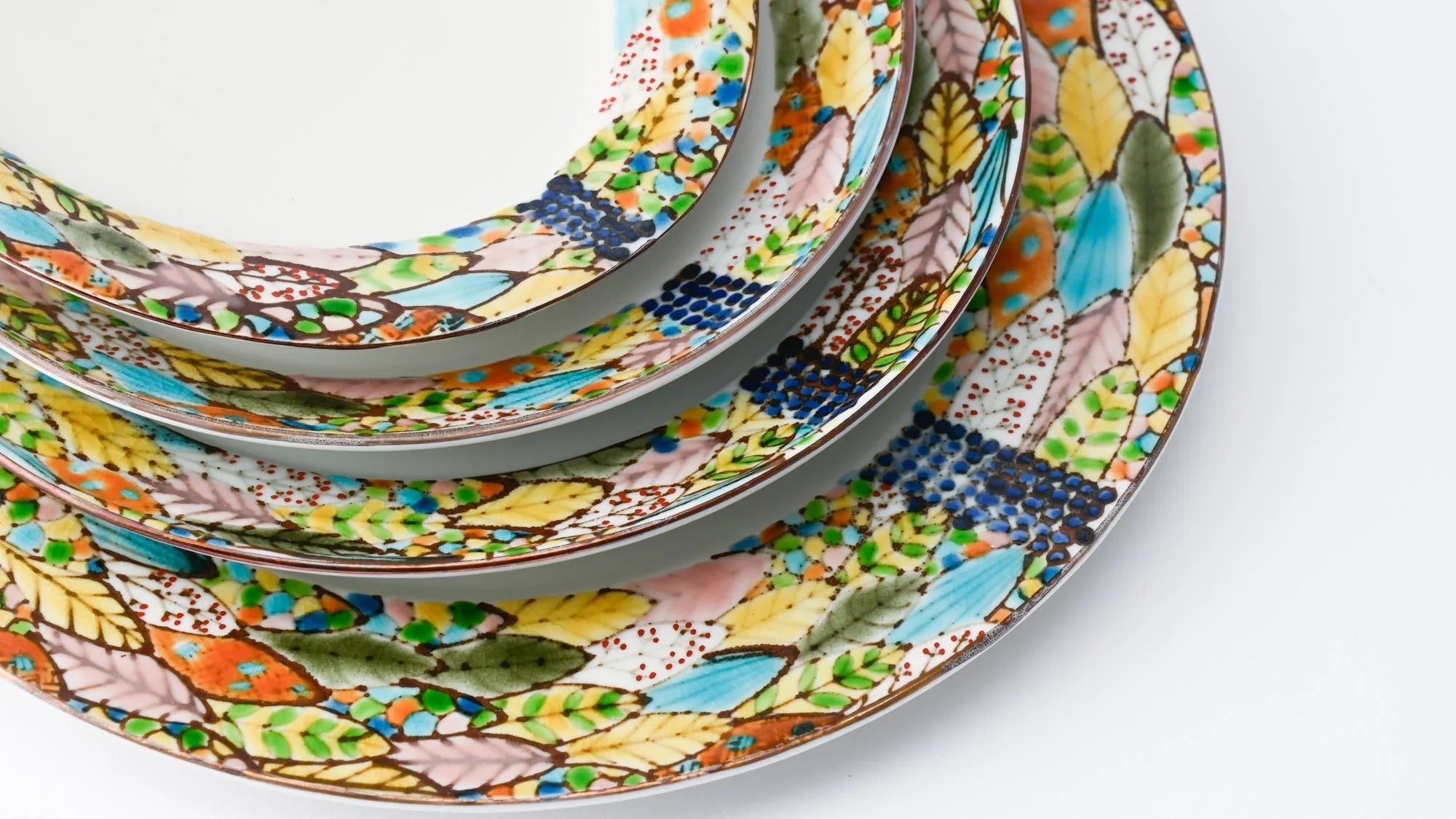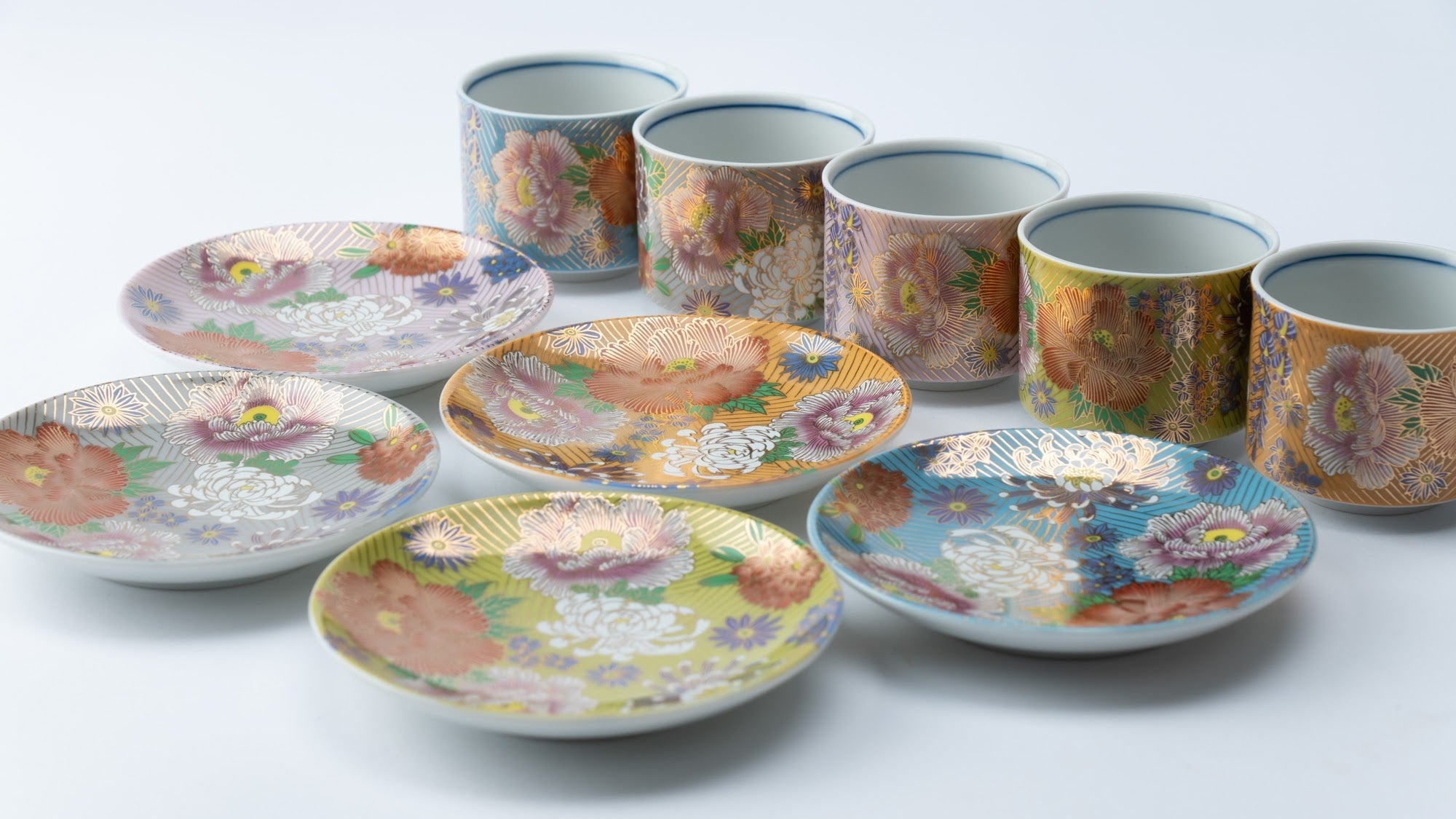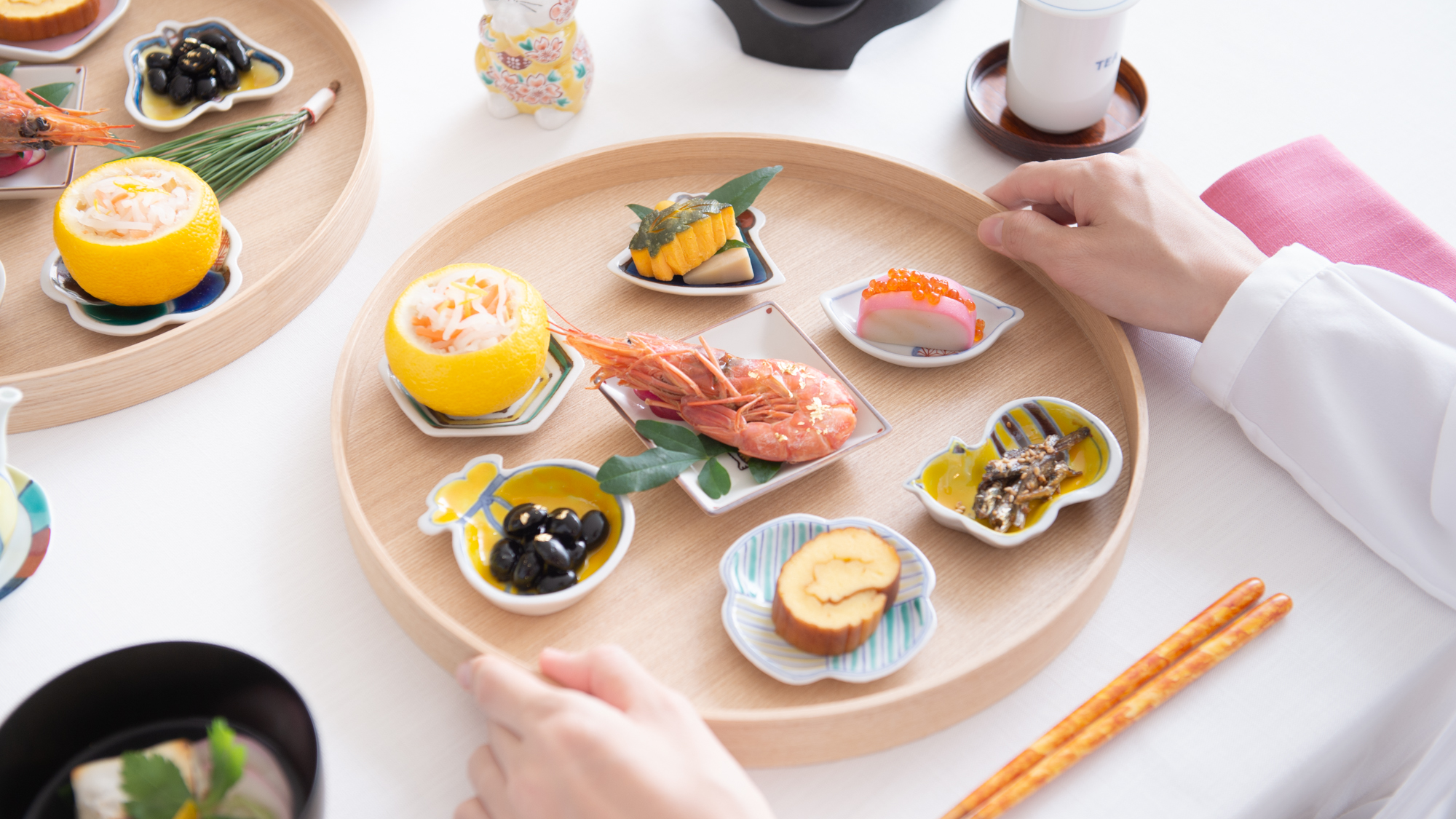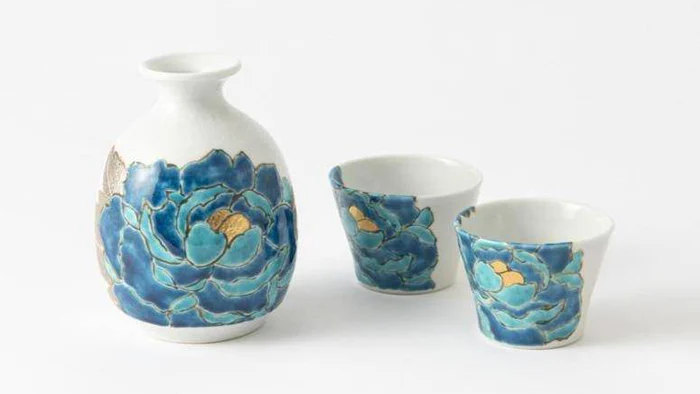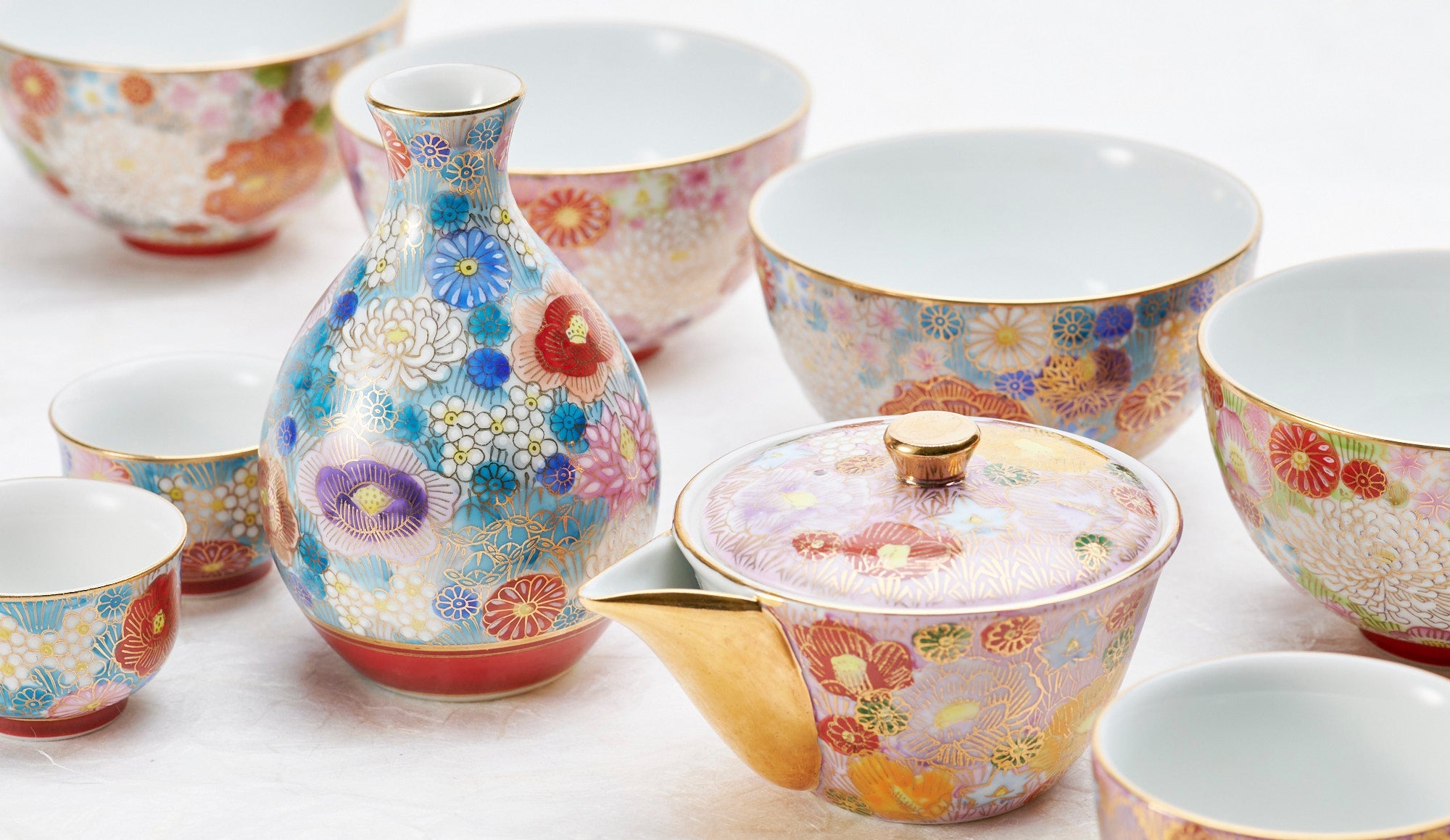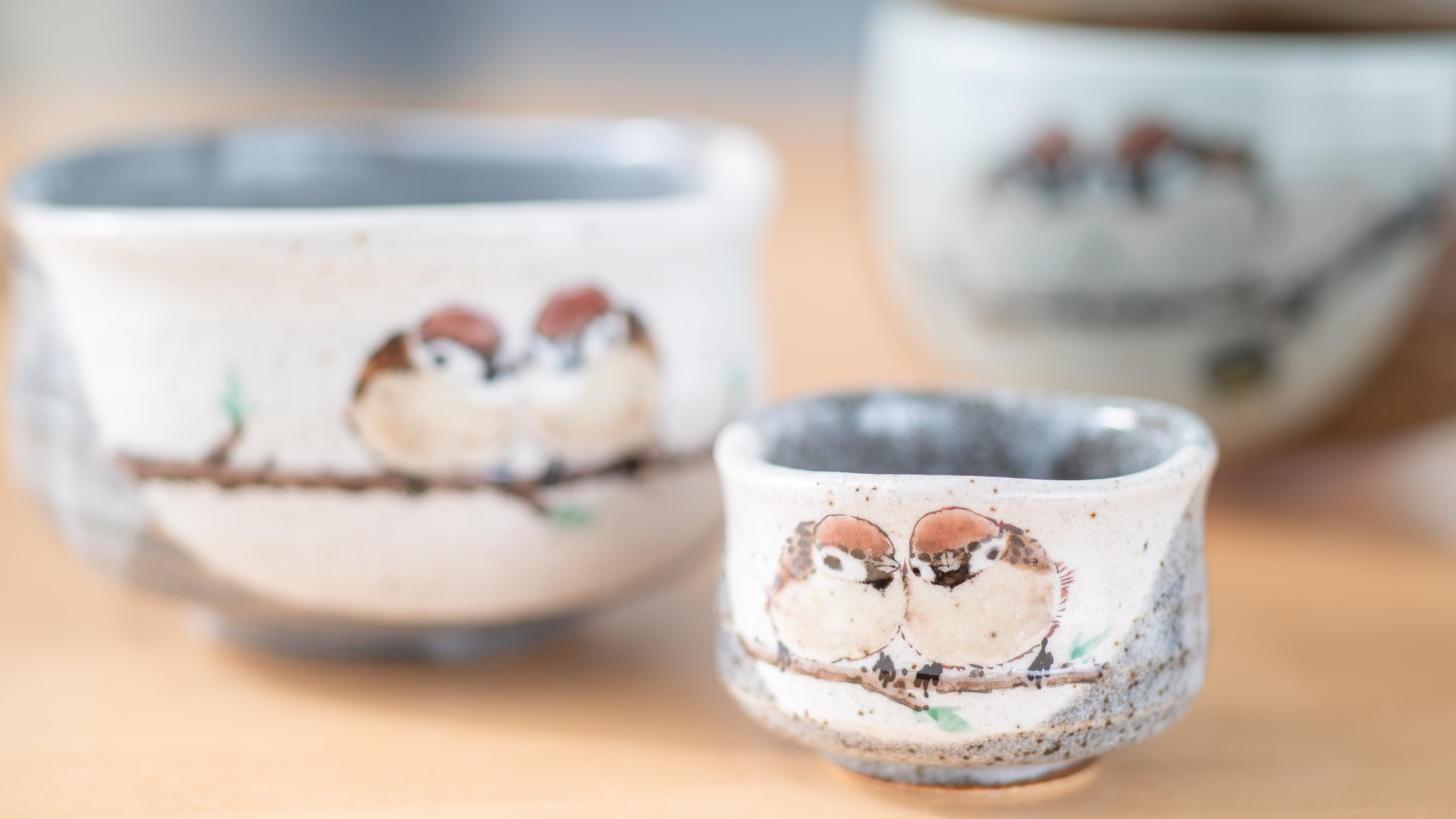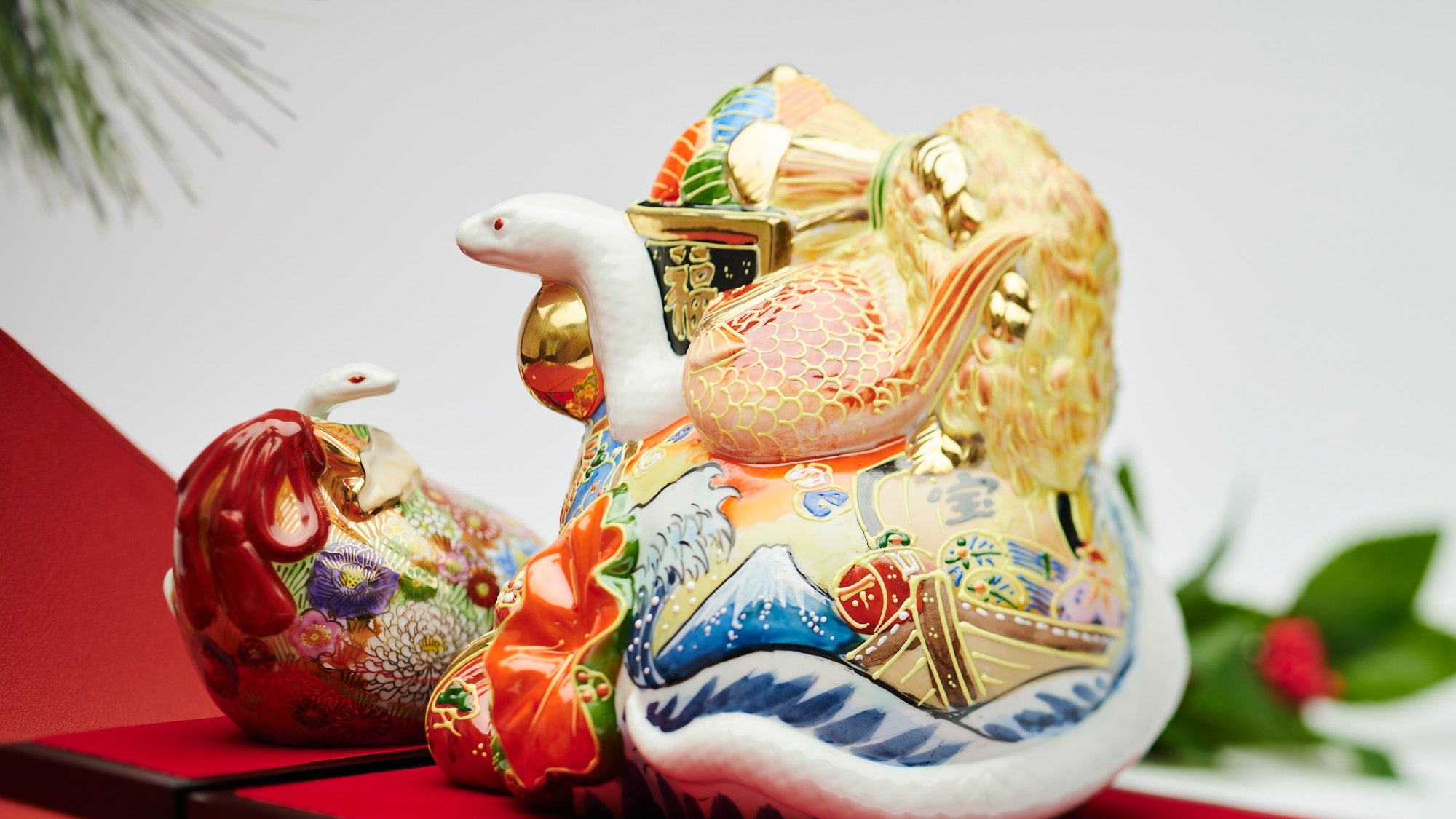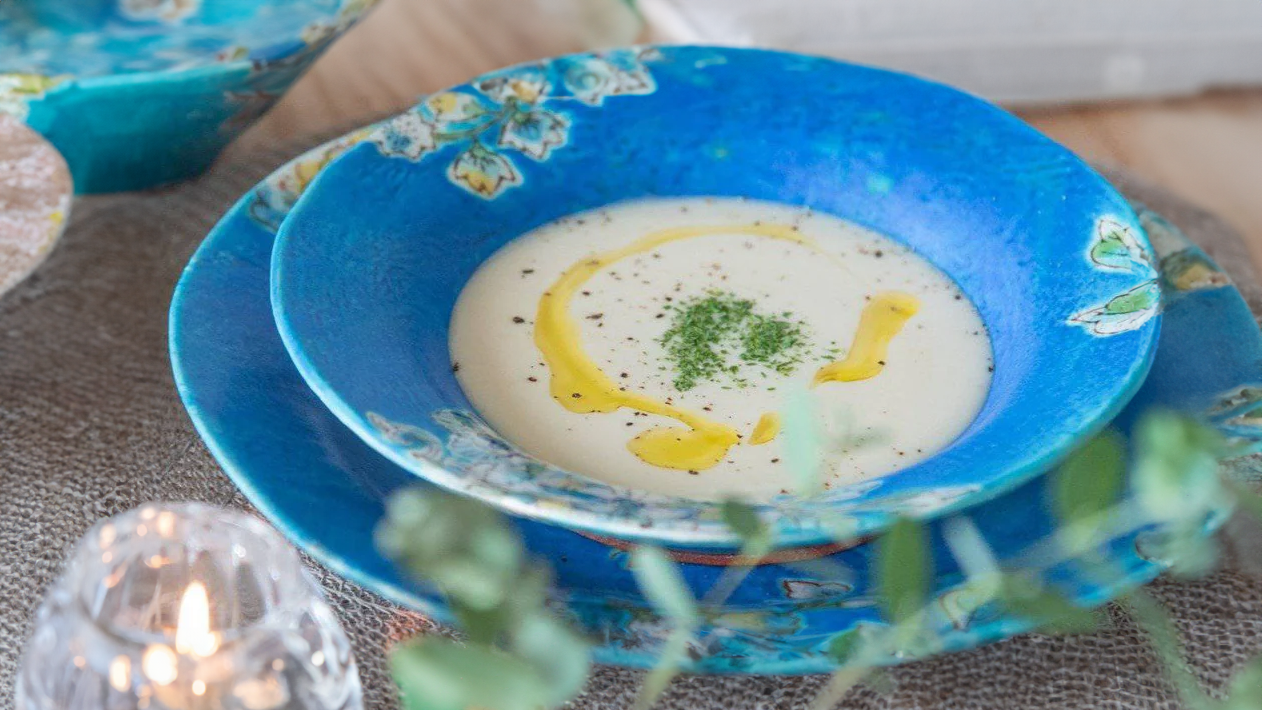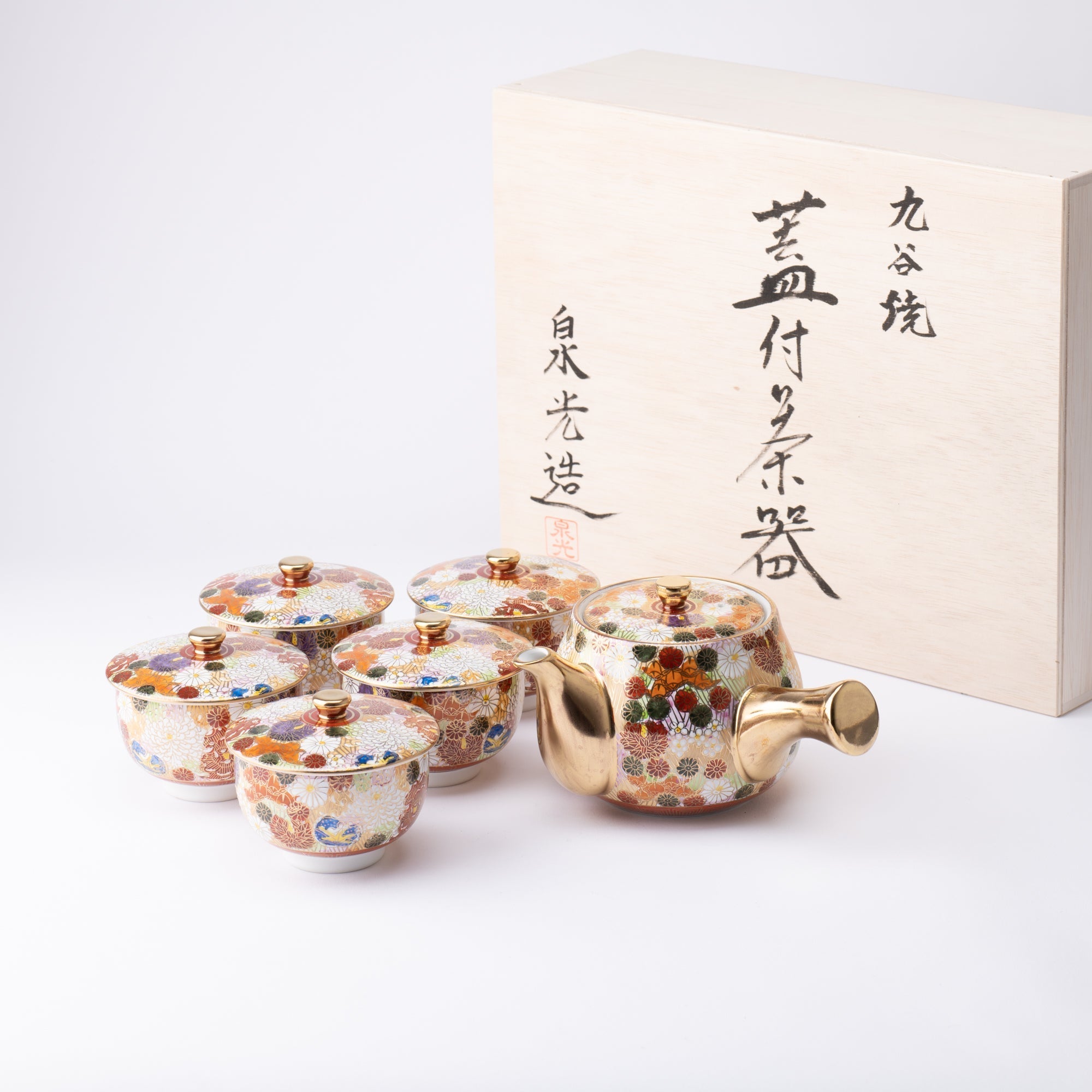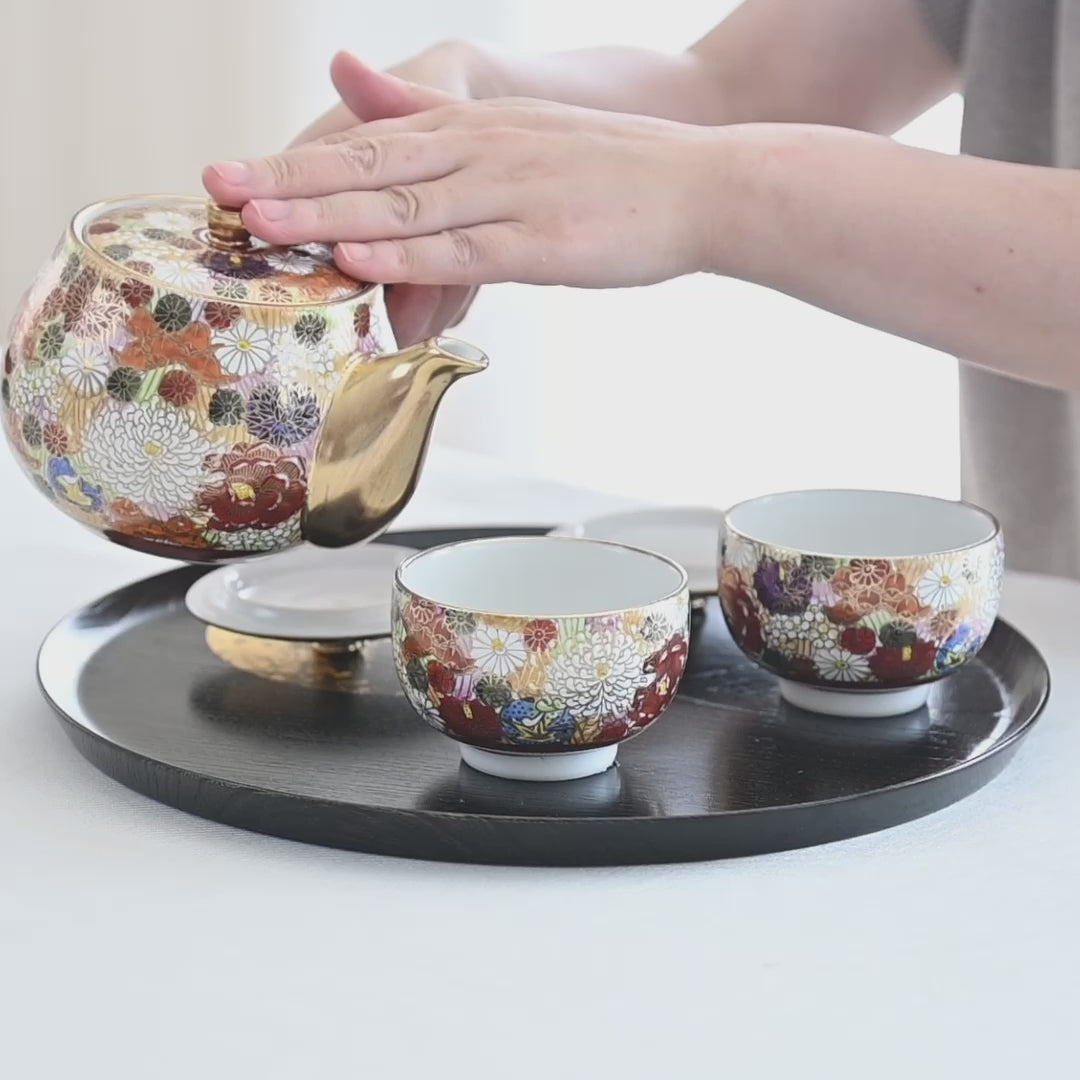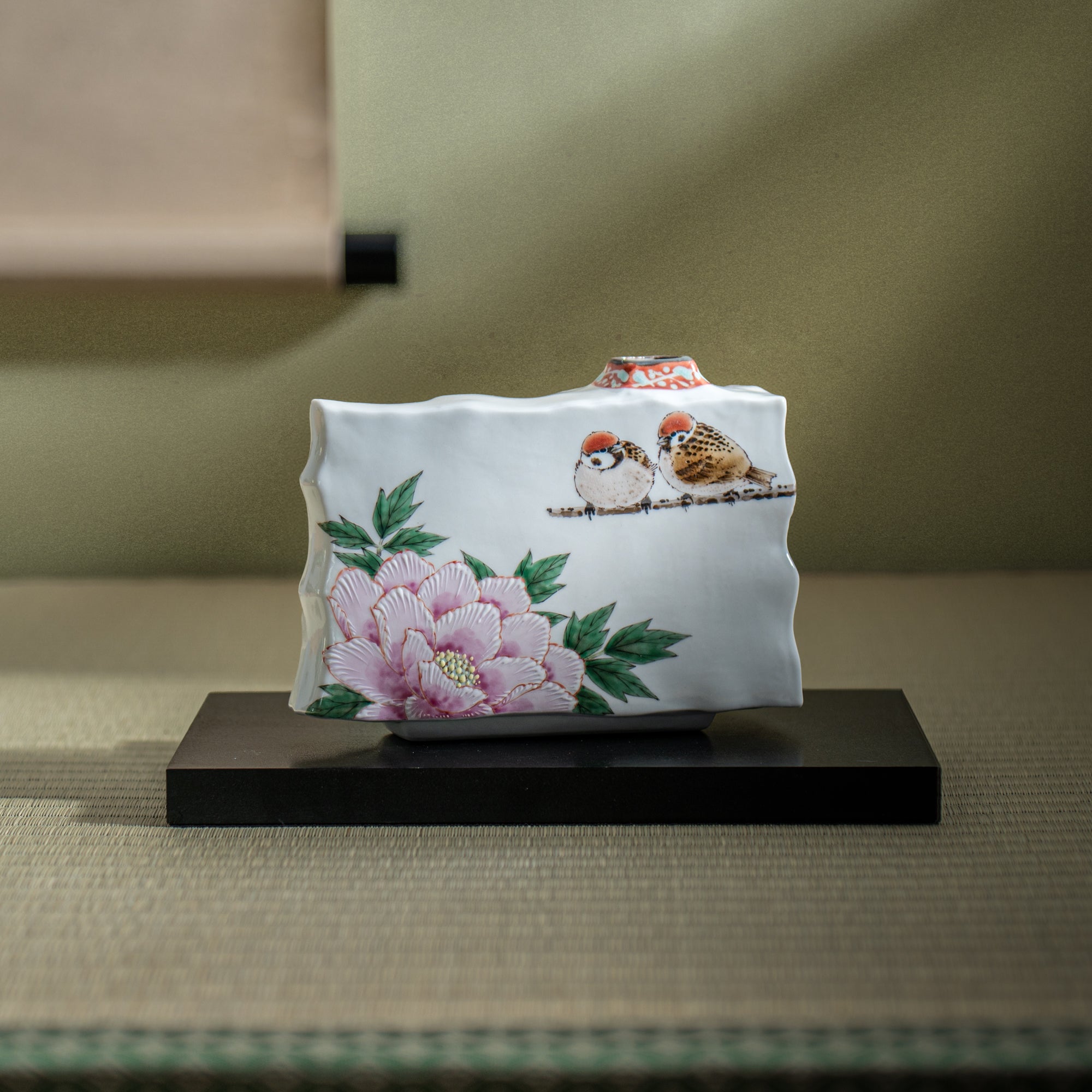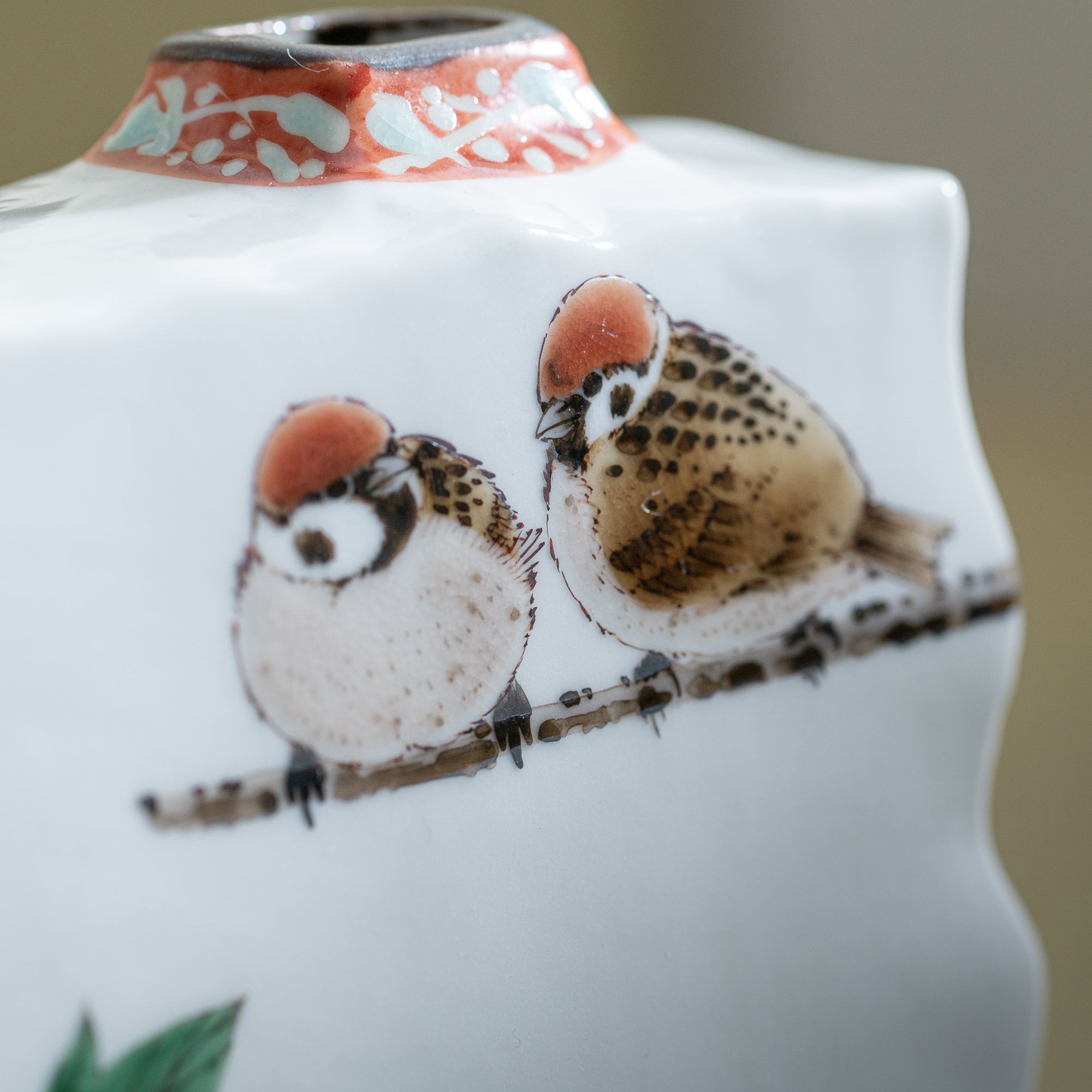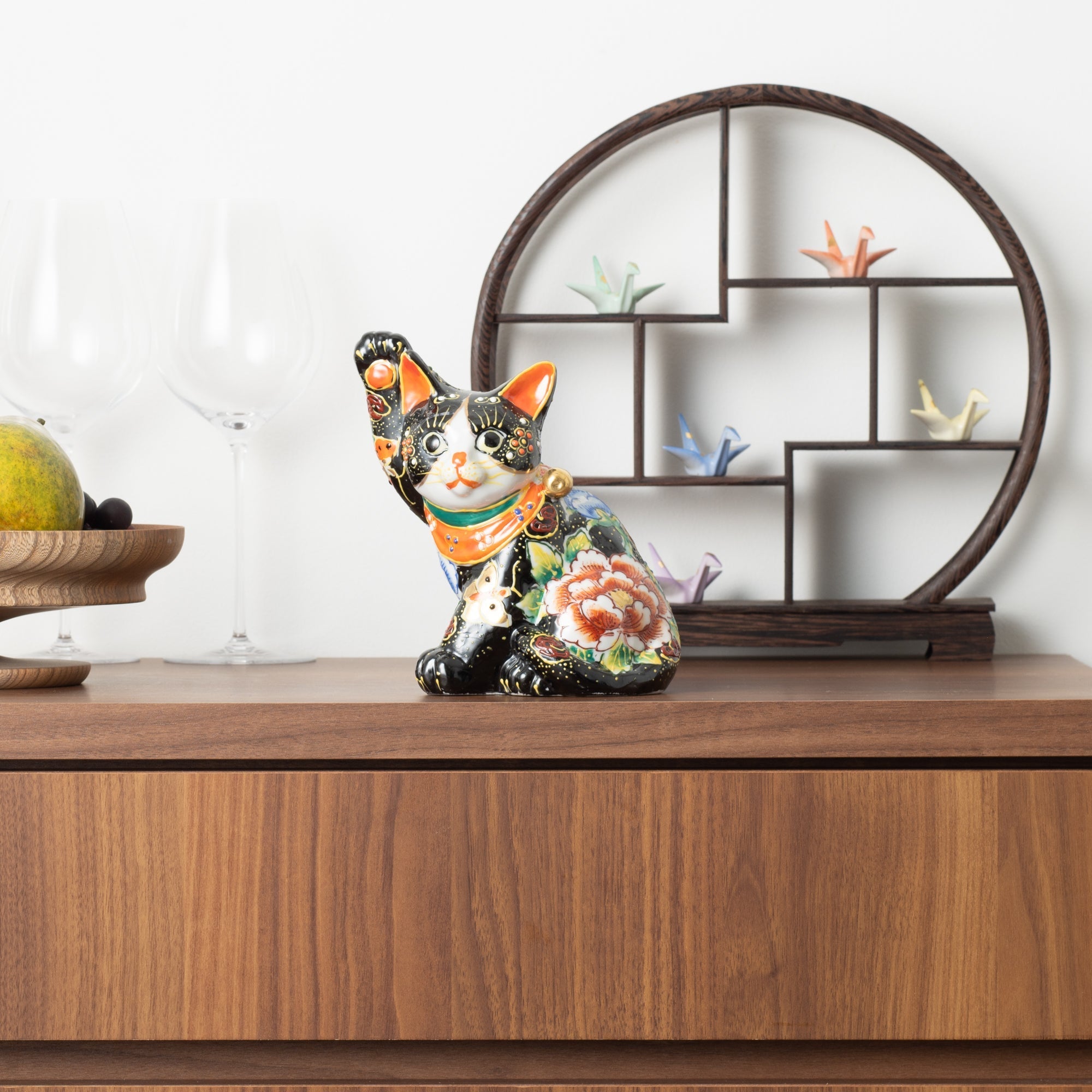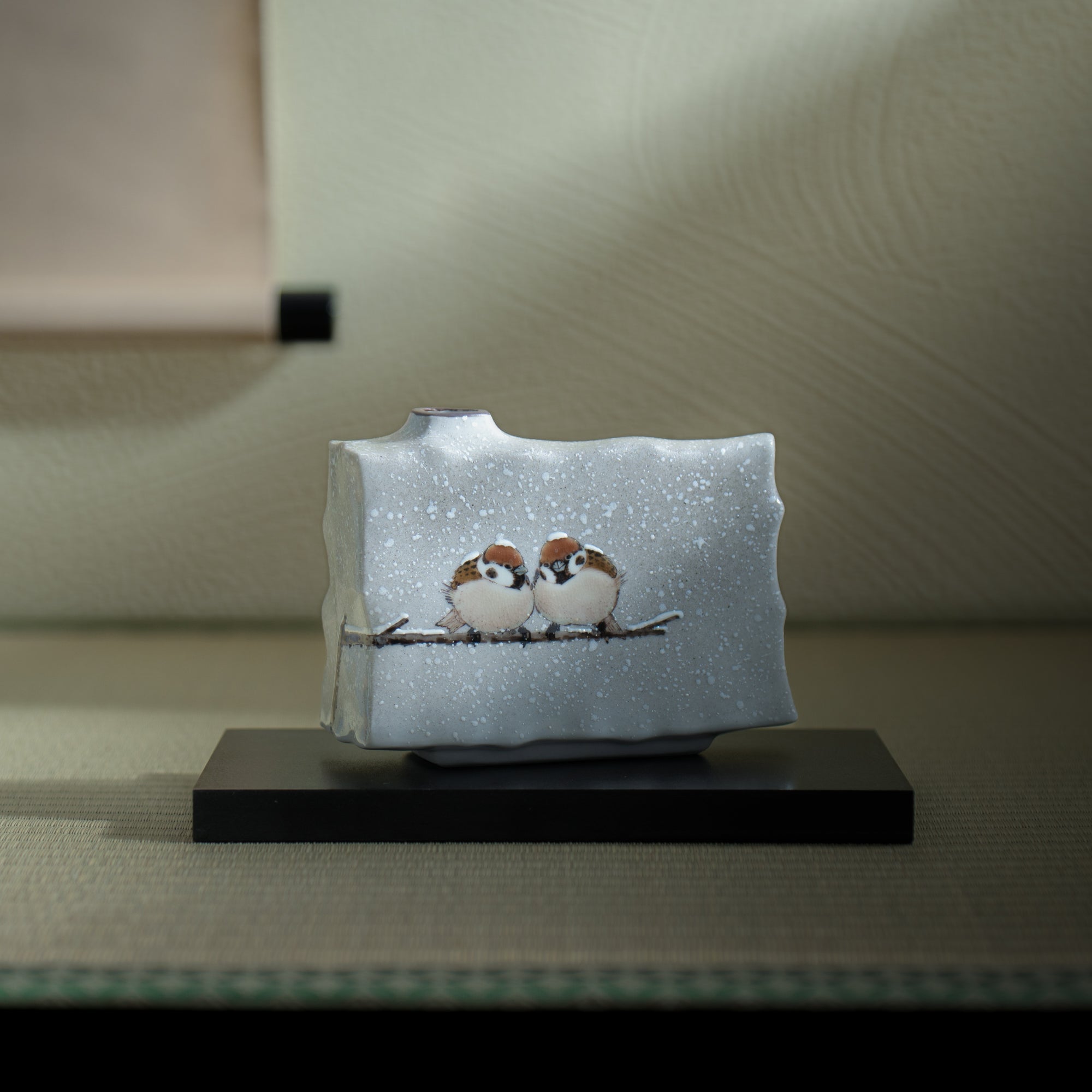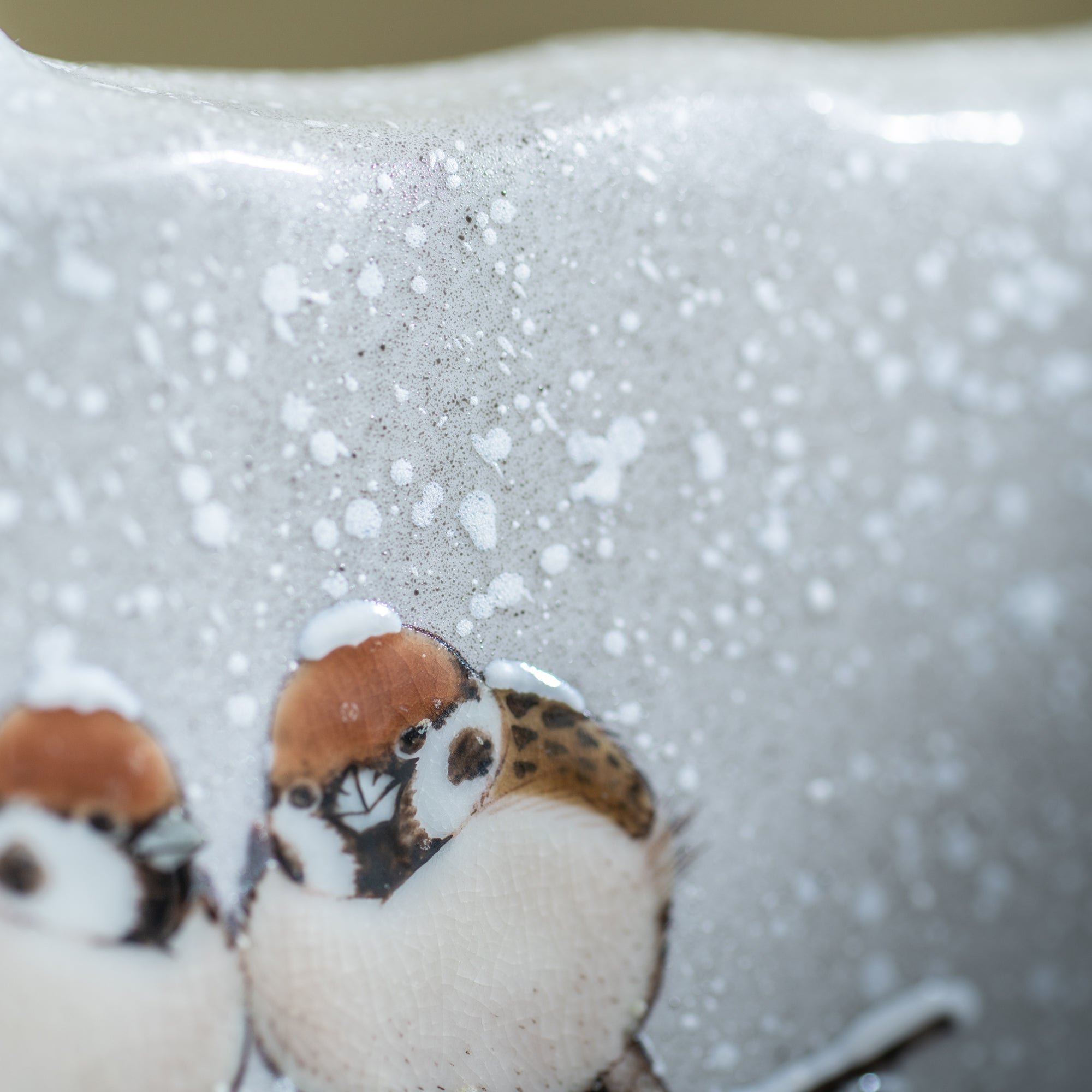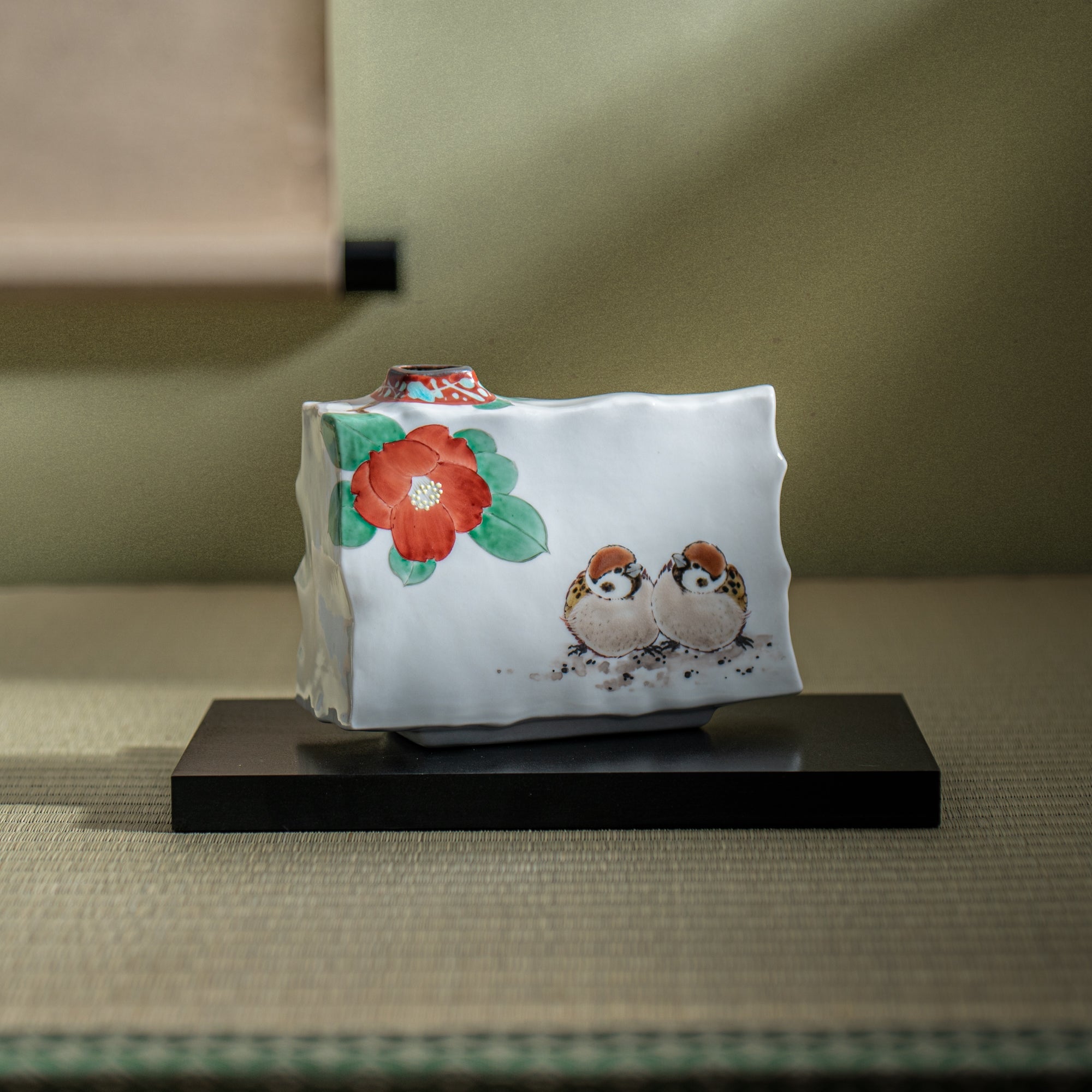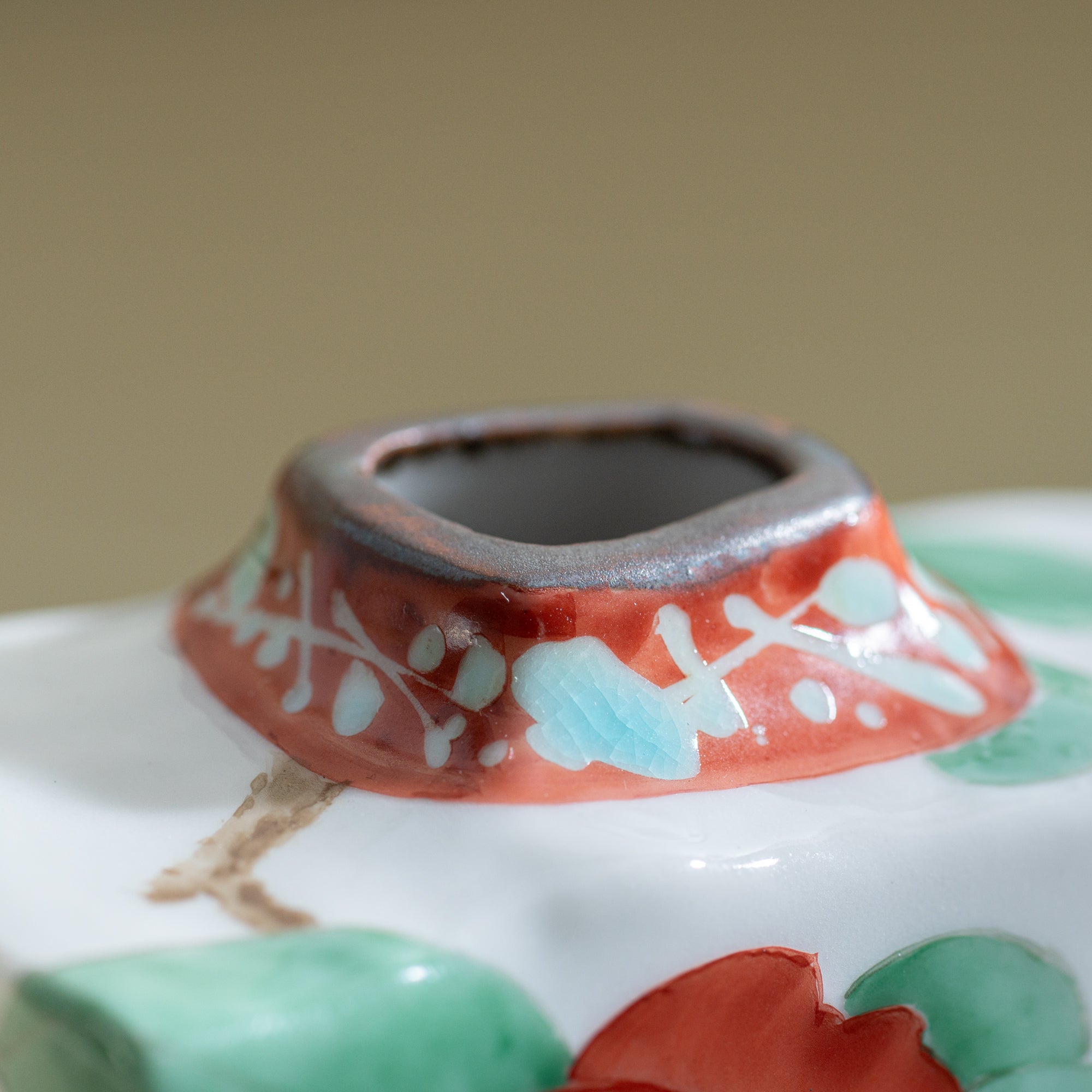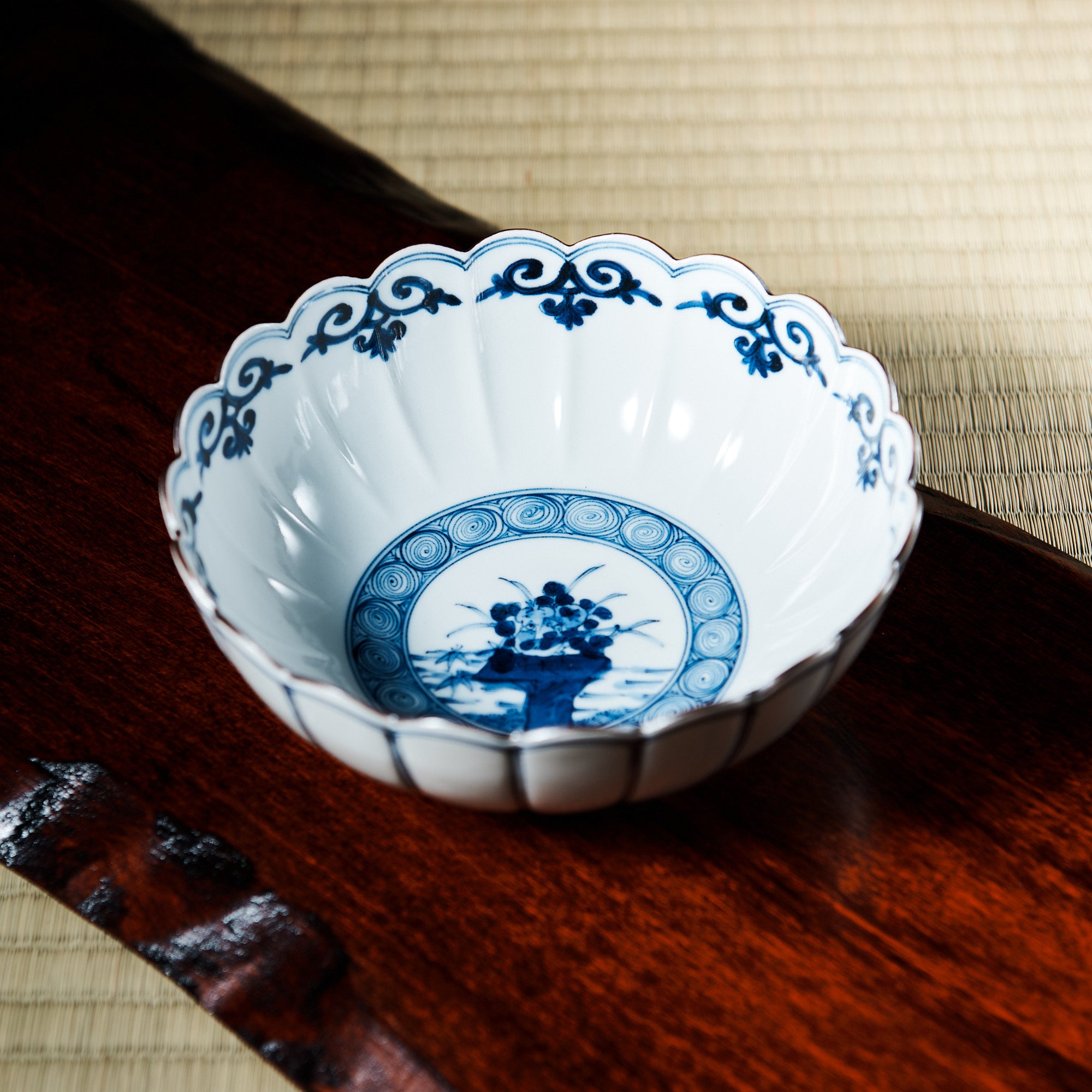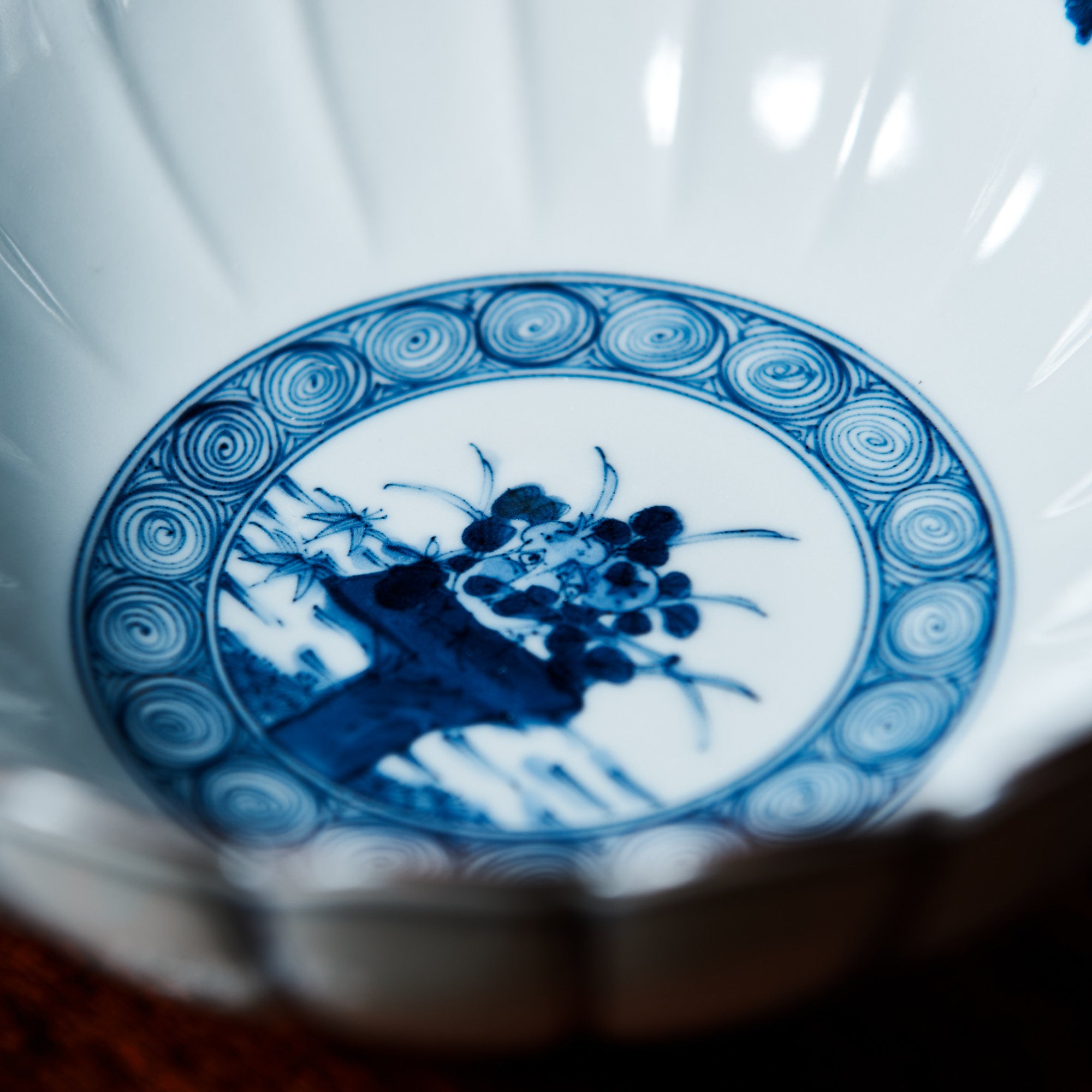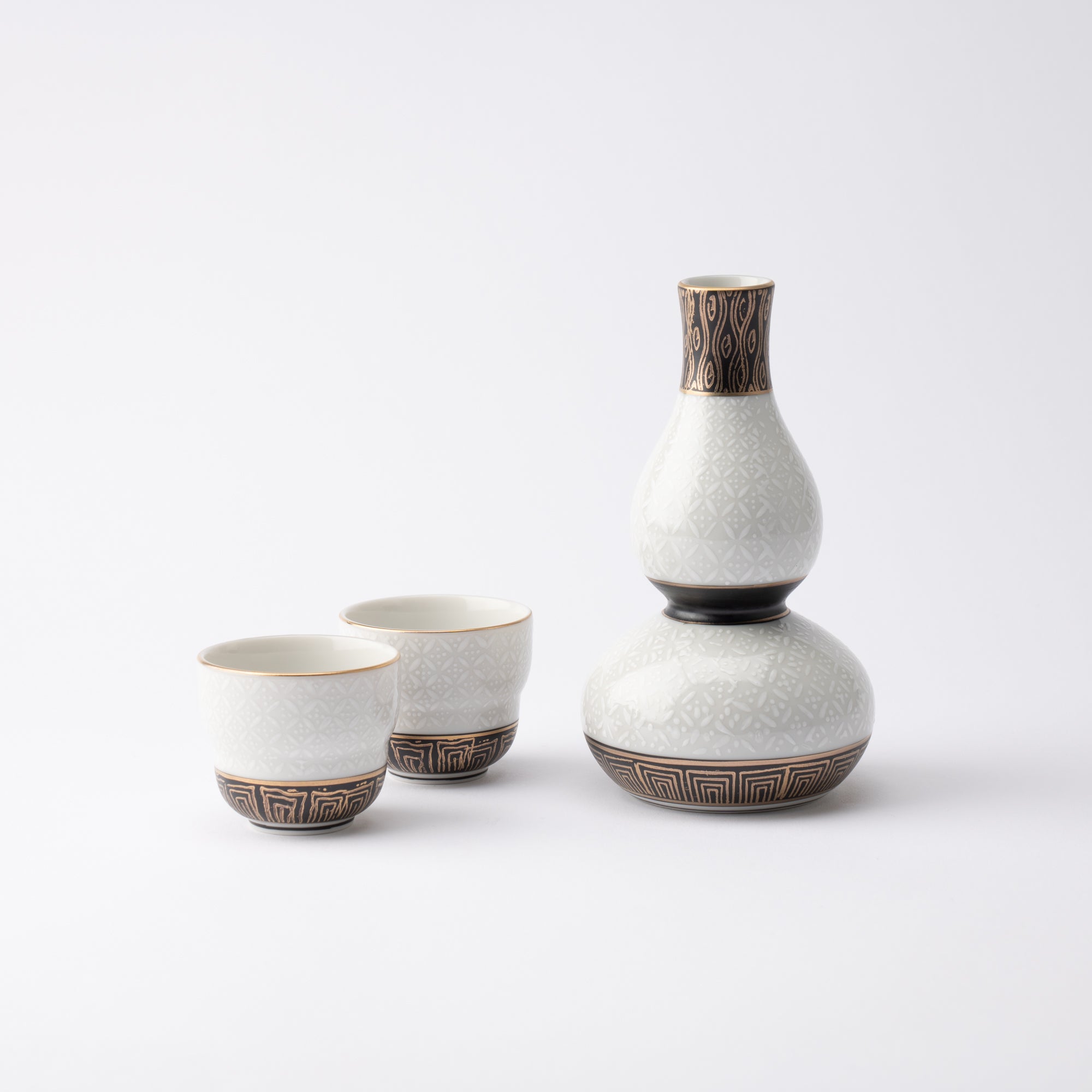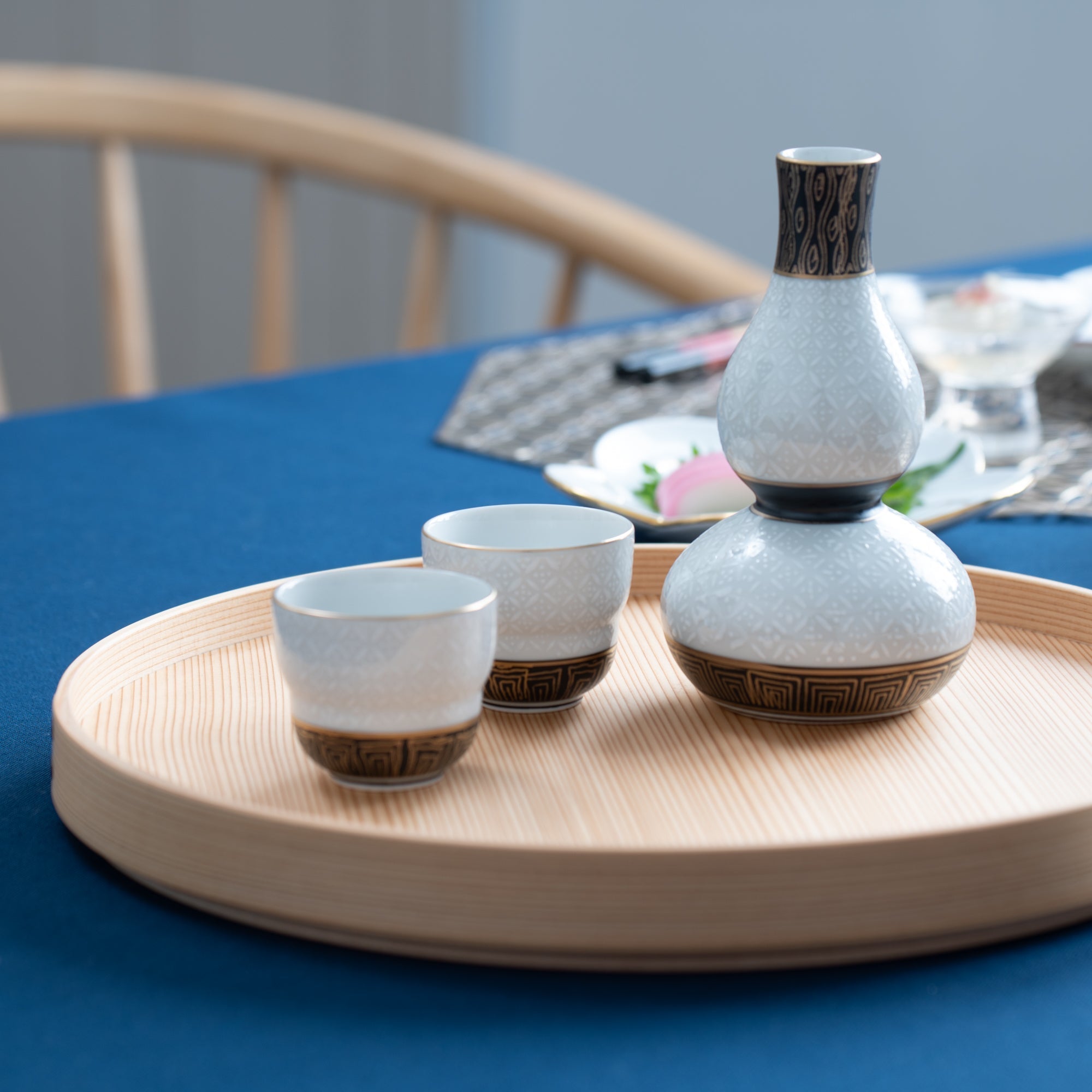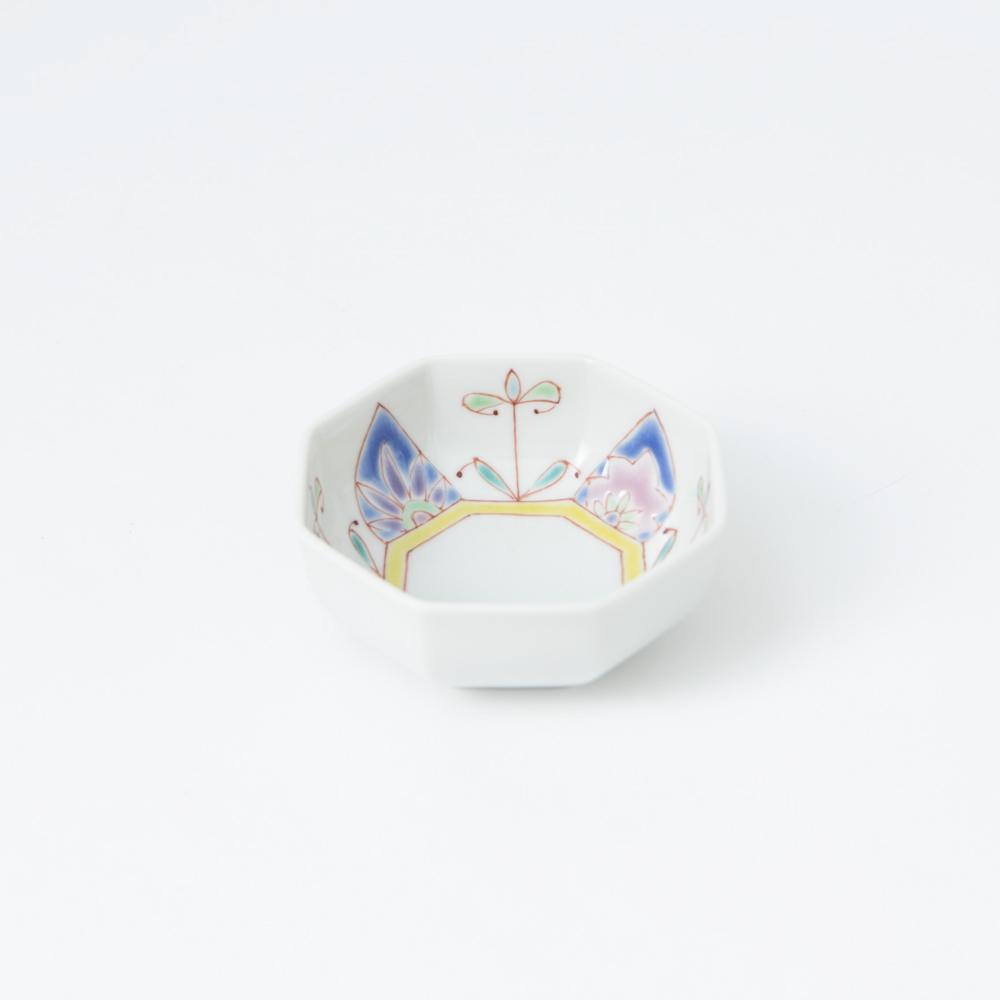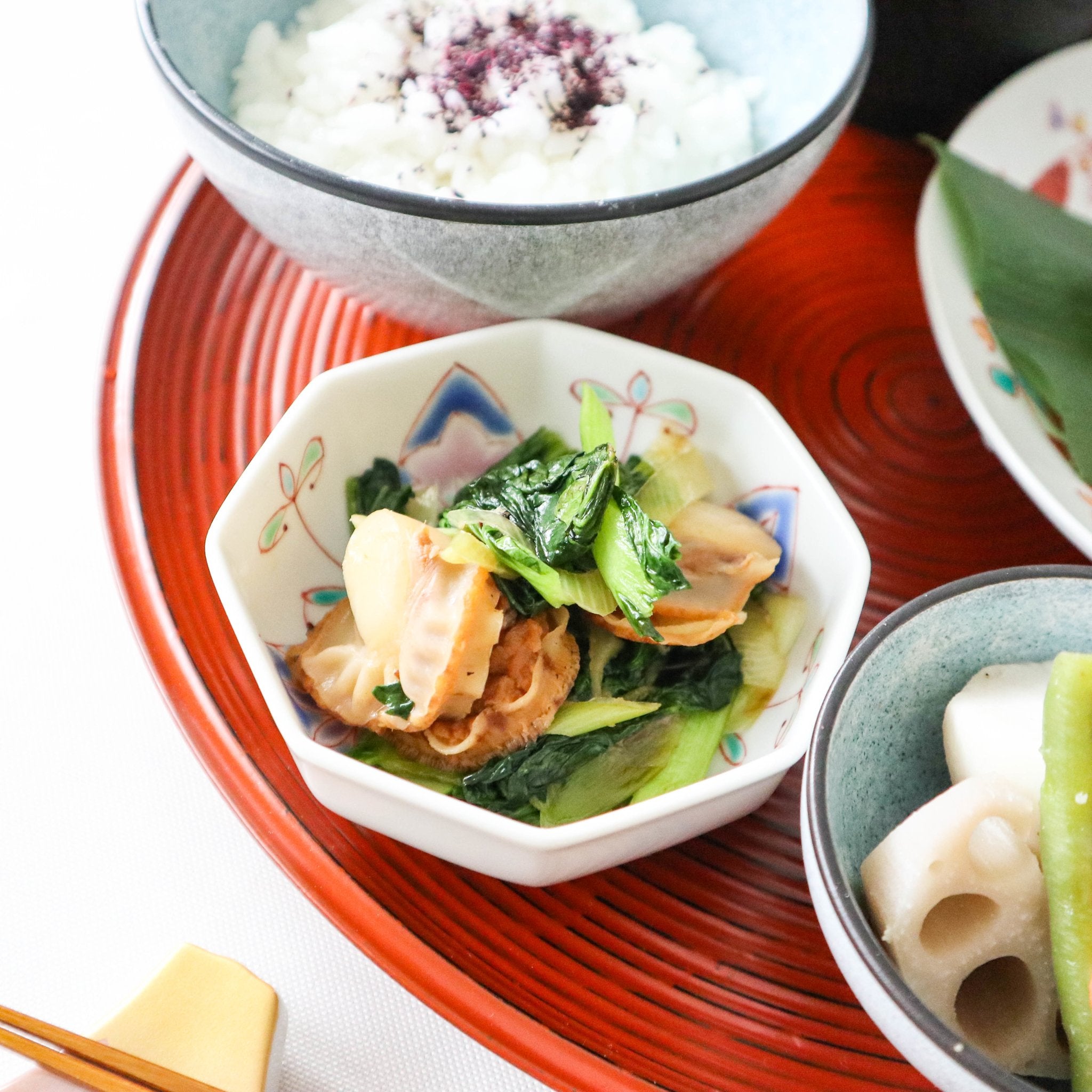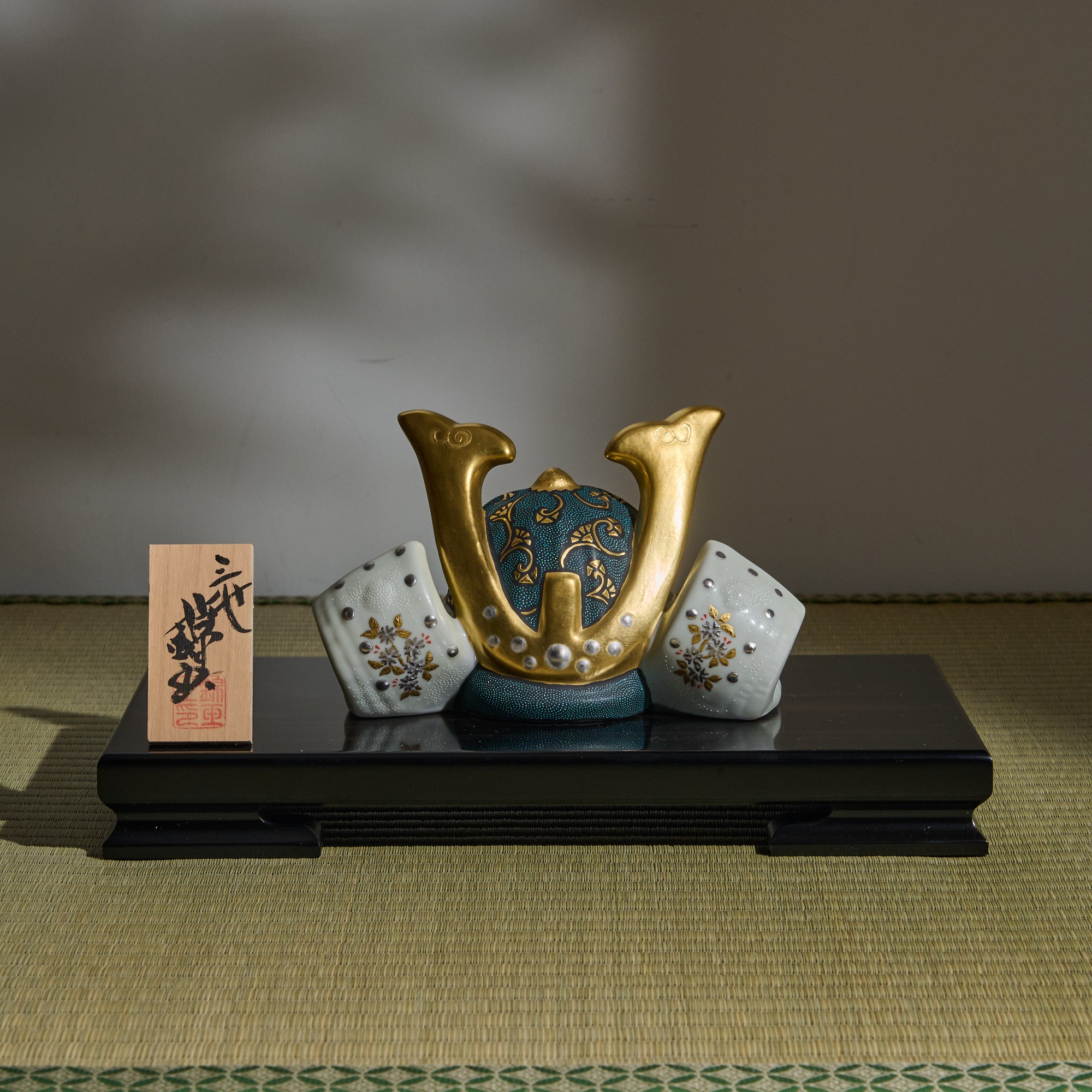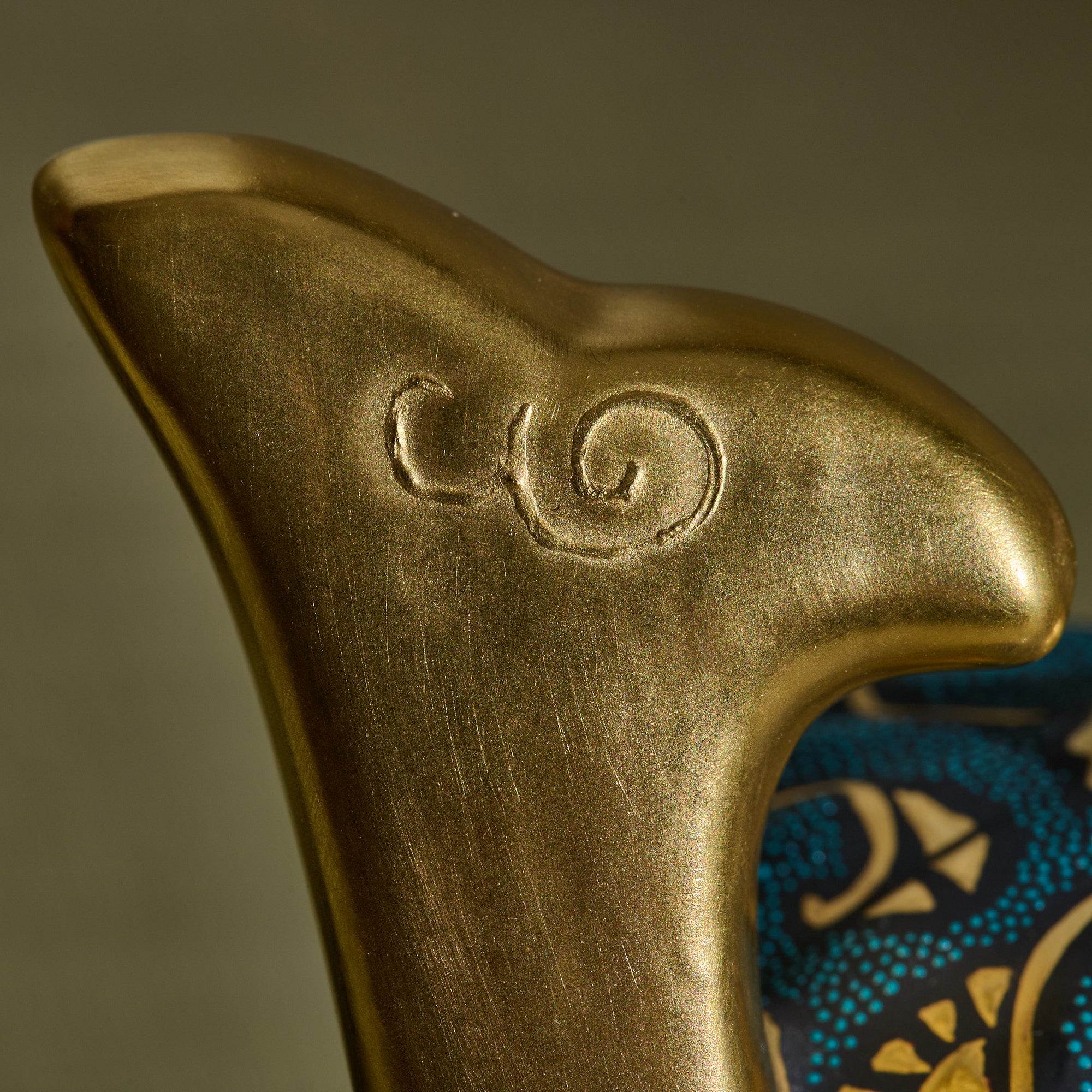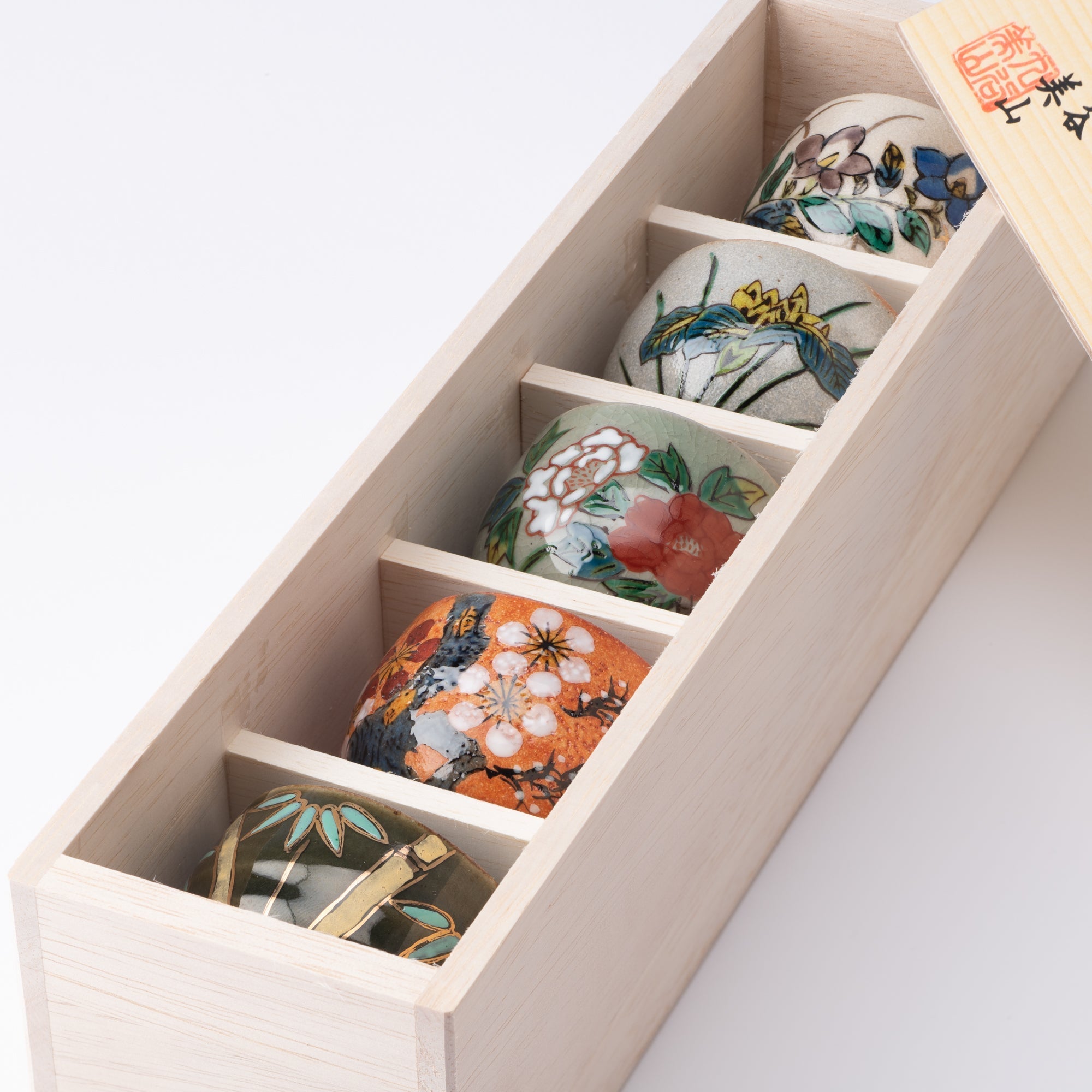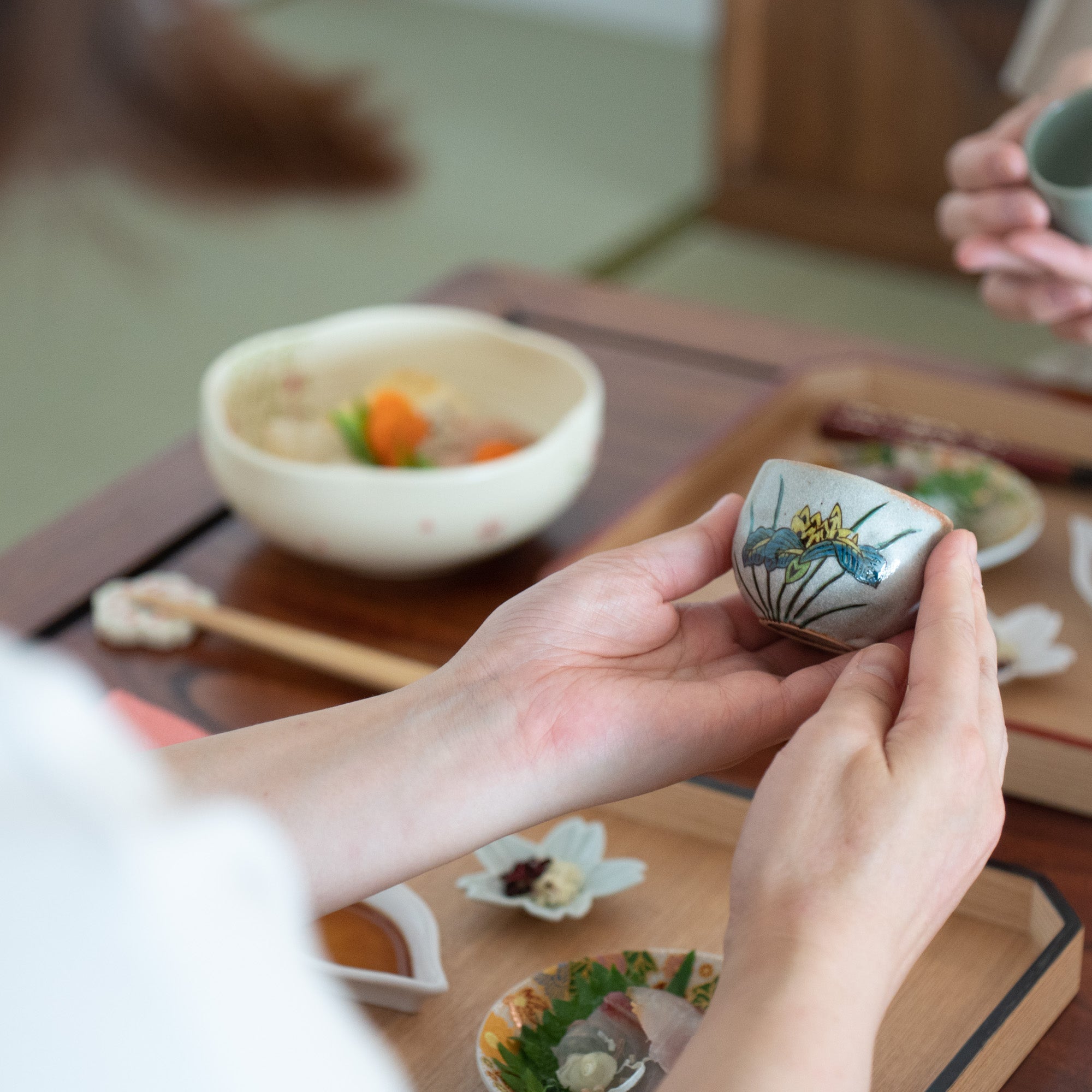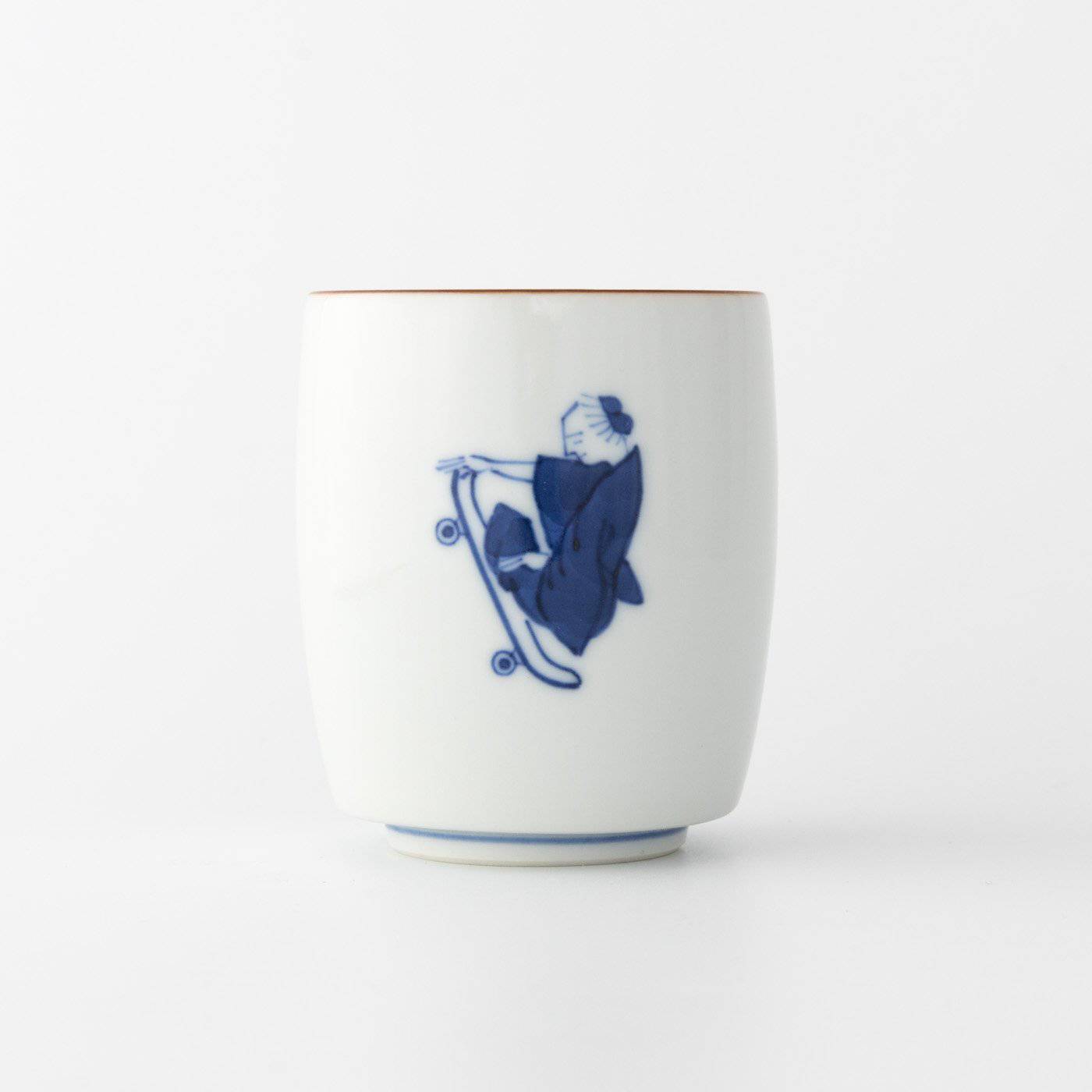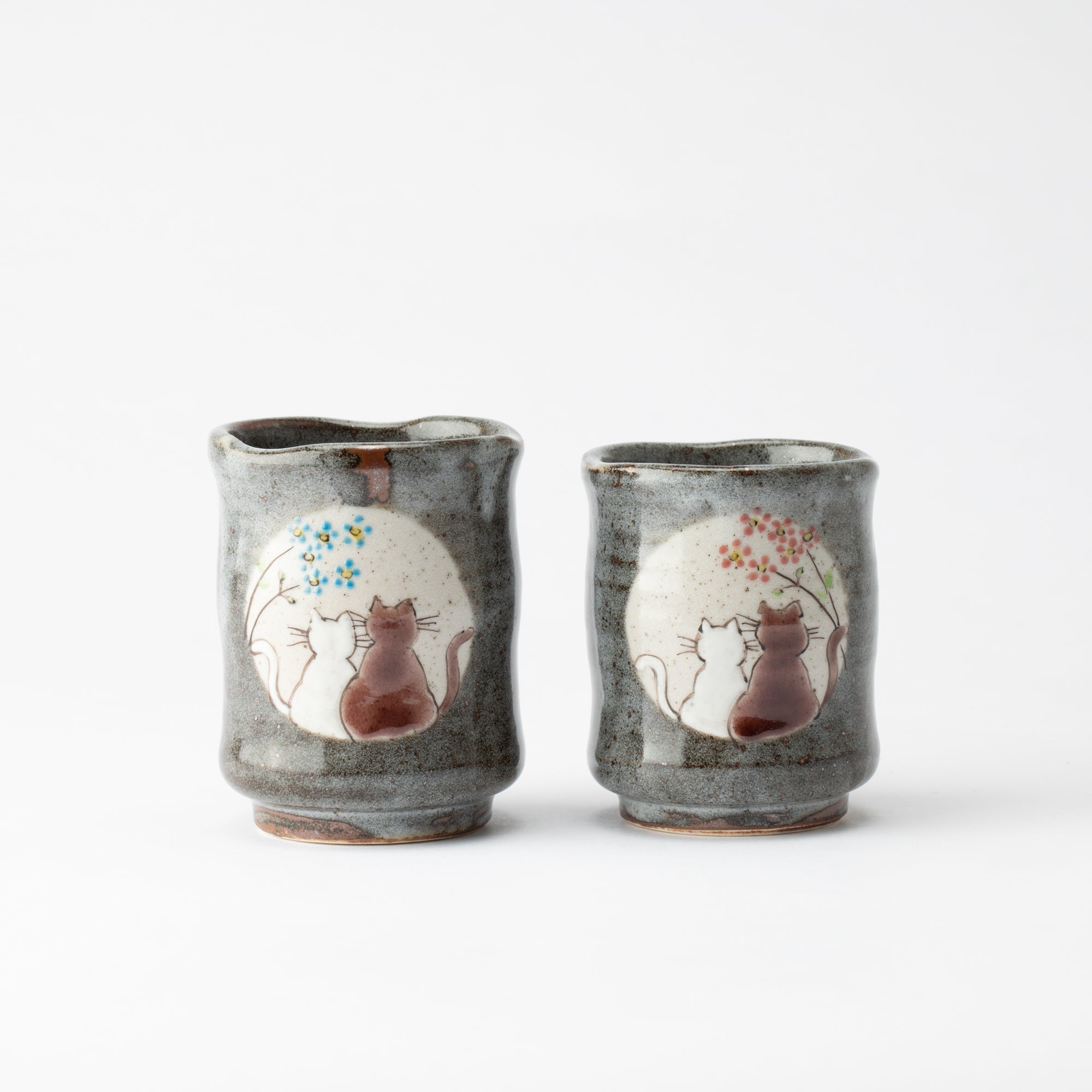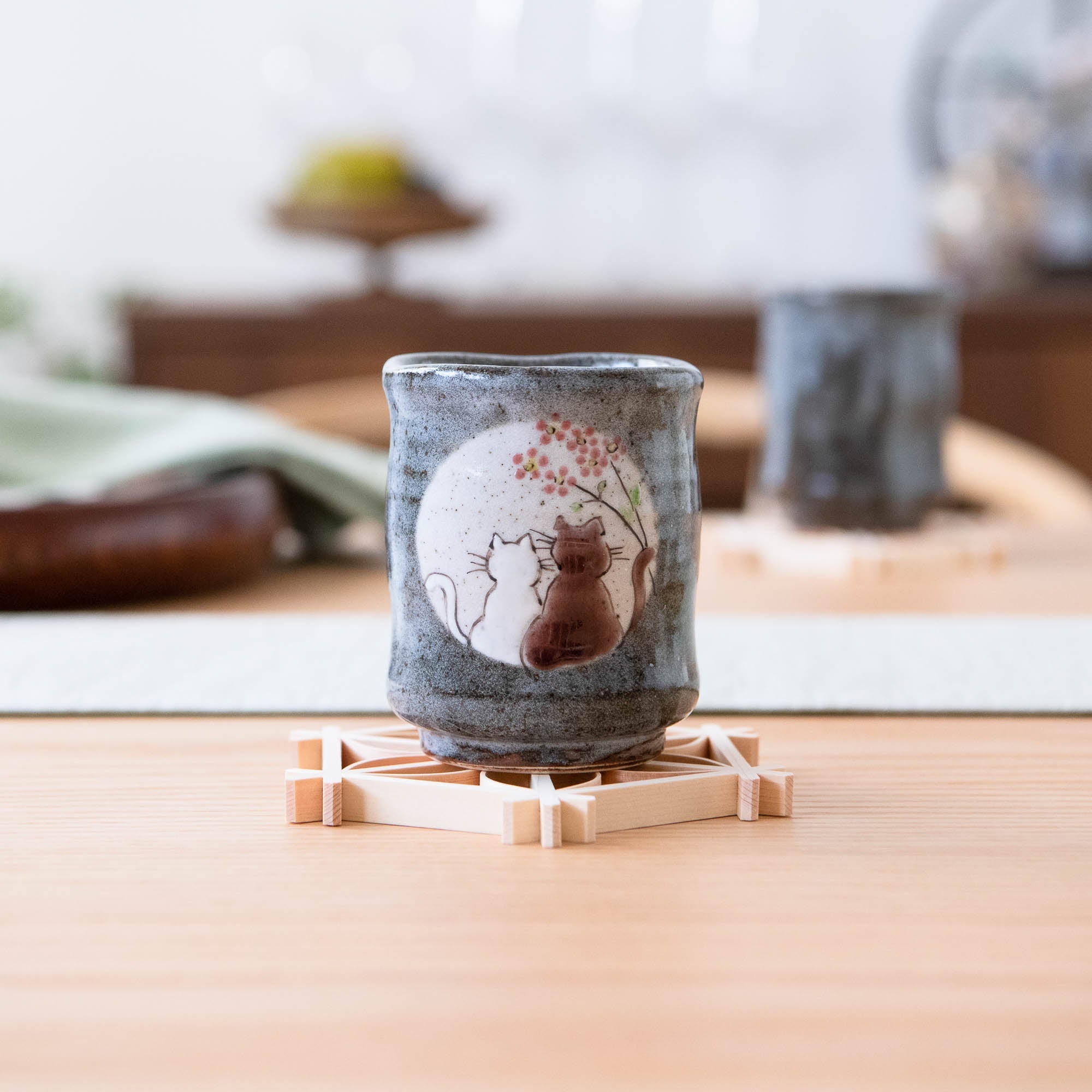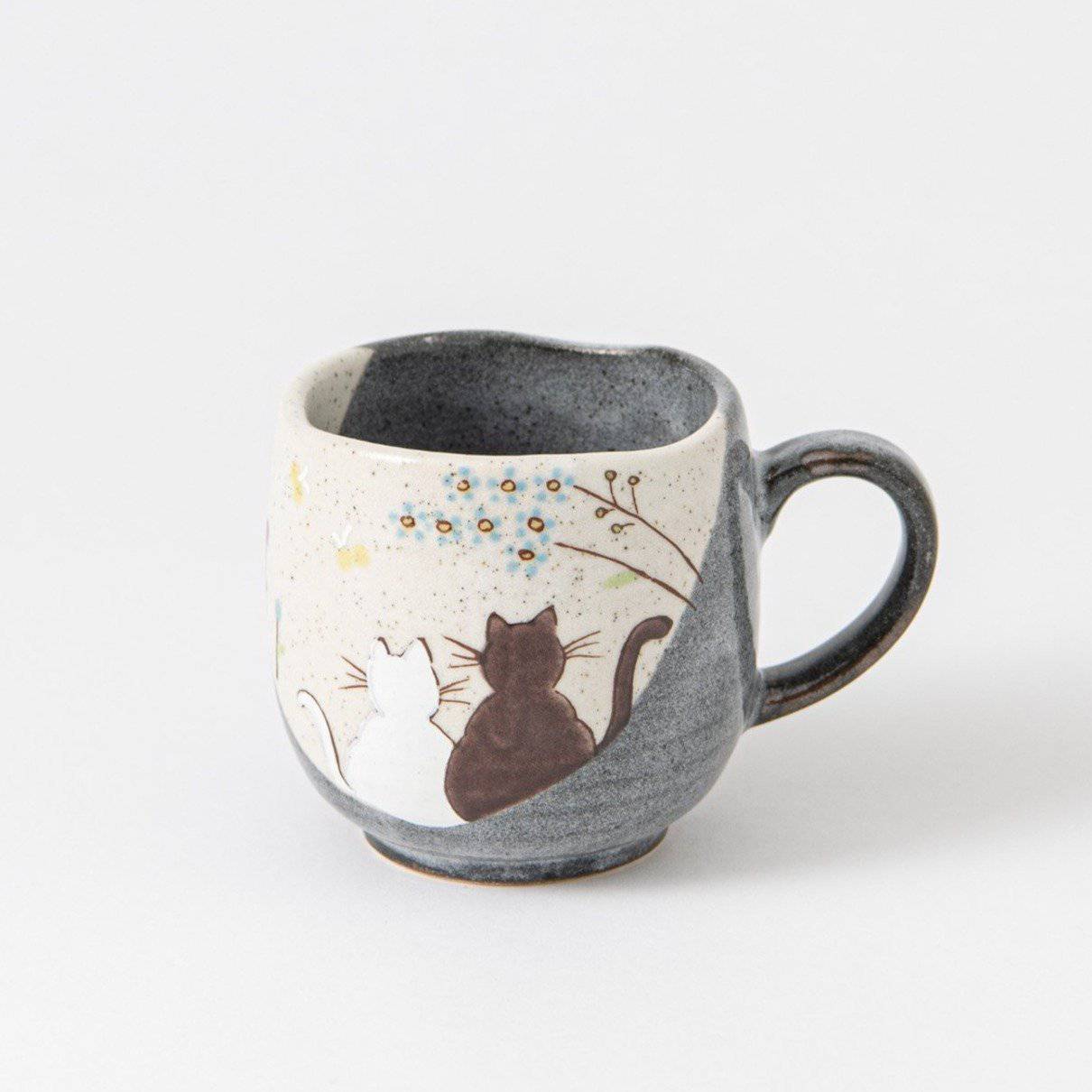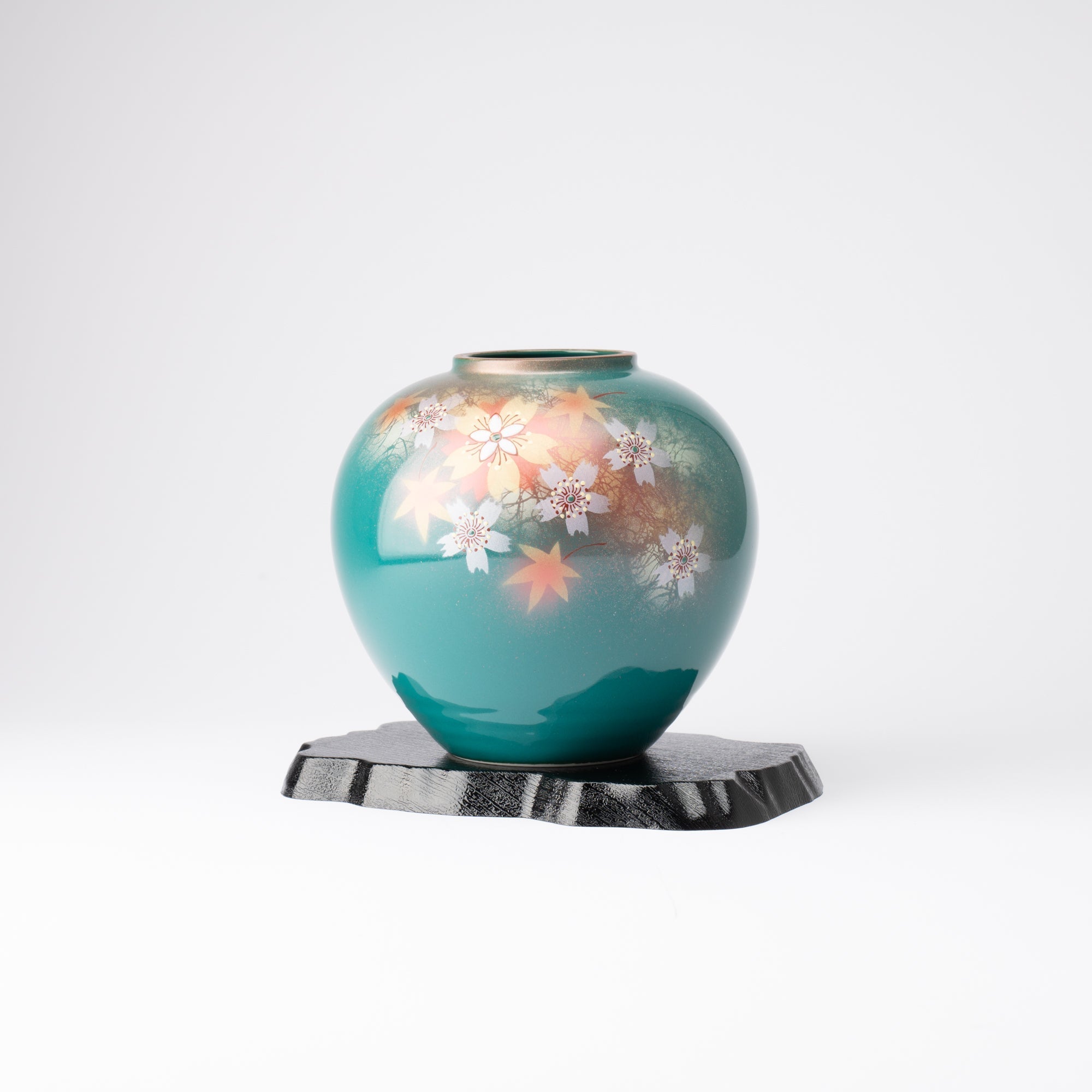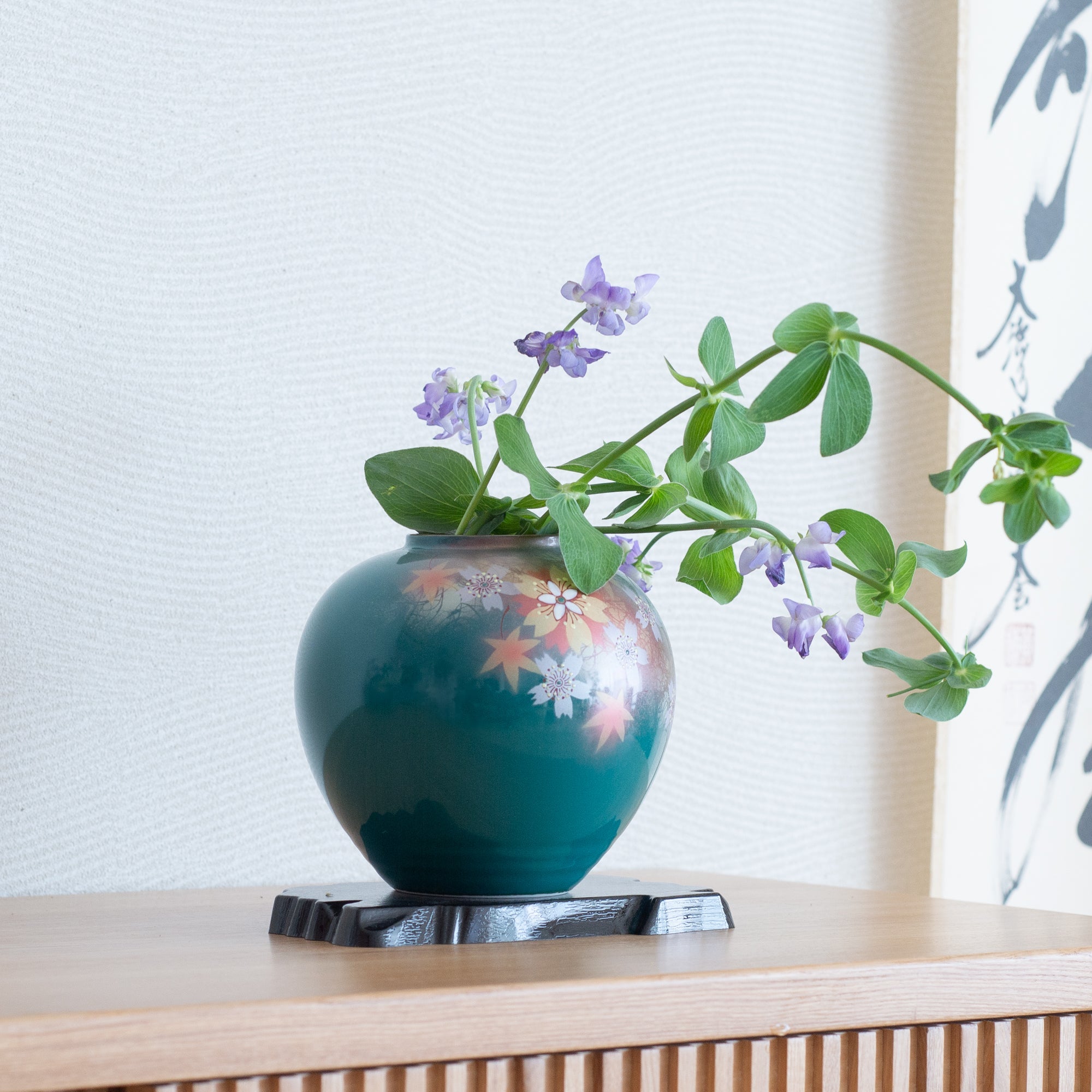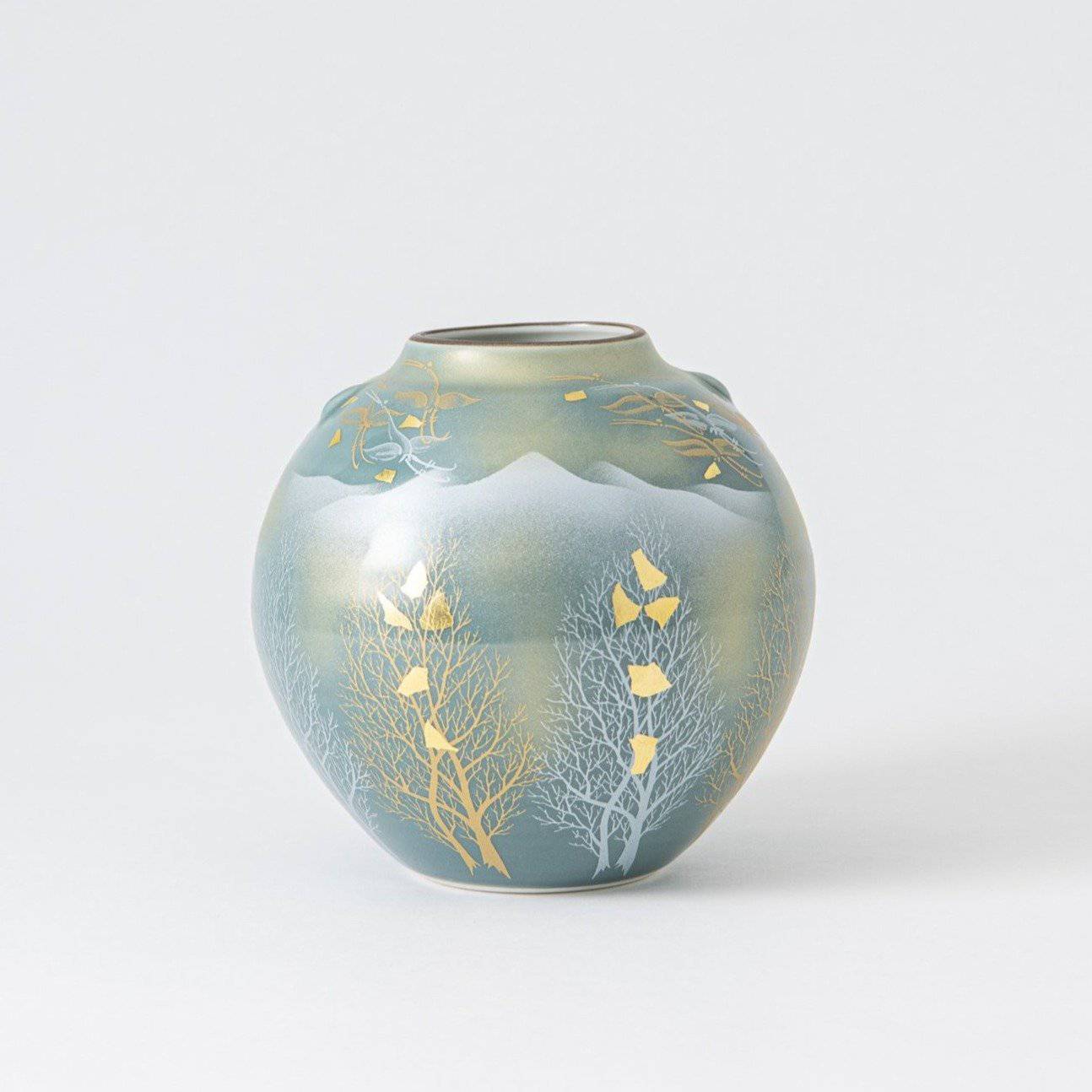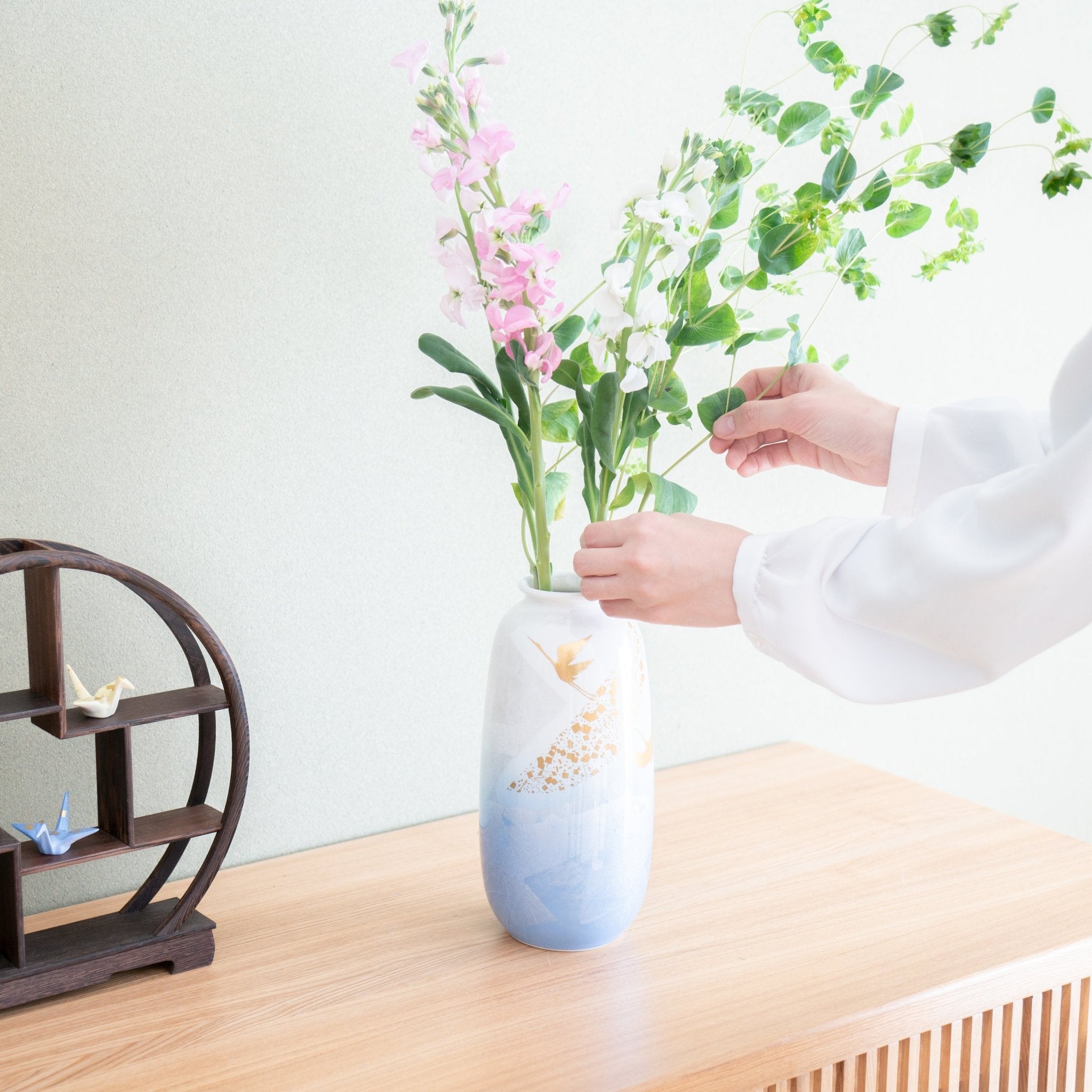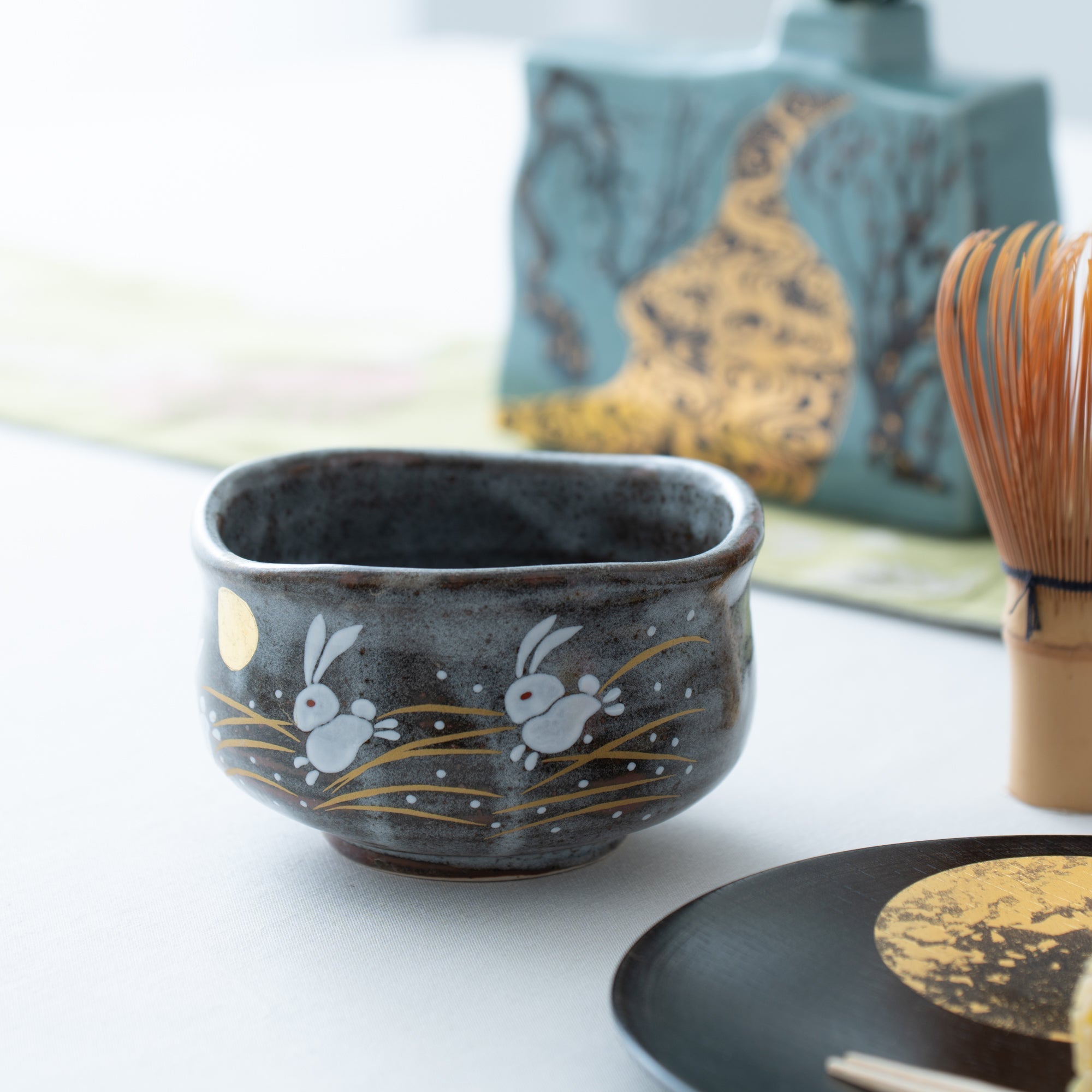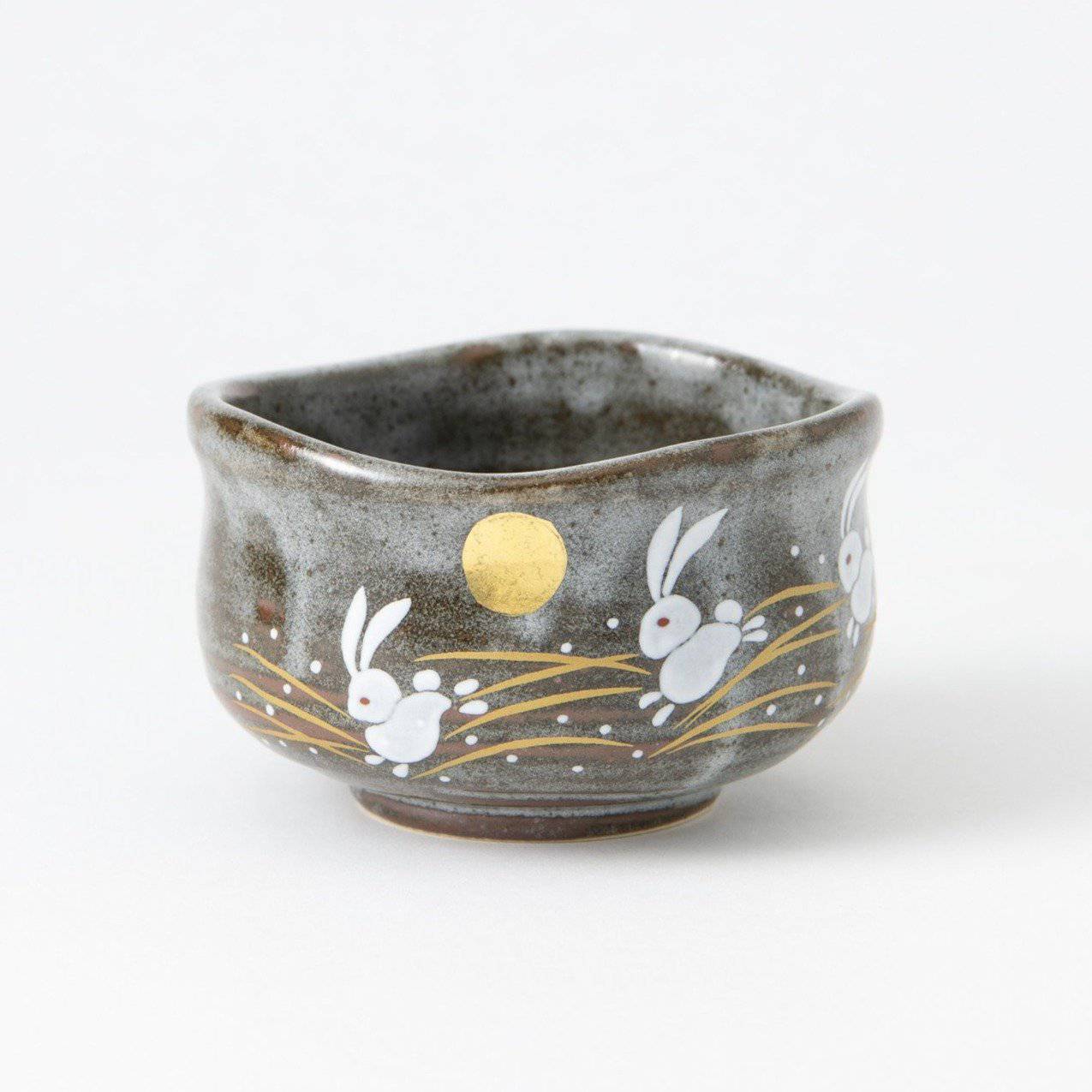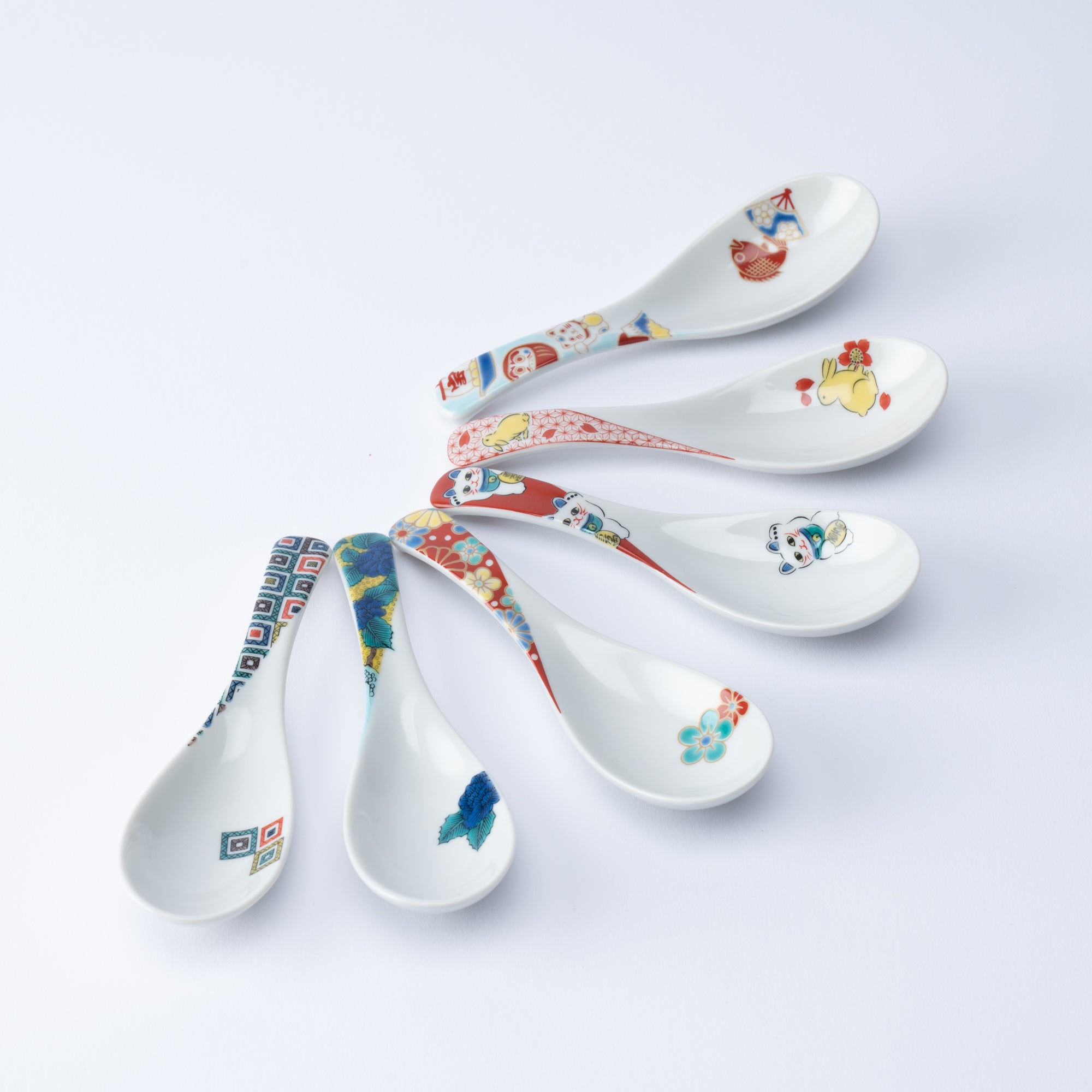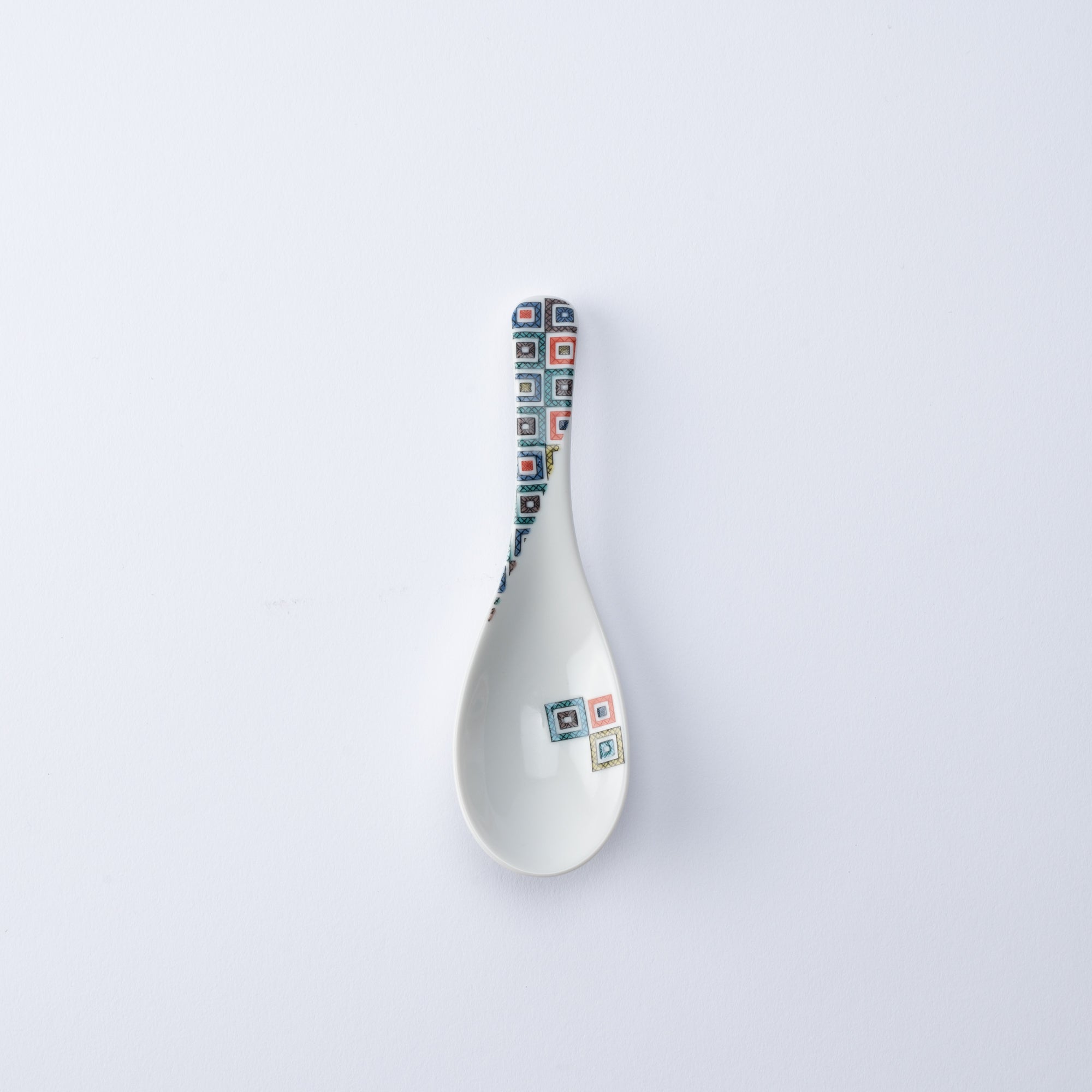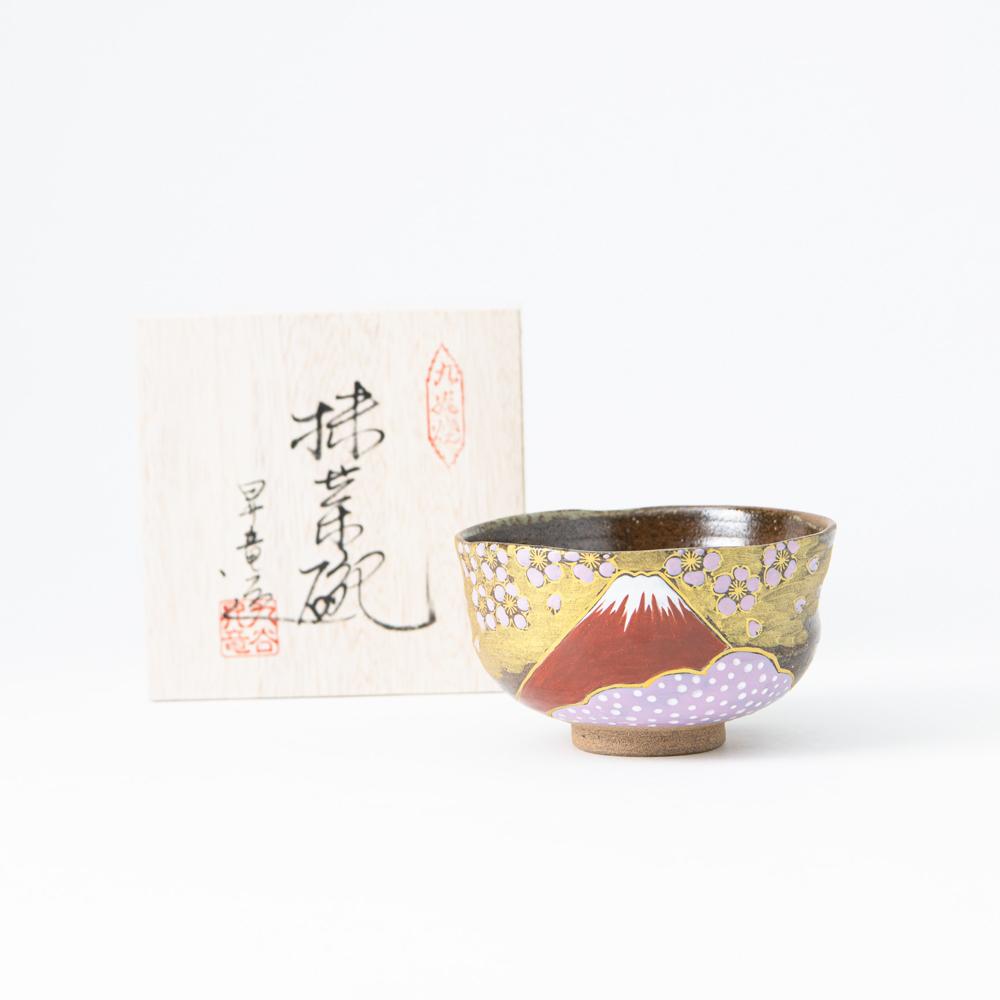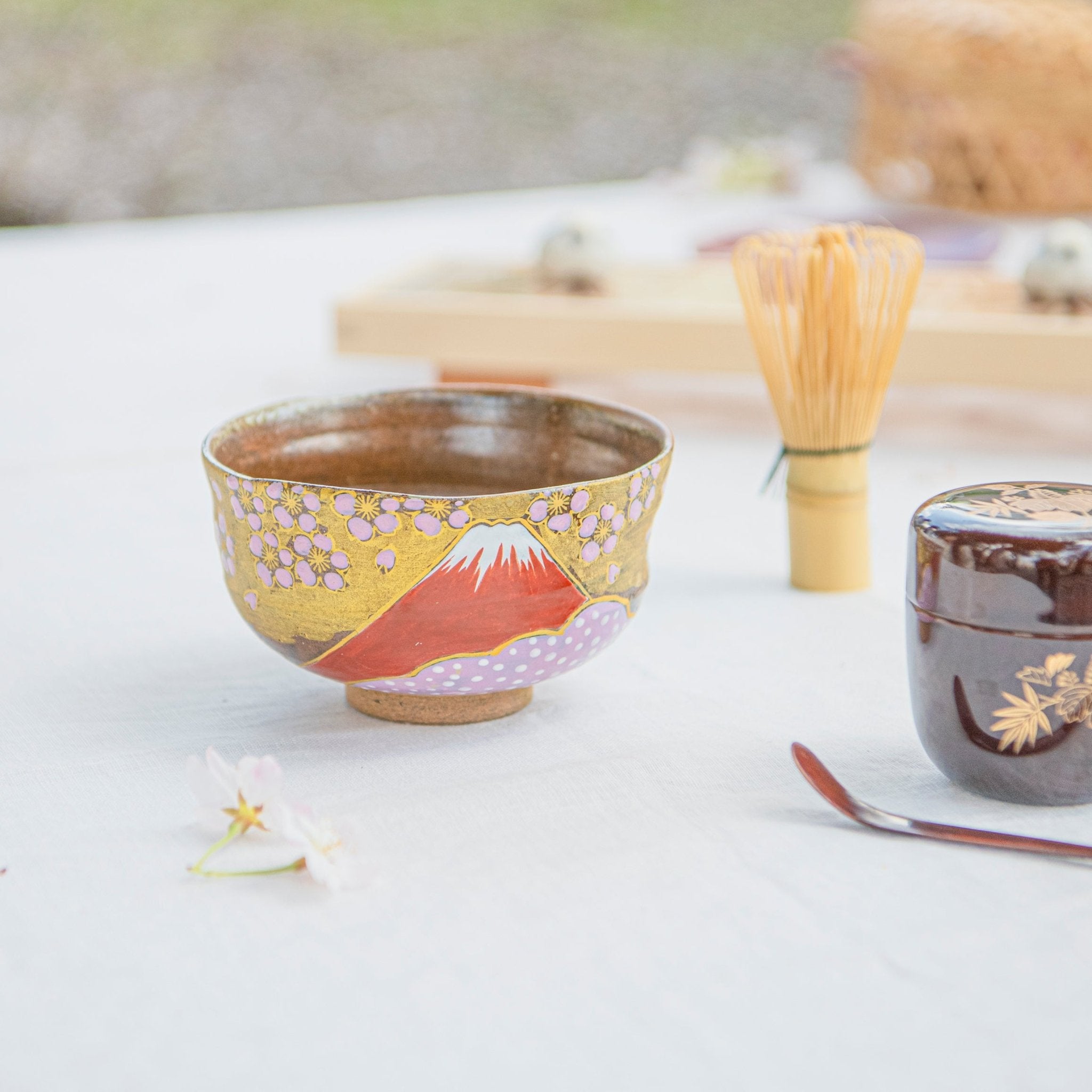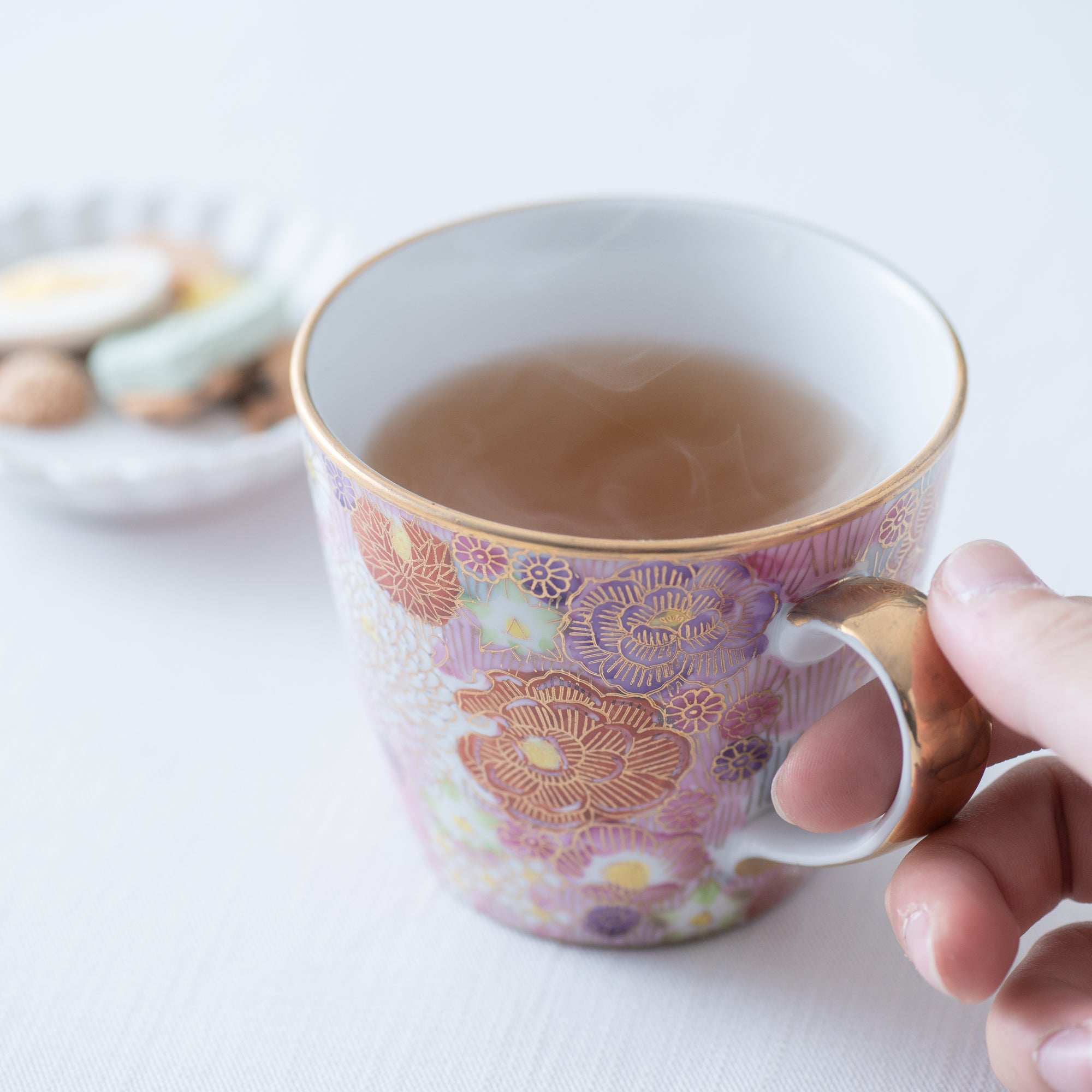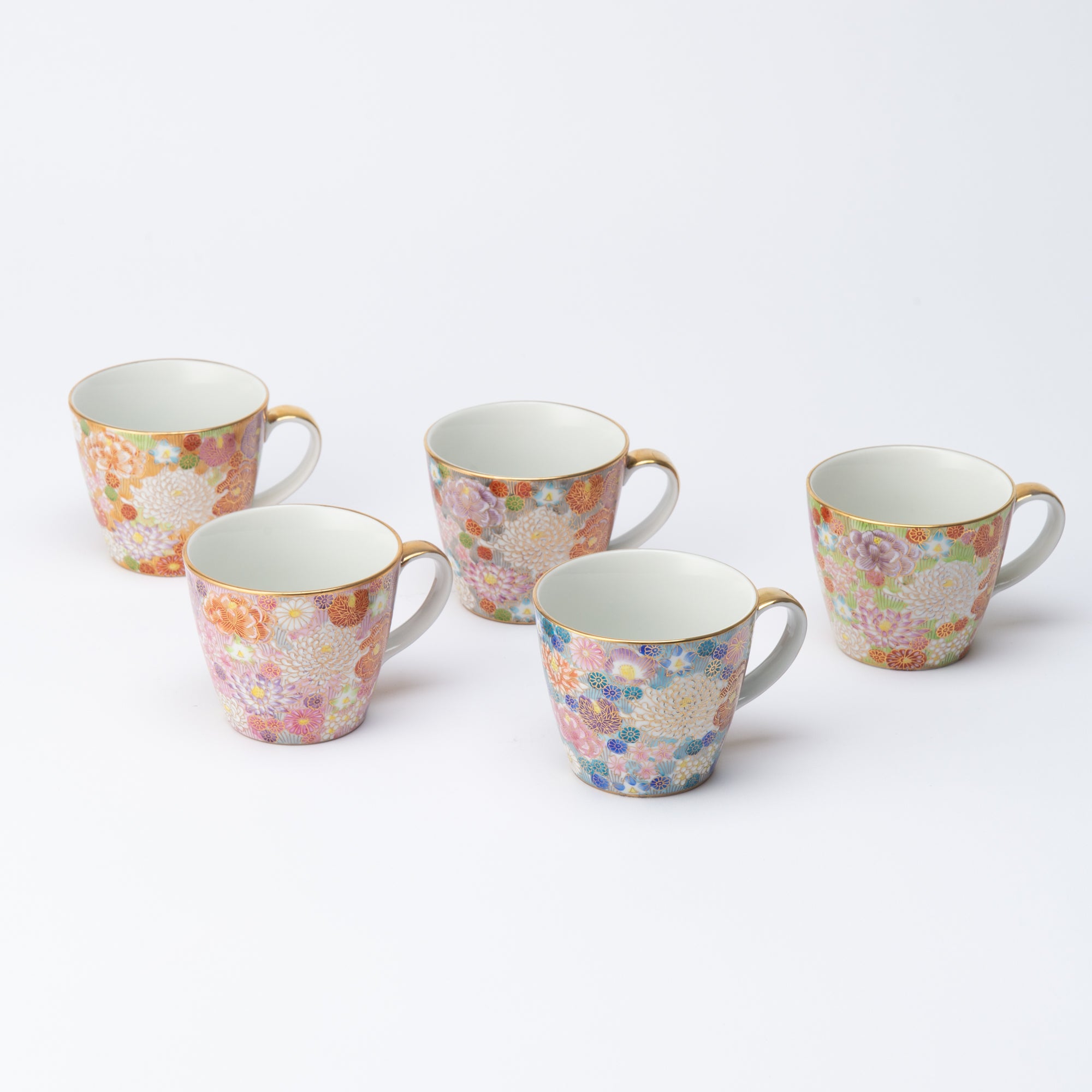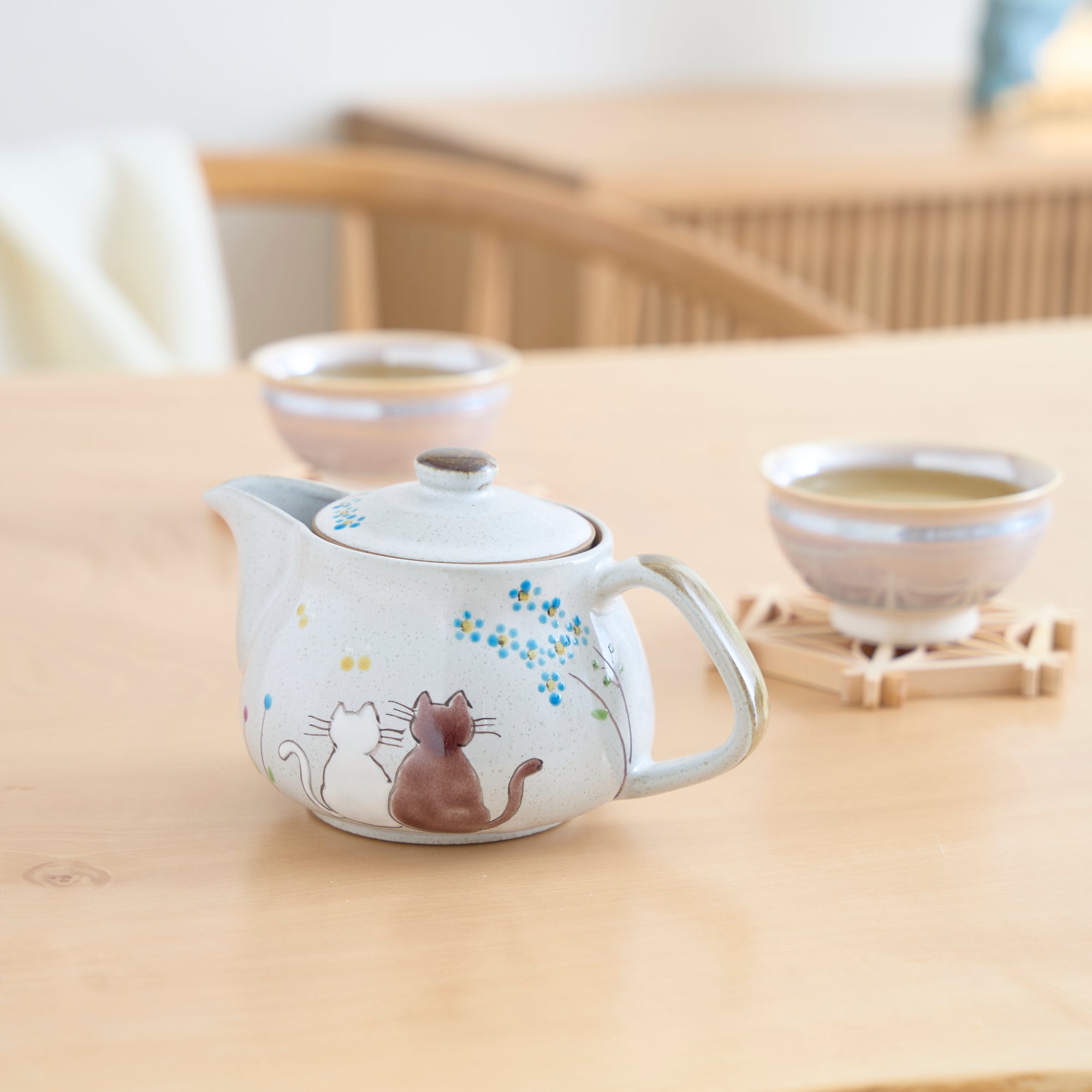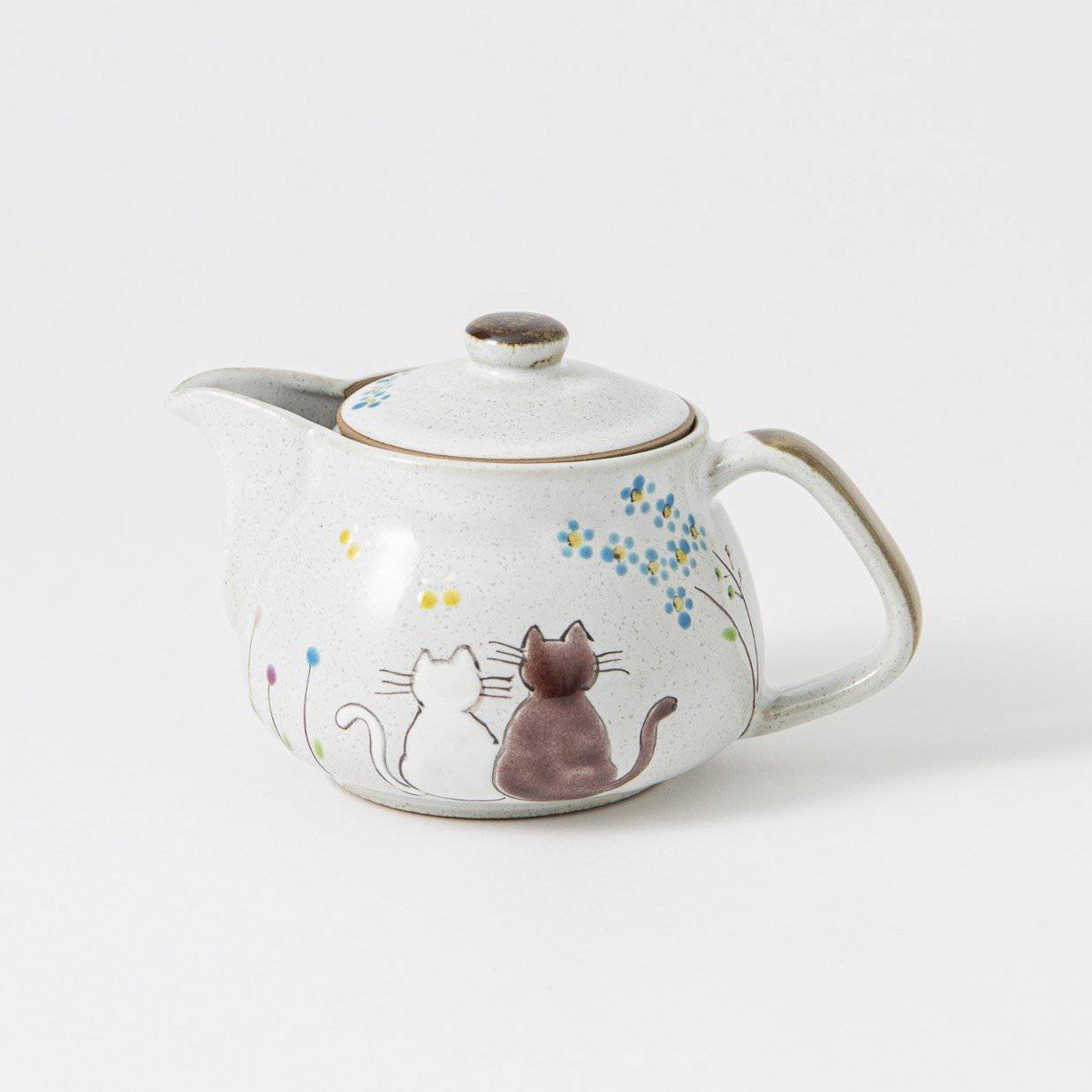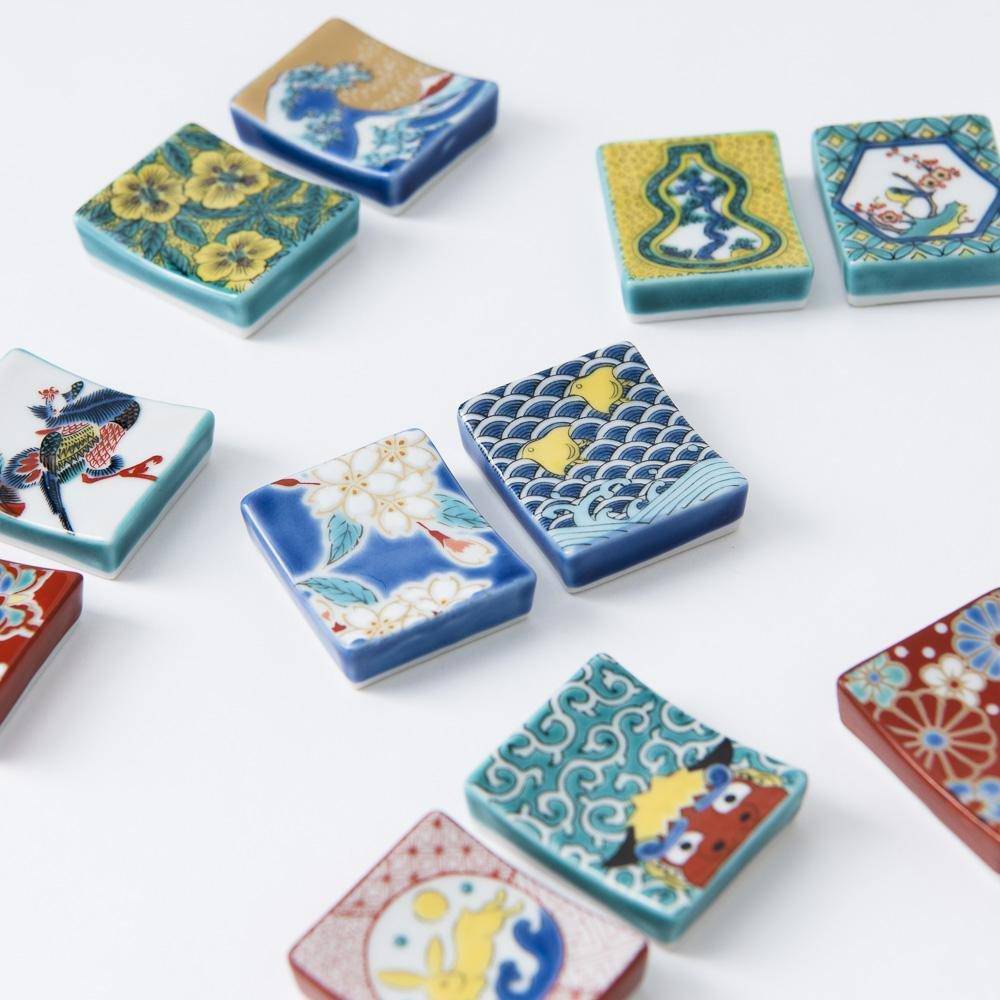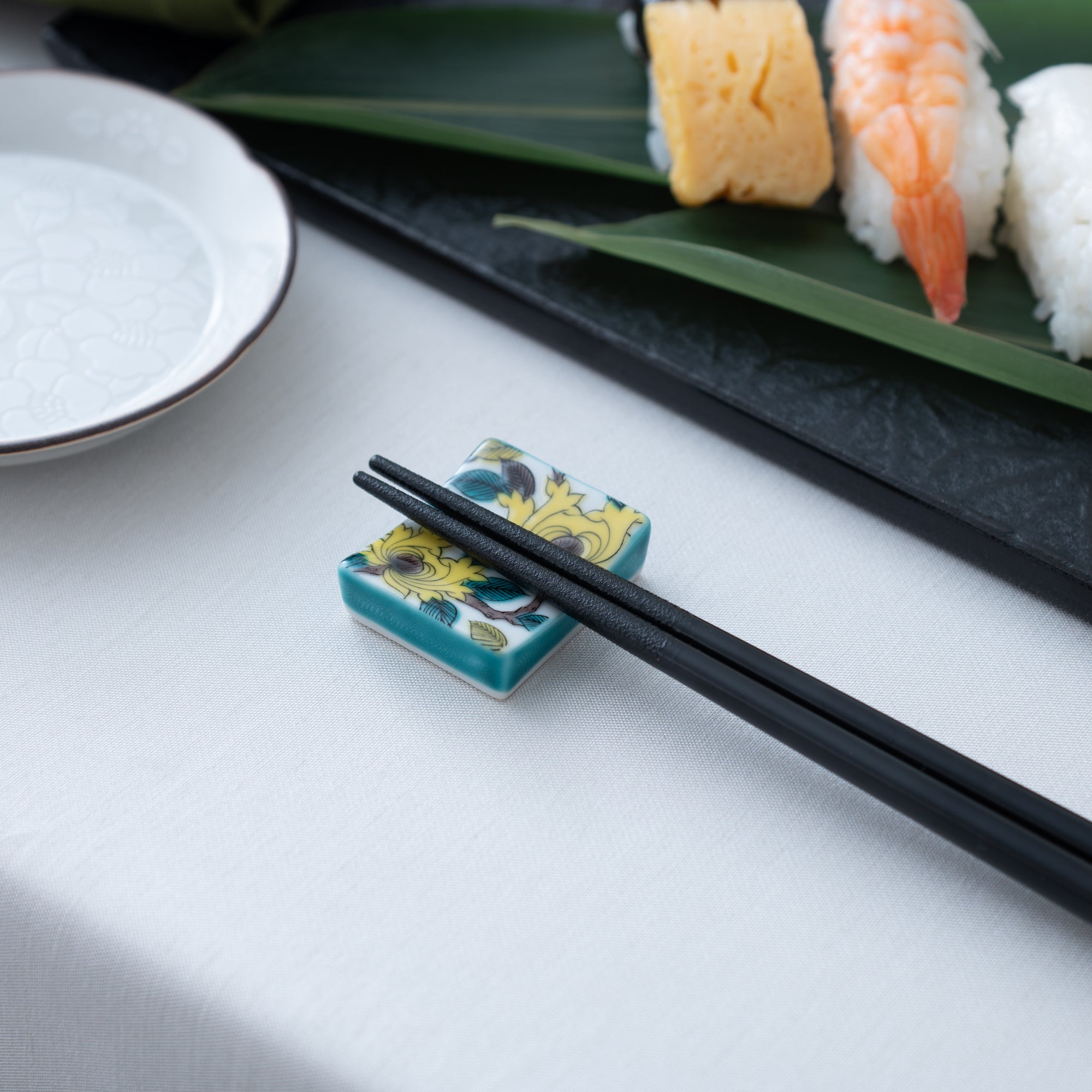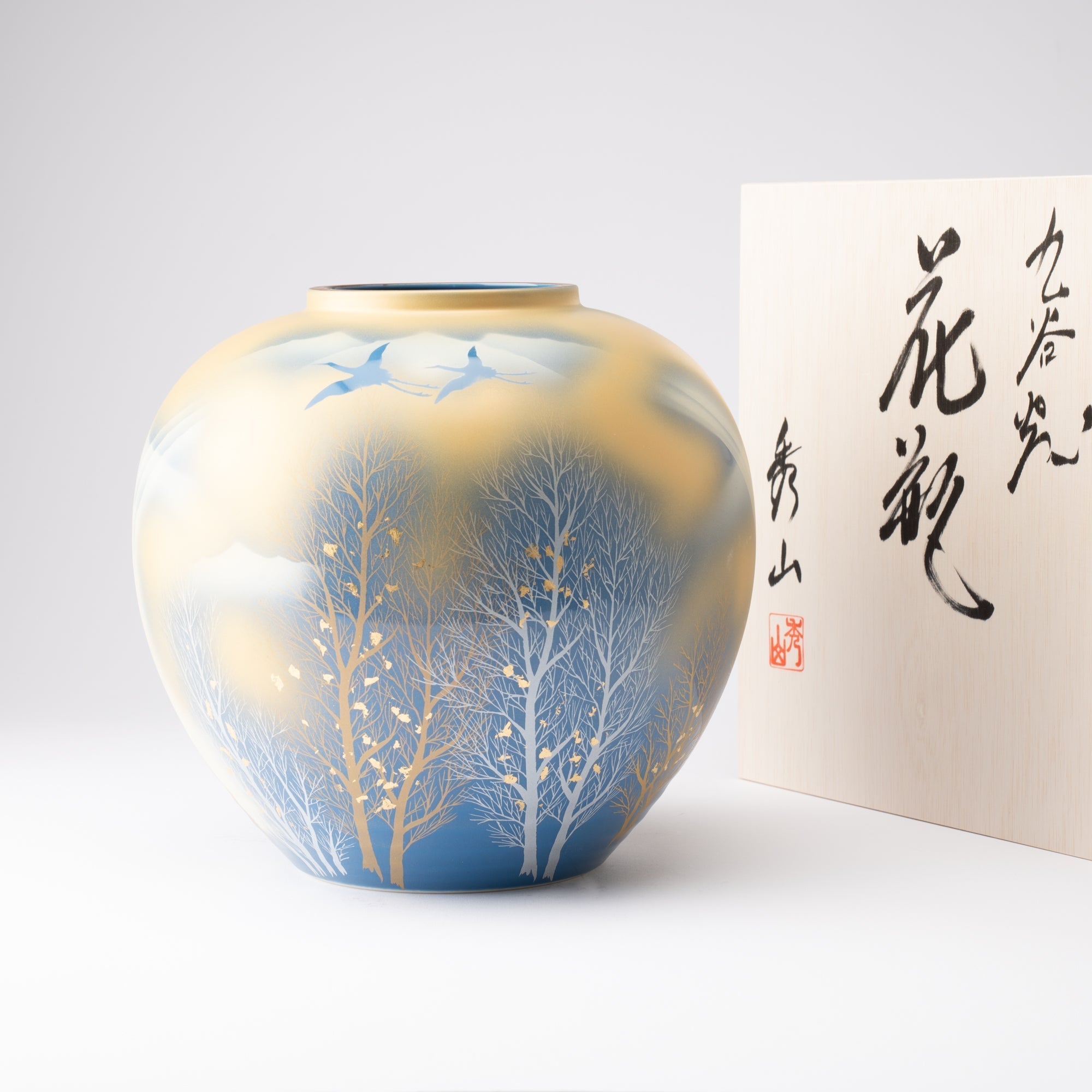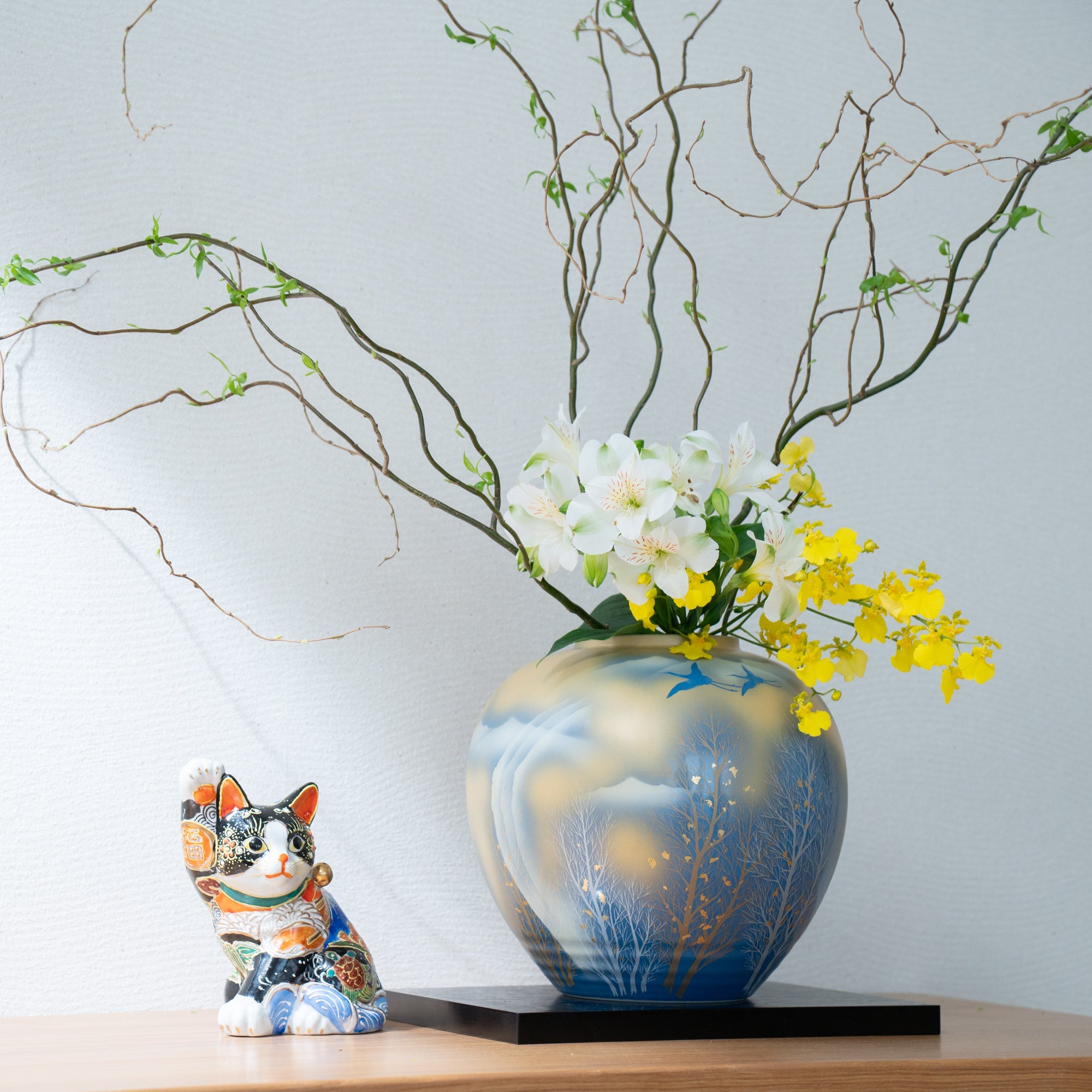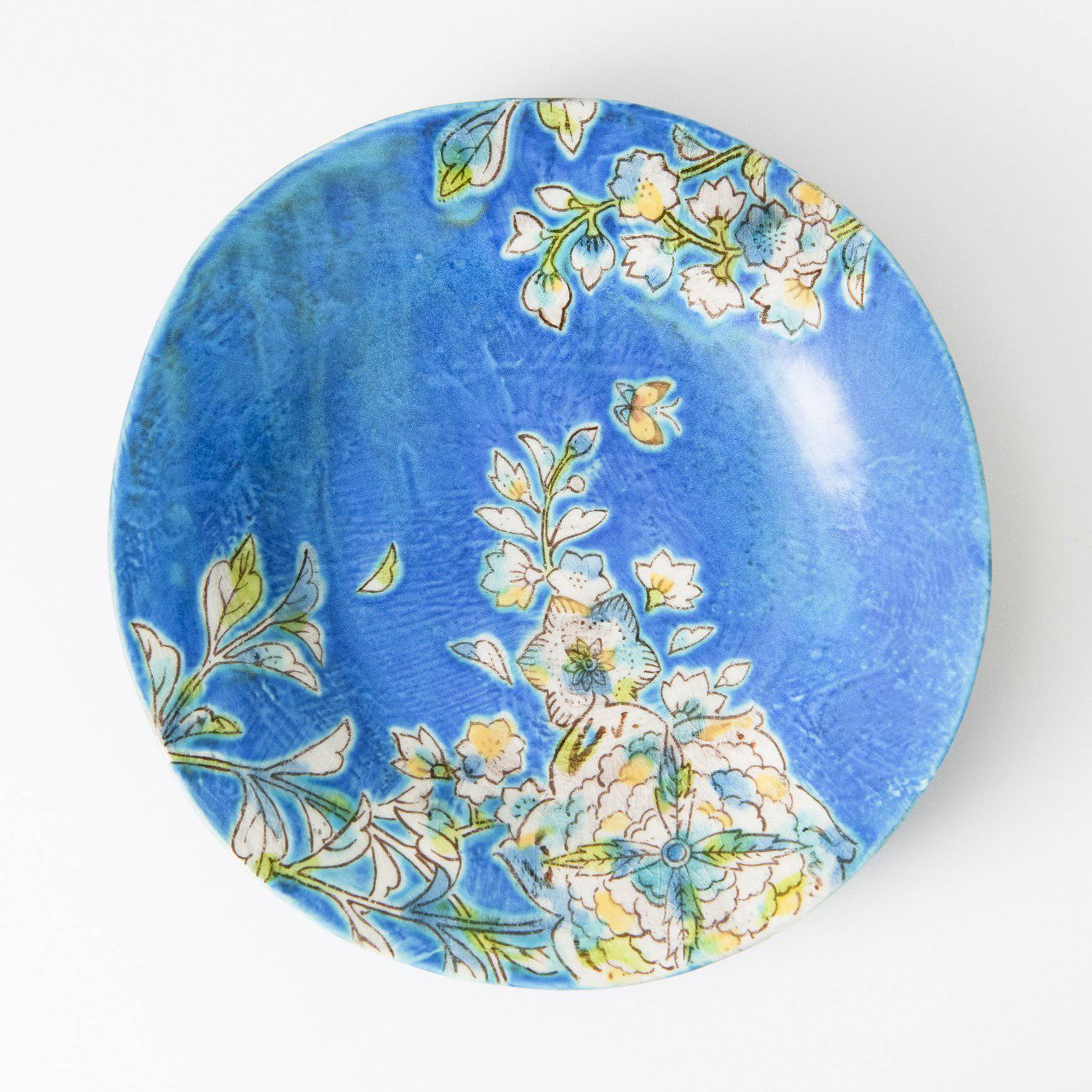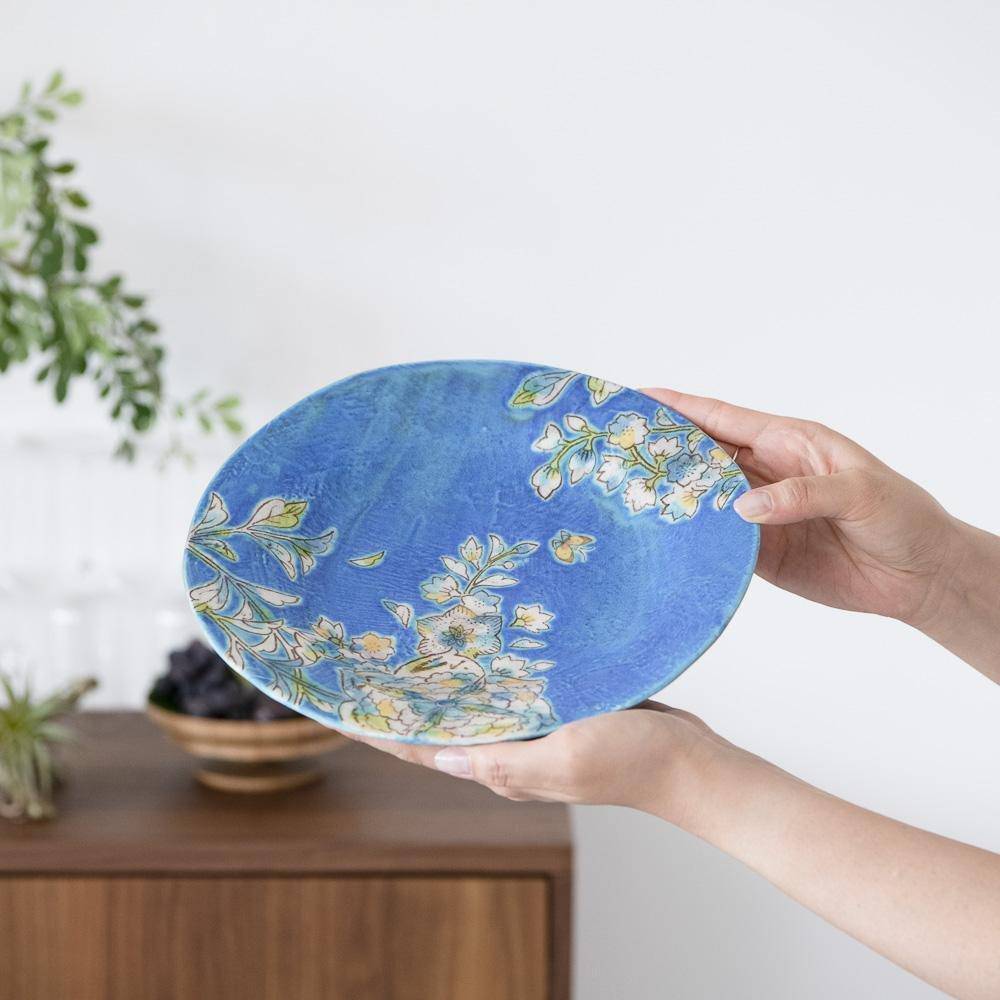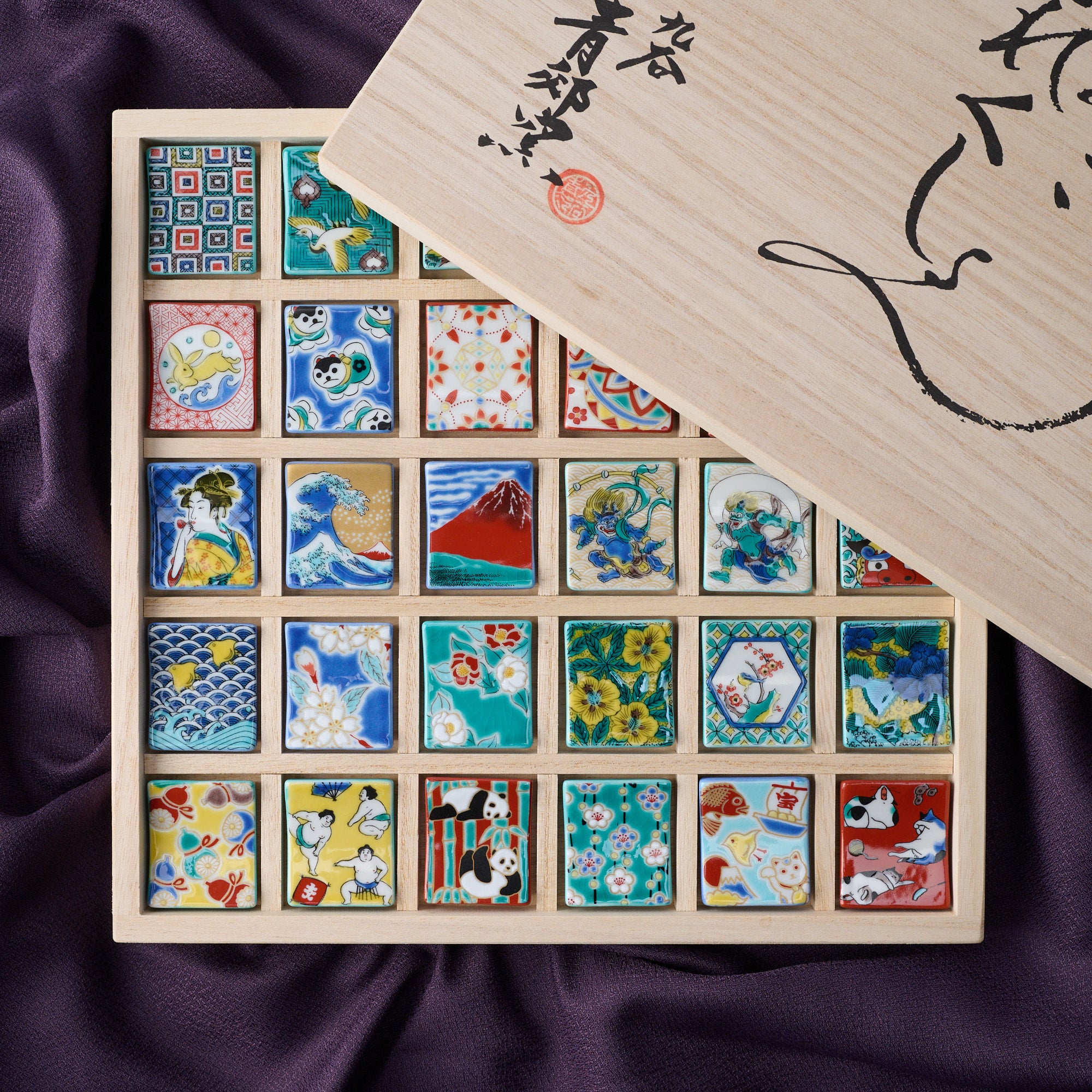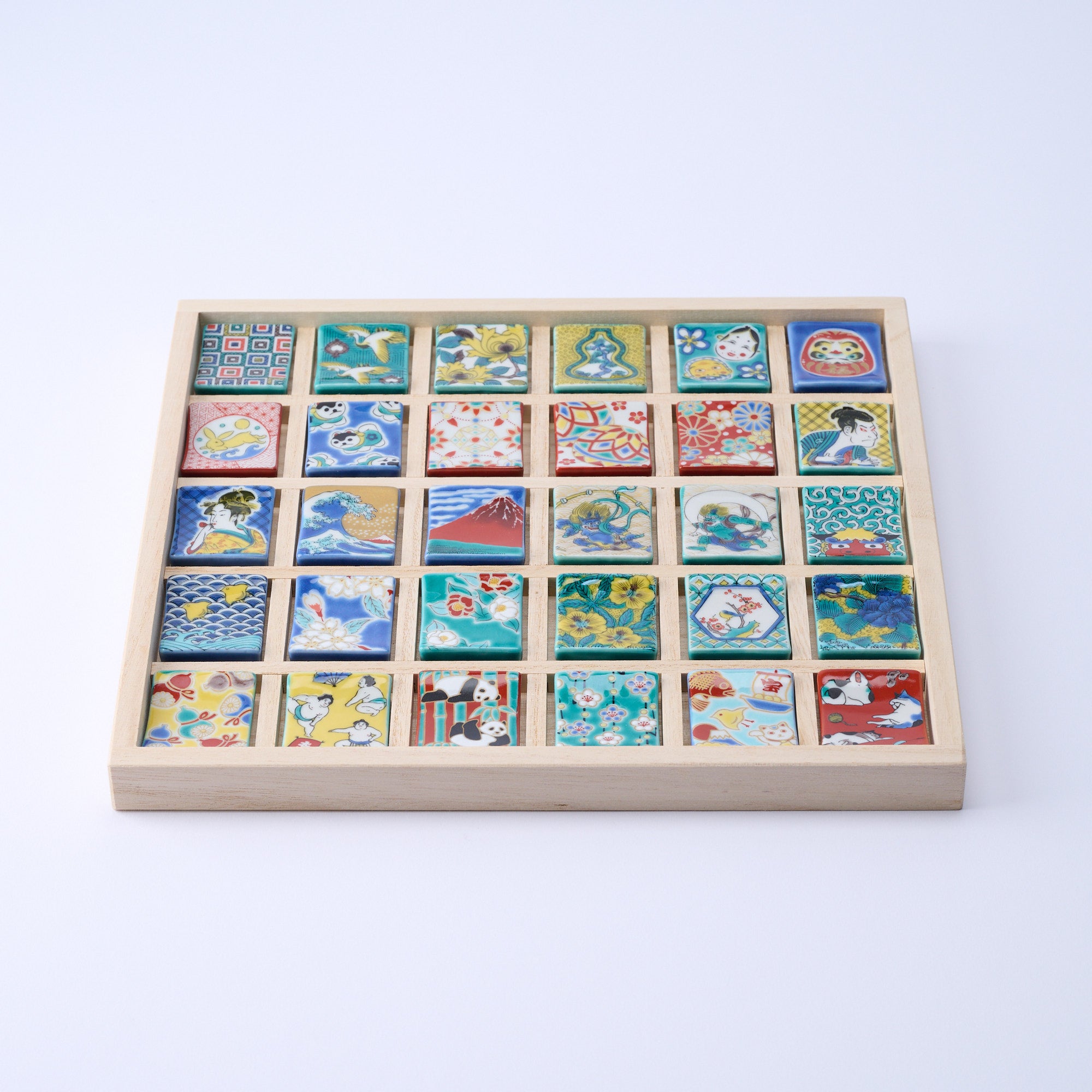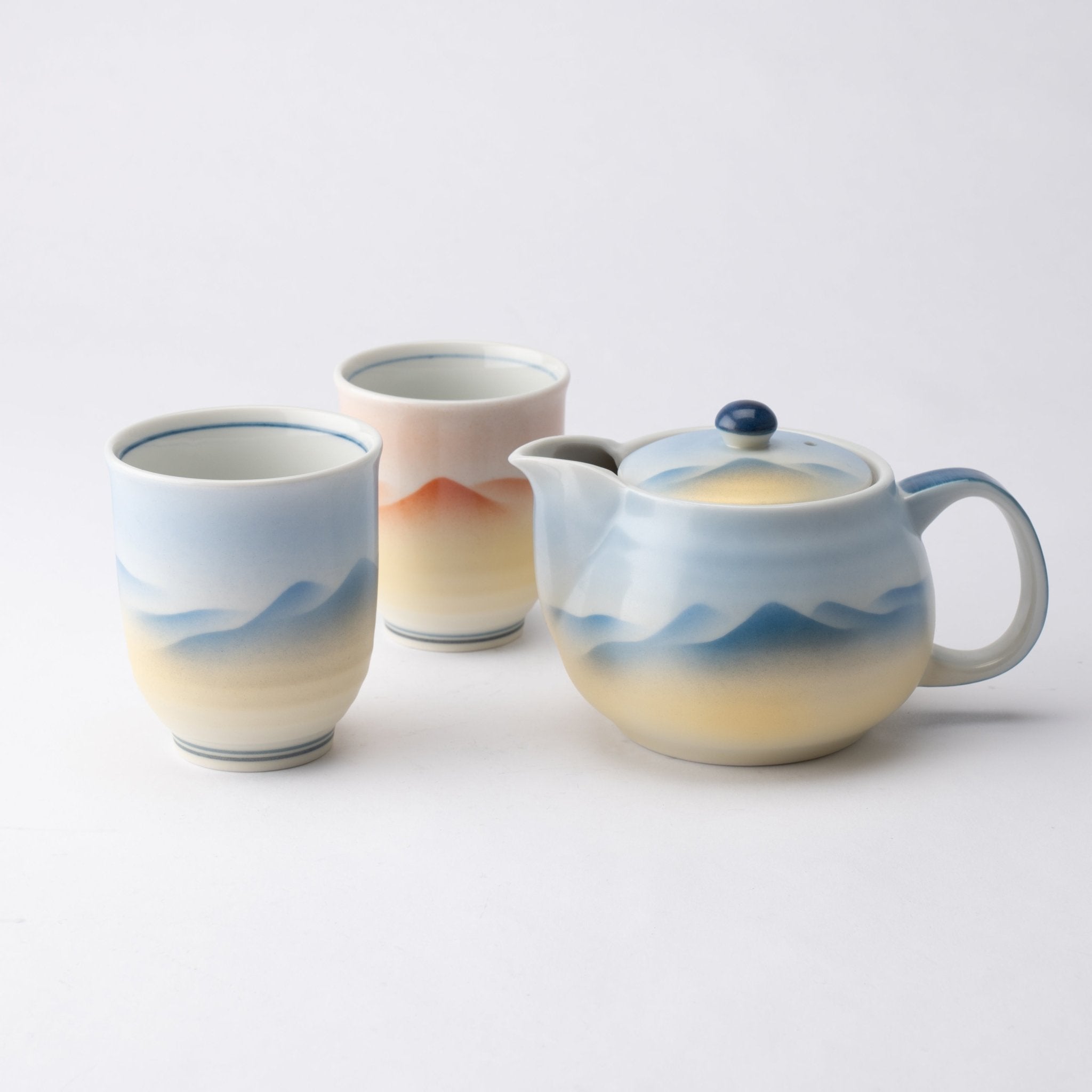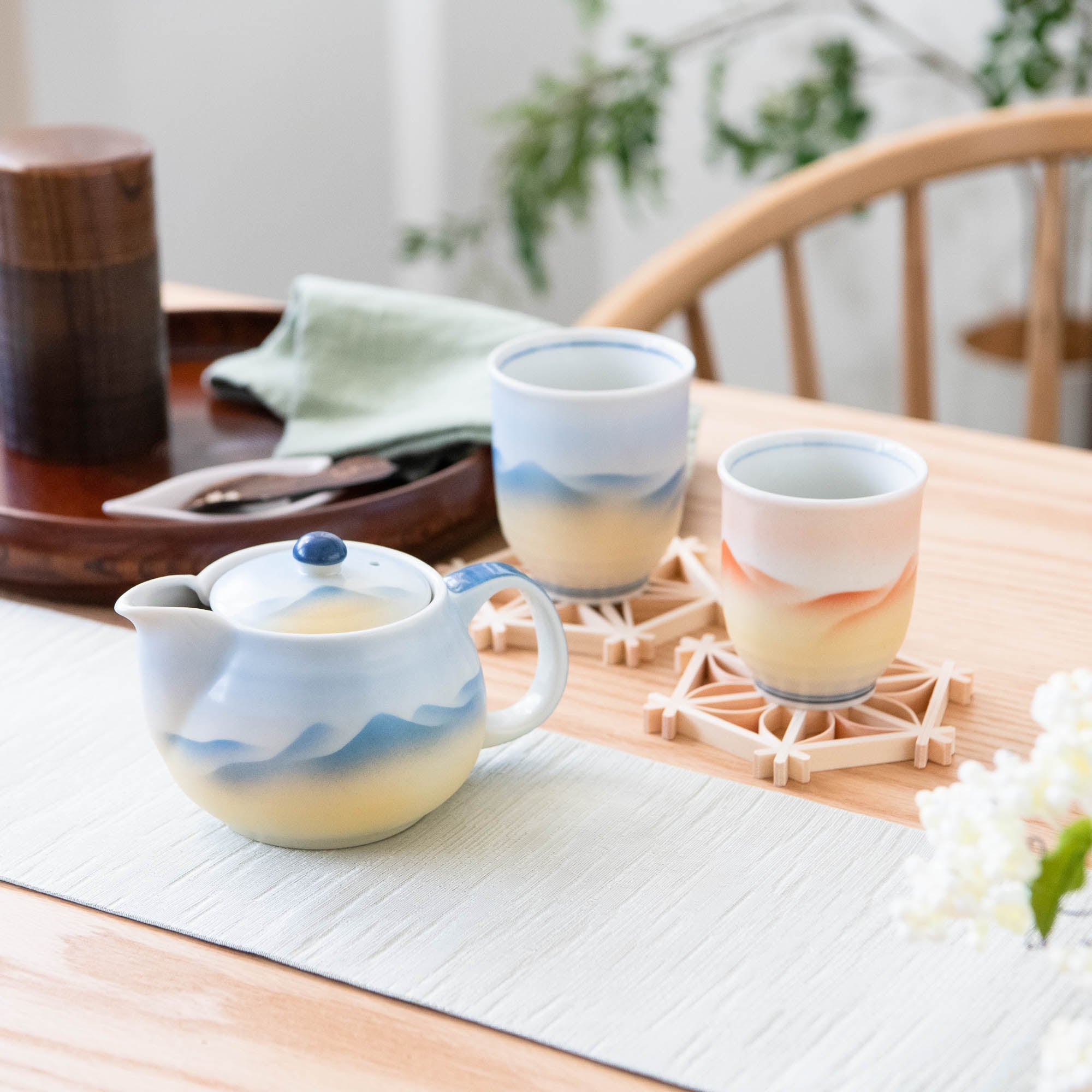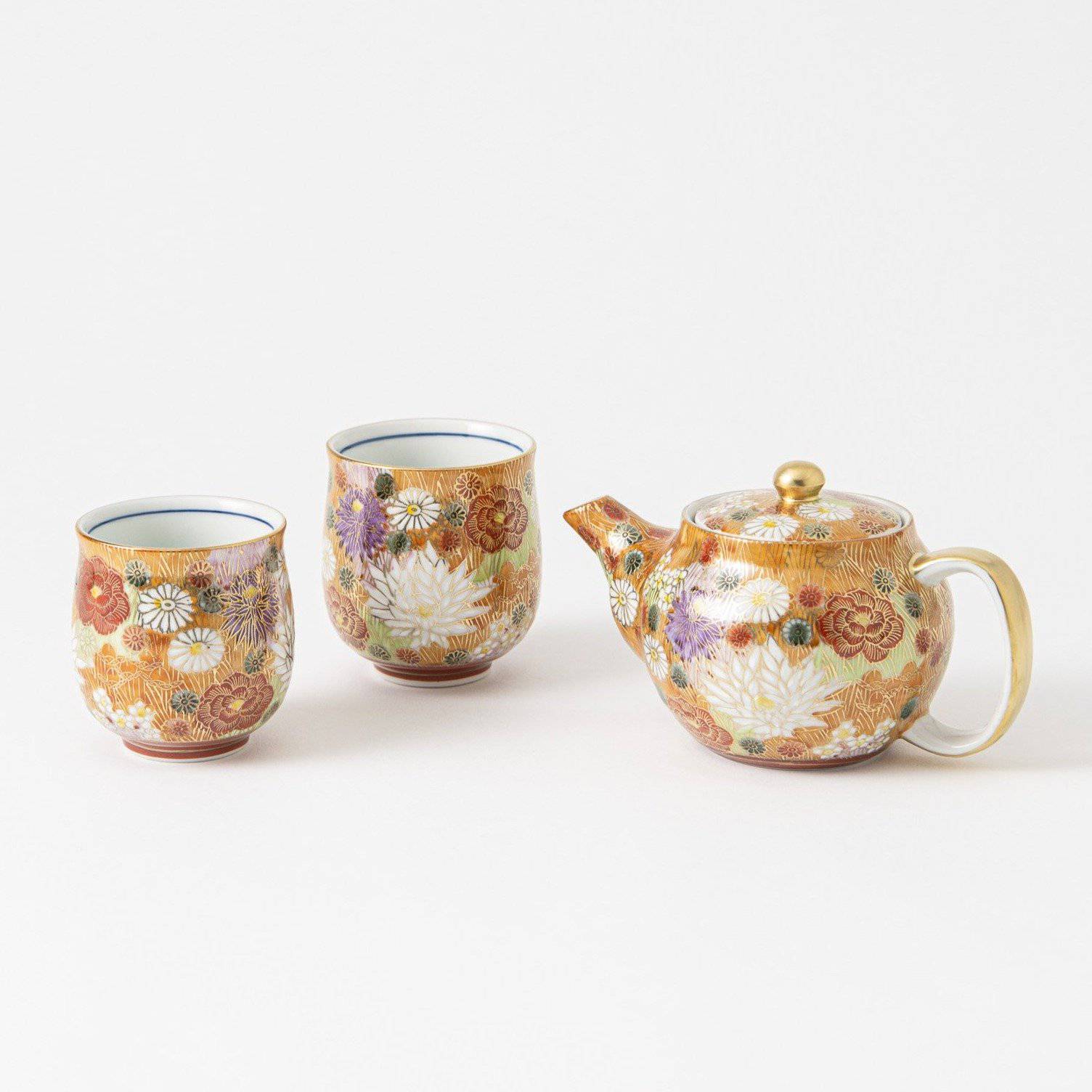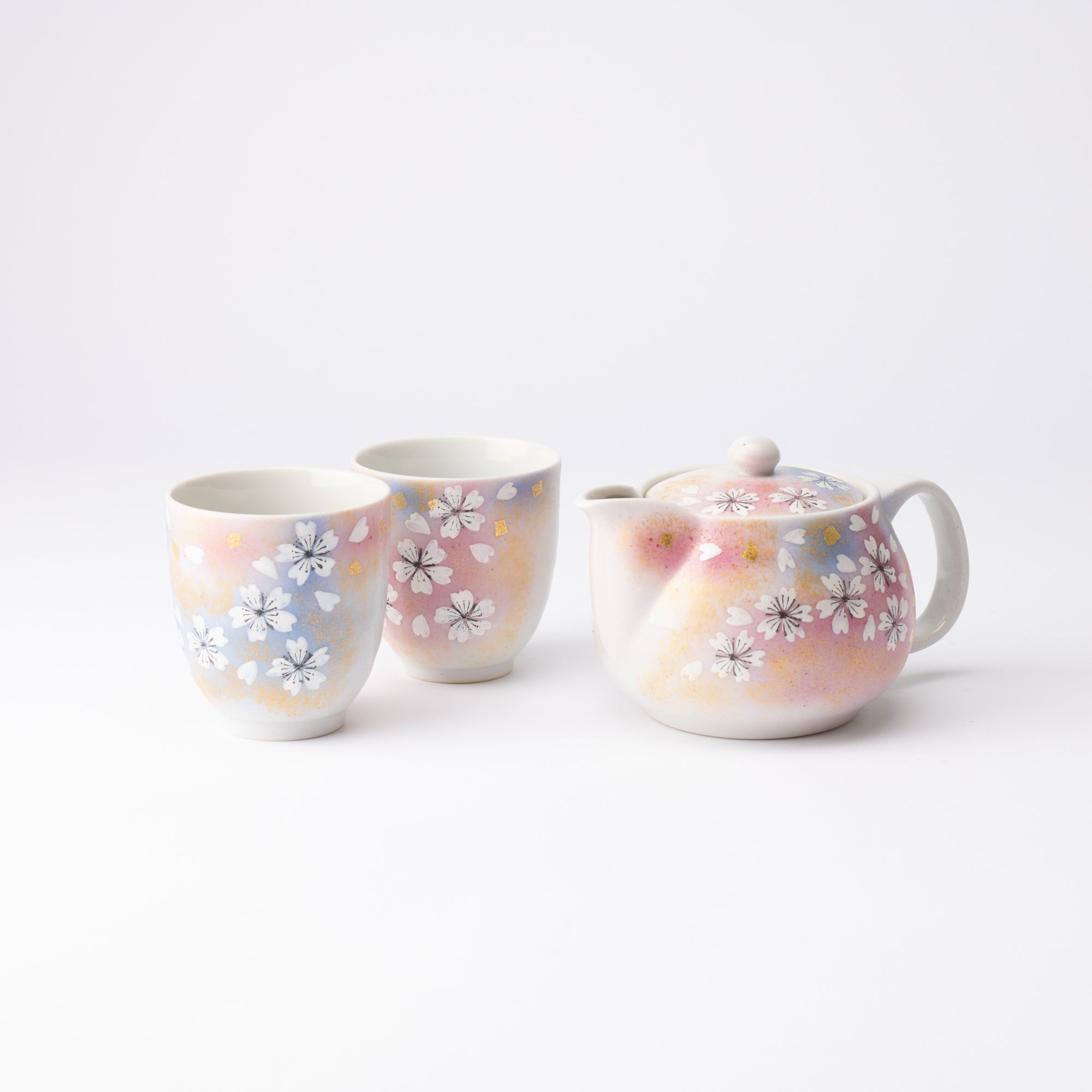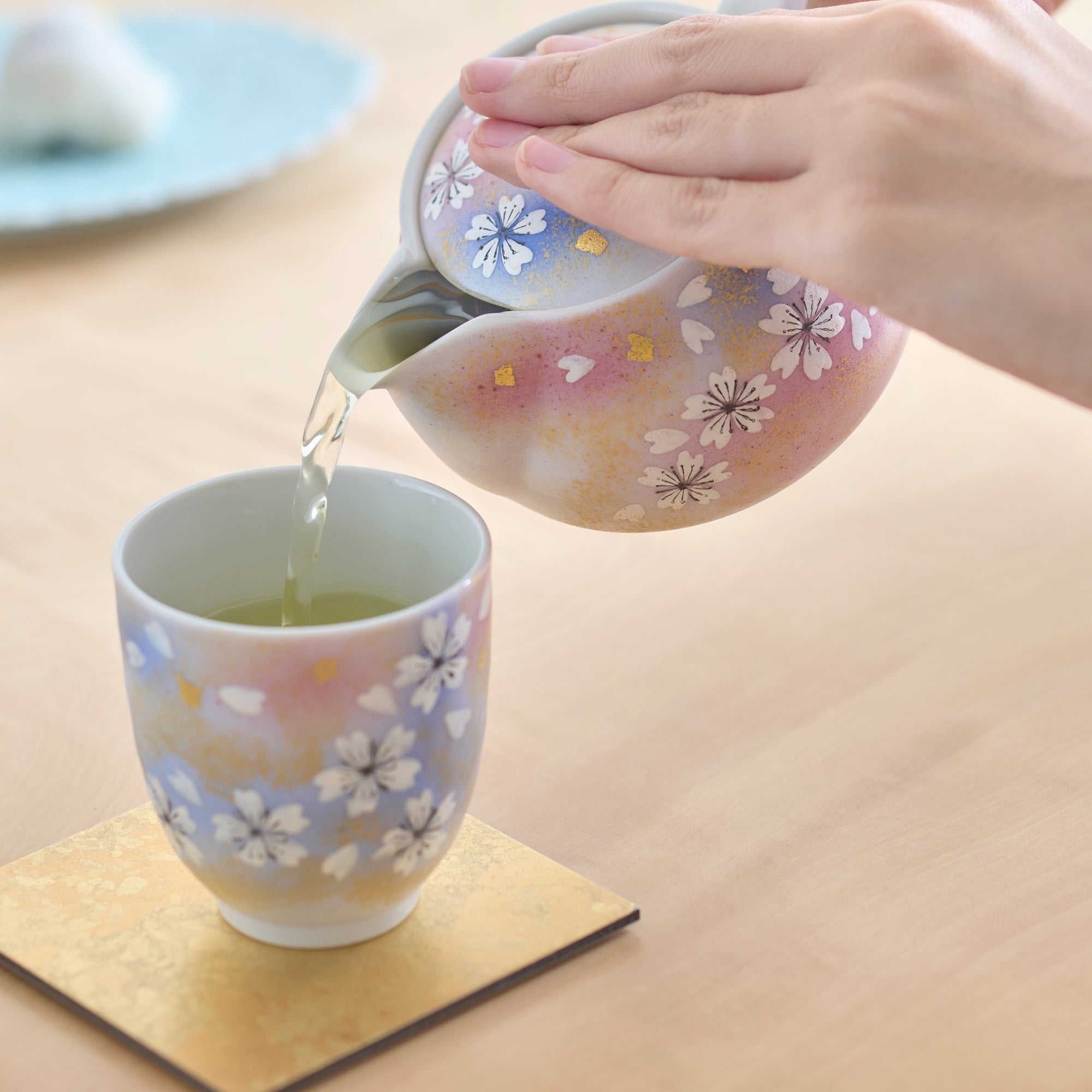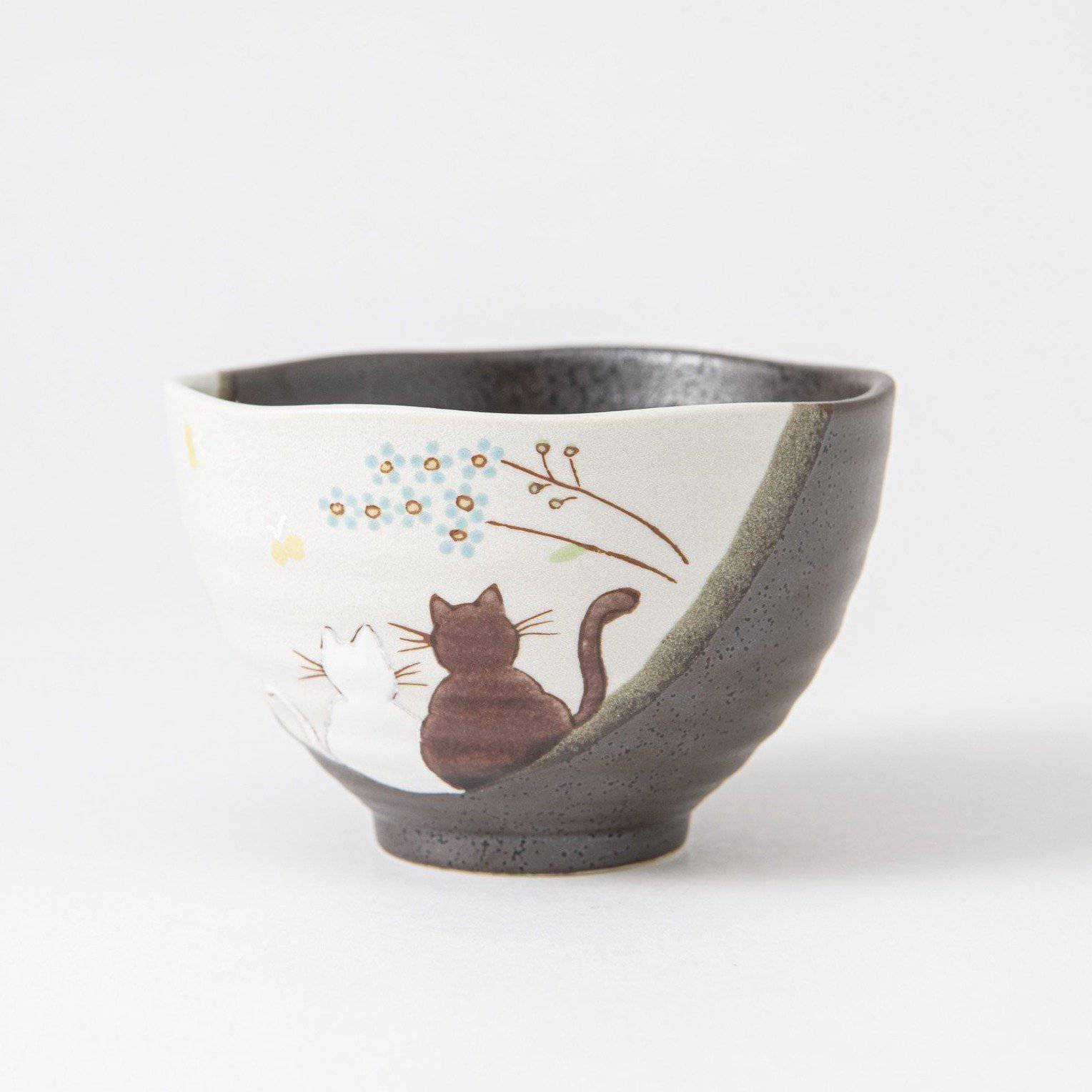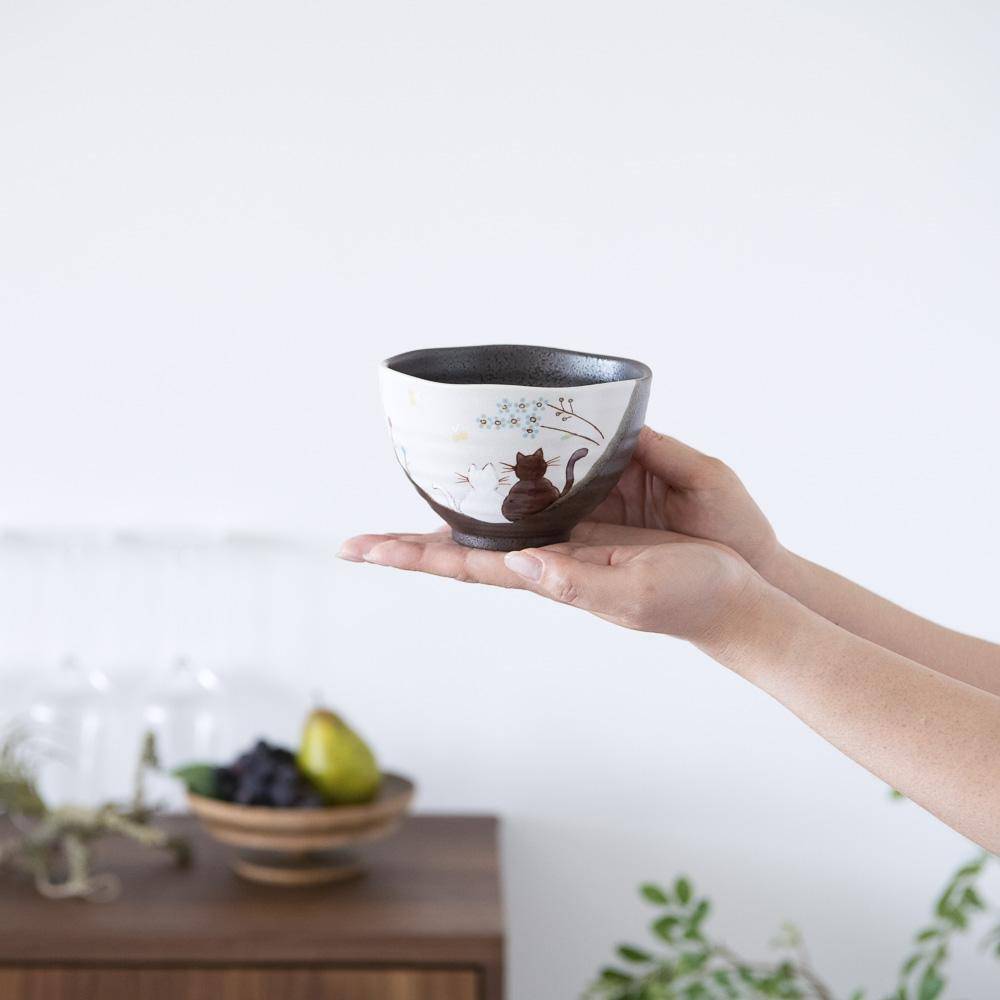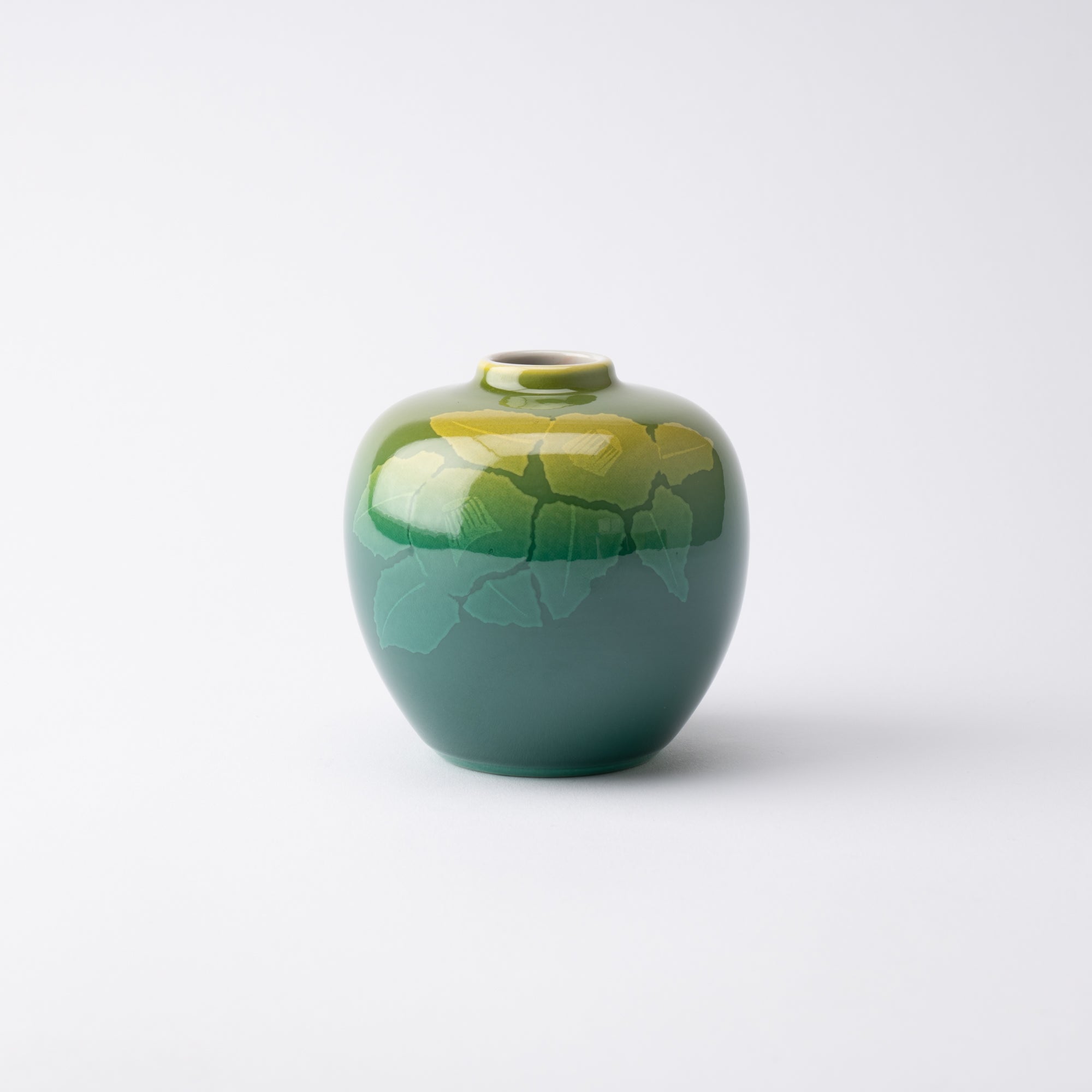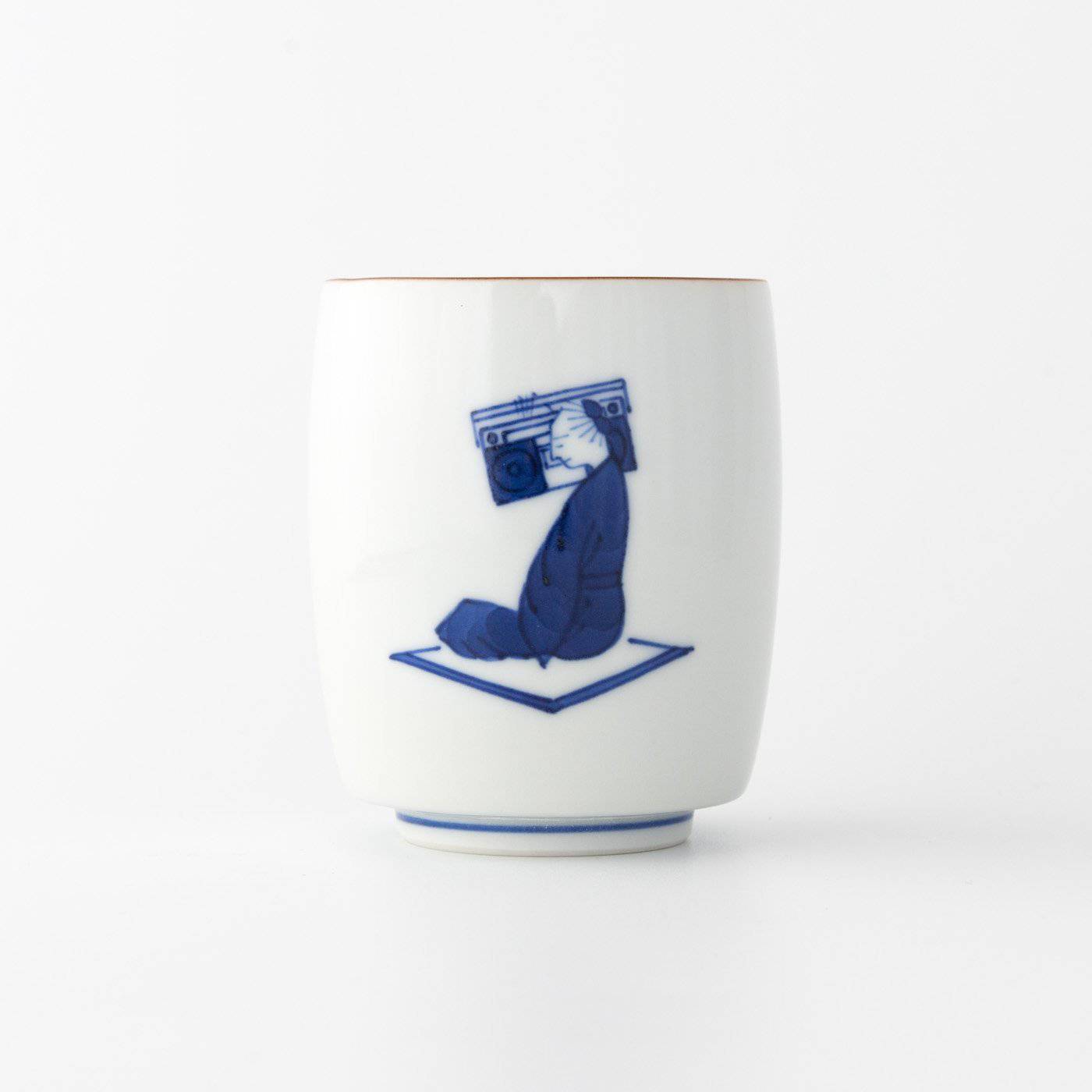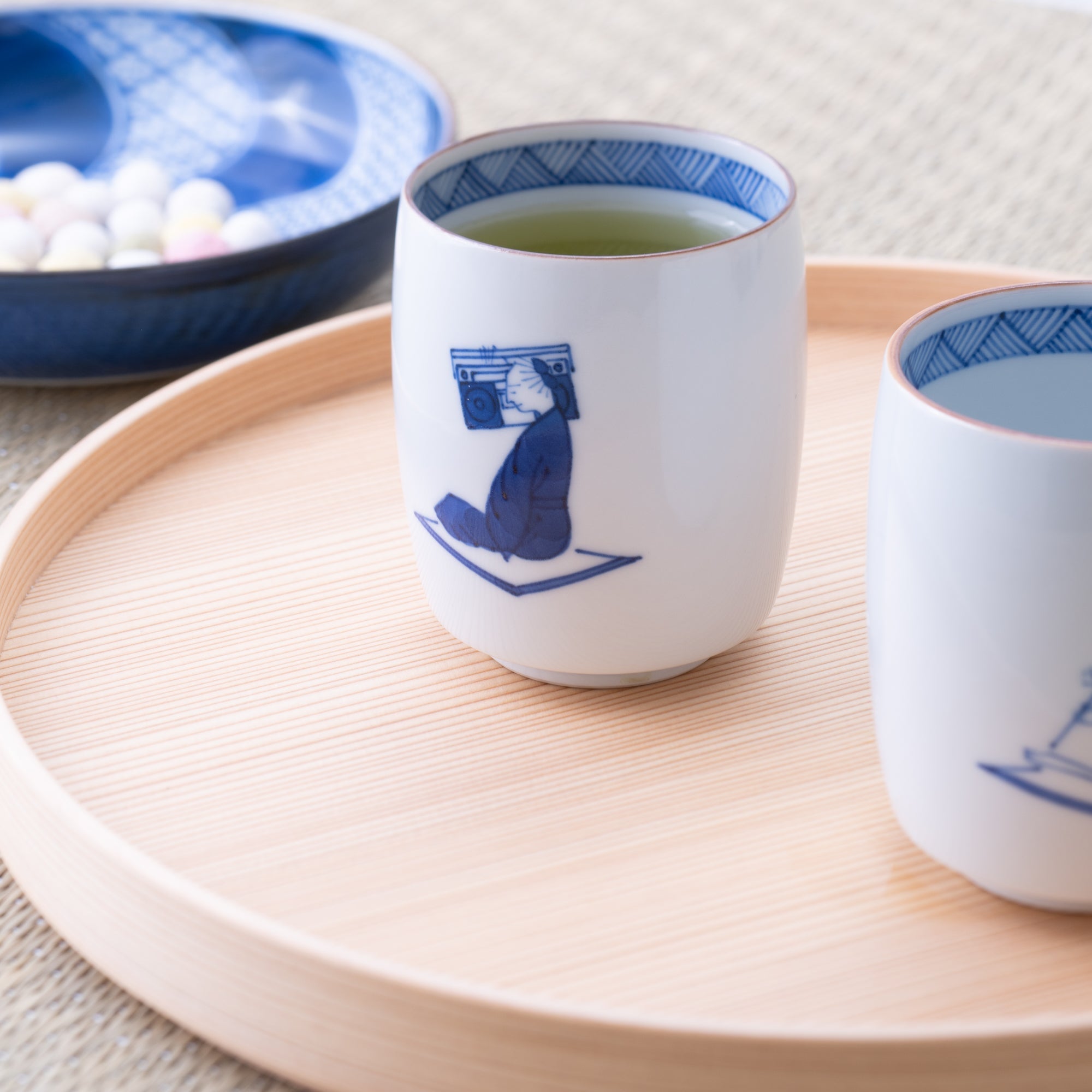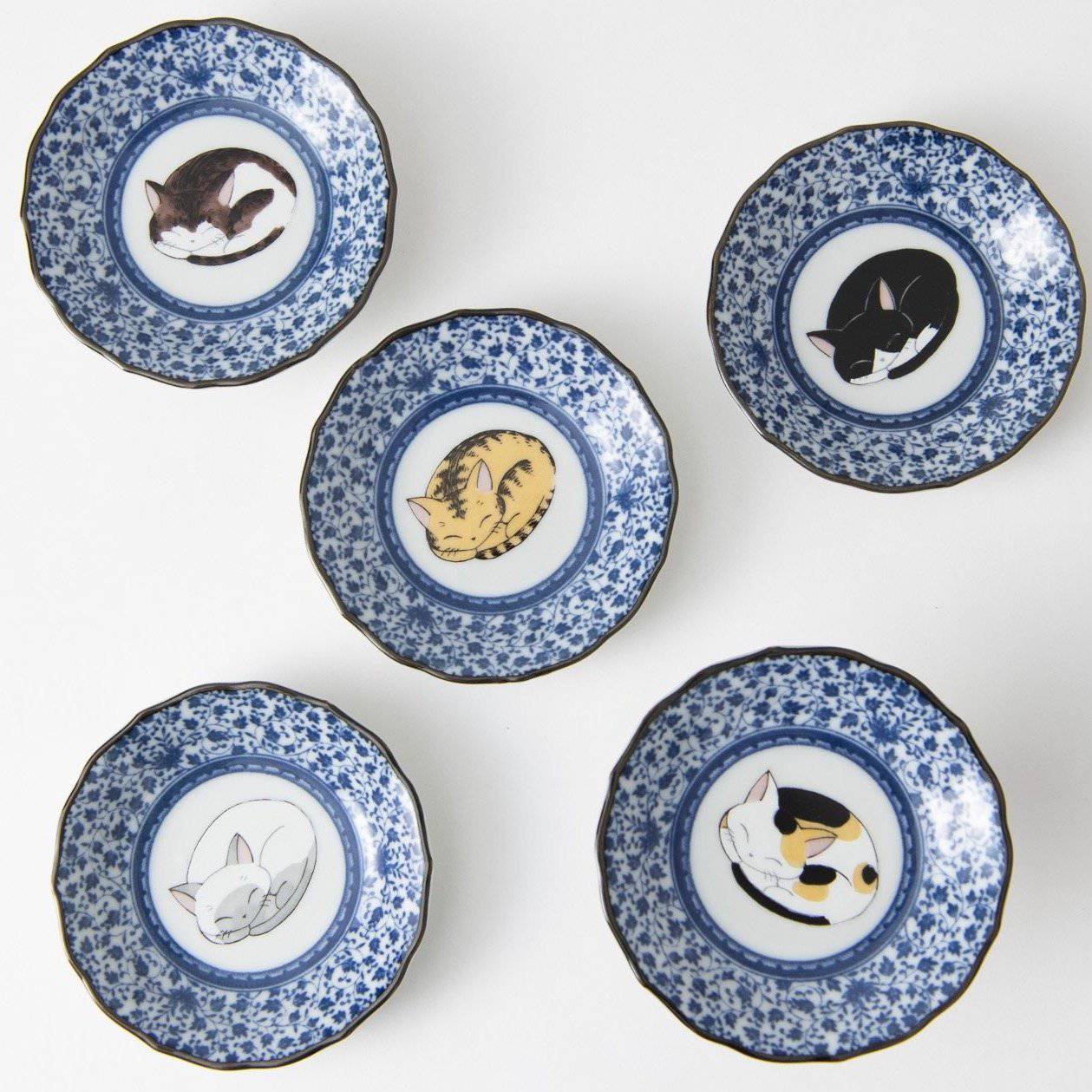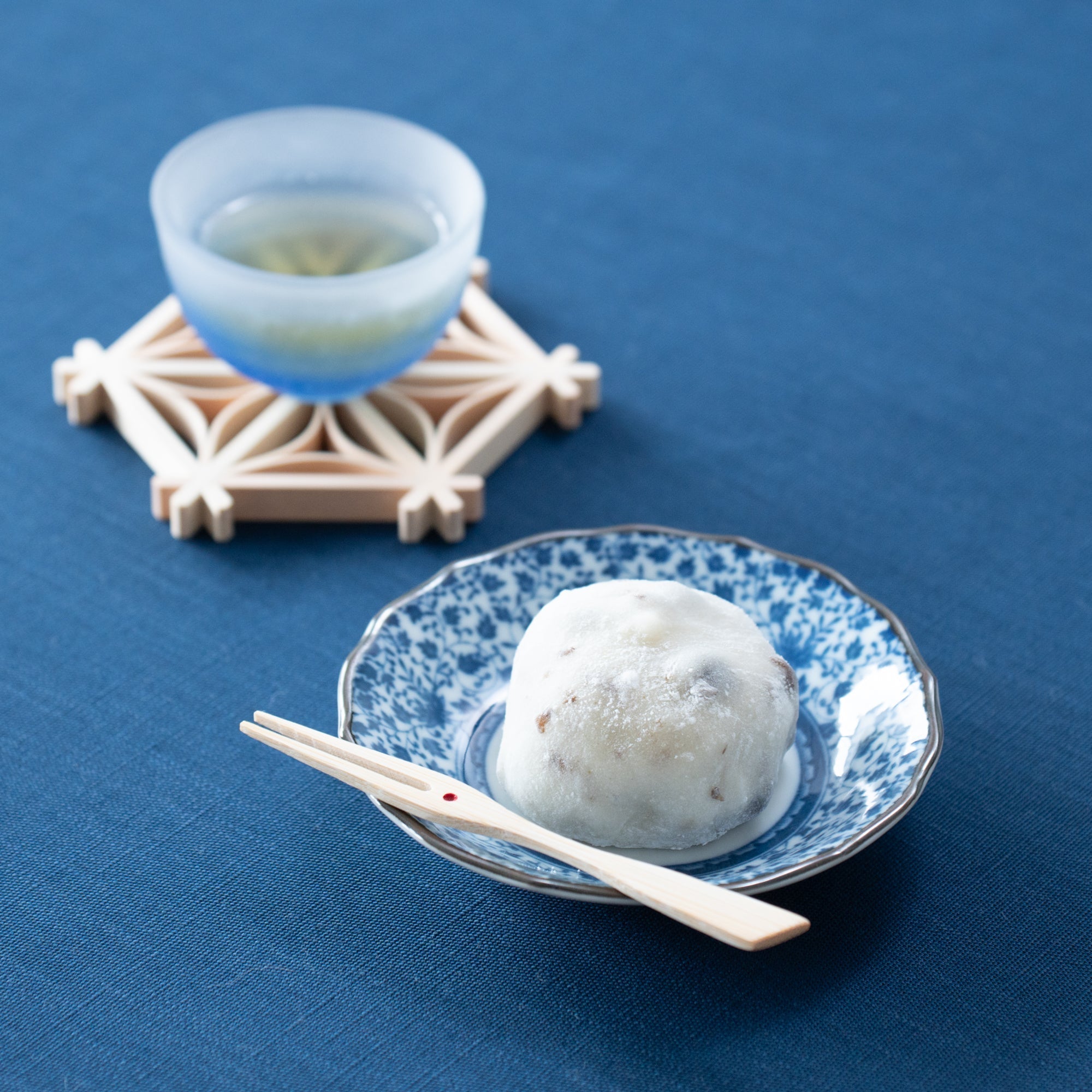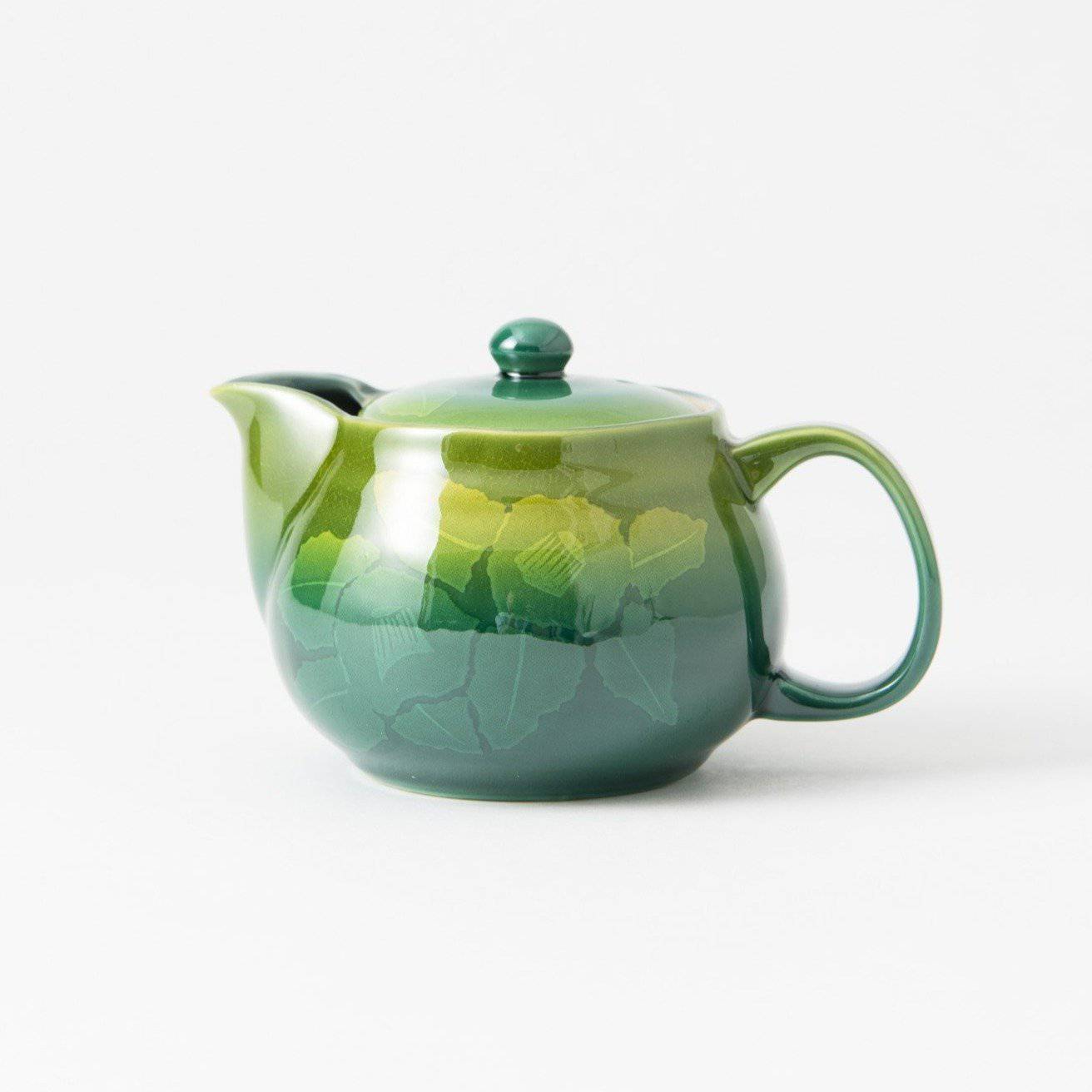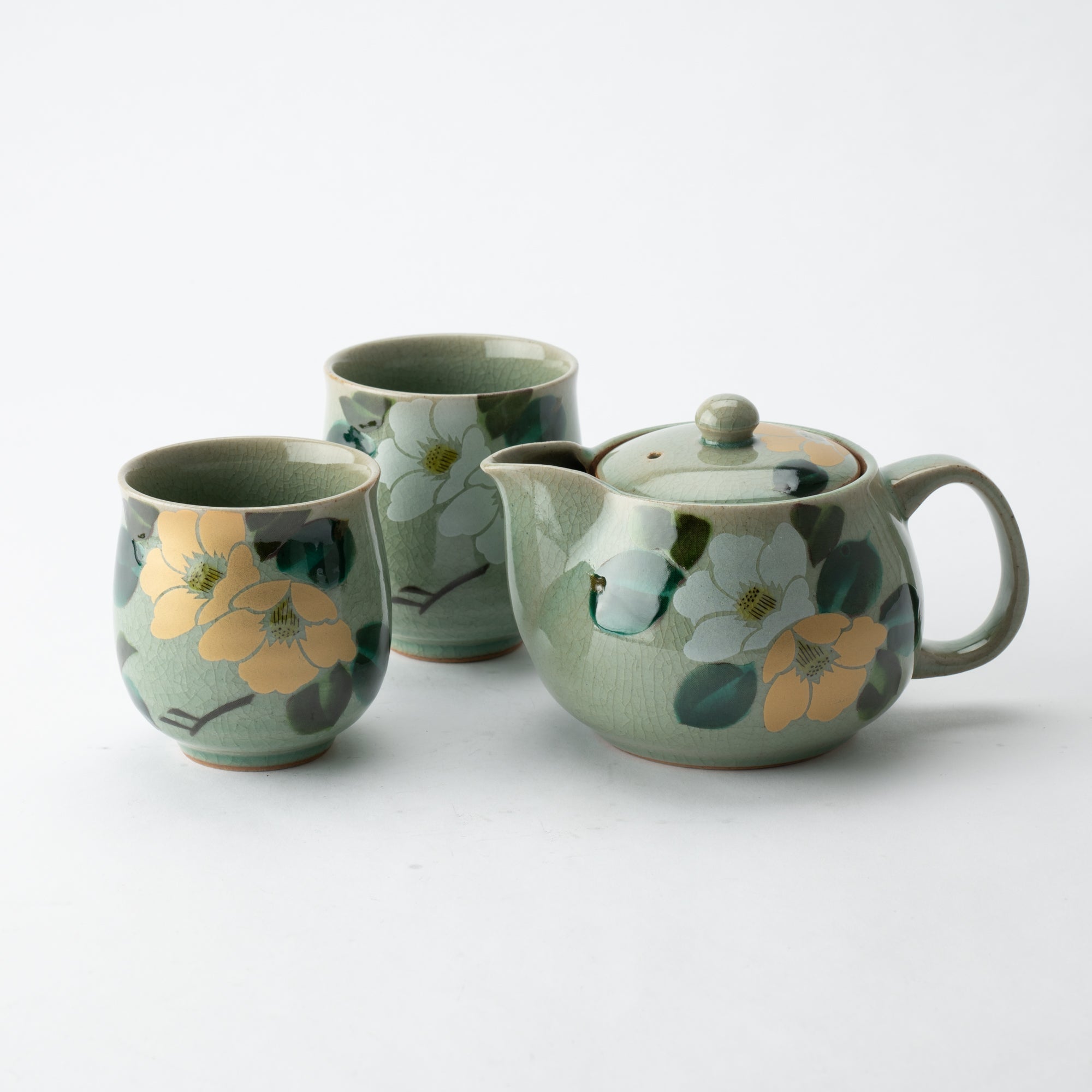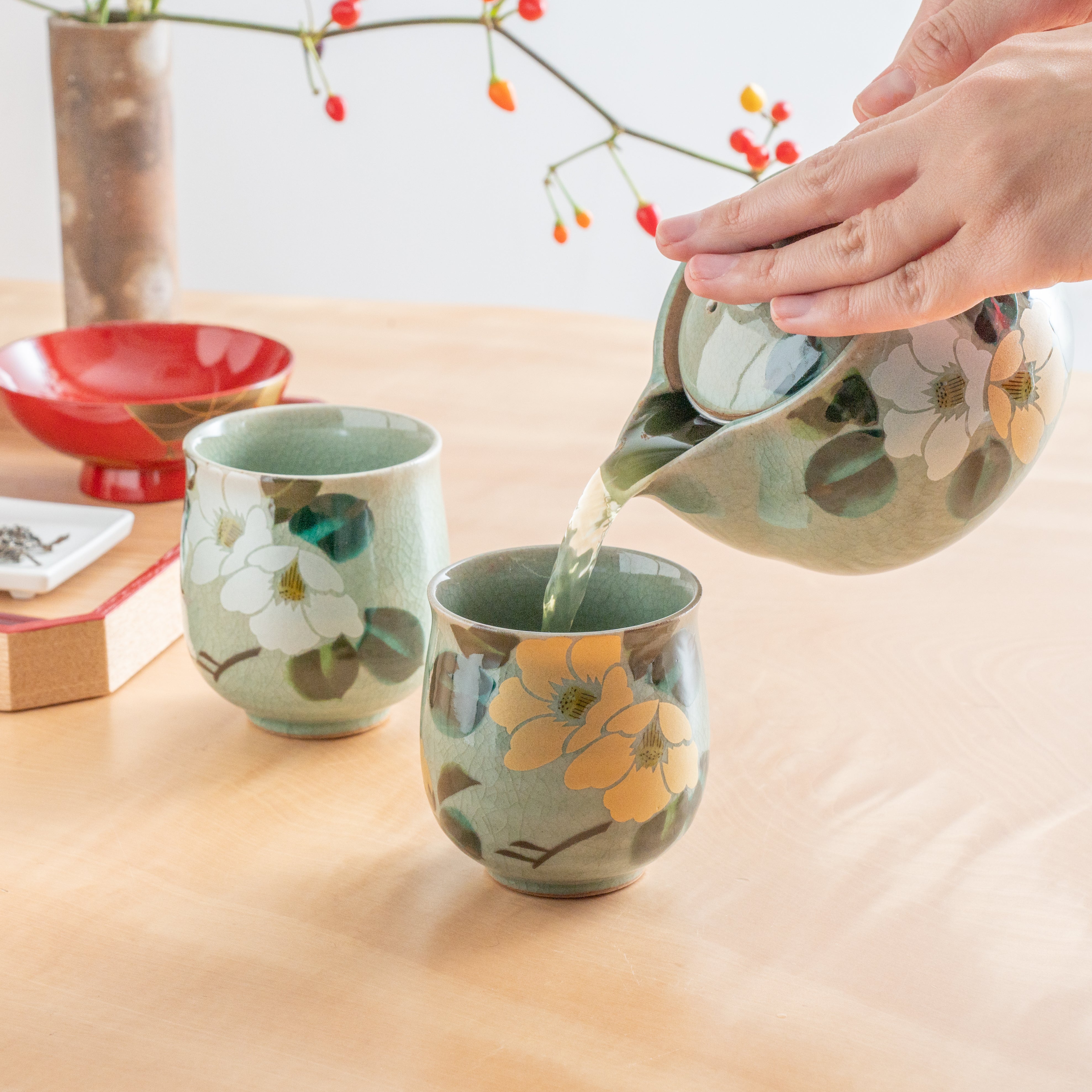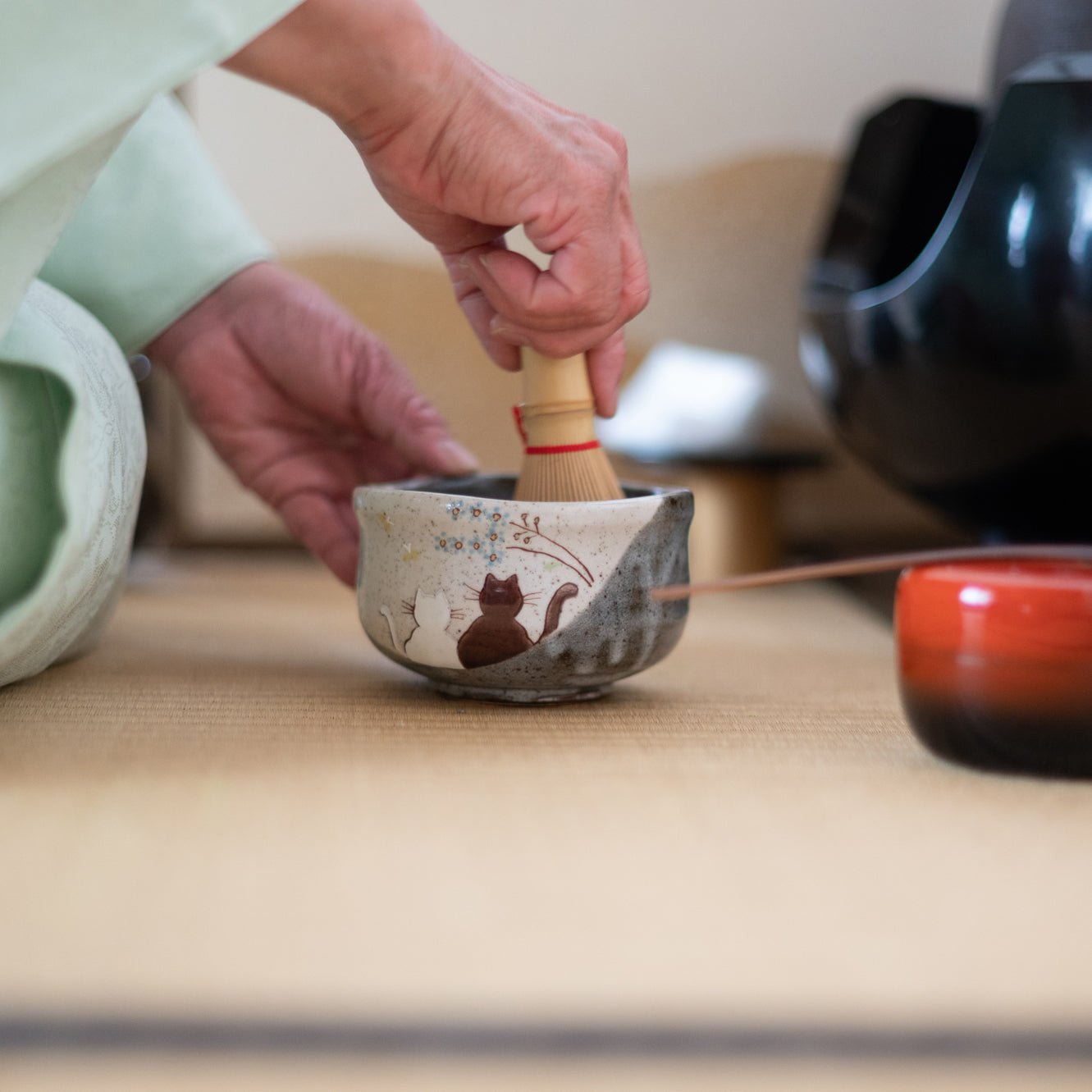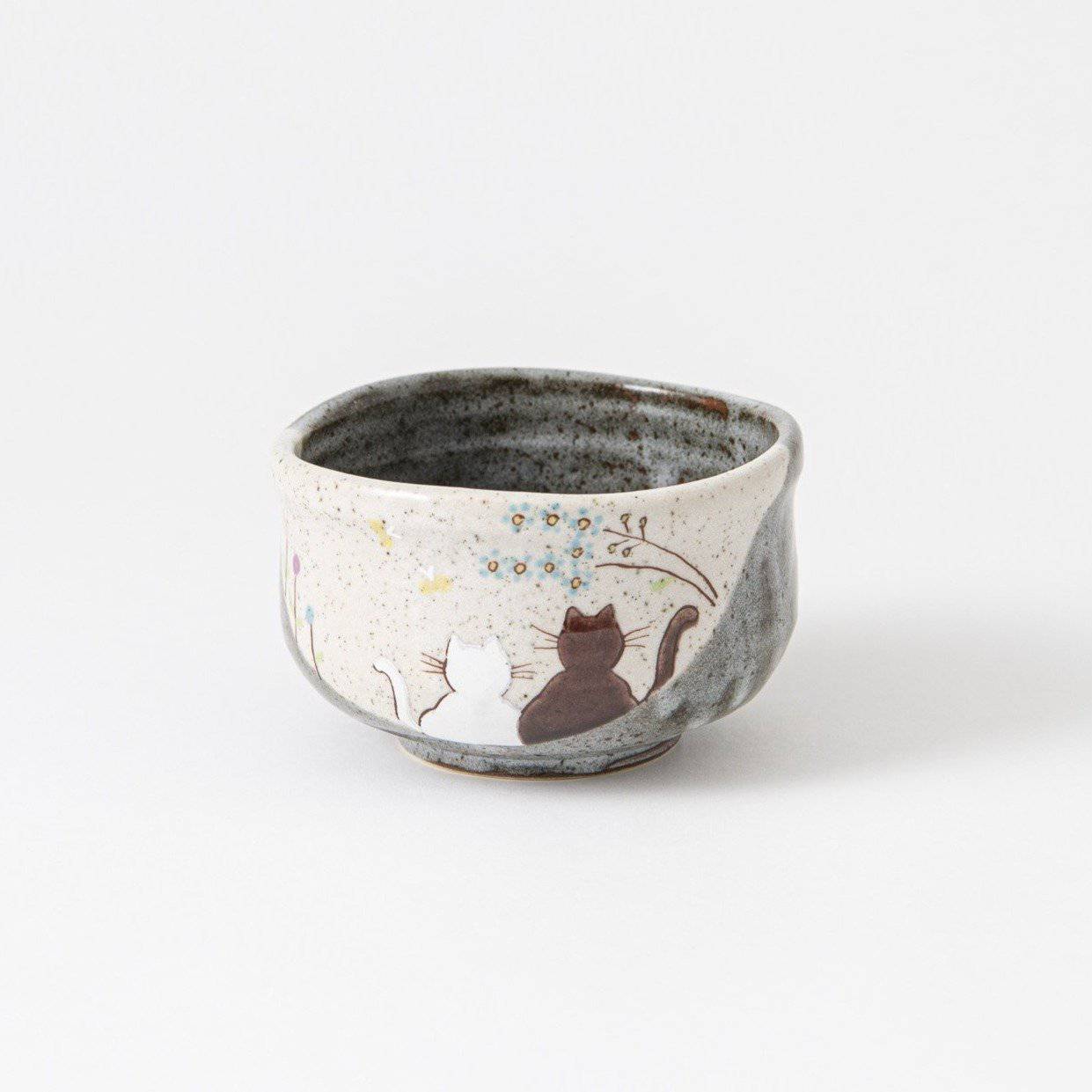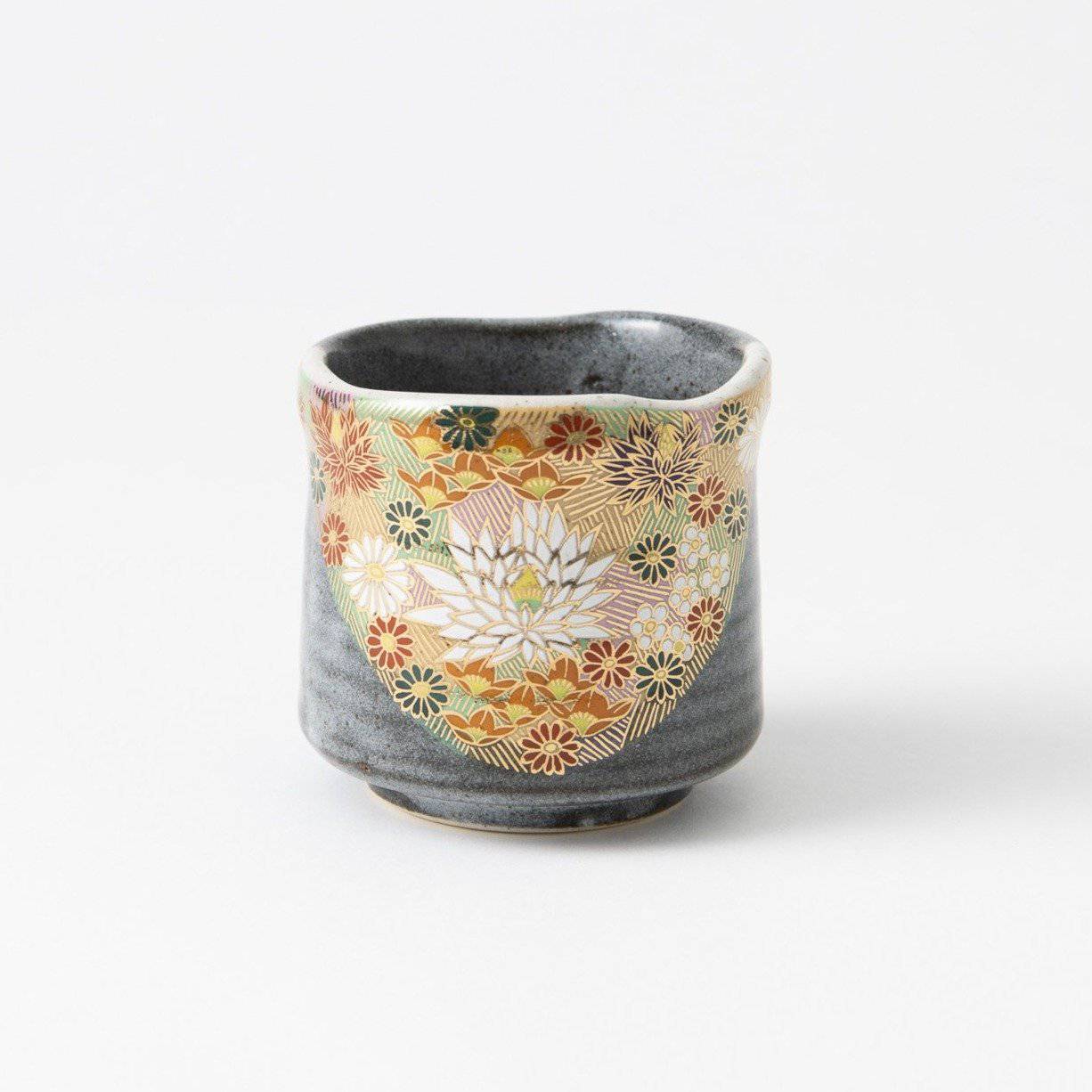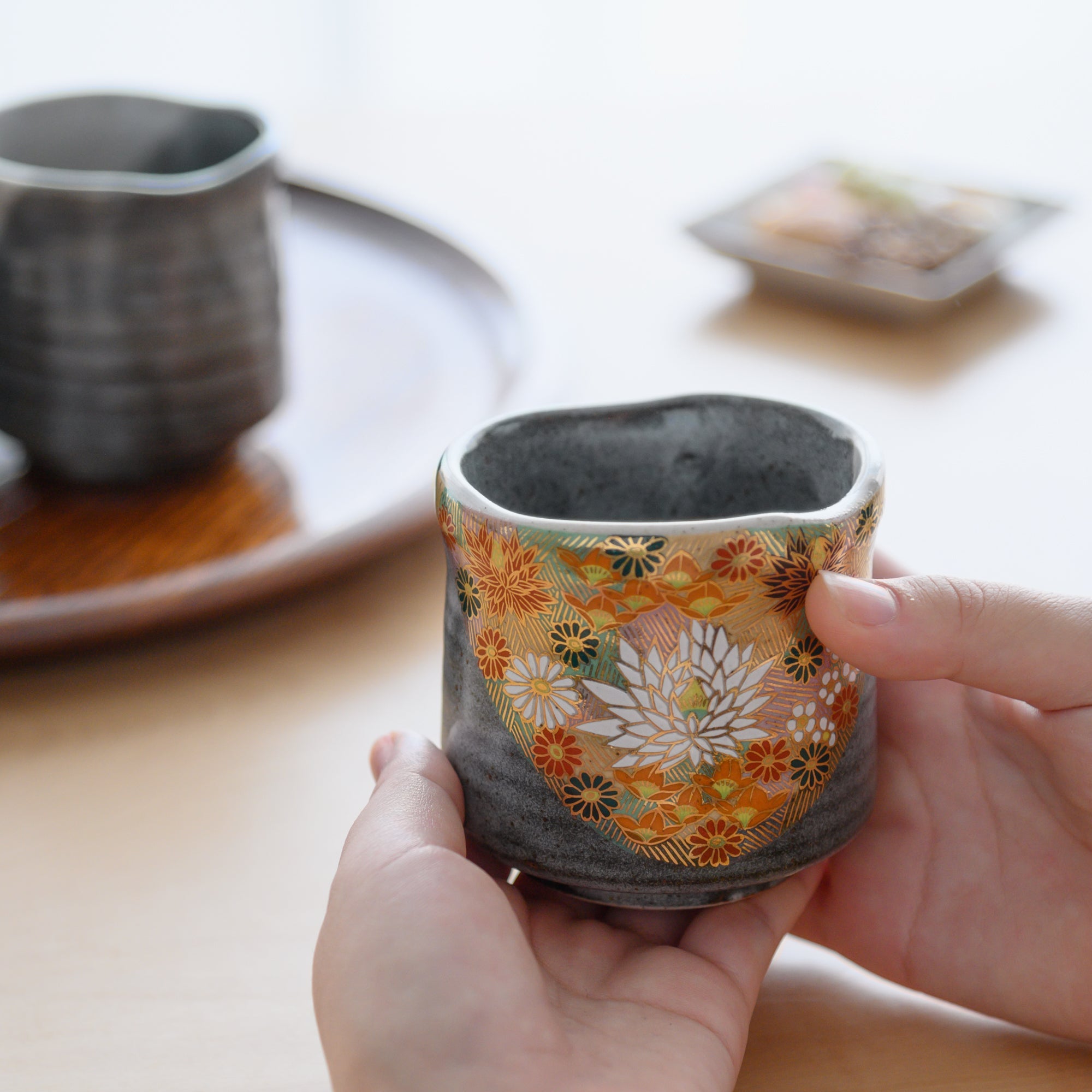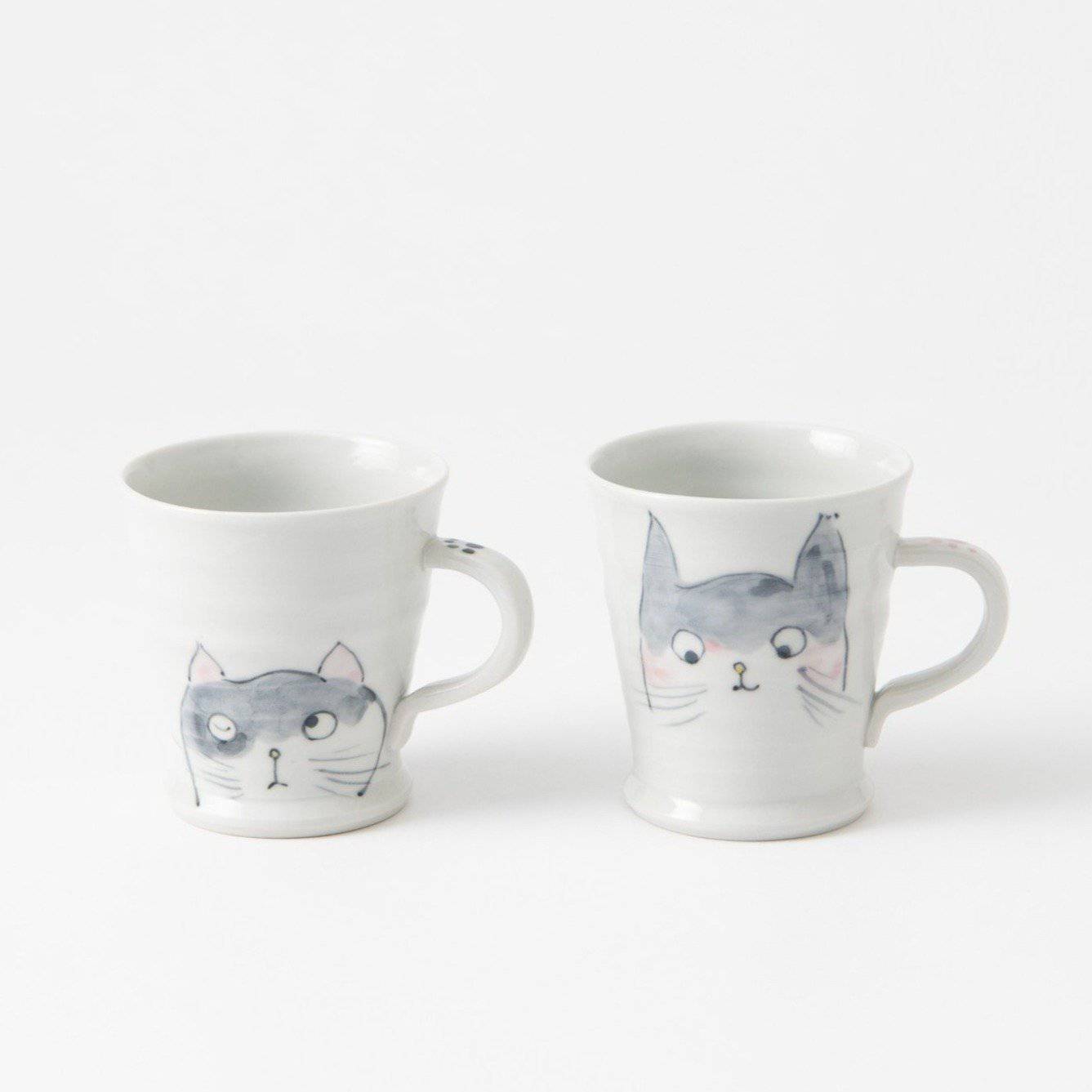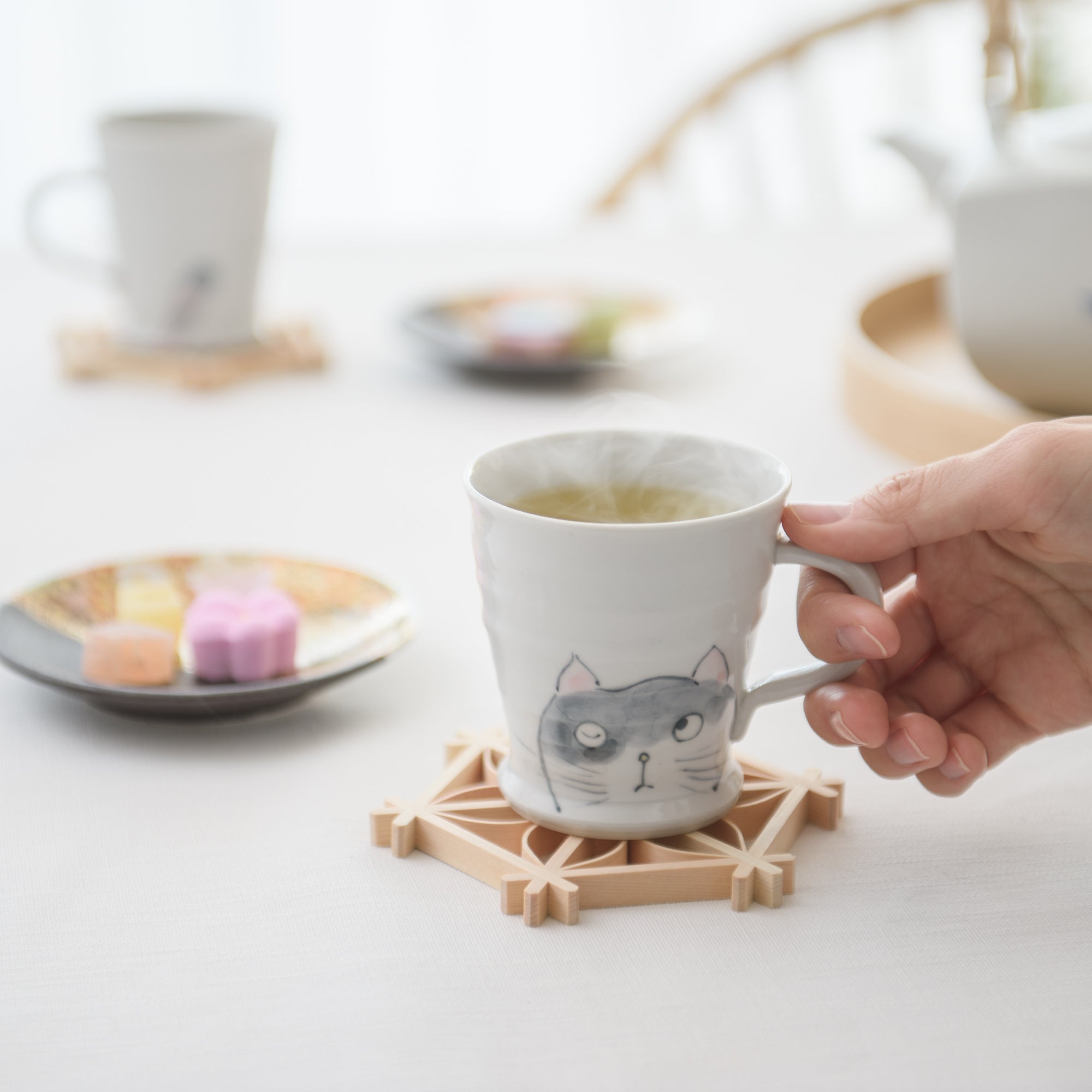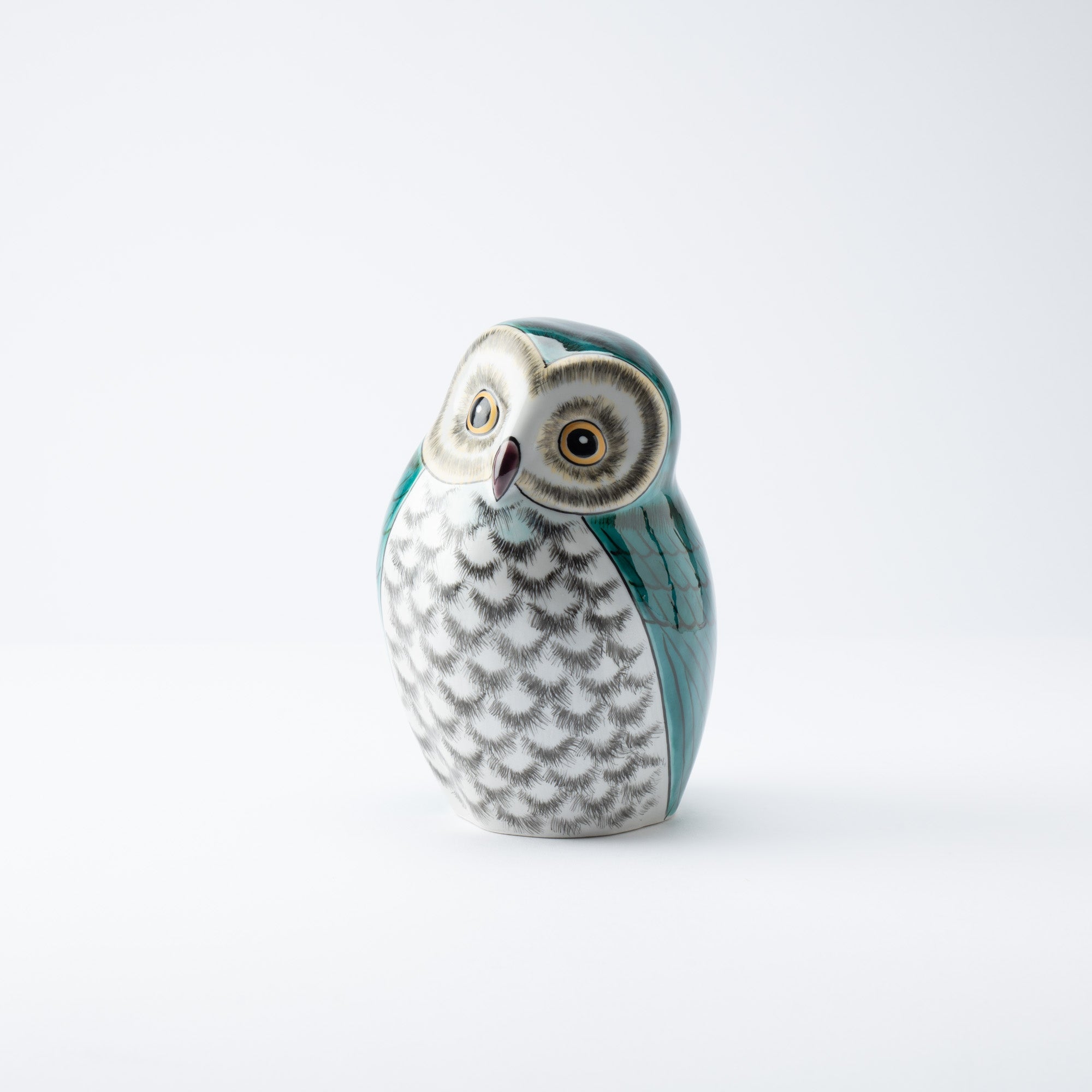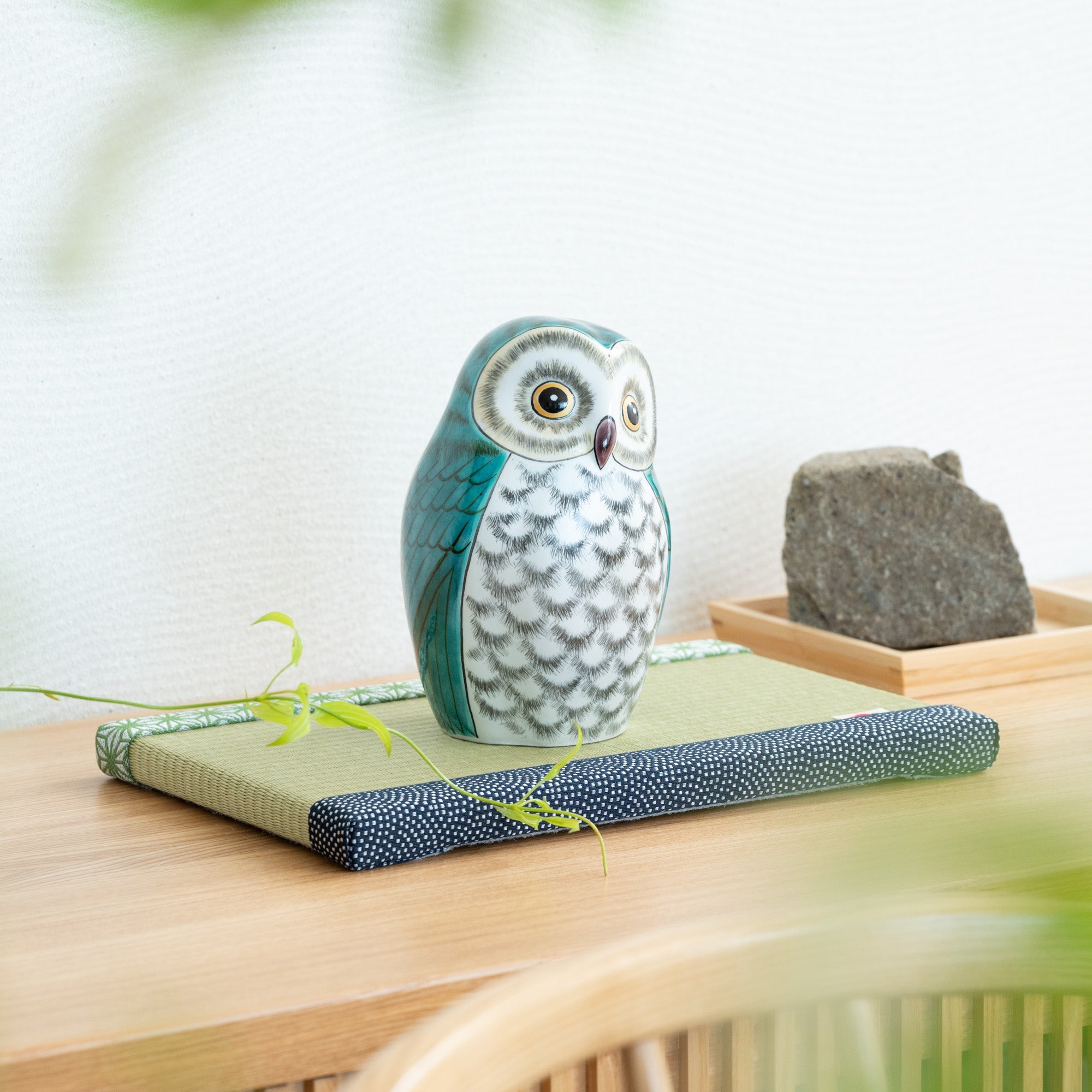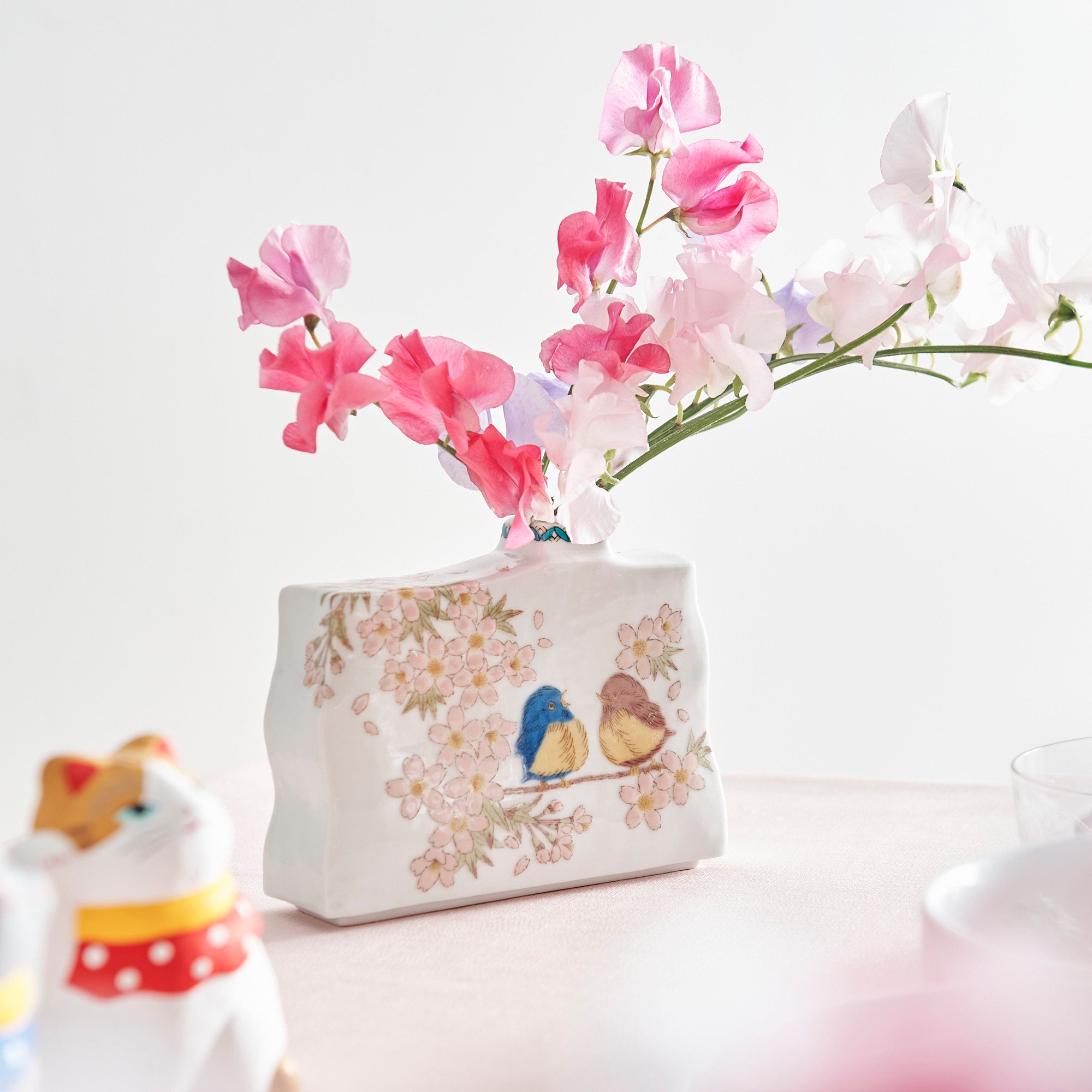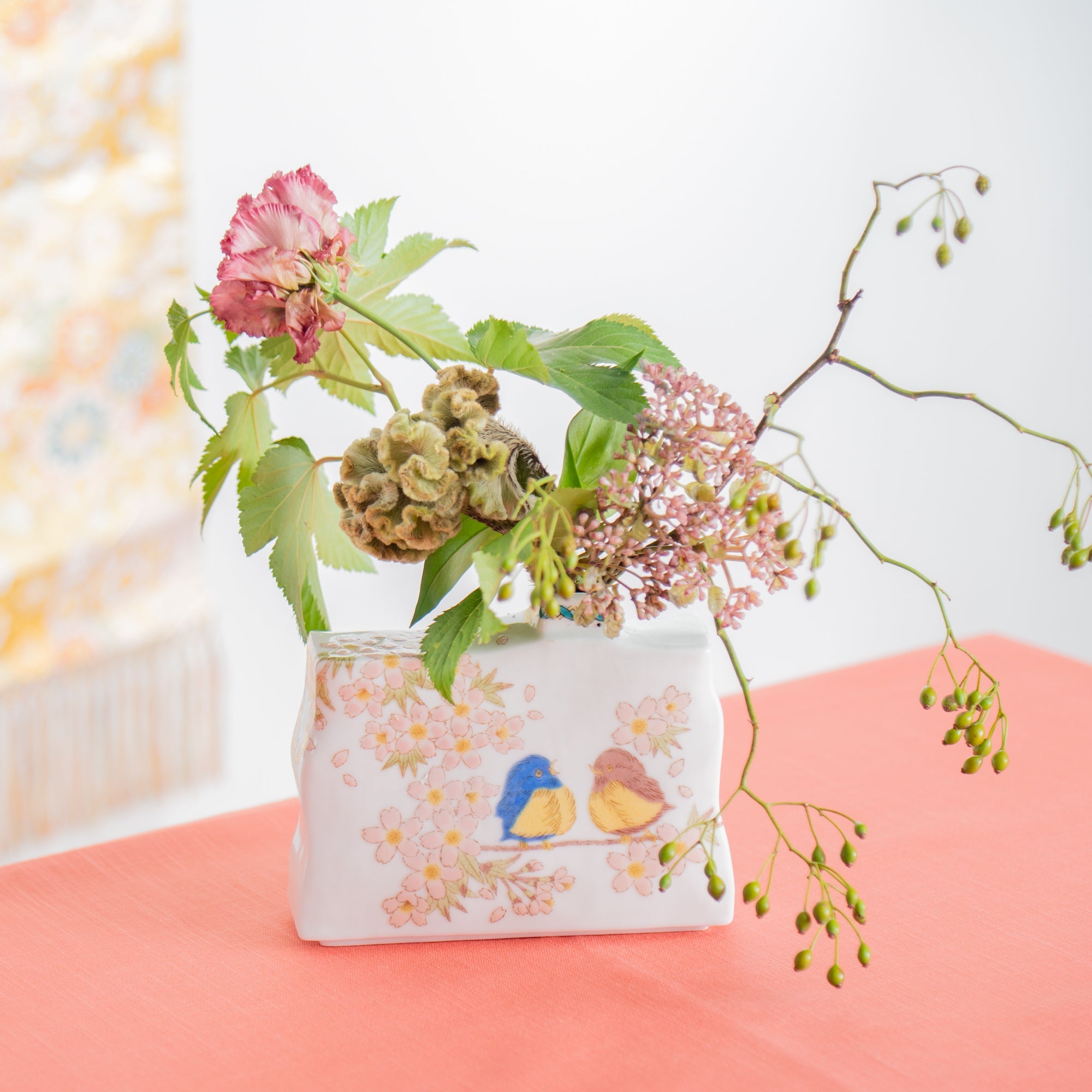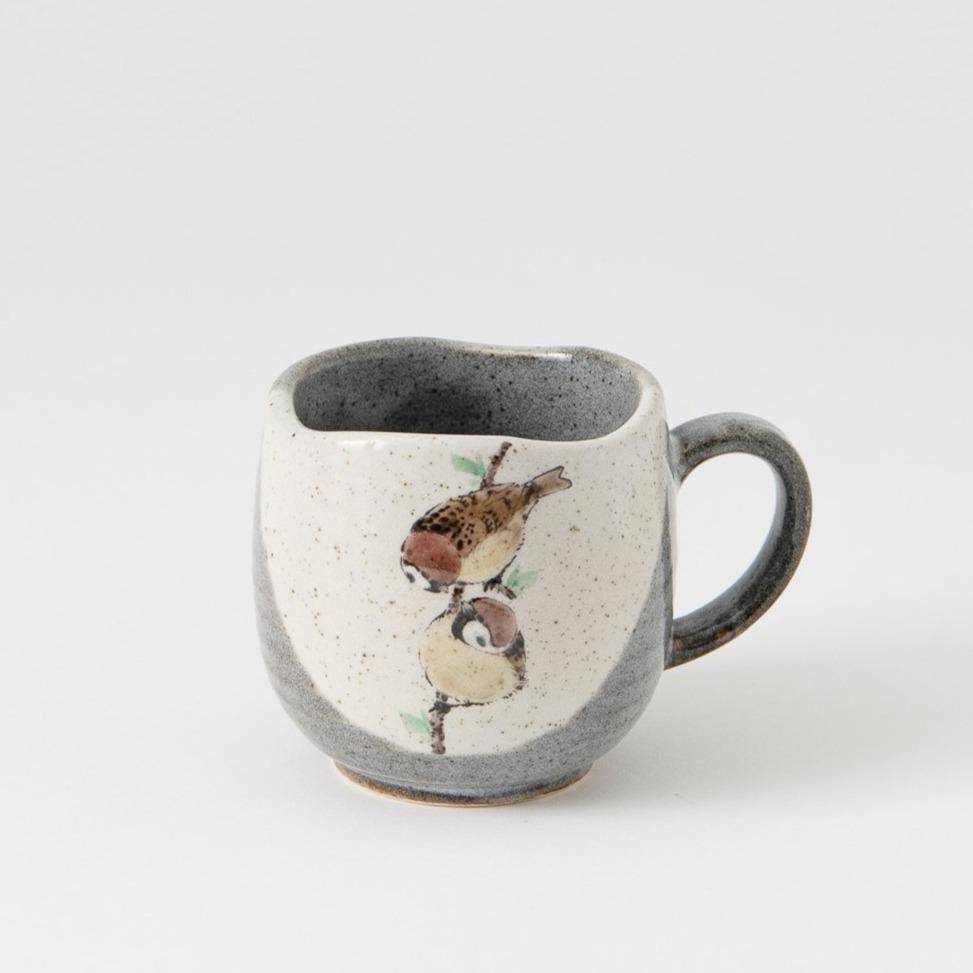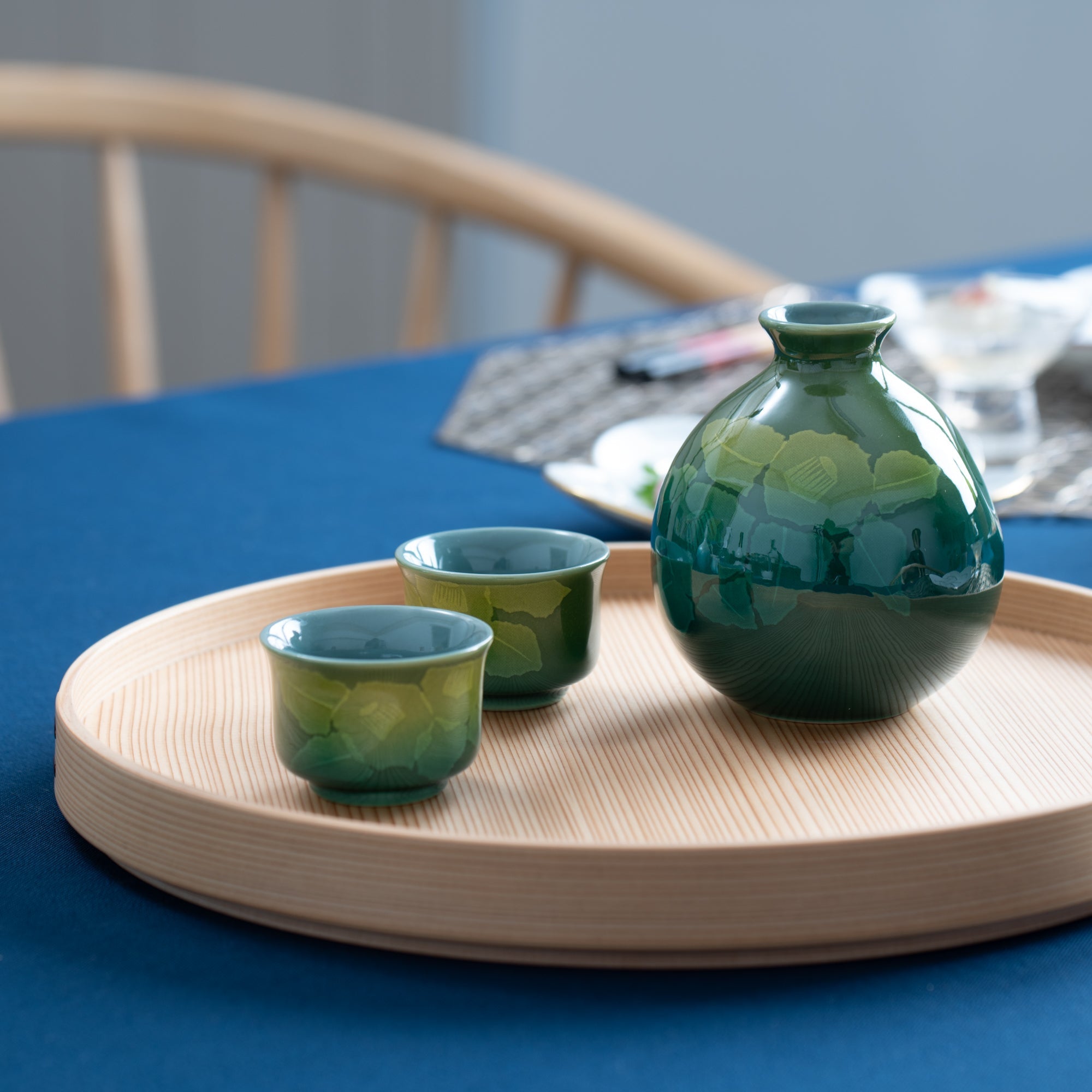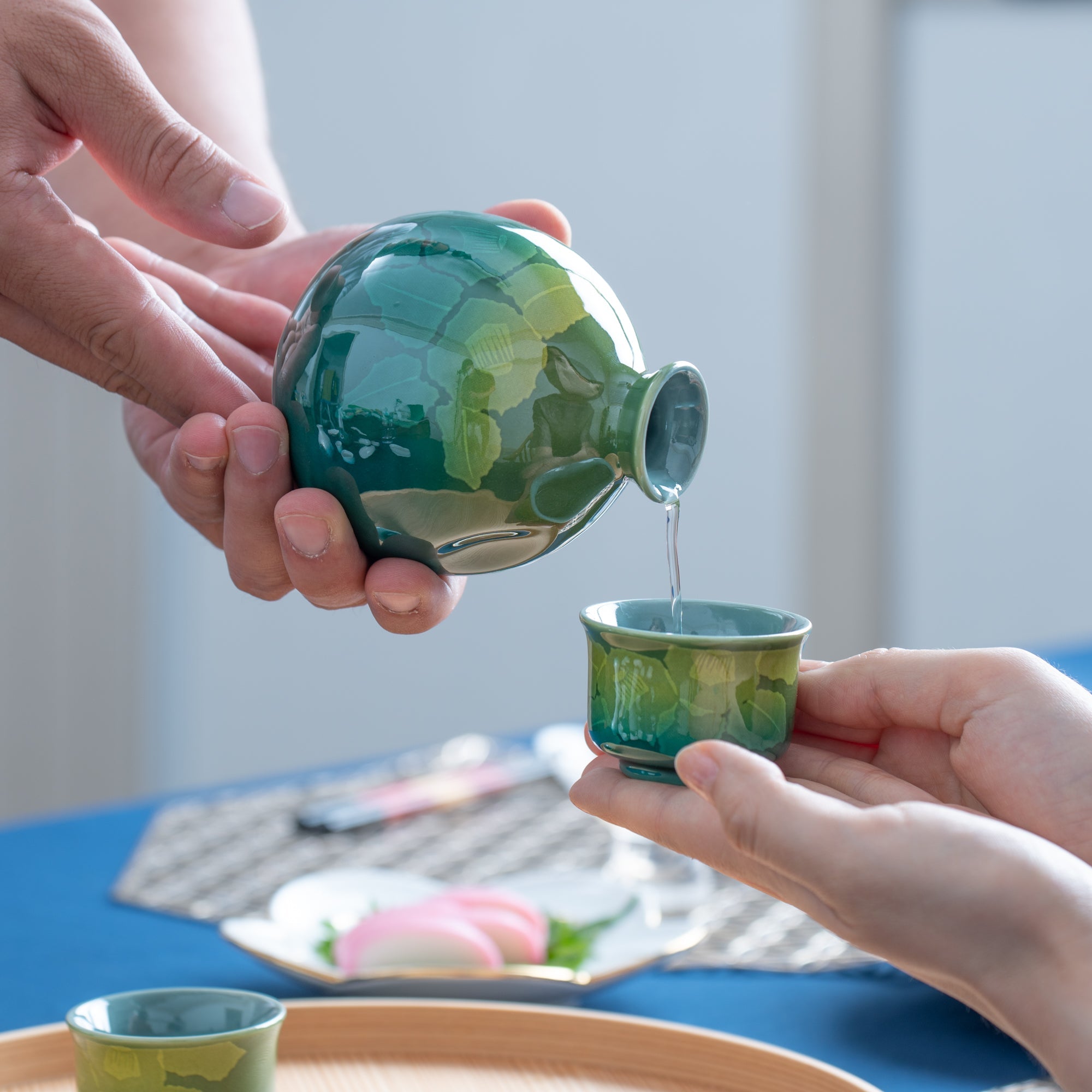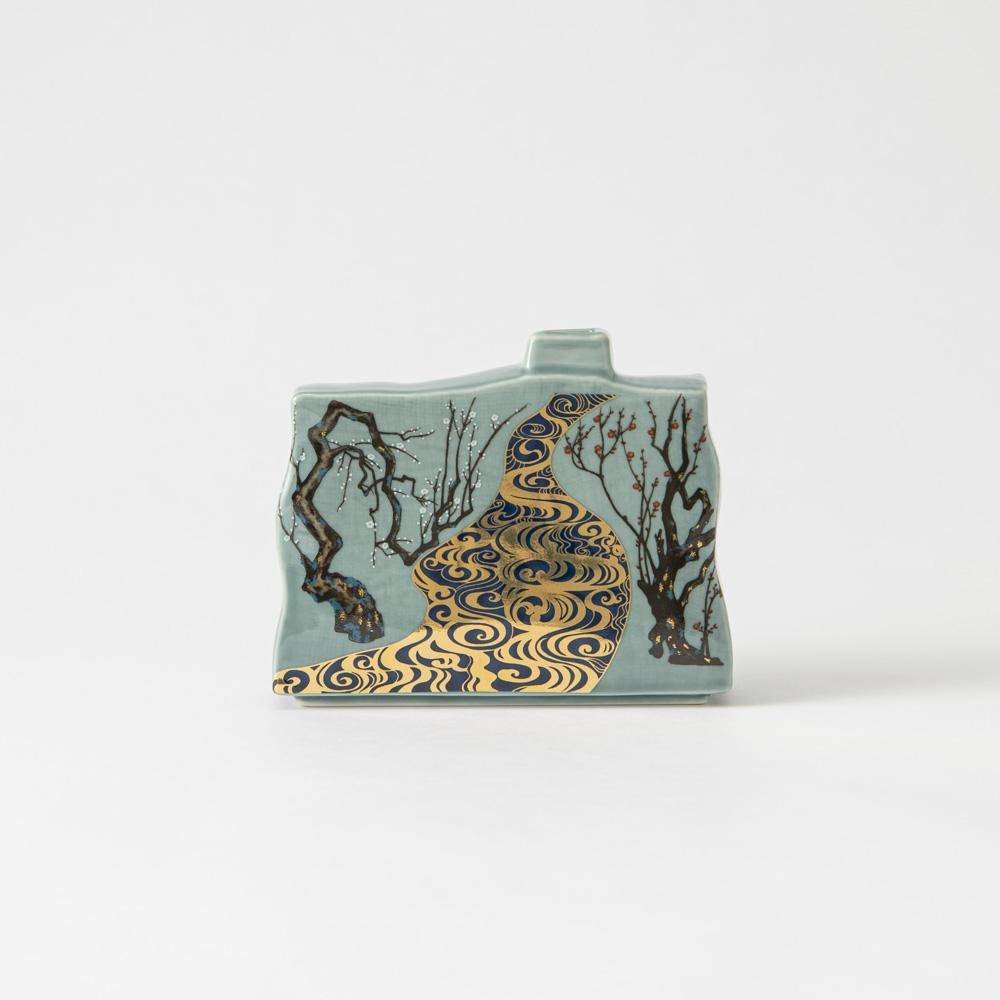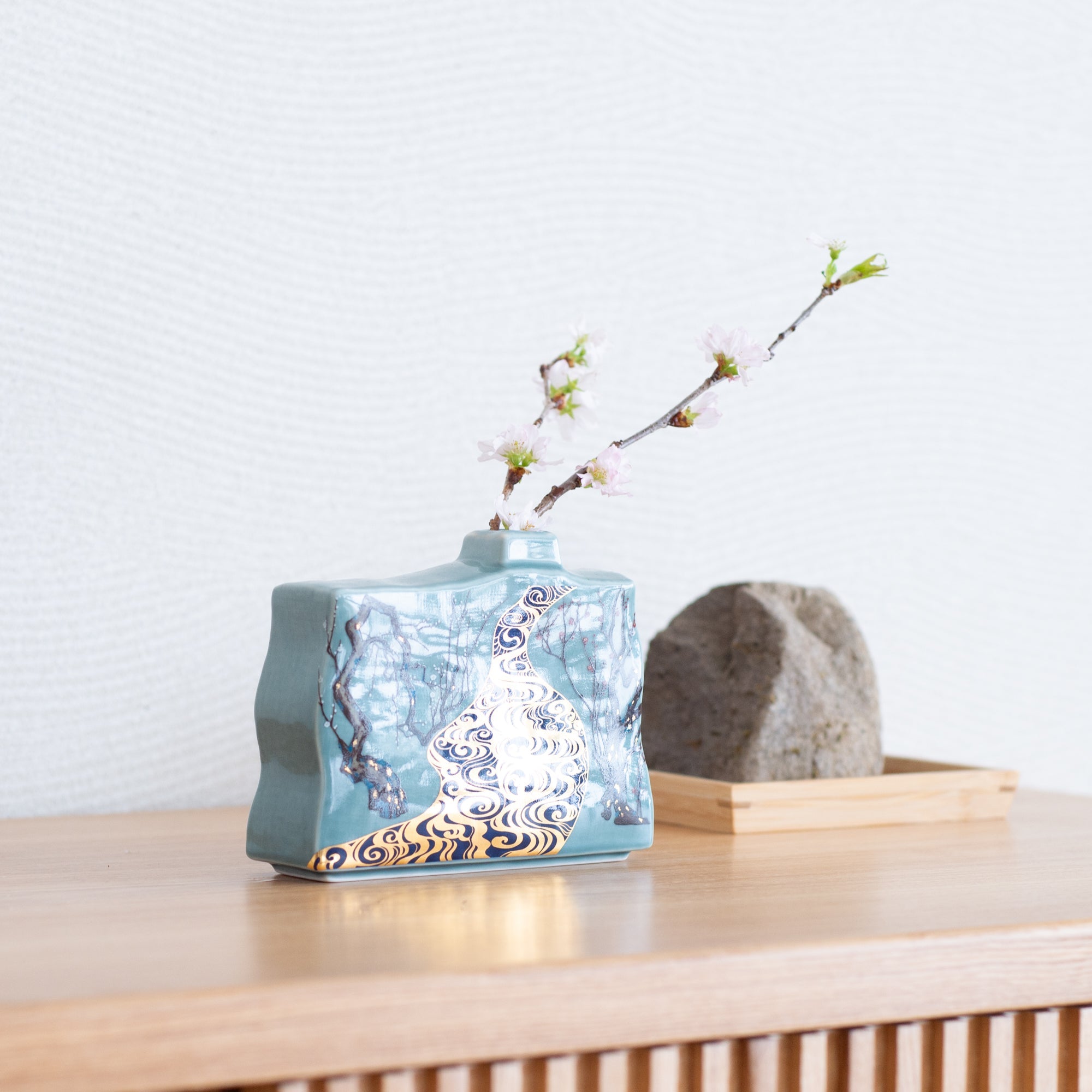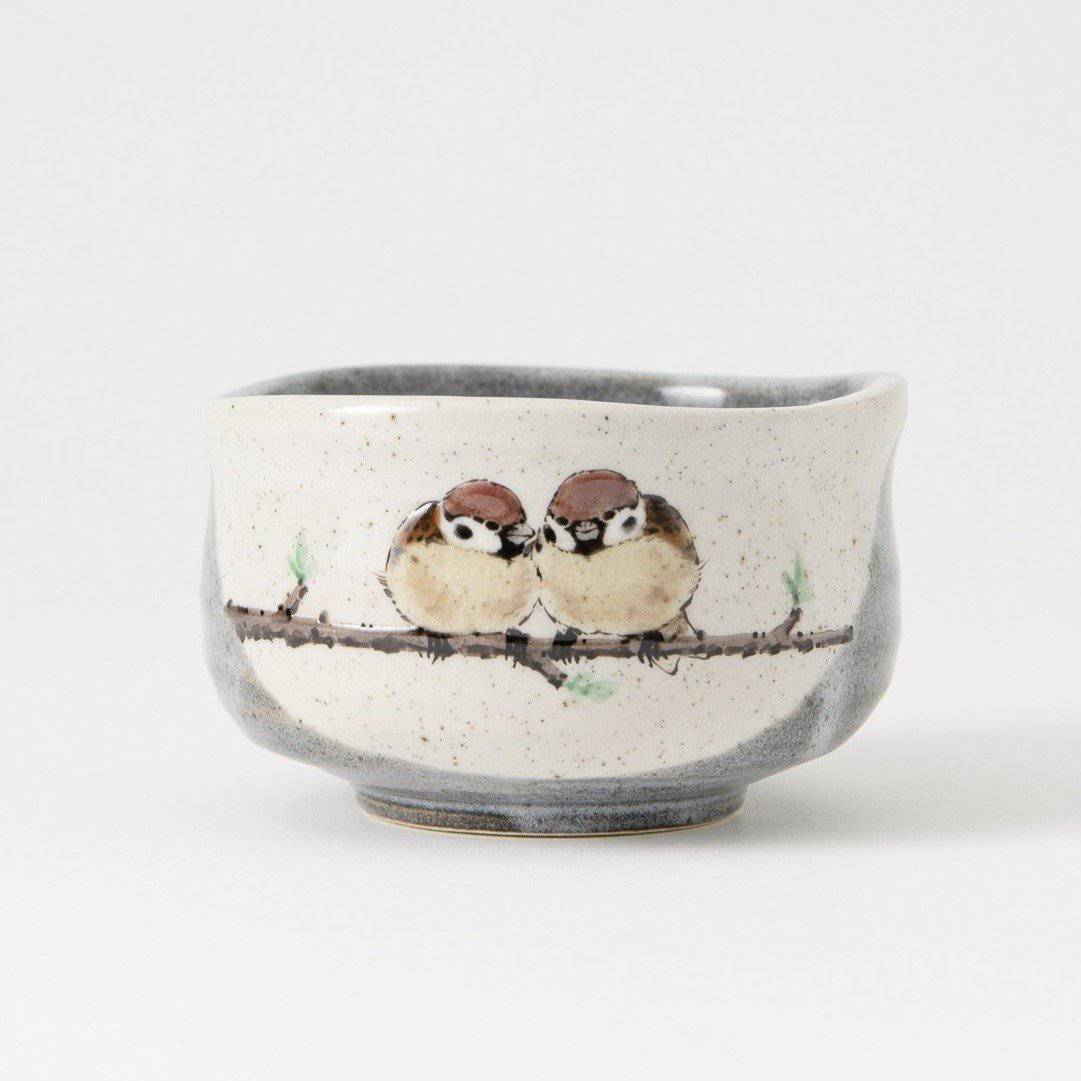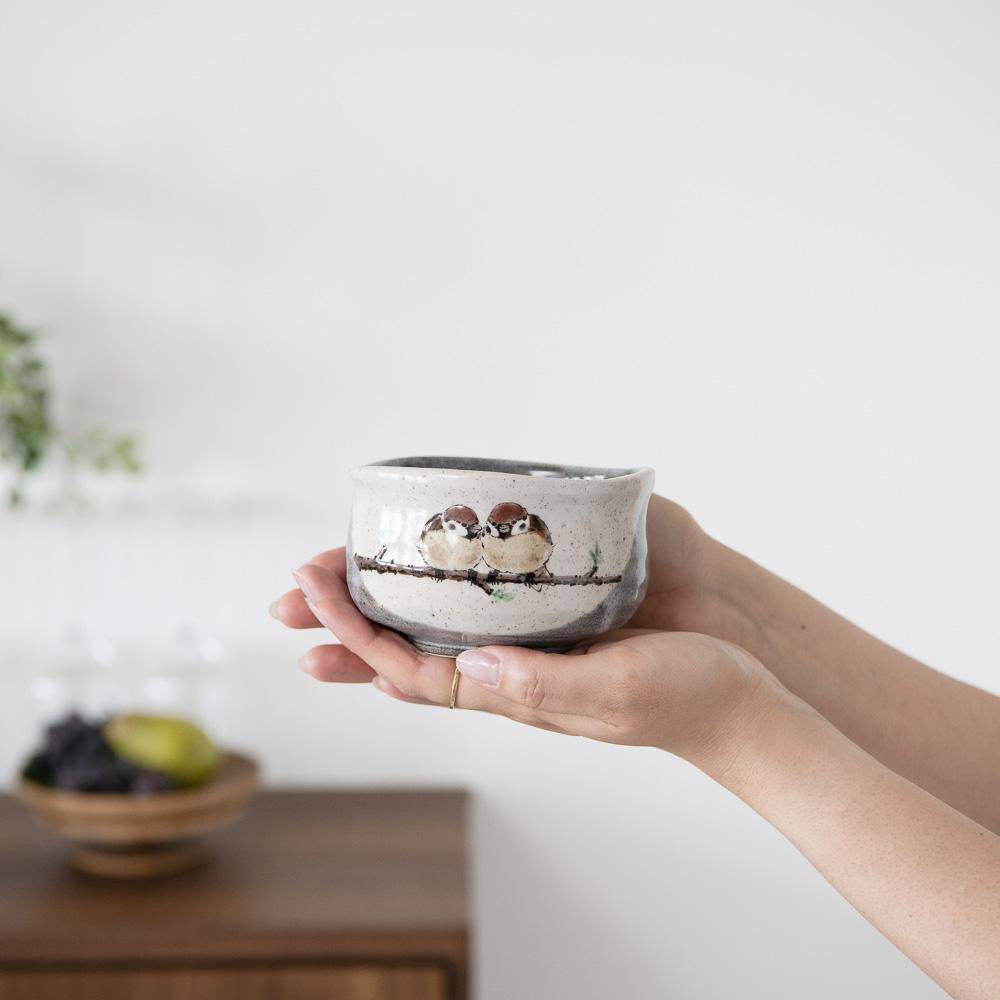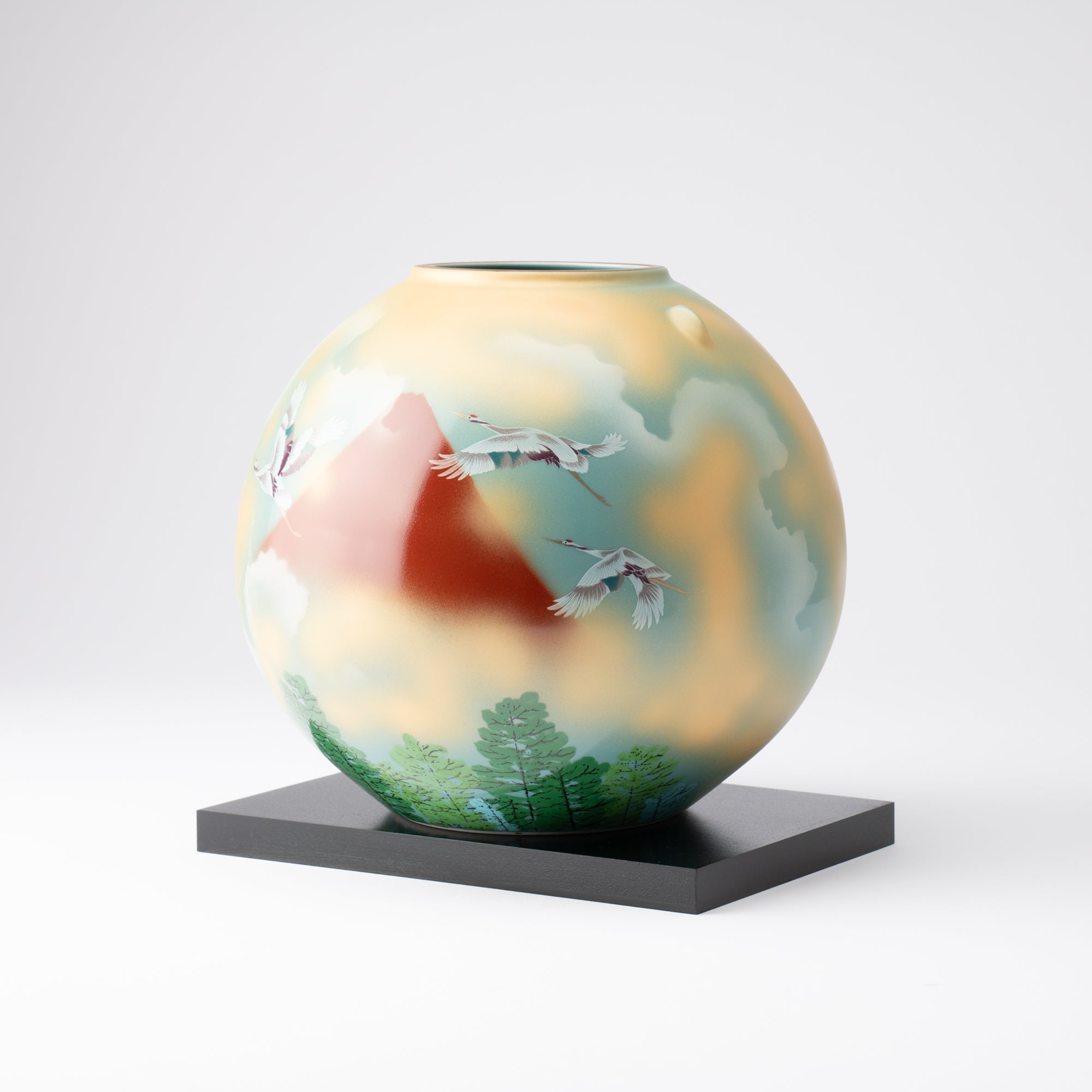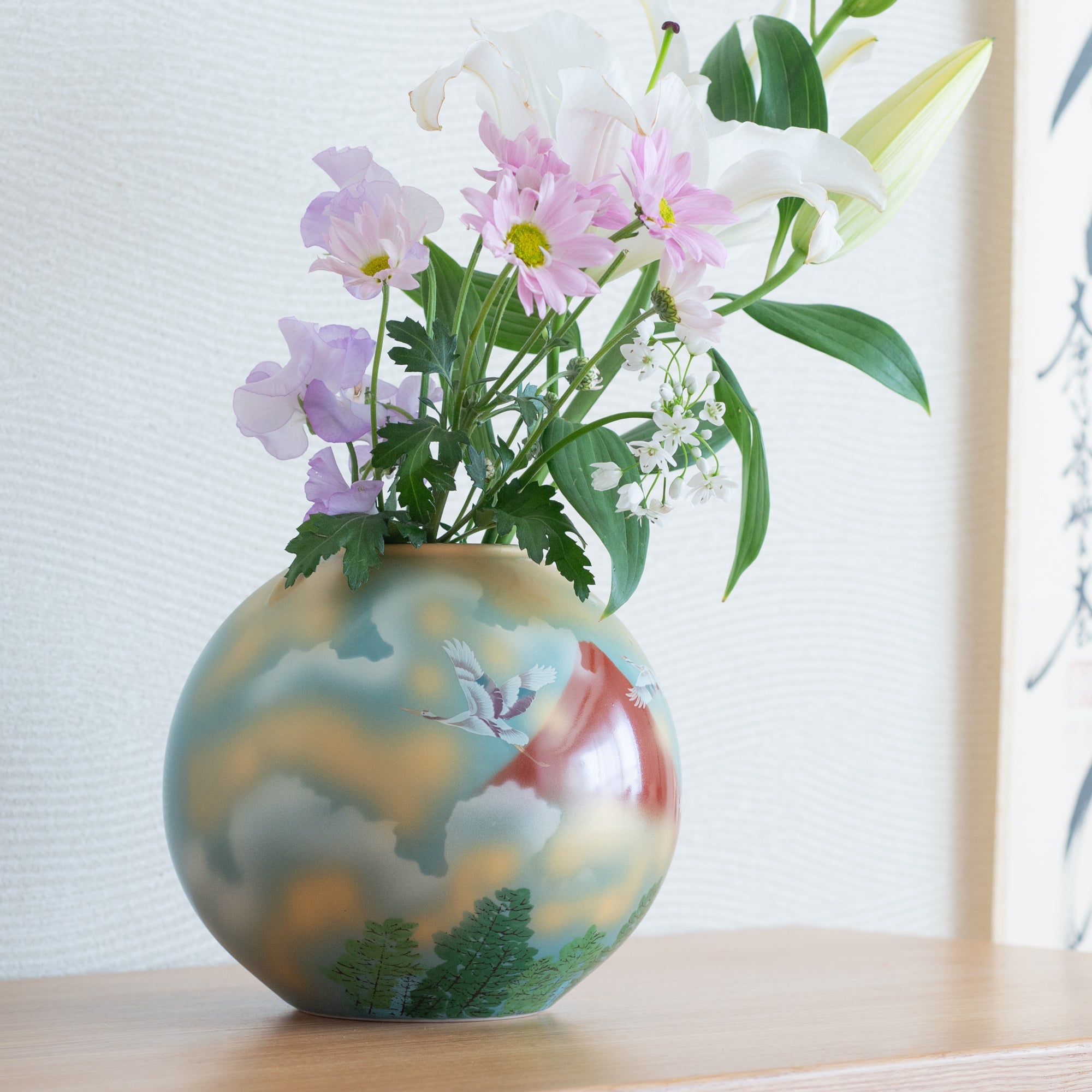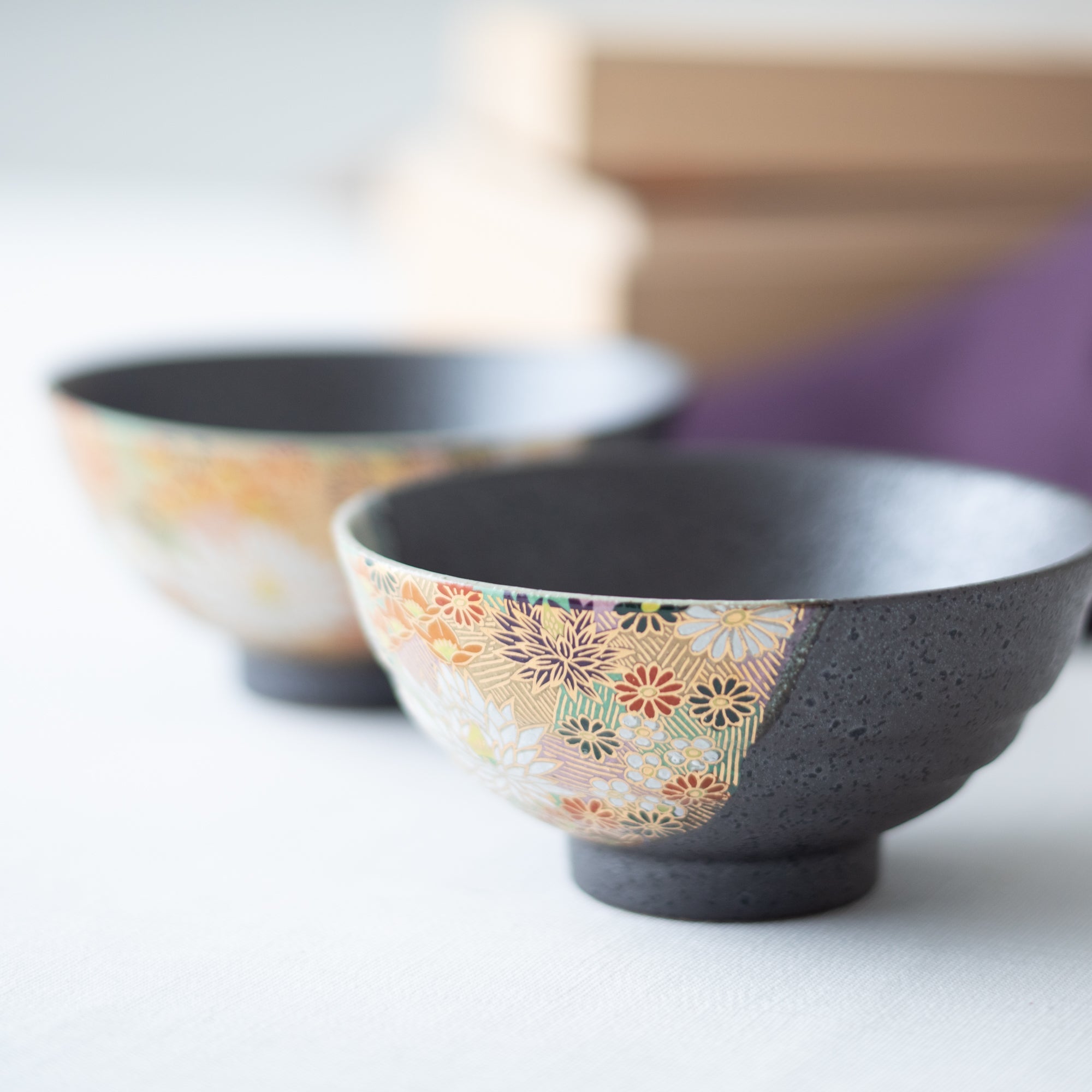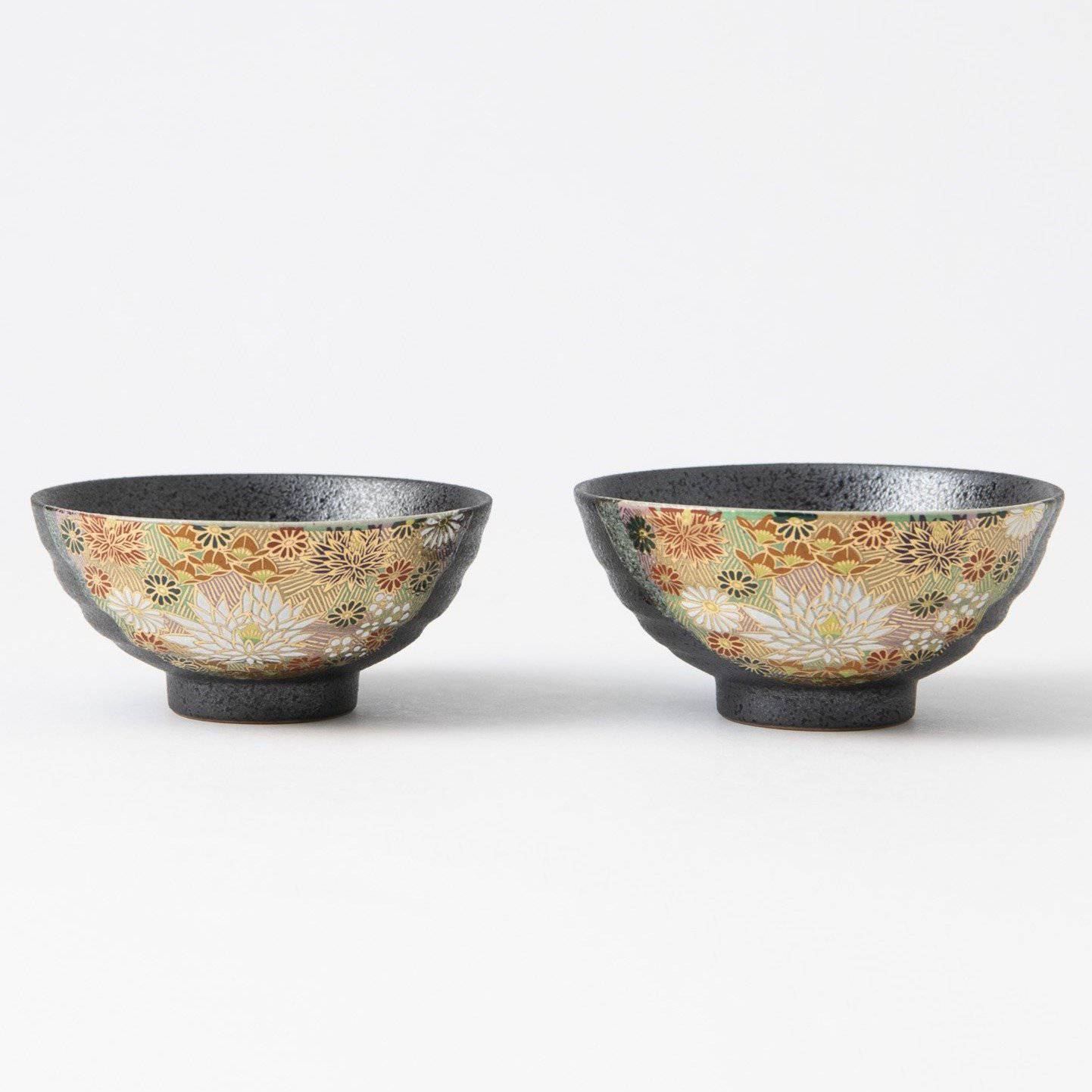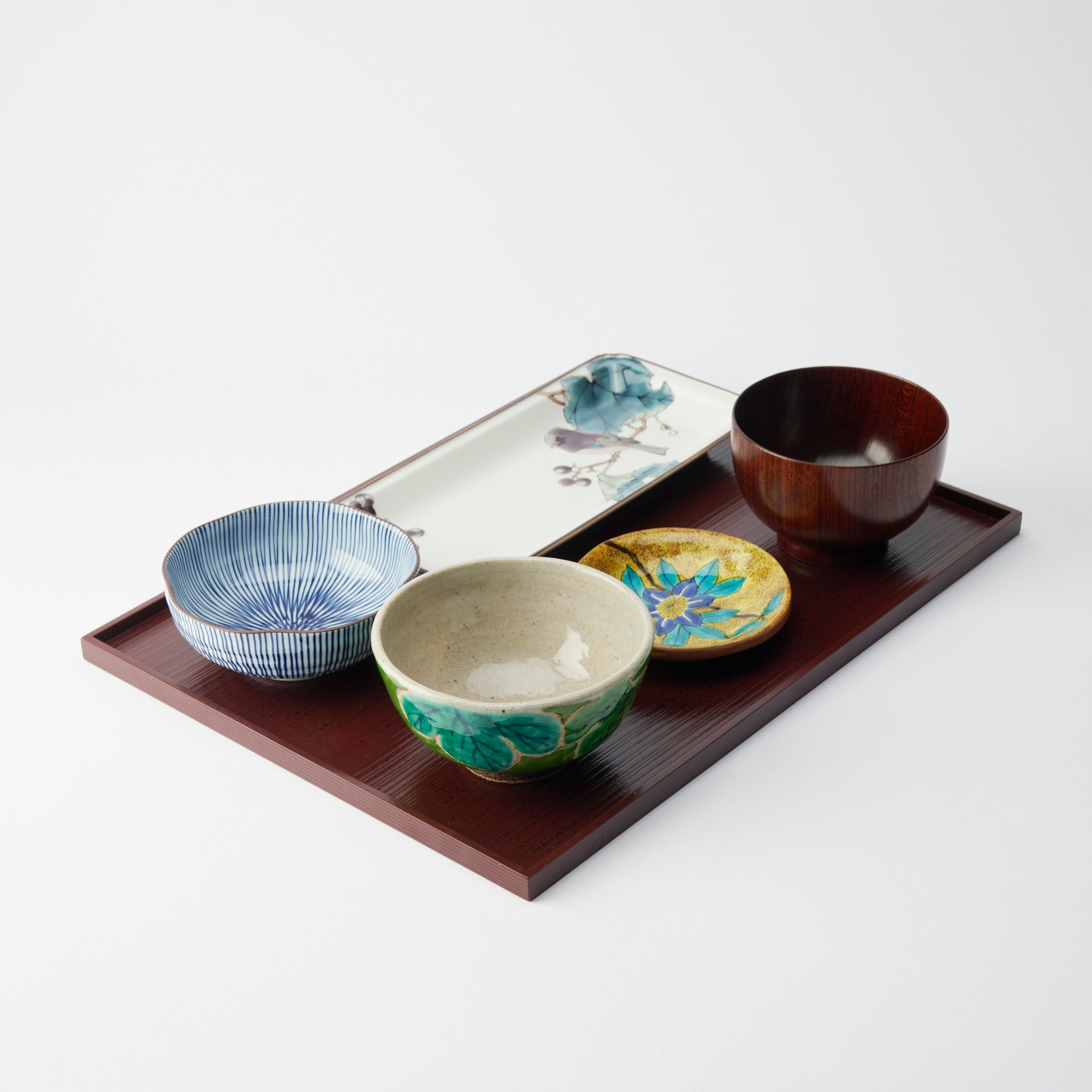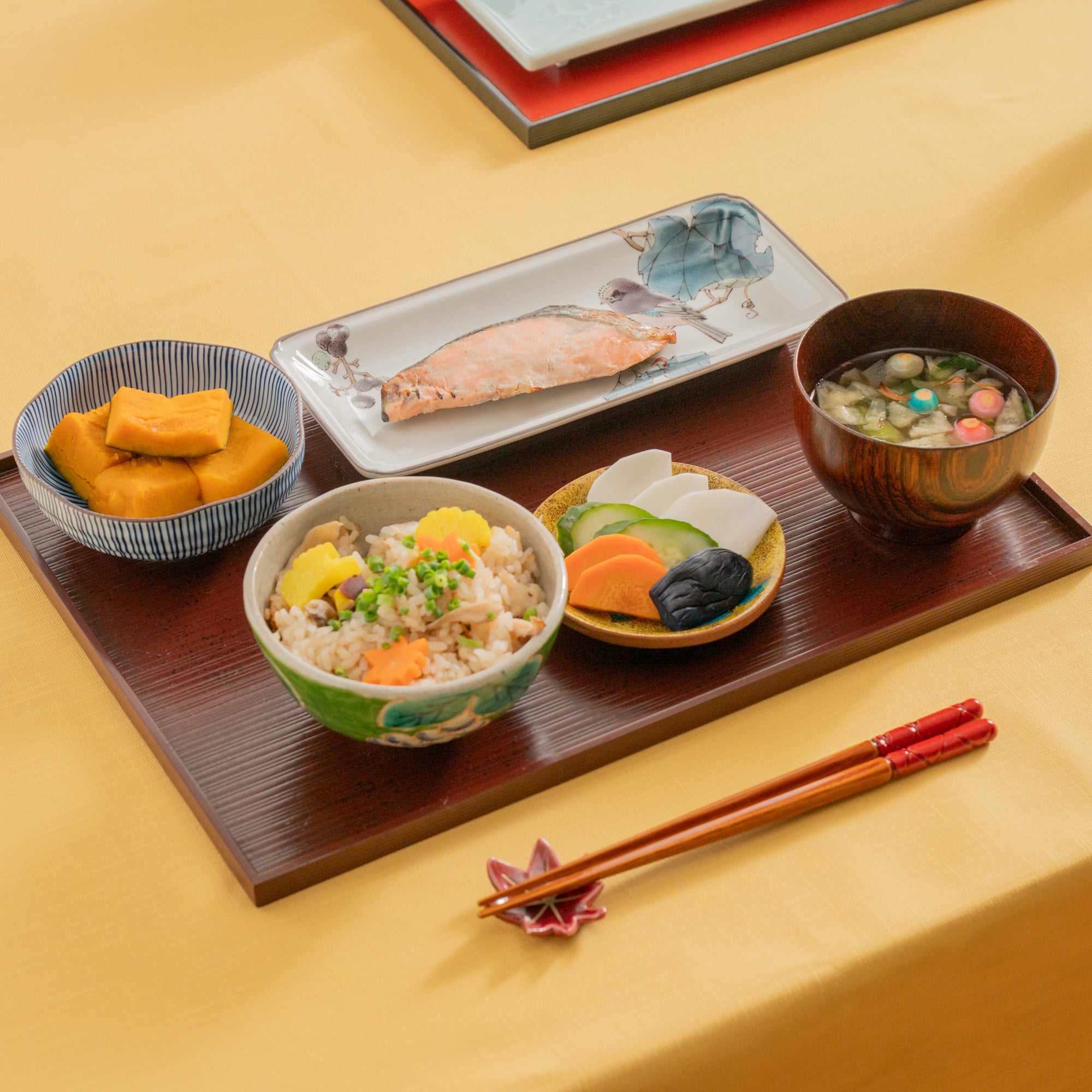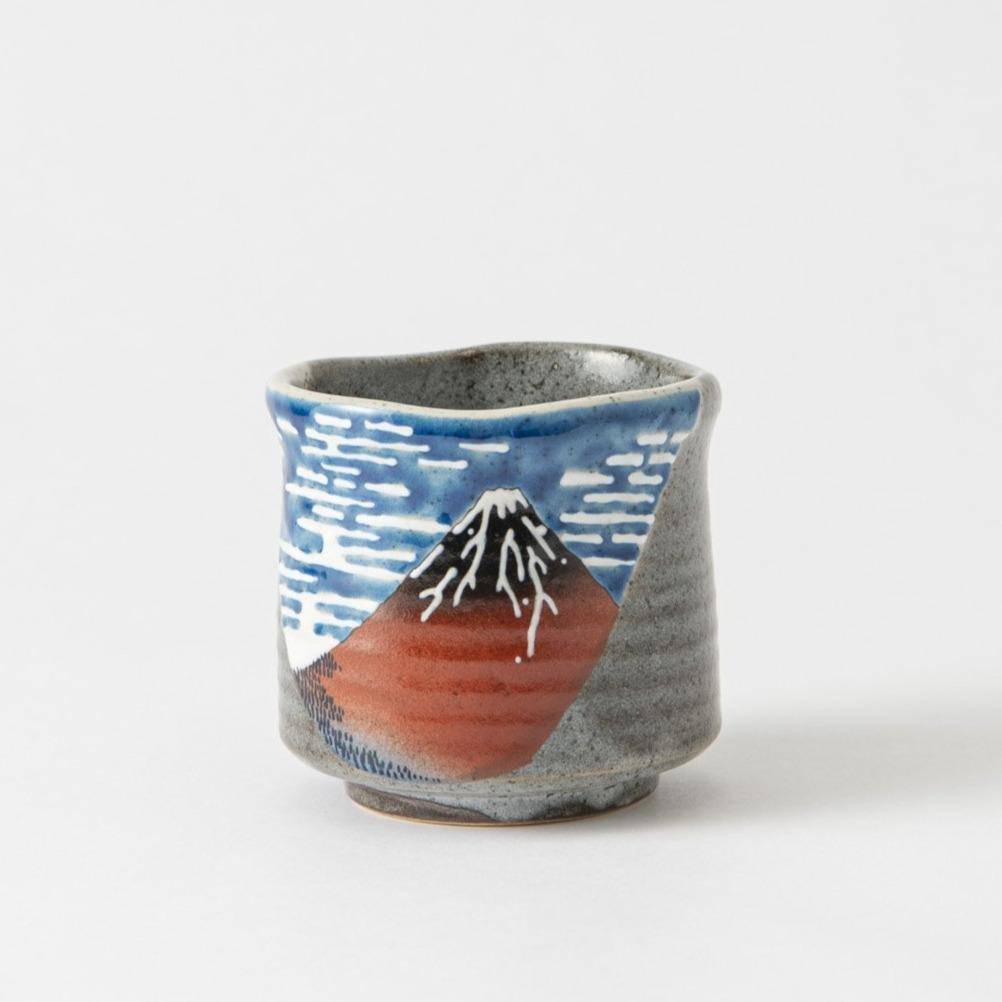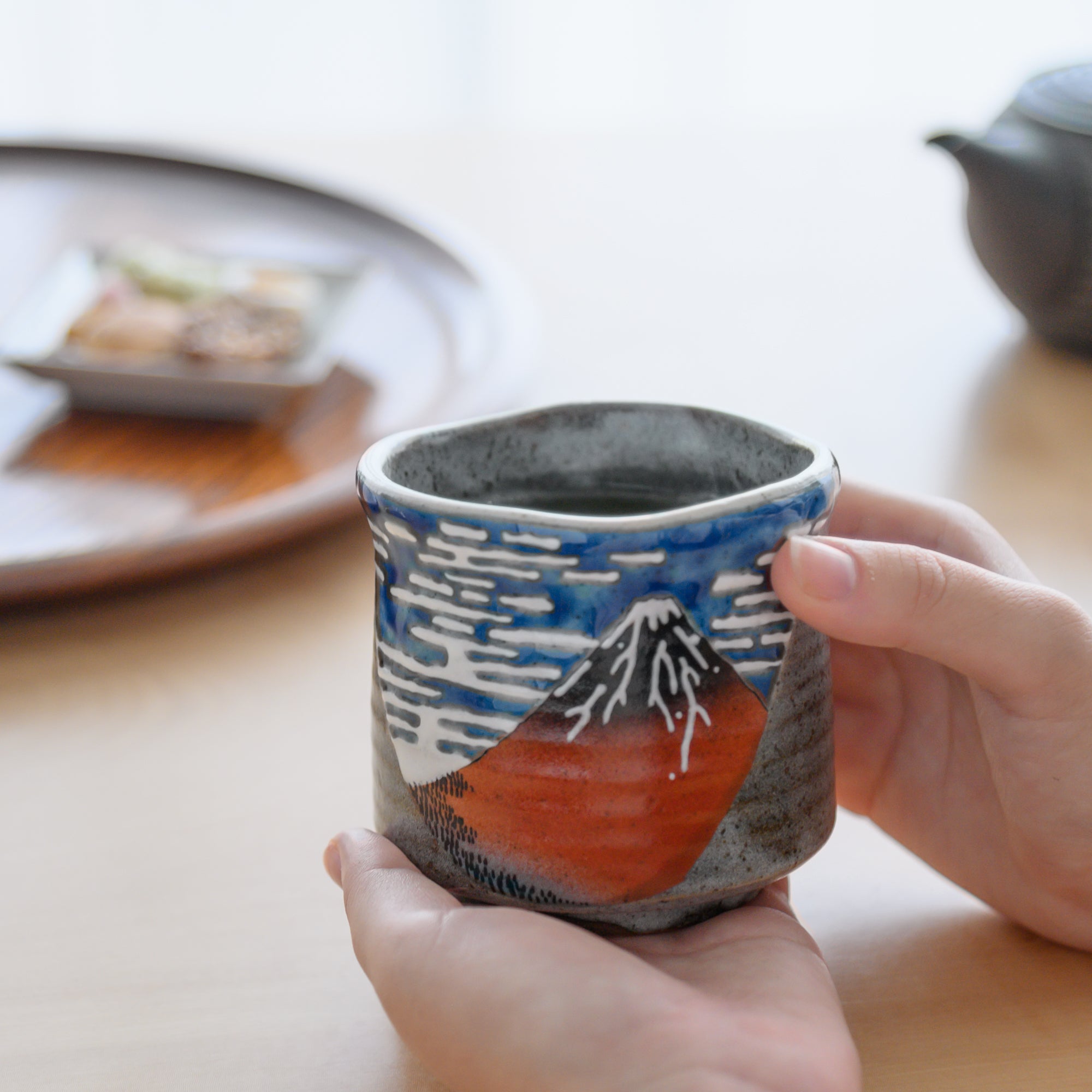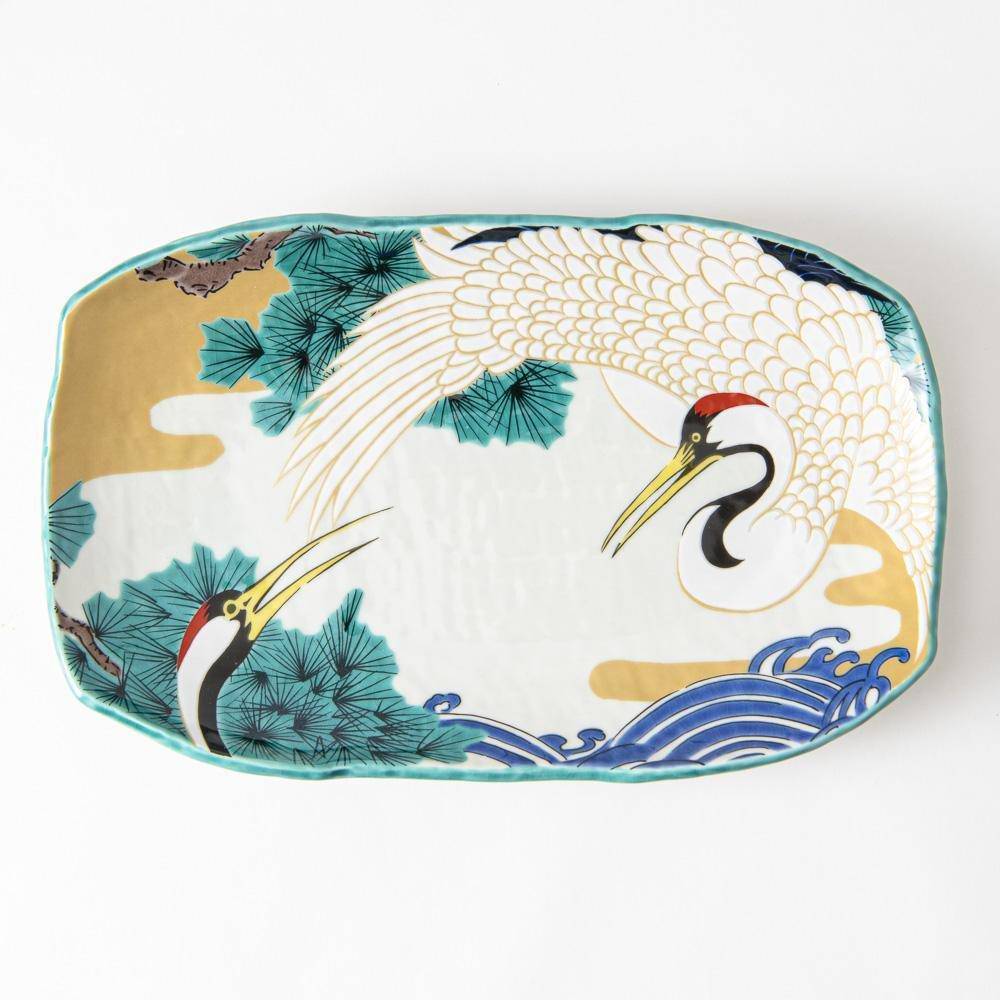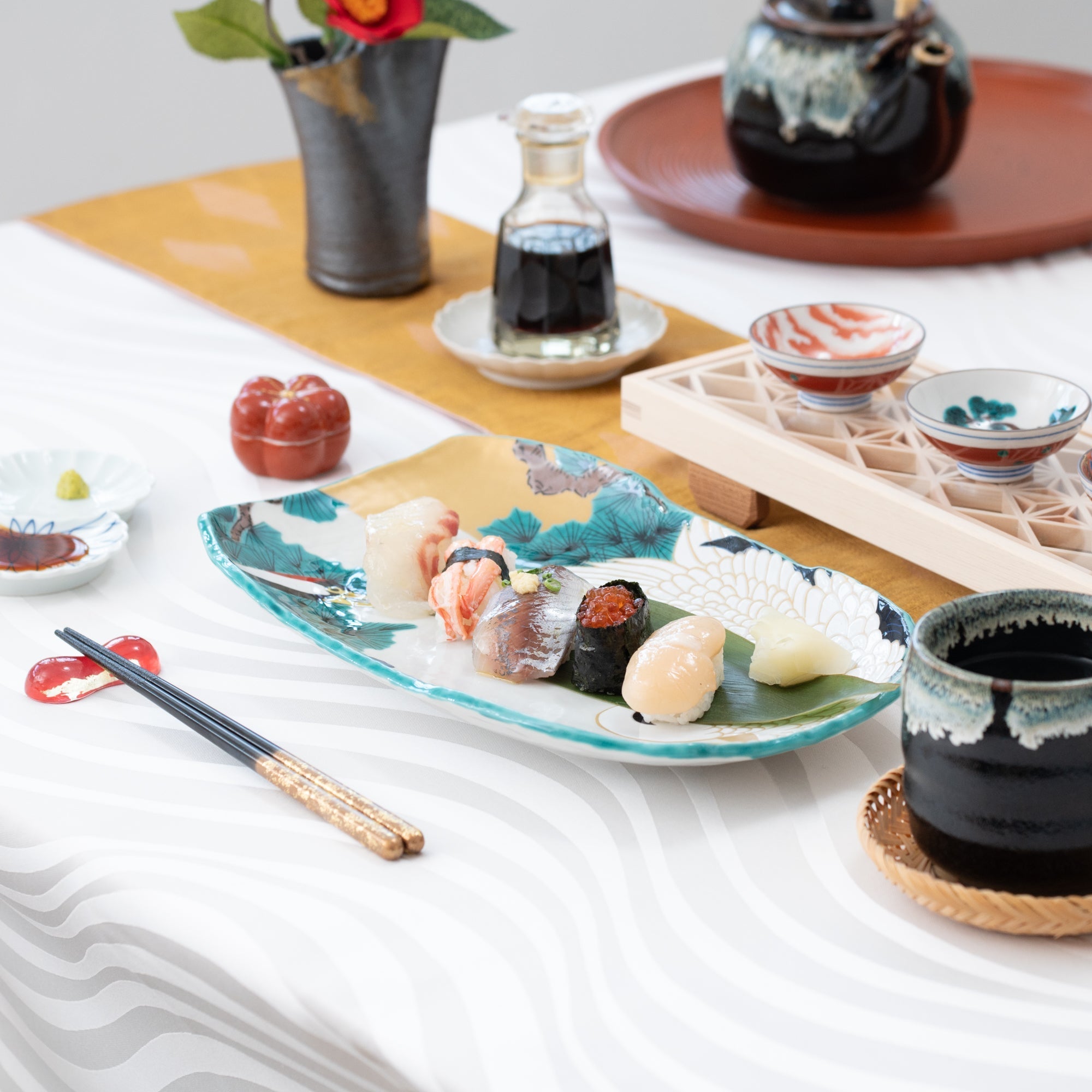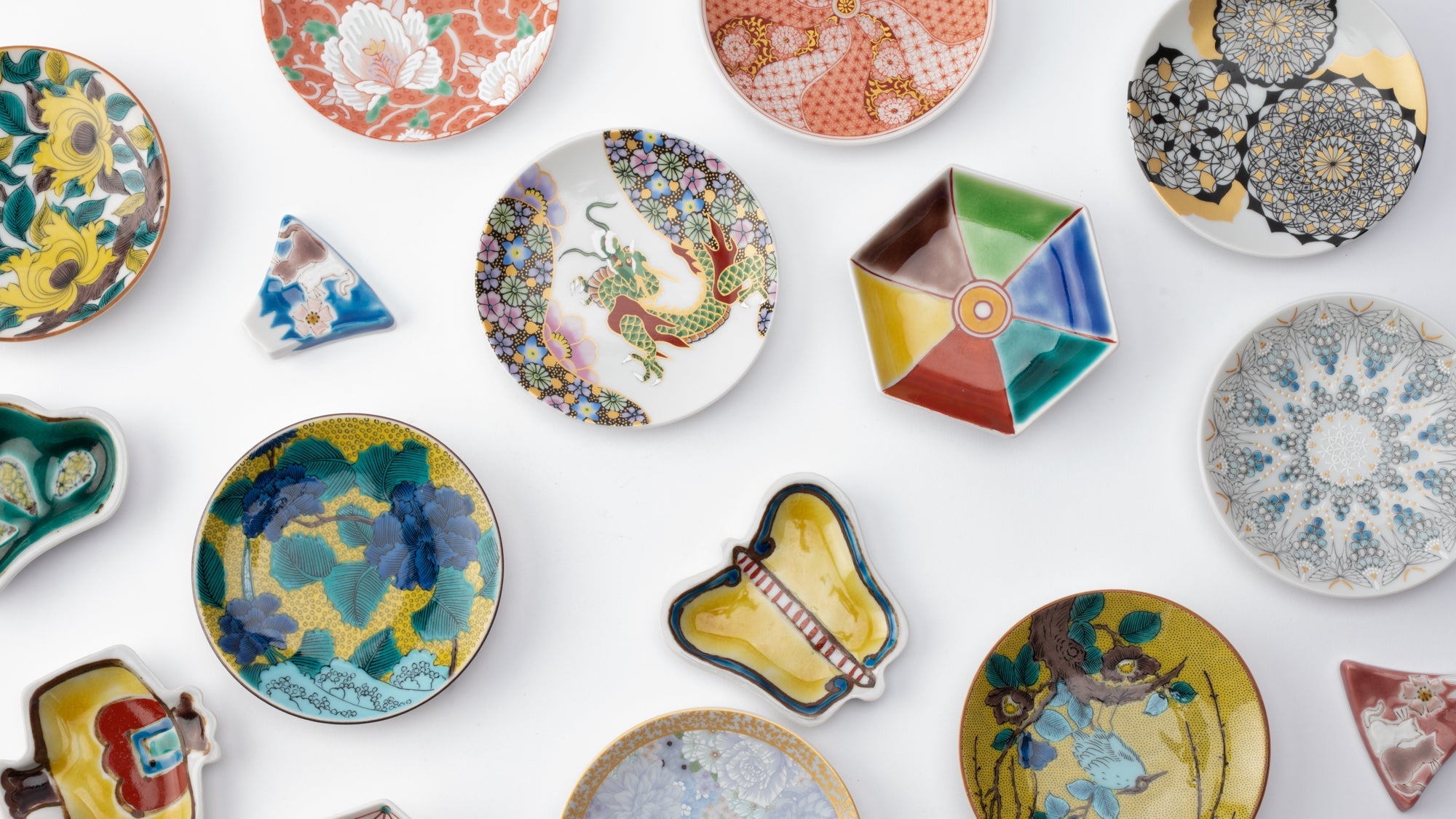
Kutani Ware
Kutani ware is a pottery produced in the Kaga region of Ishikawa Prefecture and it has a history of over 350 years. It is characterized by the heavy brilliance of the five colors of green, yellow, red, purple, and navy blue that are applied to the bold and daring lines. Its long history has evolved through the tireless efforts and enthusiasm of people who have sought innovation while maintaining tradition.
The beauty of the various styles and methods of painting is known as "Japan Kutani" and is highly regarded around the world.
Kutani ware is characterized by its colorful overglaze called "Gosai (five-colored)." The brilliant overglaze painting is unique to each kiln, and every kiln has its own unique style of painting. The clay used for Kutani ware is both ceramic and porcelain, each with its own unique qualities, and both offer vivid colors.
Although its production once ceased in the start of the 18th century, Kutani ware was revived 100 years later and once again thrived as a craft as multiple kilns opened and specialized in generating their own unique styles. During the Meiji Period (1868-1912), the technique of applying gold patterns called "Kinrande," in addition to the five colors of painting, was developed and attracted worldwide attention under the name of "Japan Kutani." Kutani ware continues to evolve while keeping in touch with its traditional roots.
Through its long history, Kutani ware has safeguarded traditional techniques and styles while embracing modern advancements.
Kutani ware was introduced in 1655 during the early years of the Edo period (c.1603-1867) by Toshiharu Maeda, the first lord of the Kaga-Daishoji Domain. Upon the discovery of pottery stones at the Kutani gold mine, a kiln was built in Kutani village to produce porcelain, which gave Kutani ware its name.
The kiln in Kutani Village was so successful that it became a landmark of the Kaga-Daishoji Domain, but was closed down about 50 years after its opening. Kutani ware produced during this short period of time is known as "Ko-Kutani (old Kutani)" and is treasured as the foundation of Japanese colored porcelain with its rich and colorful overglaze painted in the signature five colors of ultramarine blue, red, purple, green and yellow.
Several theories exist regarding the reason for the early closure of the kiln; the demise of Maeda Toshiharu, economic difficulties resulting from famine, contention within the domain, and interference by the Tokugawa shogunate. The details still remain a mystery.
About 100 years after the closure of the Kutani Village kiln, a significant number of new kilns producing overglaze porcelain reopened under the endorsement of the Maeda family. The production of Kutani ware was revived and is known as "The Revival of Kutani." These new kilns created new styles using new techniques to manufacture exquisite colorful overglaze porcelain and Sometsuke porcelain. And the diverse elements of these styles from differing kilns came together to form new styles and designs in the modern era after the Meiji period (1868-1912).
For further details on the history of Kutani ware, please read our interview with Shin-ichi Nakaya, Director of The Kutani porcelain Art Museum.
1655 Kutani kiln opened in Kutani Village by order of Maeda Toshiharu, the first feudal lord of the Daishoji Domain.
1656 Iroe porcelain was fired at the Kutani kiln.
1807 Under the guidance of Aoki Mokubei, the Kasugayama kiln opened on Mt. Utatsu, Kanazawa.
1811 Teikichi Honda discovered pottery stones in Hanasaka Village (present-day Komatsu City) and started the Wakasugi Kiln.
1819 Rokuemon Yabu established Ono kiln.
1824 Yoshidaya Denemon built Yoshidaya kiln in the former Kutani Village, and moved the kiln to Echuya in Yamashiro after a little over a year.
1831 Miyamotoya Uemon managed and took over Yoshidaya kiln, and invited Iidaya Hachiroemon to open Miyamoto kiln.
1841 Shozo Kutani opened the Terai Kiln in Terai Village (present-day Nomi City).
1848 The Matsuyama kiln was opened under the Daishoji clan's management.
1860 The Daishoji clan purchased the Miyamoto kiln and established the Kutani Hon Kiln.
1865 The Daishojii clan invited Eiraku Wazen from Kyoto to the Kutani Hon Kiln.
1873 Kutani ware was exhibited at the Vienna World's Fair.
1876 Kutani ware was exhibited at the Philadelphia World's Fair.
1878 Exhibited at the Paris Exposition
1908 Kutani Tea Bowl Festival begins
1975 Kutani ware was recognized as a traditional craft by the Ministry of International Trade and Industry (present-day Ministry of Economy, Trade and Industry)
1997 Held the "Kutani International Decorative Ceramics Competition '97."
2004 Created lead-free overglaze enamel for Kutani ware porcelain
2004 Exhibited at the 1st Jingdezhen International Ceramic Art Biennale
2005 Exhibited at Maison & Objet, Paris
2009 Obtained the regional collective trademark "Kutaniyaki"
2016 Held the 360th annual exhibition of Kutani ware, the "Essence of Iroe"
2018 Held the 2nd Japanese craft exhibition in China "Kutani Ware 2018"
Related posts
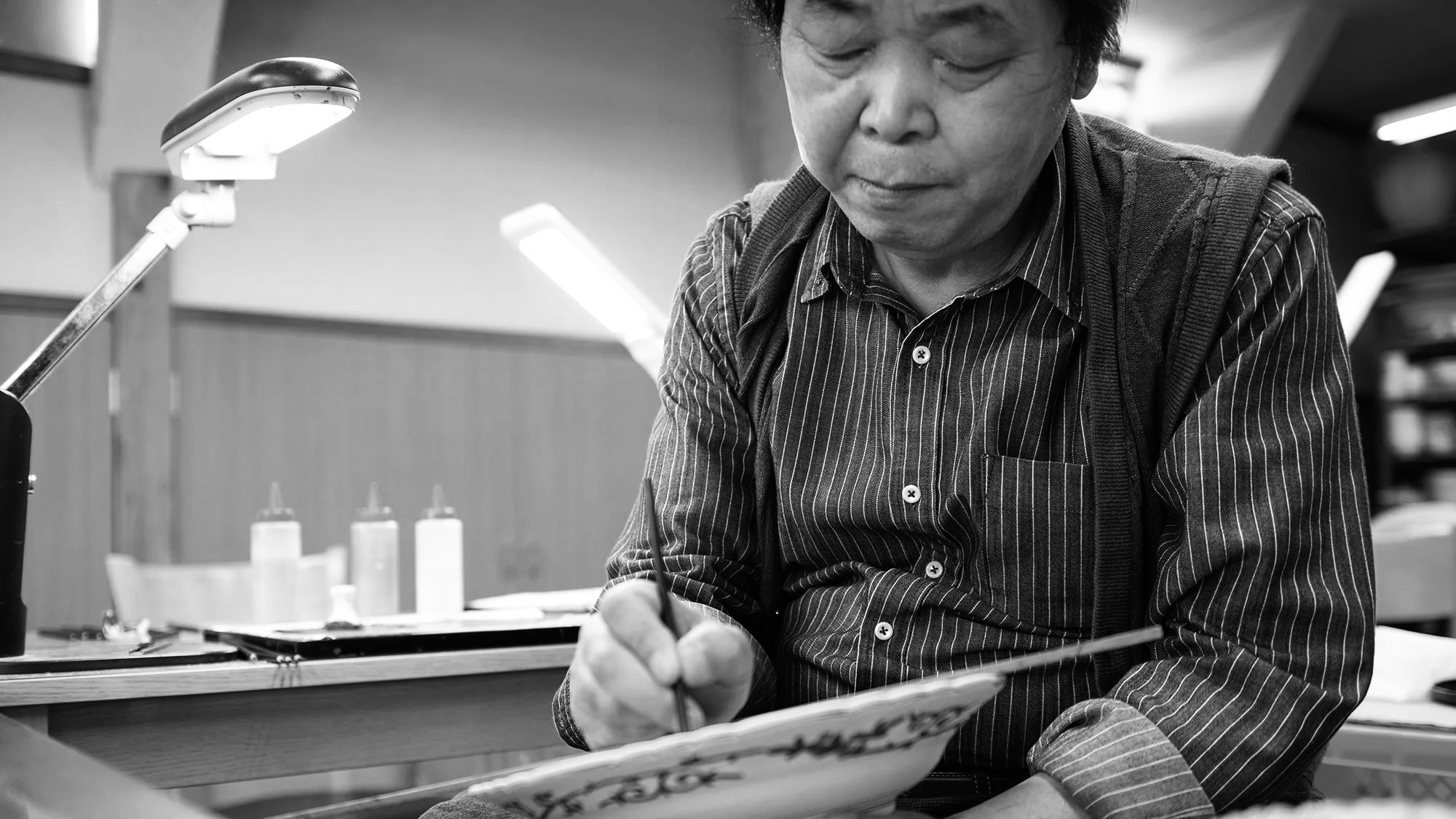
A Classicist of Sometsuke: Yamamoto Choza
Kutani ware craftsman Yamamoto Choza blends traditional techniques with current trends to craft sometsuke masterpieces.
Read more
7 Actually Useful Table Accessories That You Didn’t Know You Needed
Discover 7 unique Japanese table accessories, from soy sauce dispensers to spice holders, that add charm to every meal.
Read more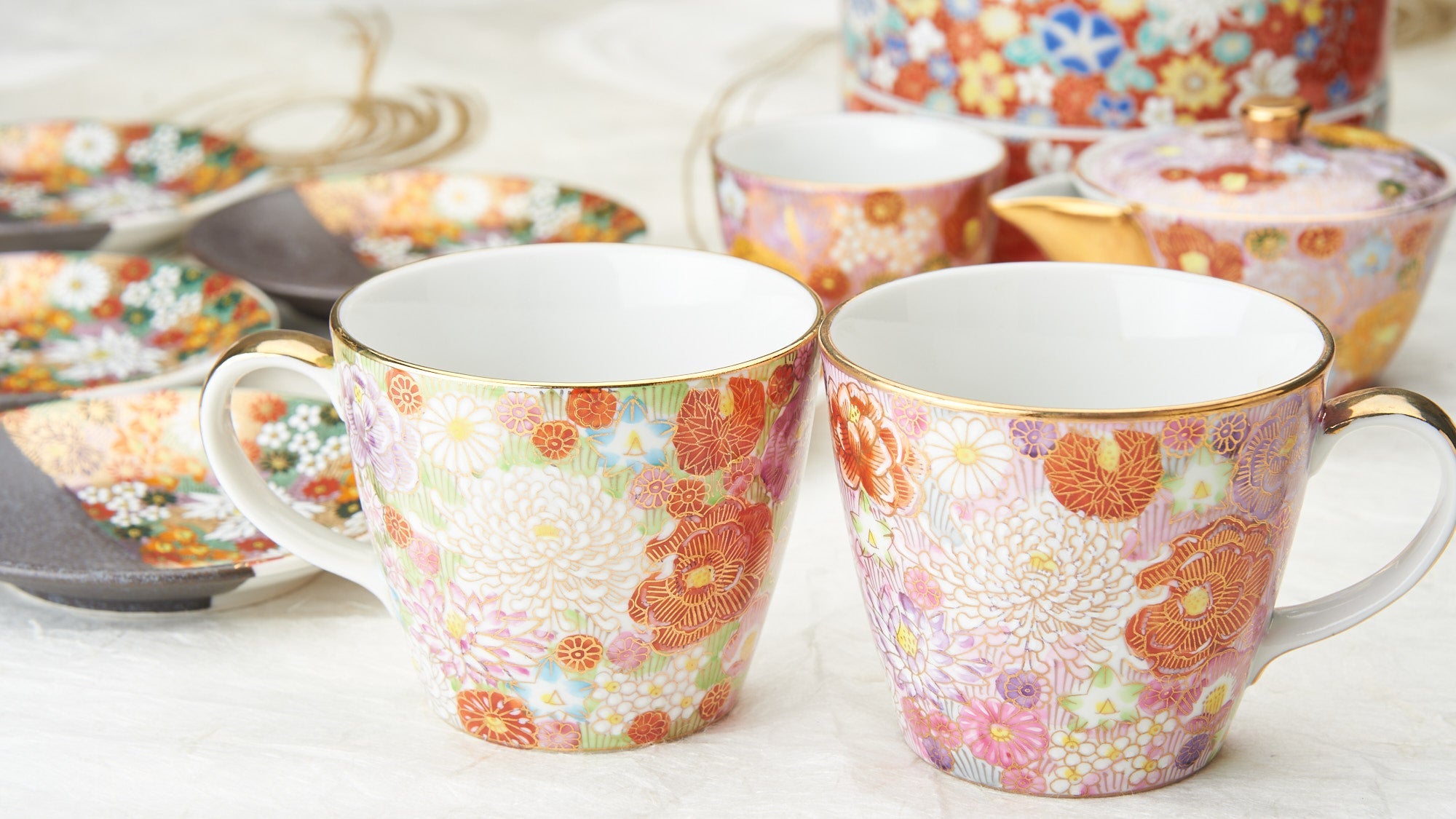
Fascinating Hanazume Gifts for Your Friends and Colleagues
Explore gifts ideas with hanazume, a traditional Kutani ware painting technique used to create vibrant floral designs.
Read more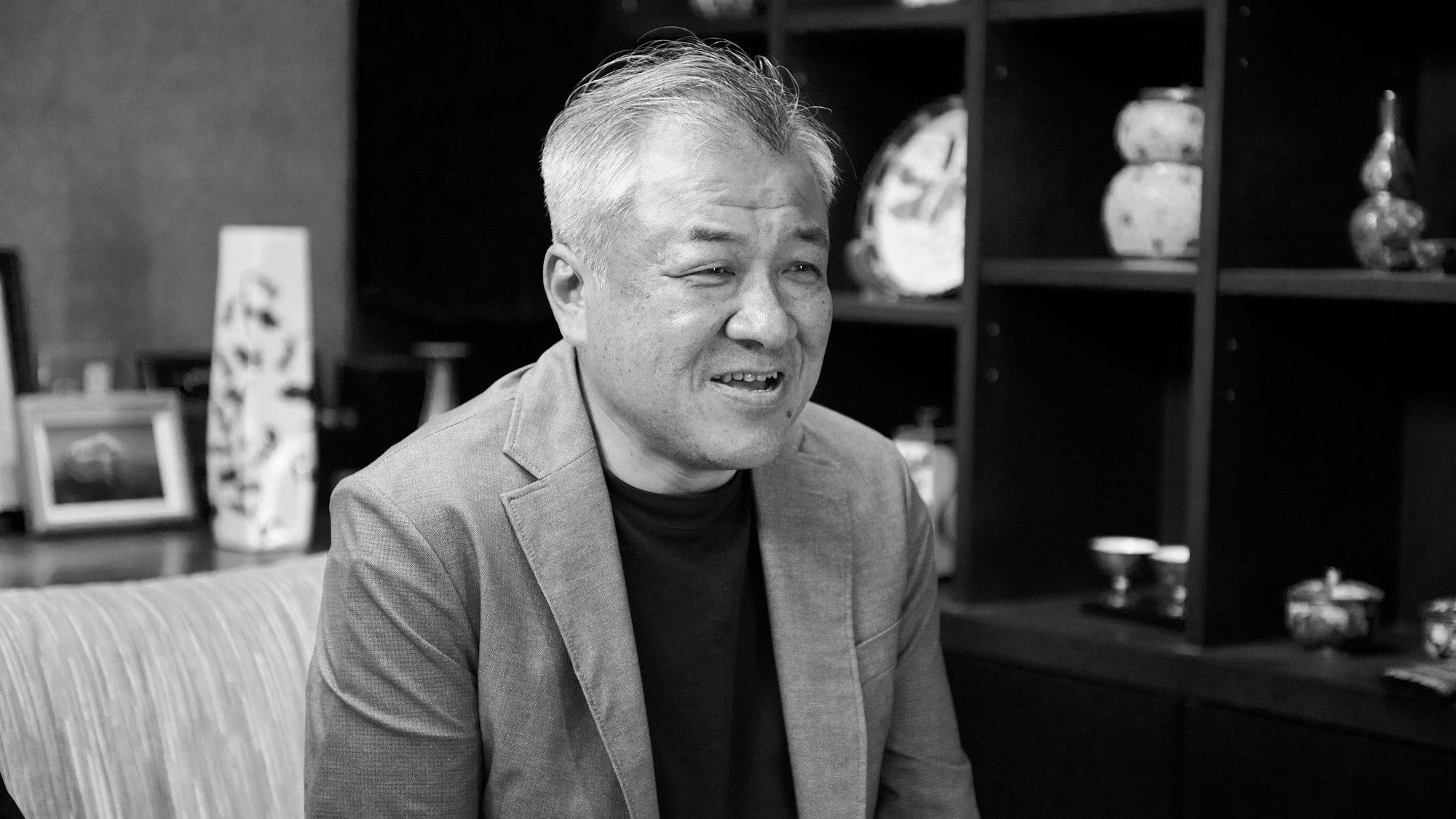
Taka Toshifumi: Bringing All Things Into Balance
Read about Taka Toshifumi's passion for Kutani ware, his family's rich legacy, and his exciting vision for the future.
Read more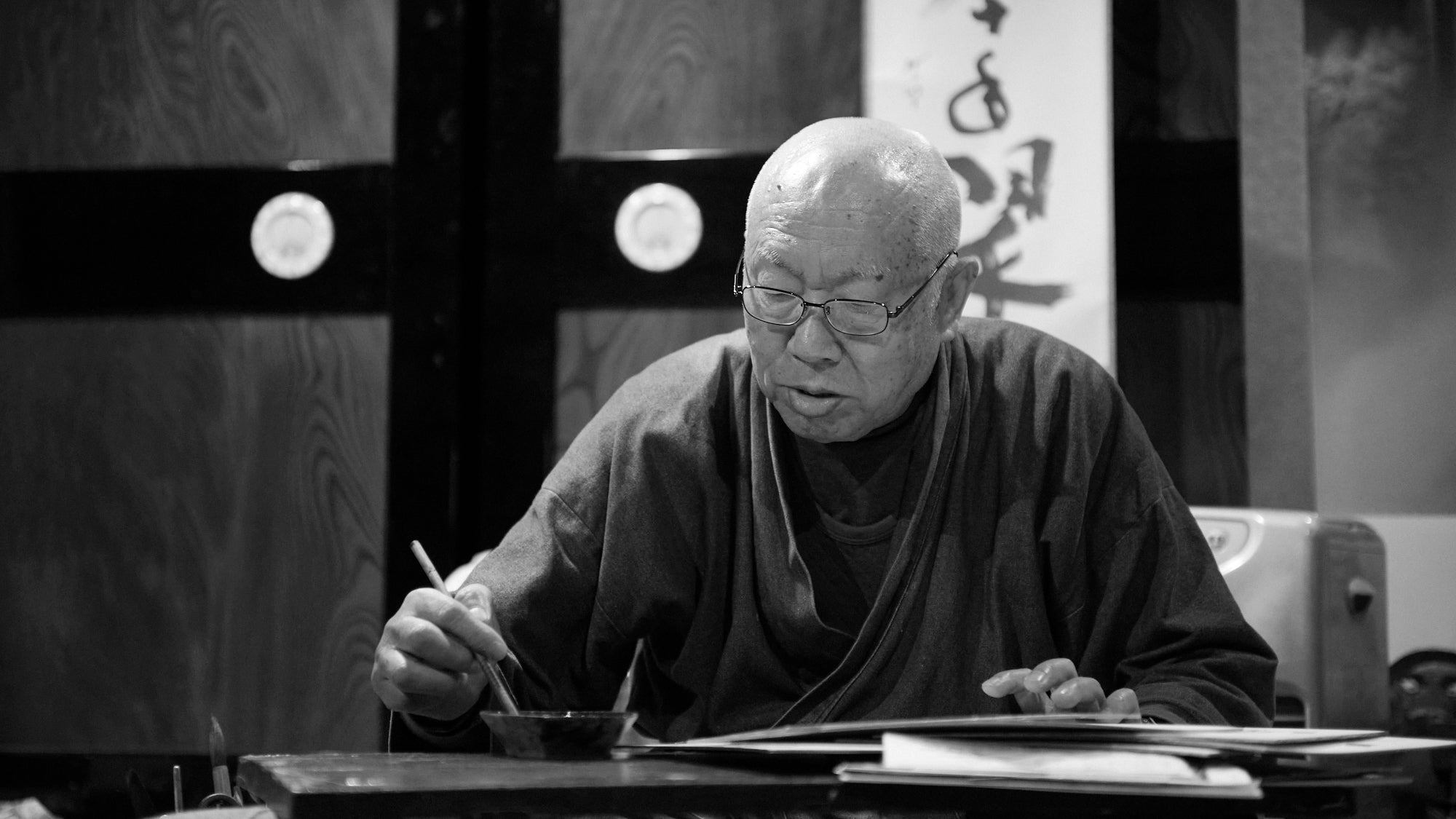
Painter of the Northern Seas, Art and Life of Kitamura Takashi
Kutani ware master Kitamura Takashi speaks on his journey and taking inspiration from Edo-period ships and Japan’s seas.
Read more
Voyages of Prosperity: The Kitamaebune Unveiled
Learn about kitamaebune, Edo-period merchant ships that sailed Japan's seas and inspired master artisan Kitamura Takashi.
Read more
Mitsui Tatsuya: Guardian of Kutani Ware's Eternal Beauty
Mitsui Tatsuya bridges past and present, preserving Kutani ware's legacy through vibrant ko-Kutani overglaze painting.
Read more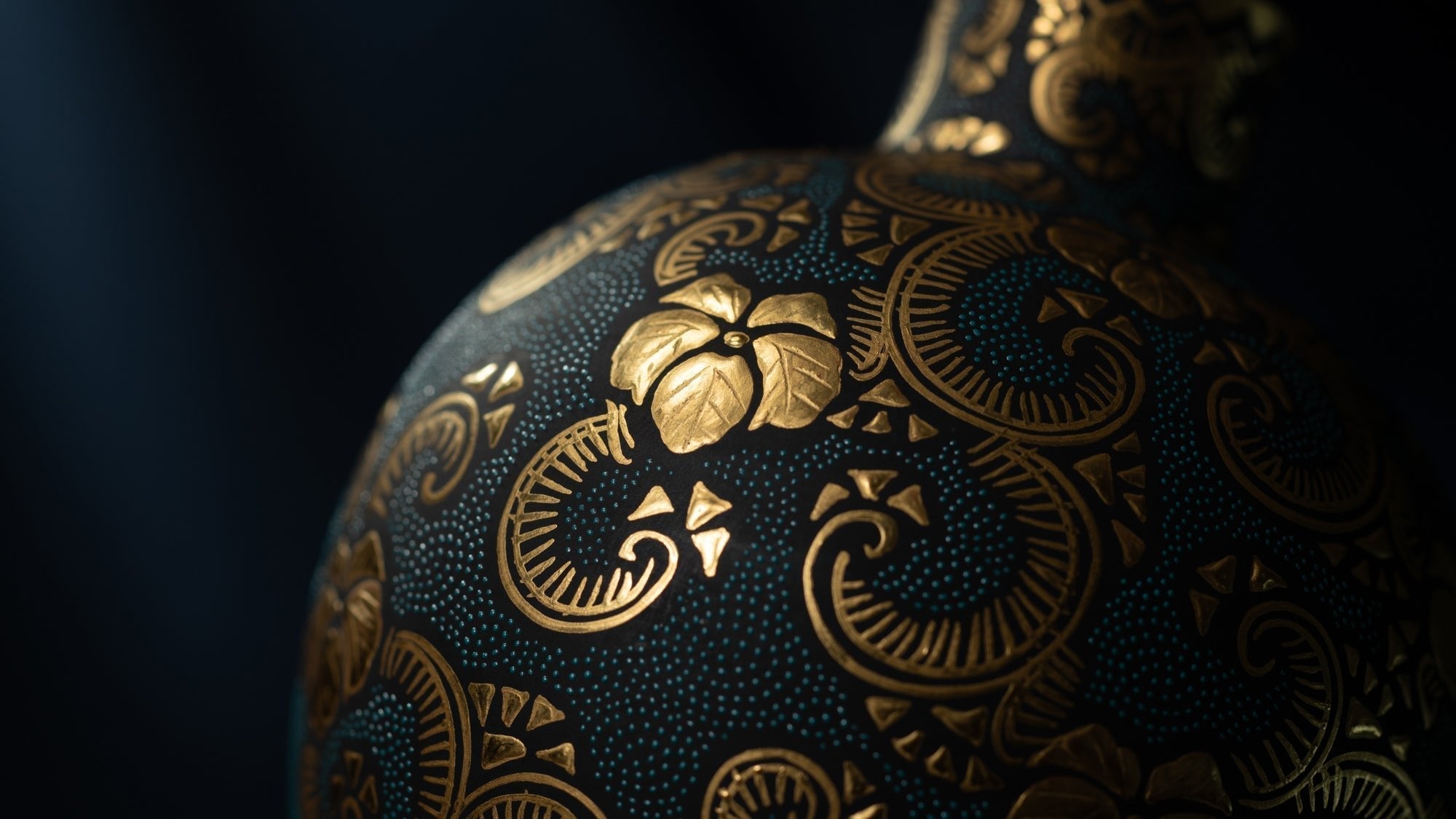
Swirling Elegance: The Artistic Mastery of Kutani Aochibu Style
Discover the art behind the elegant, eye-catching patterns of Kutani aochibu style.
Read more
Nakada Kingyoku: The Evolving Legacy of Kutani Ware's Decorative Paintings
Our interview with the artist innovating Kutani aochibu style by mixing it with the elegant morikin design.
Read more
We introduce five vases, traditional and modern, that will add Japanese flair to your springtime decor.
Read more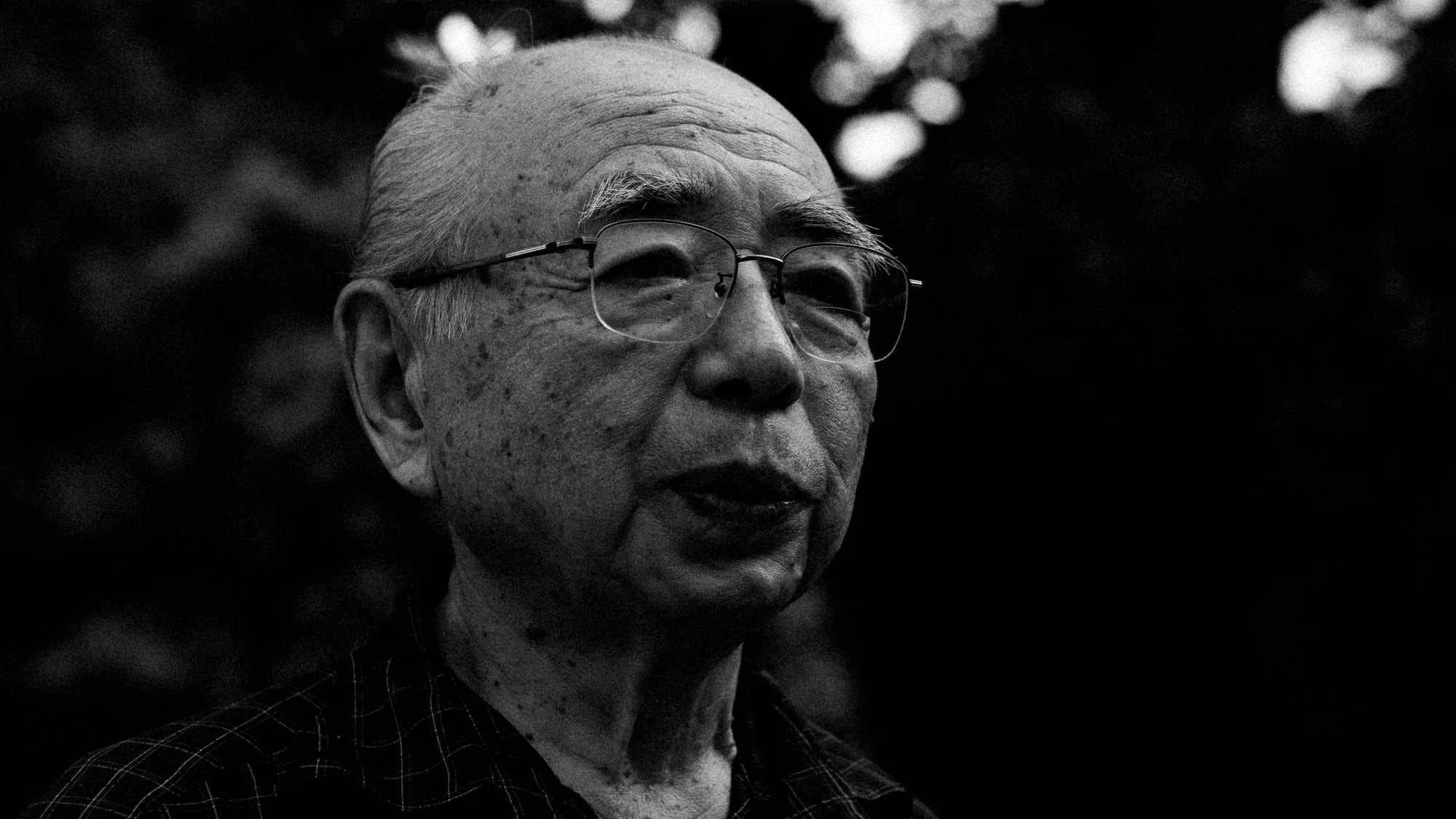
Realms of Enchantment: Life and Art of Yoshita Minori
Yoshita Minori brought extraordinary artistry to this prestigious Japanese craft, particularly through his mastery of the yuri kinsai technique.
Read more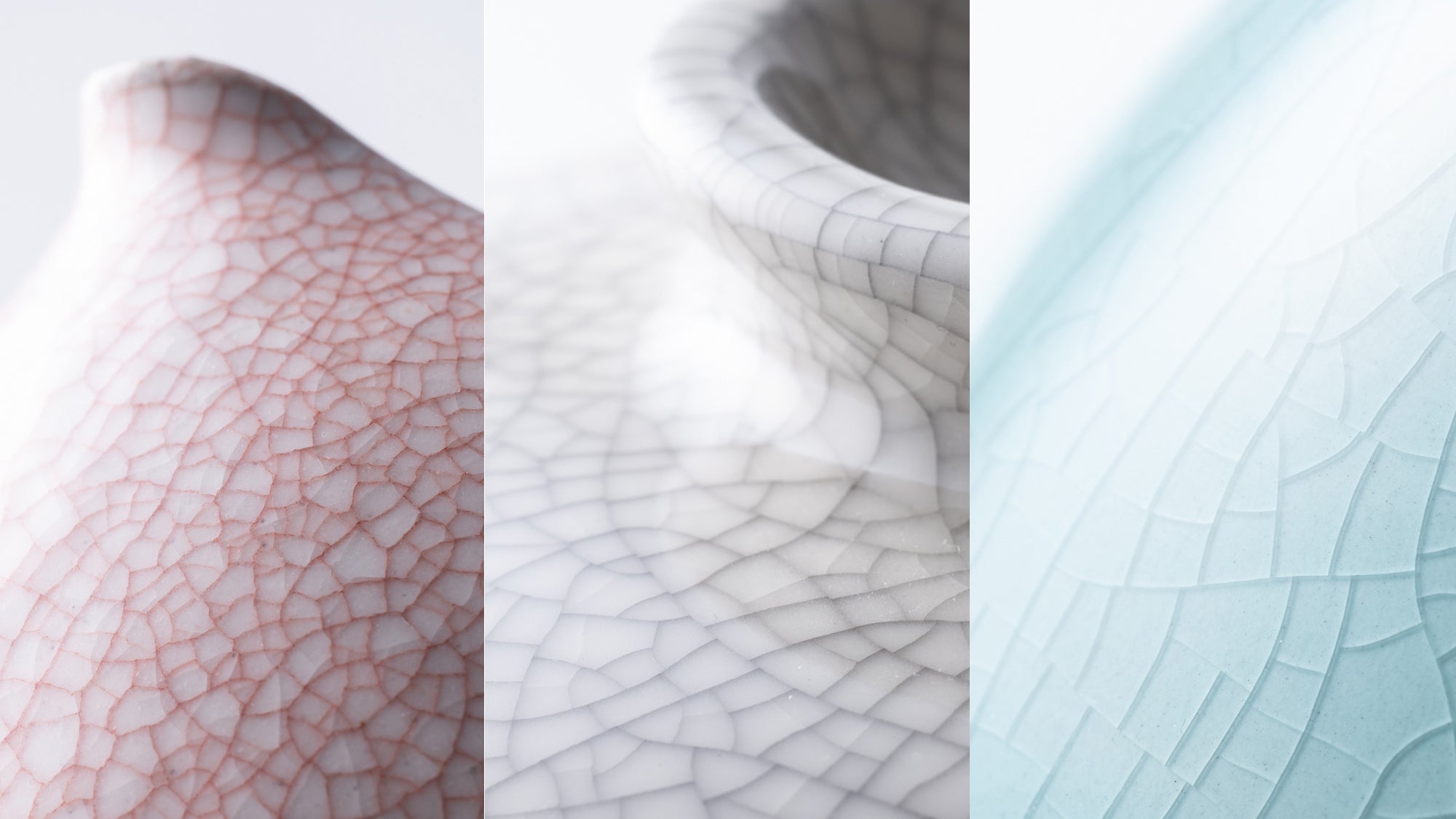
Imperfect Beauty: Cracking the Code of Kannyu
Discover the history of kannyu, the name of the crackled finish on glazed ceramic, dating as far back as the 10th century.
Read more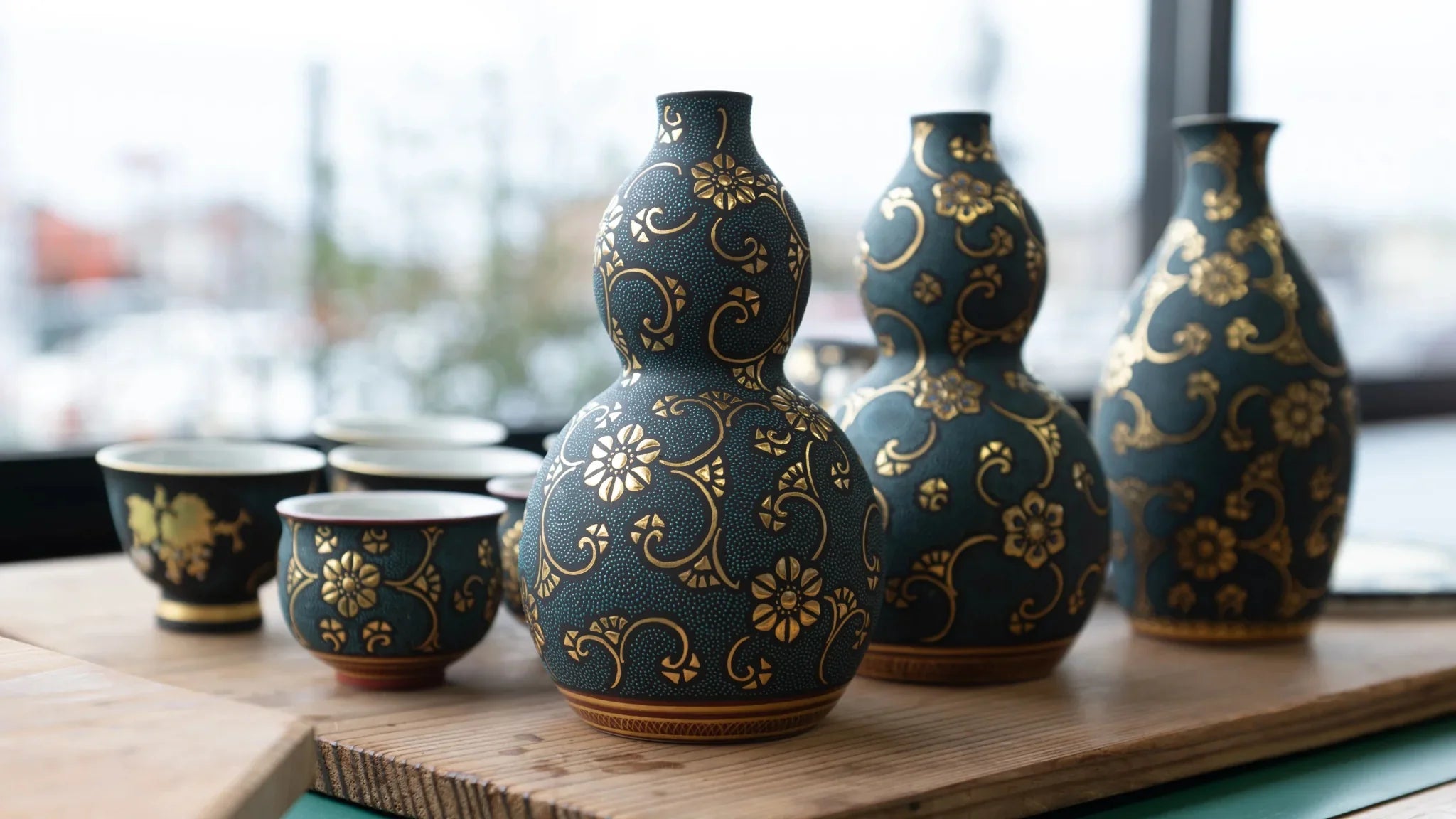
Hidden Gems of Kutani Ware: A Visit to Komatsu City's Artisans
This time, we embarked on a two-day, one-night trip to visit Kutani ware artists in Nomi City and Kaga City.
Read more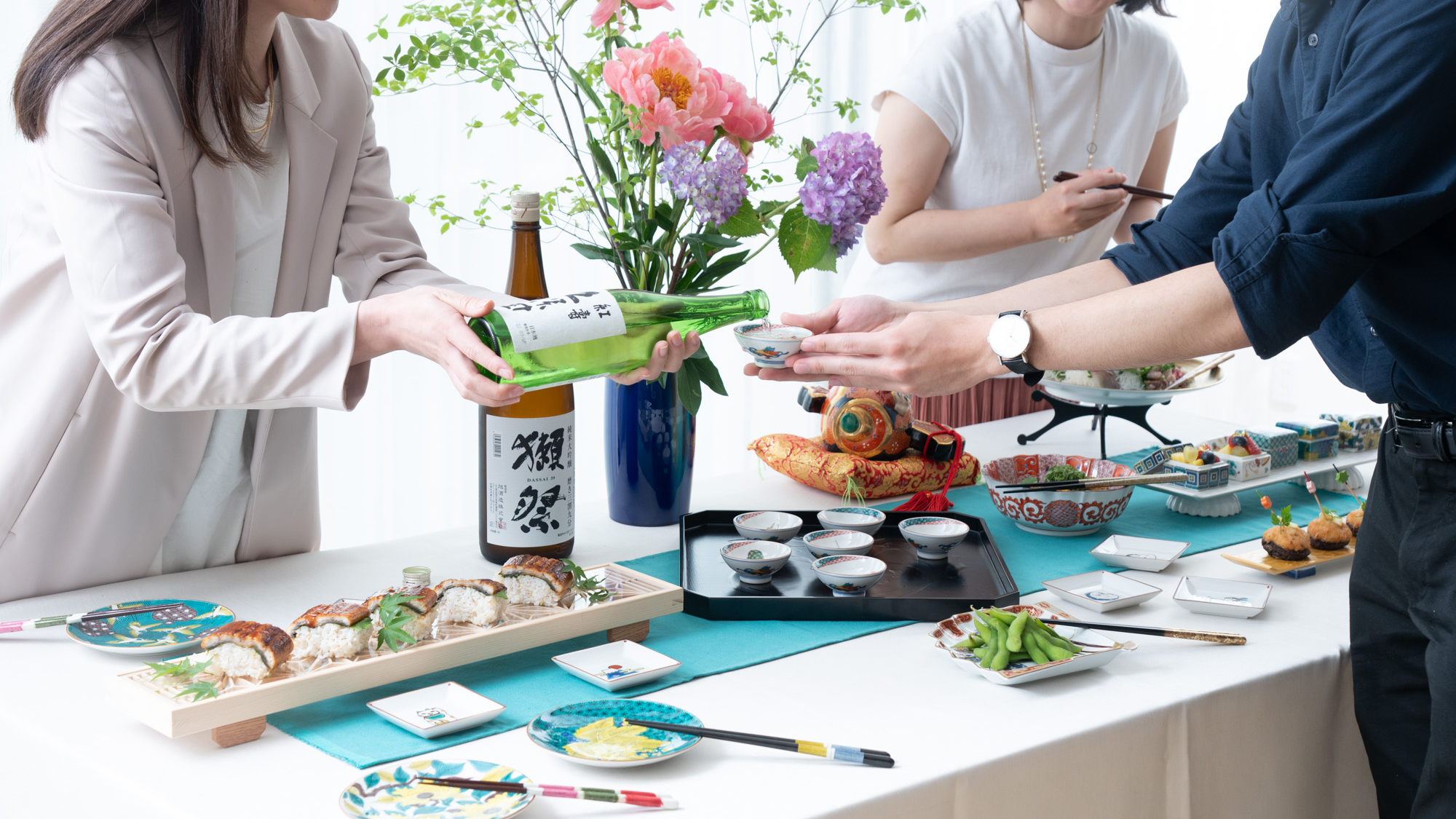
Kutani Elegance: An Exquisite Table Decor for a Sophisticated Office Party
Enjoy the elegance and sophistication of exquisite Kutani tableware with this unique office party buffet table.
Read more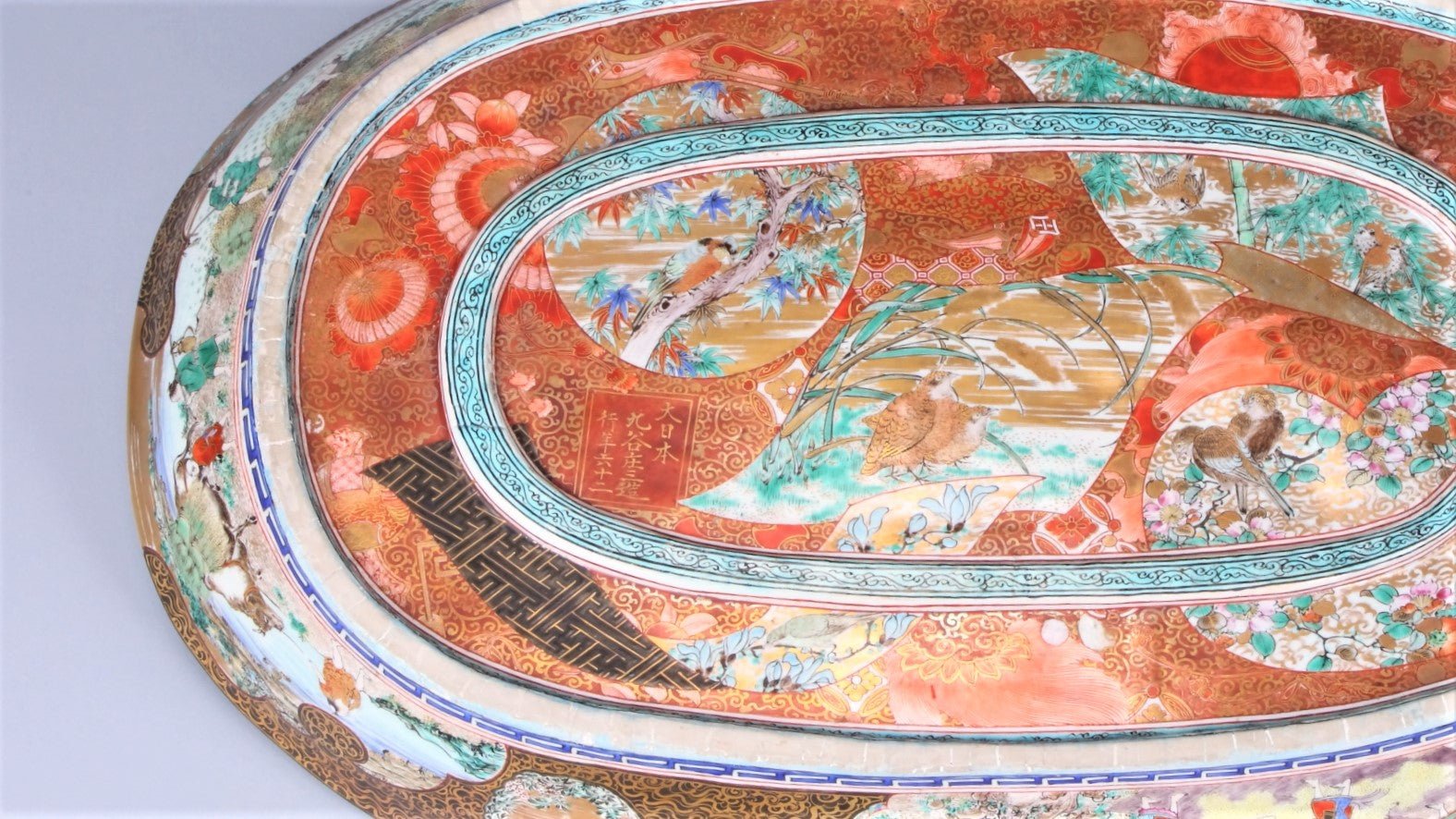
The Shoza style is a fine and gorgeous style of painting that uses Western-style paints in addition to the traditional Kutani Gosai.
Read more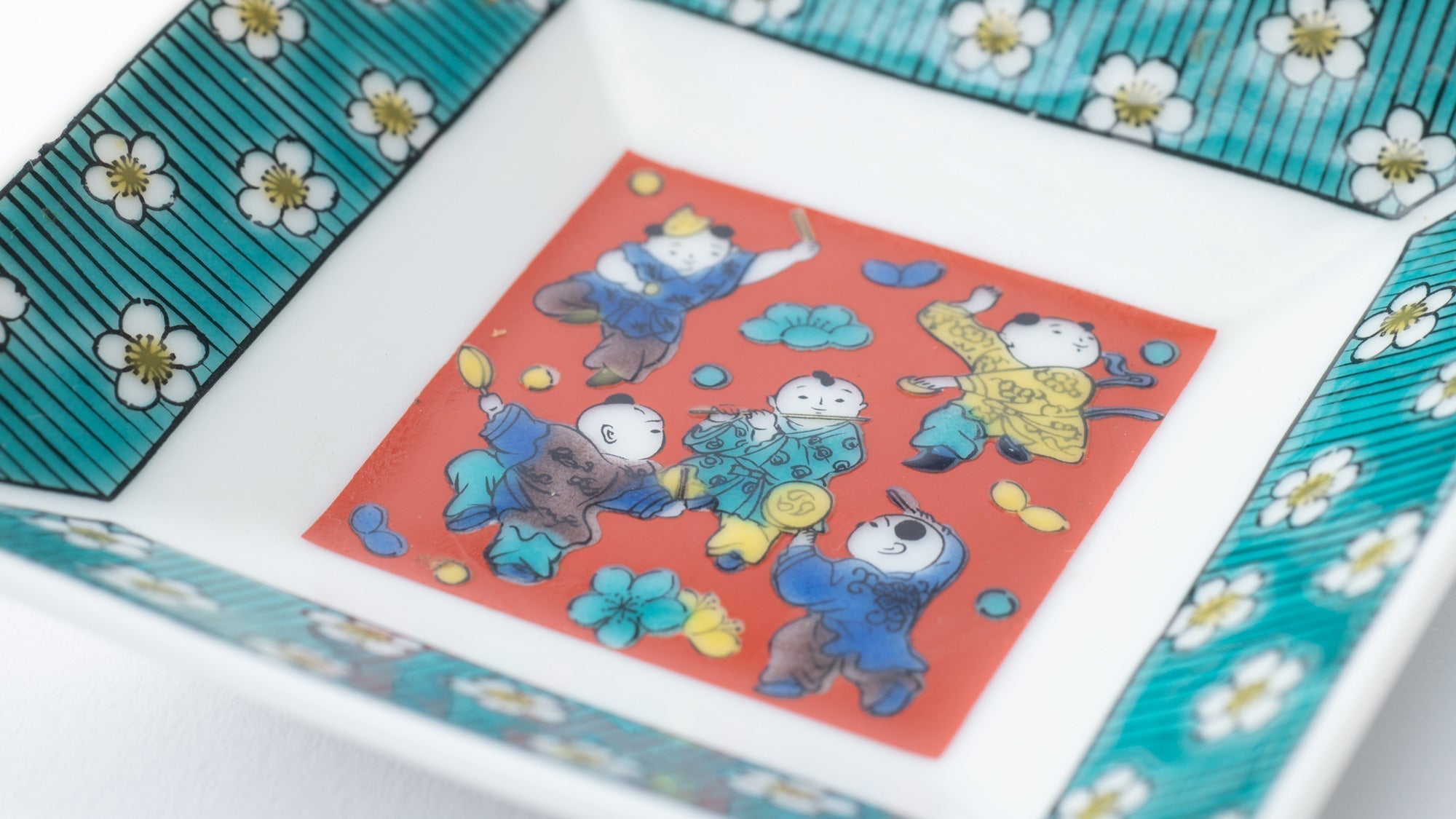
Mokubei is a style characterized by filling blank spaces with calming red pigments.
Read more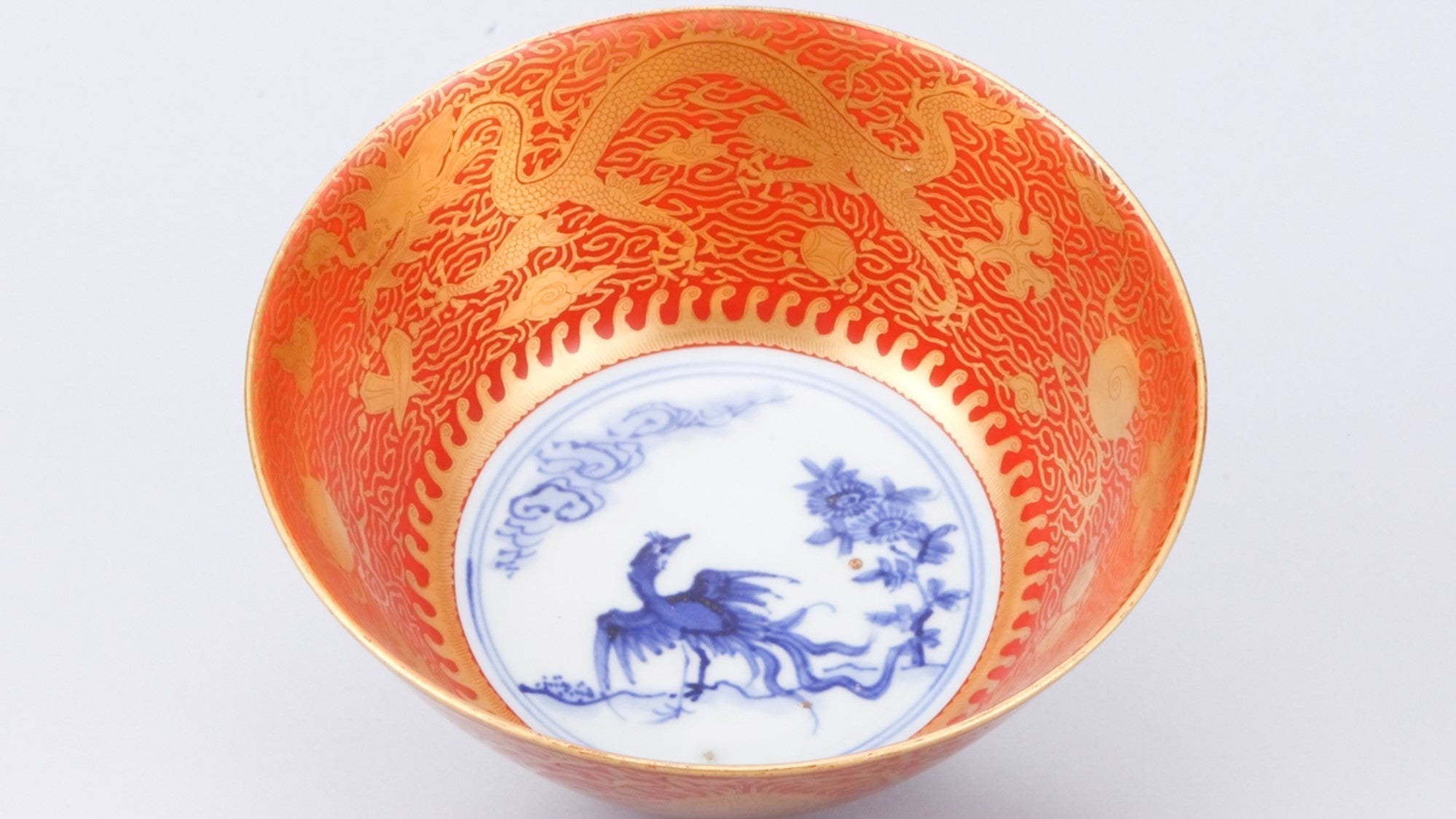
What is Akae-Kinrande "Eiraku" Style?
Akae-kinrande is a gorgeous, sophisticated, and graceful style of Kutani ware. It has a gold design with a red background.
Read more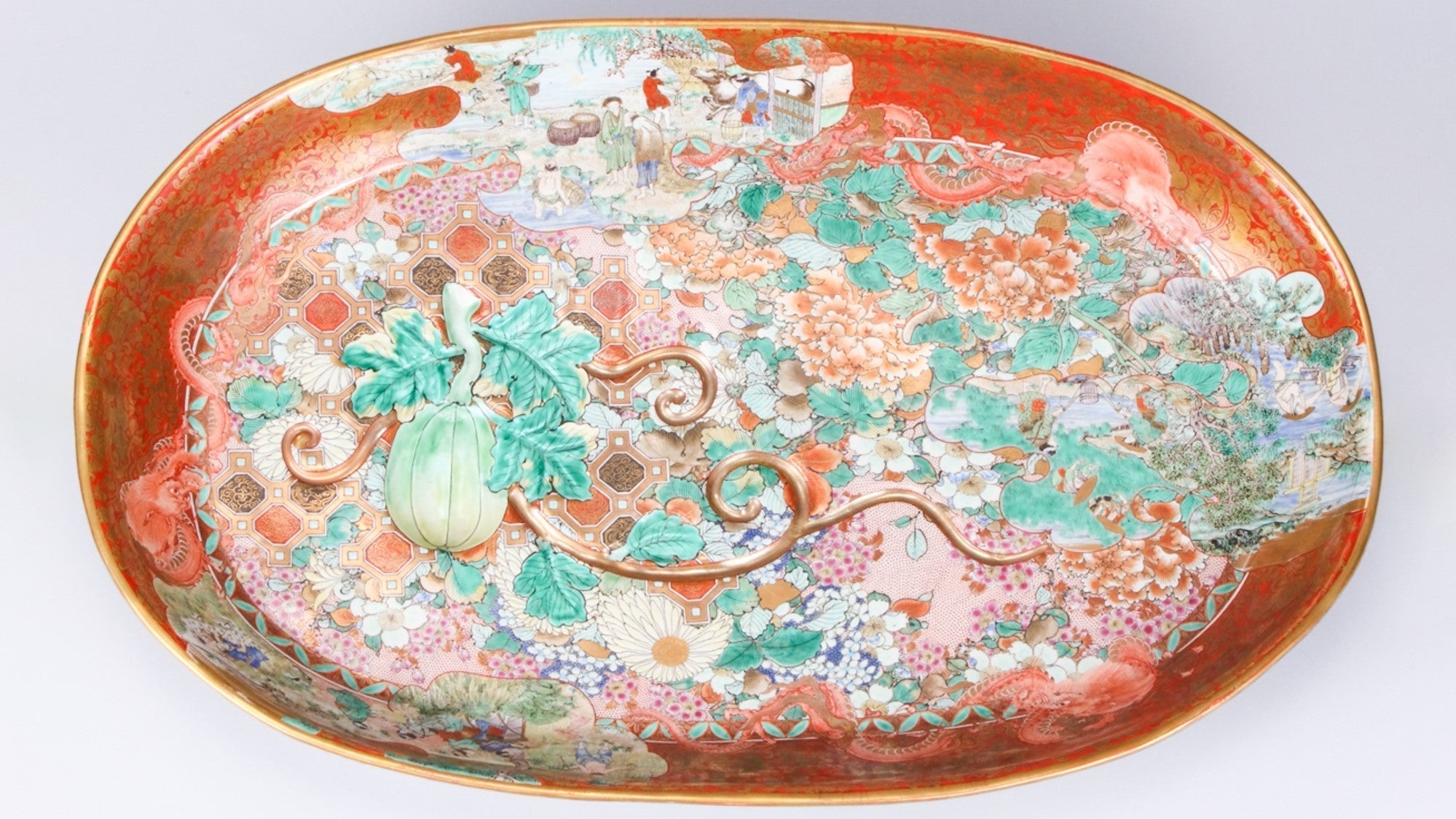
Interview with Nakaya Shinichi, Specialist of Kutani Ware - History Part 2
Shin-ichi Nakaya, Director of The Kutani porcelain Art Museum discusses historical stories and painting styles of Kutani ware.
Read more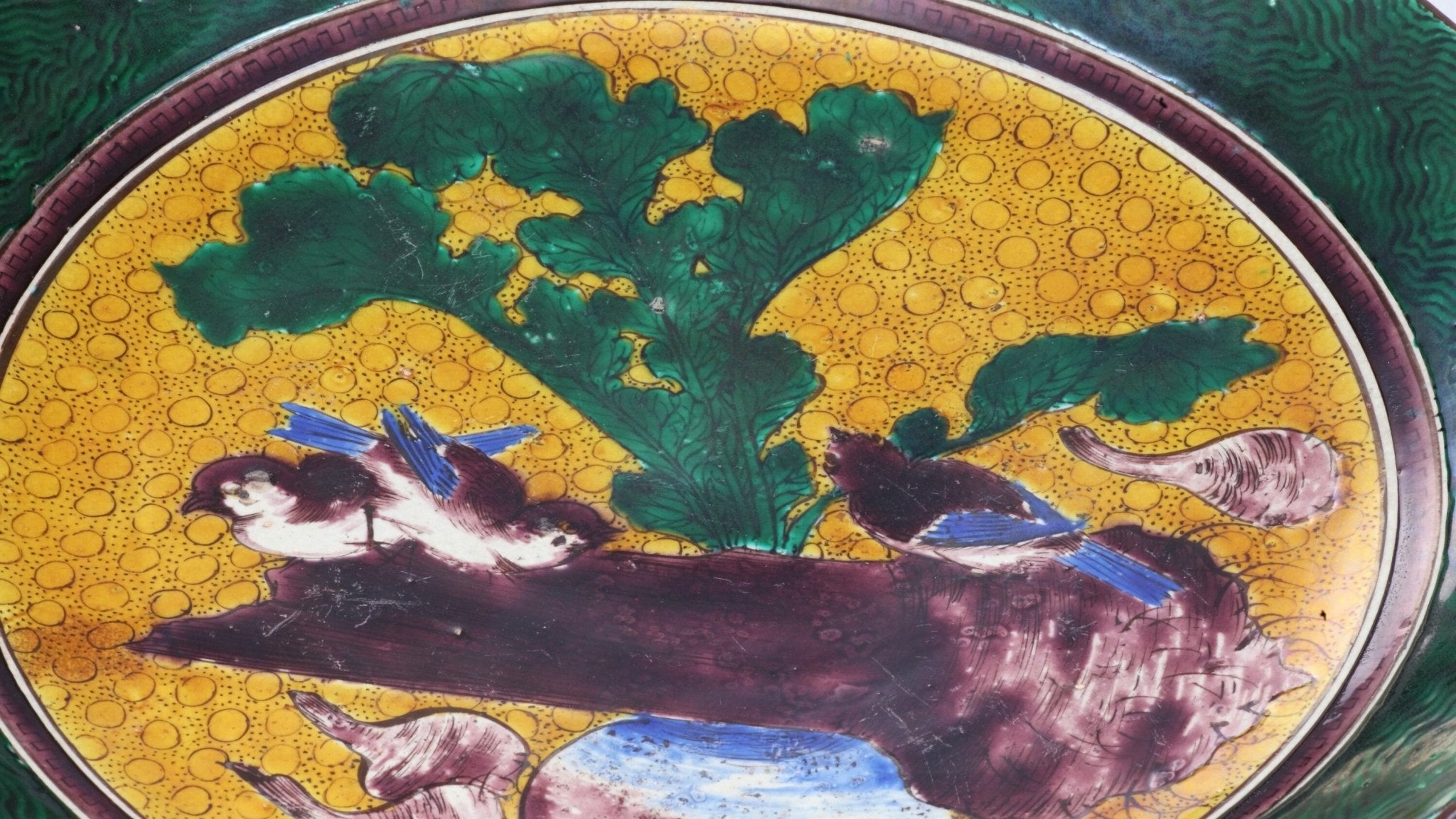
What is Kutani Yoshidaya Style?
Yoshidaya style’s charm is its use of translucent pigment and delicate painting style, as well as its refined designs.
Read more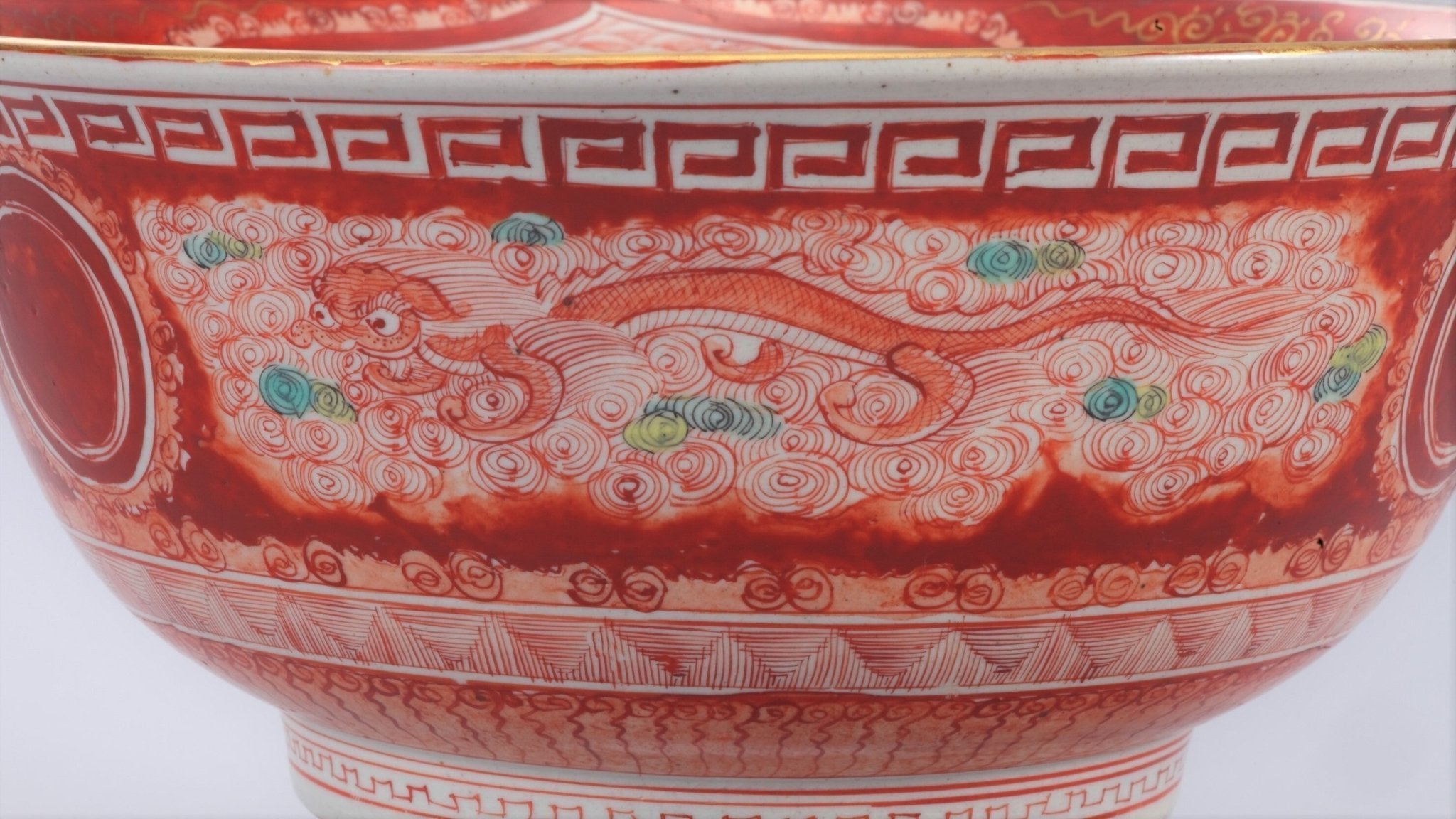
What is Akae-Saibyo "Iidaya" style?
Akae-saibyo–red dots and lines with intricate detalization–has an eye-catching, detailed beauty.
Read more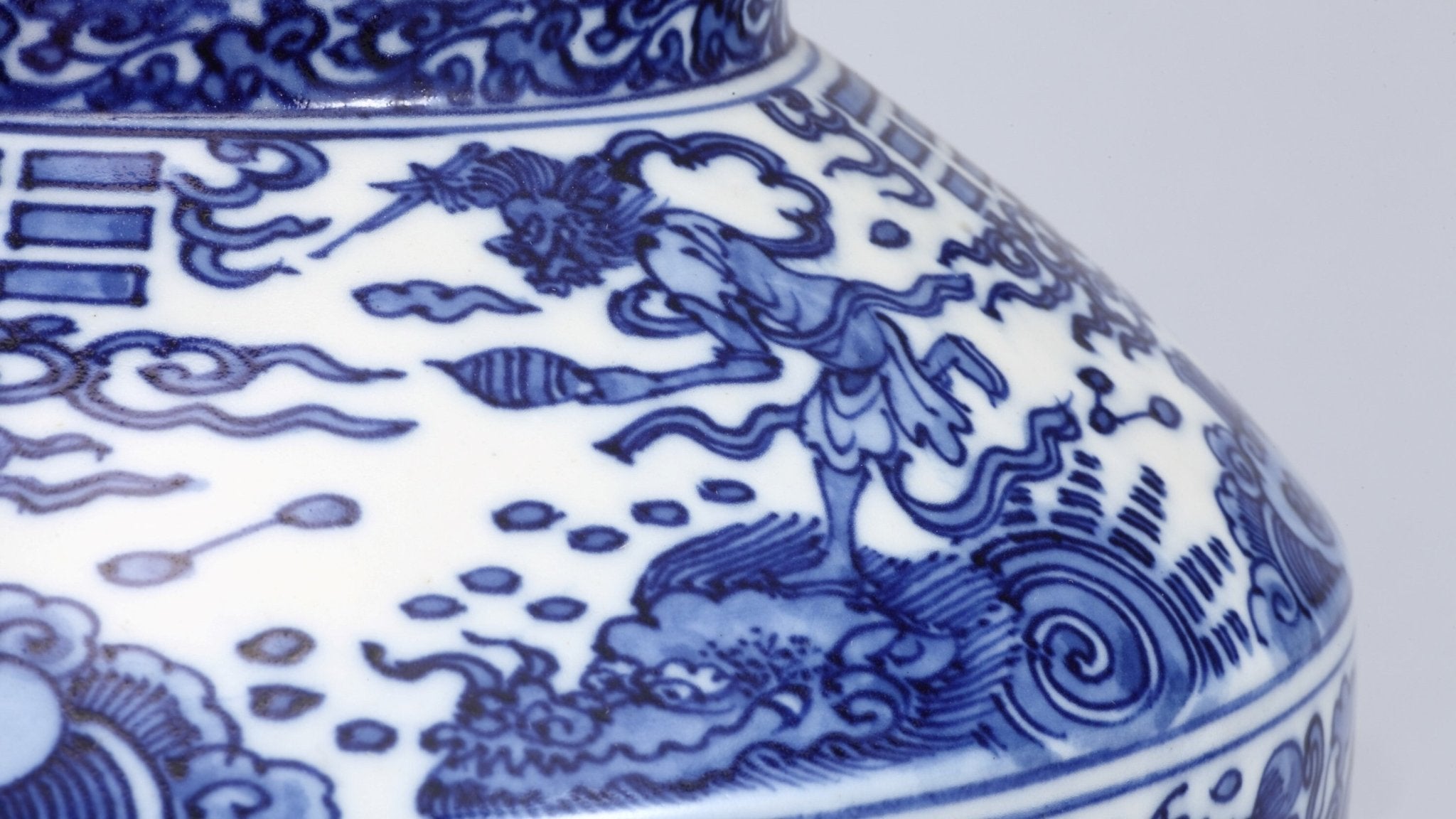
What is Kutani Sometsuke Style?
Sometsuke is a style that paints a canvas only in indigo pigments. The beauty of this style attracts the viewer with its subtleness.
Read more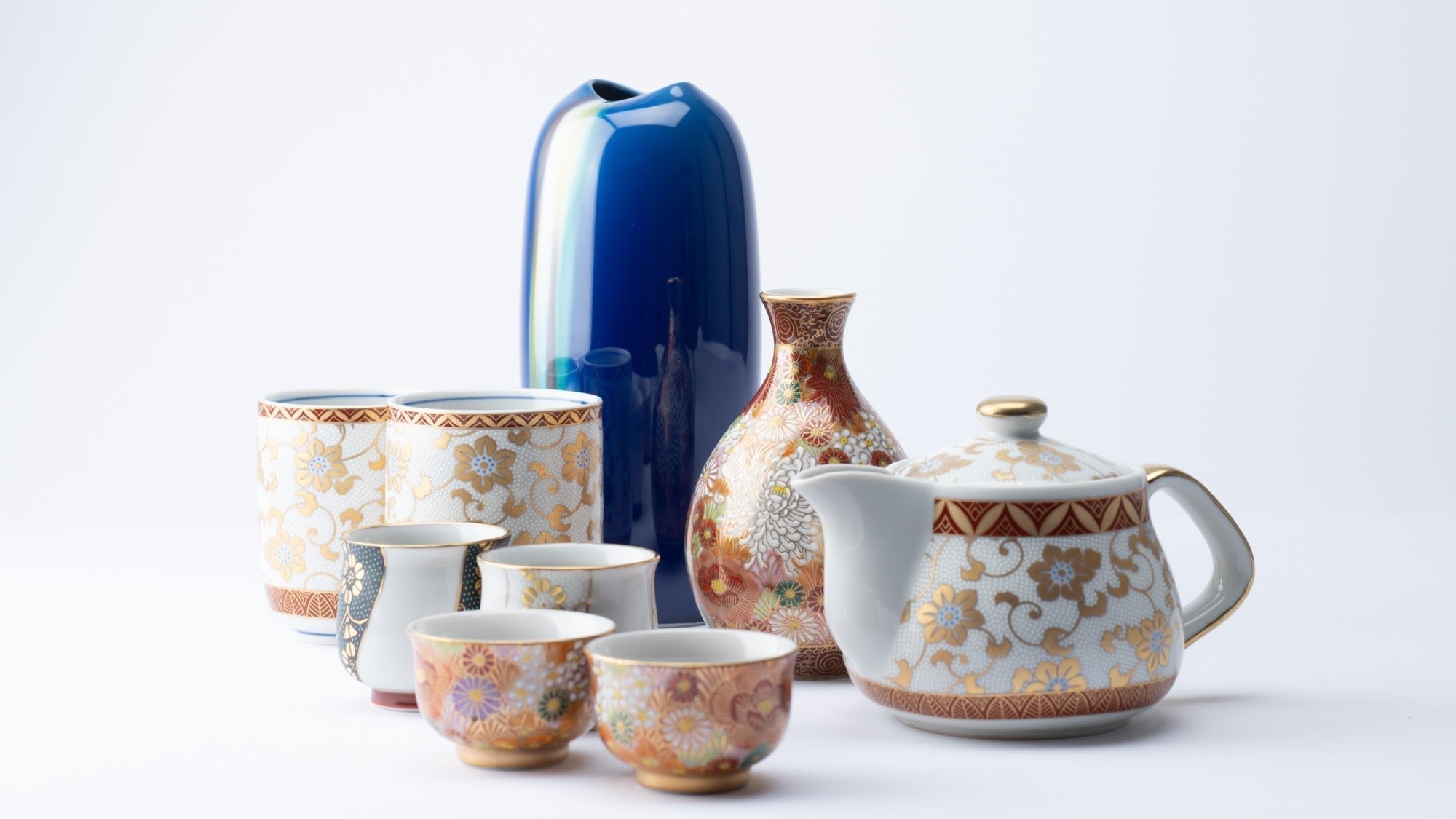
Kutani Ware Styles Born from Japan's Modernization
There are various Kutani ware styles and techniques, ranging from gosai-de derived from Ko-Kutani, to the popular Akae–fine red painting.
Read more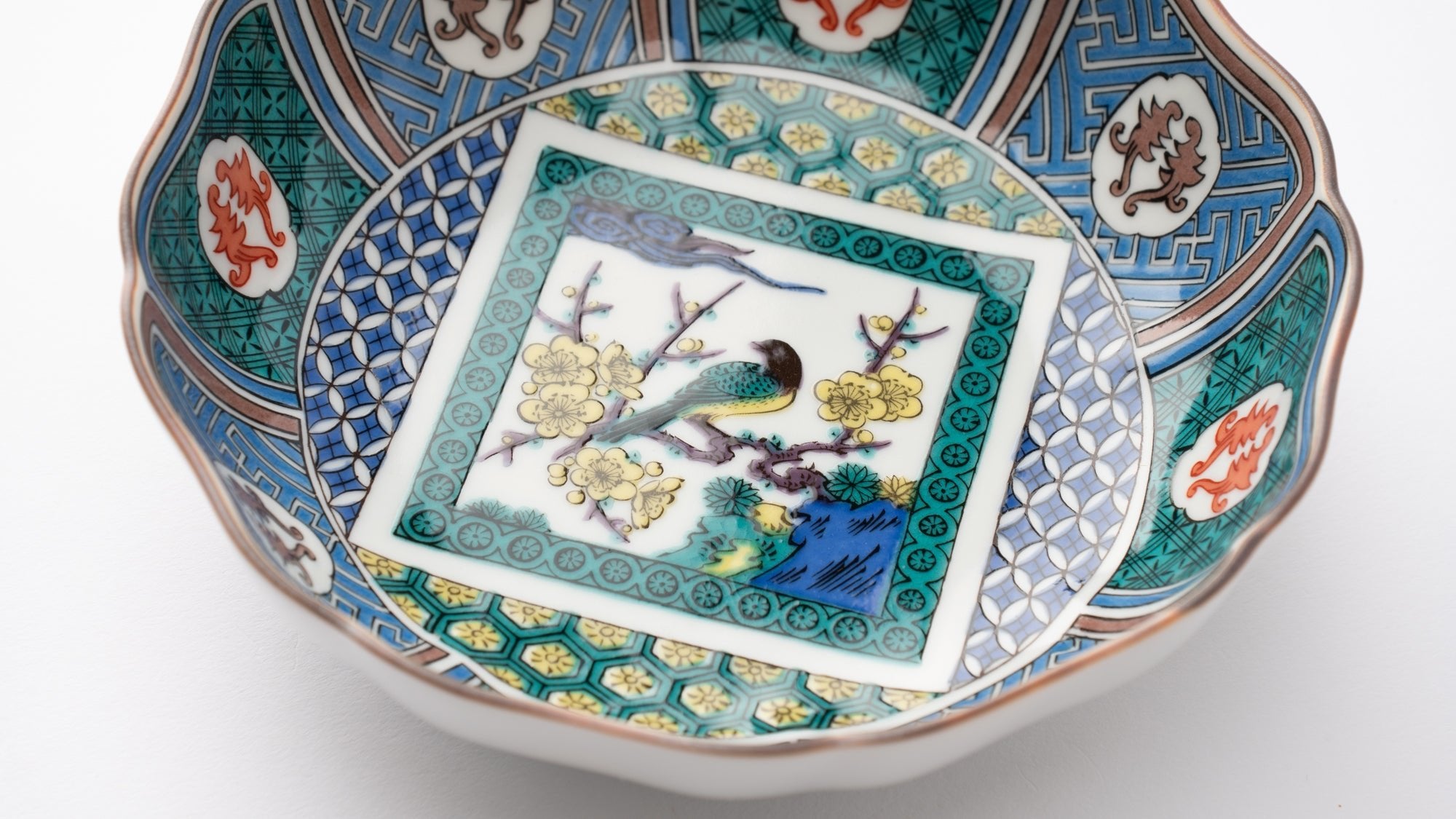
Discover the bold colors and dynamic brushwork of Ko-Kutani style, the vibrant origin of Kutani ware still admired today.
Read more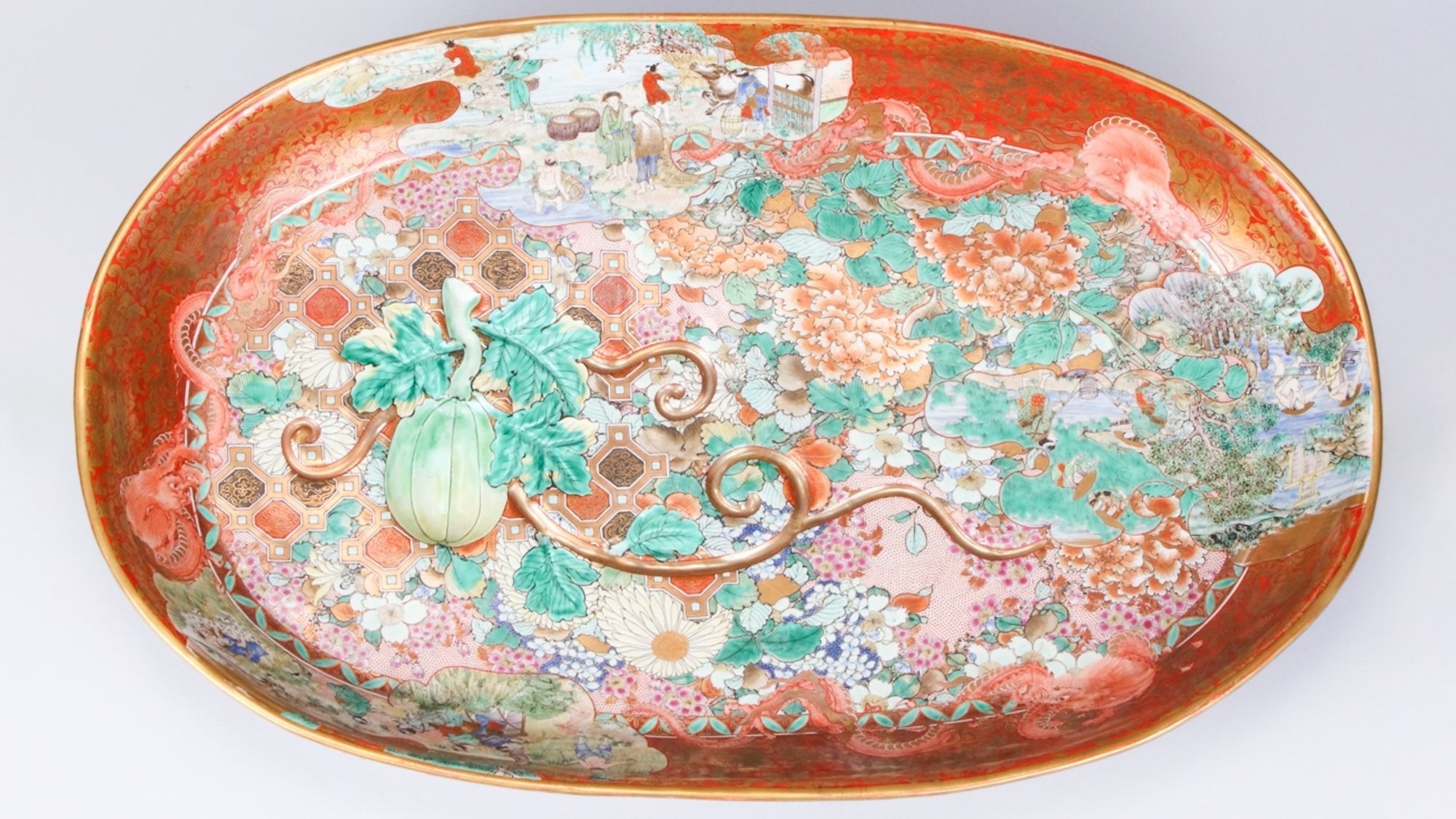
Interview with Nakaya Shinichi, Specialist of Kutani Ware - History Part 1
Kutani ware was introduced in 1655, during the early Edo period (1603-1868), by Maeda Toshiharu, the Lord of Kaga-Daishoji Domain.
Read more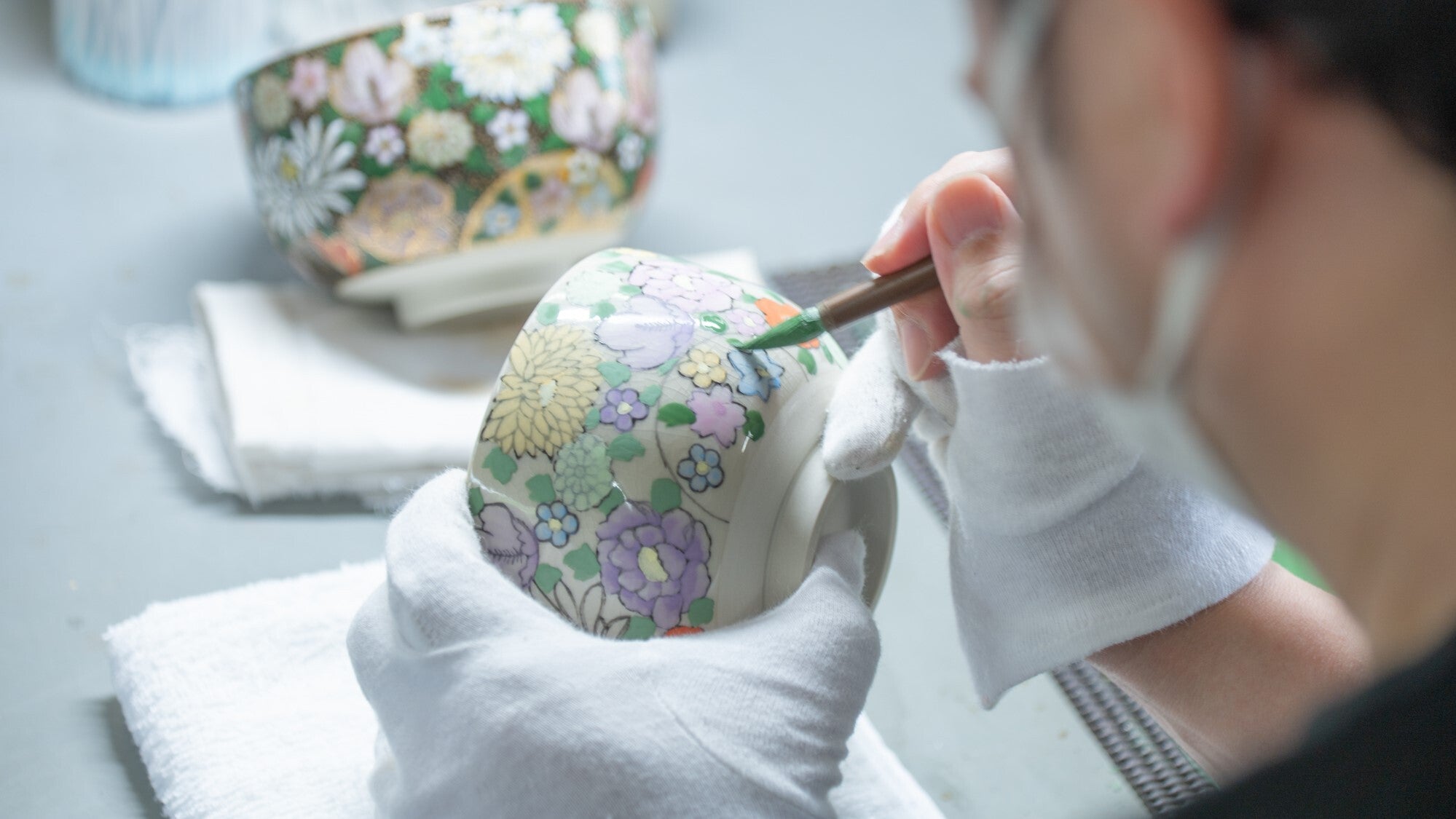
The Process of Making Kutani Ware
Kutani ware, while its vivid hues and bold patterns set it apart among Japanese ceramics, is produced through many processes.
Read moreFilters


